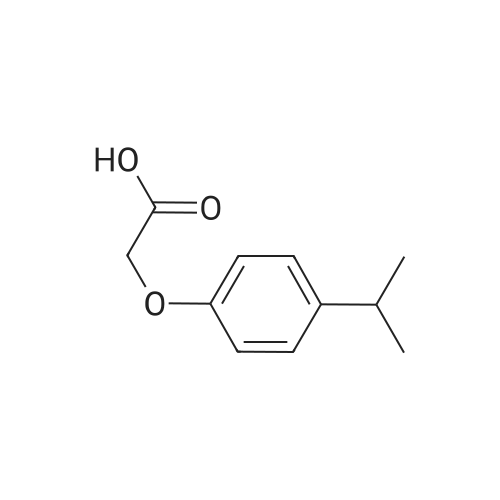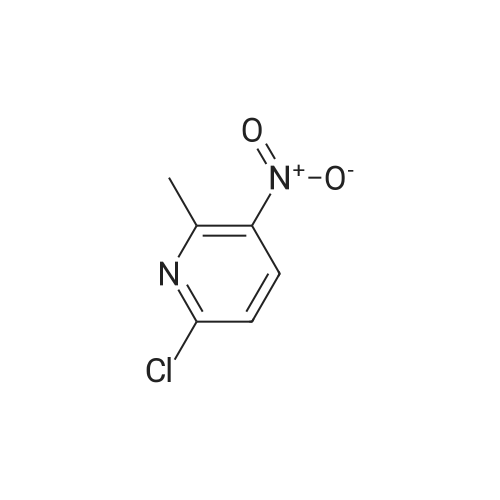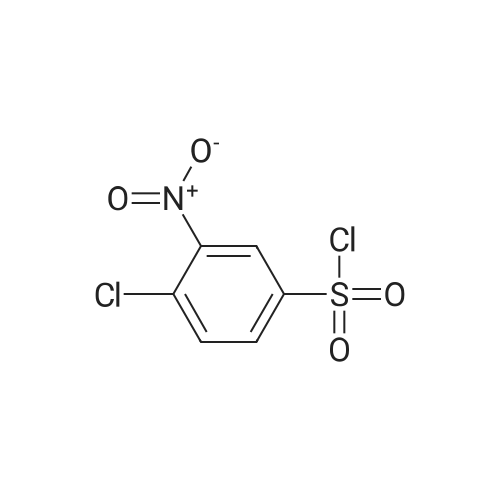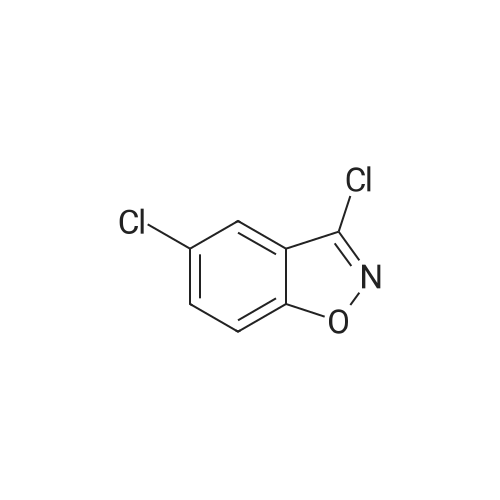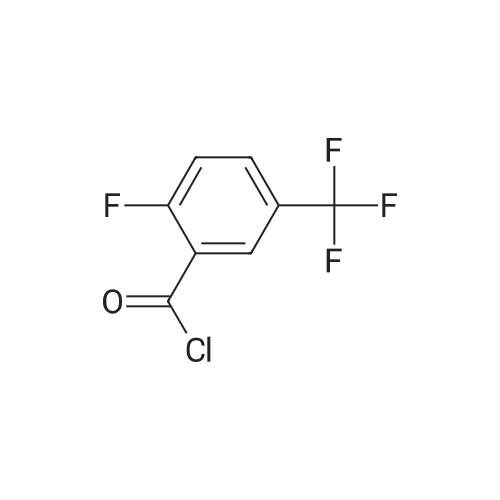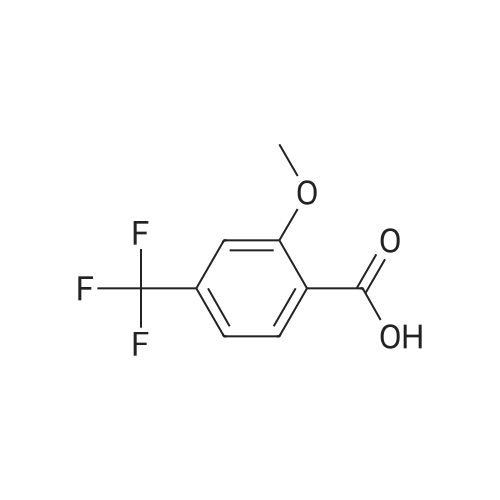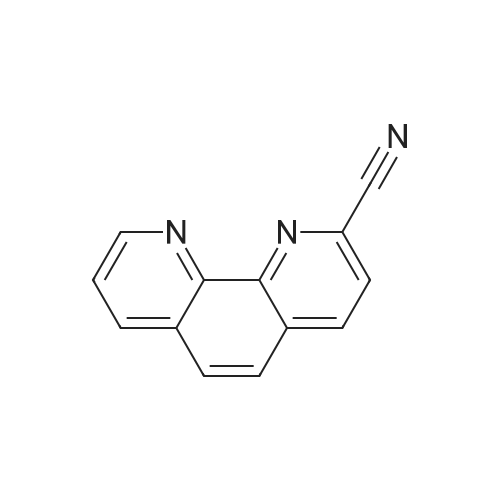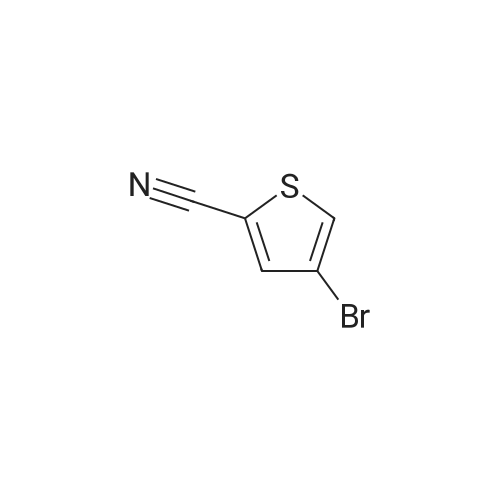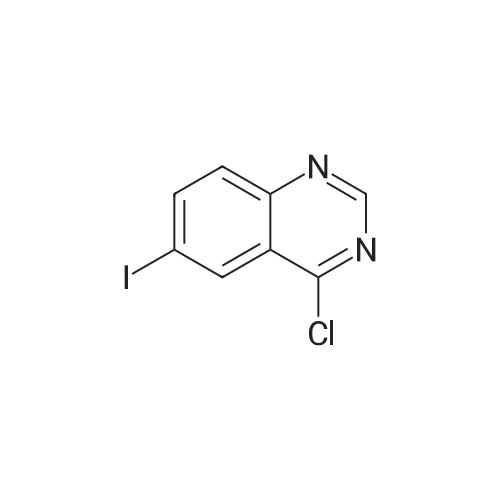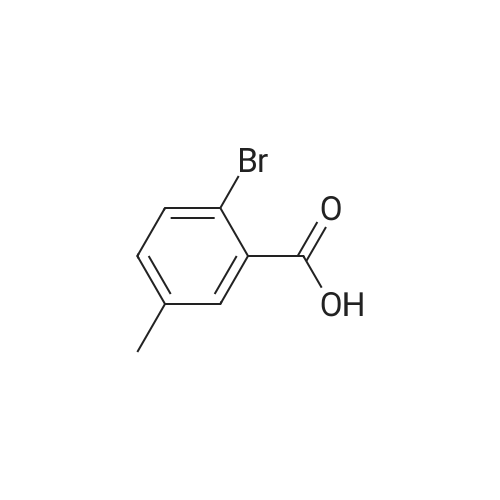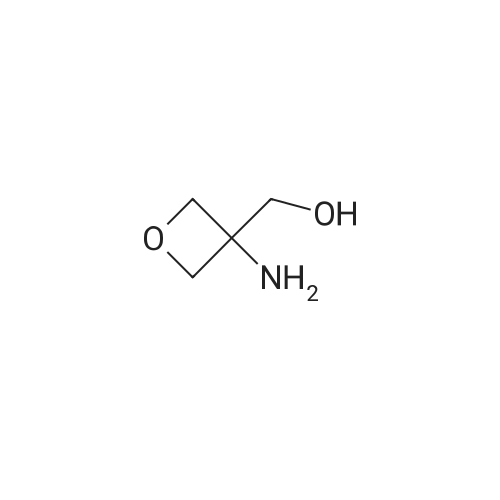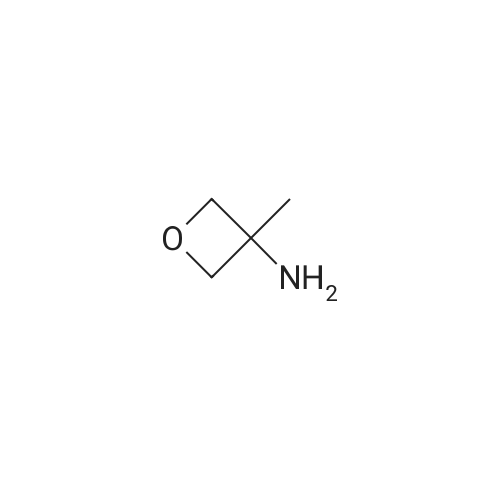Heterocyclic Building Blocks
Aliphatic Heterocycles (10069)
(1R,5S)-3-Azabicyclo[3.1.0]Hexane (11)1,2-Dithiolane (7)1,4-Diazepan-2-One (5)1,4-Diazepan-5-One (9)1,4-Dioxane (17)1,4-Oxazepane (8)10,11-Dihydro-5H-Dibenzo[B,F]Azepine (9)11,12-Didehydro-5,6-Dihydrodibenz[B,F]Azocine (14)3-((((9H-Fluoren-9-Yl)Methoxy)Carbonyl)Glycyl)-2,2-Dimethyloxazolidine-4-Carboxylic Acid (8)3H-Diazirine (11)4-Benzyl-1,4-Oxazepane (5)Tetrahydro-2H-Thiopyran 1,1-Dioxide (7)Benzoxaphosphole (25)
Azetidines (2993)
1-(Azetidin-1-Yl)-2-Bromoethan-1-One (3)1-(Azetidin-3-Yl)-1H-Pyrazole (7)1-(Phenylsulfonyl)Azetidine (7)1-Benzhydrylazetidine (13)1-Benzylazetidine (6)1-Methylazetidine (6)1-Phenylazetidine (8)2,7-Diazaspiro[3.5]Nonane (7)2-Azaspiro[3.3]Heptane (11)2-Imino-N-((6R,7R)-8-Oxo-5-Thia-1-Azabicyclo[4.2.0]Oct-2-En-7-Yl)-2-(Thiazol-4-Yl)Acetamide (3)3-Bromoazetidine (3)3-Methylazetidin-3-Ol (3)3-Methyleneazetidine (8)3-Phenylazetidine (5)4-(Azetidin-1-Yl)Piperidine (6)Azetidin-2-One (11)Azetidin-2-Ylmethanol (7)Azetidin-3-Amine (4)Azetidin-3-Ol (10)Azetidin-3-Yl Acetate (3)Azetidin-3-Ylmethanamine (3)Azetidine-2-Carboxylic Acid (6)Azetidine-3-Carboxylic Acid (5)Benzyl Azetidine-1-Carboxylate (9)Methyl Azetidine-2-Carboxylate (3)N-((6R,7R)-8-Oxo-5-Thia-1-Azabicyclo[4.2.0]Oct-2-En-7-Yl)-2-Phenylacetamide (5)Tert-Butyl Azetidine-1-Carboxylate (64)
Benzimidazoles (4426)
(1H-Benzo[D]Imidazol-2-Yl)Methanamine (6)(1H-Benzo[D]Imidazol-2-Yl)Methanol (14)1,2-Diphenyl-1H-Benzo[D]Imidazole (7)1-Benzyl-1H-Benzo[D]Imidazole (6)1-Ethyl-1H-Benzo[D]Imidazole (4)1-Methyl-1H-Benzo[D]Imidazole (38)1-Phenyl-1H-Benzo[D]Imidazole (4)1H-Benzo[D]Imidazol-2-Amine (7)1H-Benzo[D]Imidazol-5-Amine (4)1H-Benzo[D]Imidazol-6-Amine (6)1H-Benzo[D]Imidazole-2-Carbaldehyde (4)1H-Benzo[D]Imidazole-2-Carboxylic Acid (7)1H-Benzo[D]Imidazole-2-Thiol (10)1H-Benzo[D]Imidazole-4-Carboxylic Acid (6)1H-Benzo[D]Imidazole-5-Carboxylic Acid (4)2-((Pyridin-2-Ylmethyl)Thio)-1H-Benzo[D]Imidazole (7)2-(1H-Benzo[D]Imidazol-2-Yl)Ethan-1-Amine (5)2-(Chloromethyl)-1H-Benzo[D]Imidazole (9)2-Benzyl-1H-Benzo[D]Imidazole (7)2-Bromo-1H-Benzo[D]Imidazole (3)2-Chloro-1H-Benzo[D]Imidazole (17)2-Methyl-1H-Benzo[D]Imidazole (19)4-Bromo-1H-Benzo[D]Imidazole (10)4-Methyl-1H-Benzo[D]Imidazole (7)5,6-Dichloro-1H-Benzo[D]Imidazole (4)5-Bromo-1H-Benzo[D]Imidazole (12)5-Chloro-1H-Benzo[D]Imidazole (7)5-Methoxy-1H-Benzo[D]Imidazole (2)5-Methyl-1H-Benzo[D]Imidazole (6)6-Chloro-1H-Benzo[D]Imidazole (17)Methyl (1H-Benzo[D]Imidazol-2-Yl)Carbamate (5)Methyl 1H-Benzo[D]Imidazole-2-Carboxylate (3)Tert-Butyl 1H-Benzo[D]Imidazole-1-Carboxylate (5)Benzimidazol-Amine (20)Benzimidazole-Carboxylate (6)Benzimidazole-Carboxylic Acid (43)Benzimidazole-Hydrochloride (3)Benzoimidazol-Methanol (2)Benzoimidazol-One (34)Benzoimidazole-Thione (3)Bromo-Benzimidazole (60)Chloro-Benzimidazole (5)Dimethyl-Benzoimidazole (16)Dioxaborolane-Benzimidazole (1)Hydroxy-Benzimidazole (14)Methylbenzimidazole (2)Phenyl-Benzoimidazole (58)Piperidine-Benzimidazole (4)Trifluoromethyl-Benzimidazole (3)
Benzofurans (3710)
1-(Benzofuran-2-Yl)Ethan-1-One (3)2,2-Dimethyl-2,3-Dihydrobenzofuran (7)2,3-Dihydrobenzofuran-3-Amine (11)2,3-Dihydrobenzofuran-5-Amine (3)2,3-Dihydrobenzofuran-7-Amine (5)2-(Benzofuran-3-Yl)Acetic Acid (3)2-Bromodibenzo[B,D]Furan (6)2-Ethylbenzofuran (3)2-Methylbenzofuran (5)3-Methylbenzofuran (4)4-Bromobenzofuran (3)4-Phenyldibenzo[B,D]Furan (8)5,7,8-Trimethylchromane (3)5-Bromo-2,3-Dihydrobenzofuran (6)5-Chloro-2,3-Dihydrobenzofuran (5)5-Fluoro-2,3-Dihydrobenzofuran (5)5-Methoxyisobenzofuran-1(3H)-One (5)6-Bromo-2,3-Dihydrobenzofuran (7)6-Fluoro-2,3-Dihydrobenzofuran (6)6-Methoxybenzofuran (4)7-Bromo-2,3-Dihydrobenzofuran (6)7-Bromobenzofuran (6)7-Fluoro-2,3-Dihydrobenzofuran (6)Benzofuran-2(3H)-One (7)Benzofuran-2-Carbaldehyde (5)Benzofuran-2-Carboxylic Acid (21)Benzofuran-2-Ylboronic Acid (8)Benzofuran-3(2H)-One (15)Benzofuran-3-Carboxylic Acid (6)Benzofuran-3-Yl(Phenyl)Methanone (11)Methyl Benzofuran-2-Carboxylate (6)Aminobenzofuran (3)Benzofuran-Carboxylate (4)Benzofuran-Carboxylic Acid (67)Benzofuran-Hydrochloride (28)Benzofuran-Methanol (2)Benzofuran-One (57)Benzofuranopyrimidine (2)Bromobenzofuran (10)Chlorobenzofuran (6)Chloroisobenzofuran (7)Dihydrobenzofuran (69)Dihydroisobenzofuran (7)Dimethoxyisobenzofuran (4)Epoxyisobenzofuran (3)Ethylbenzofuran (2)Fluorobenzofuran (19)Fluoroisobenzofuran (5)Hexahydroisobenzofuran (4)Hydroxy-Benzofuran (6)Hydroxybenzofuran (7)Hydroxyisobenzofuran (2)Iodo-Benzofuran (12)Iodoisobenzofuran (2)Isobenzofuran (22)Methoxybenzofuran (12)Methoxyisobenzofuran (4)Methylbenzofuran (25)Methylbenzofuro (9)Nitrobenzofuran (6)Nitroisobenzofuran (3)Phenyl-Benzofuran (2)Piperidine-Benzofuran (4)Tetrahydrobenzofuran (2)
Benzothiazoles (2415)
2-(Methylthio)Benzo[D]Thiazole (6)2-Bromobenzo[D]Thiazole (28)2-Chlorobenzo[D]Thiazole (21)2-Methylbenzo[D]Thiazole (26)4-Bromobenzo[D]Thiazole (9)4-Chlorobenzo[D]Thiazole (7)4-Fluorobenzo[D]Thiazole (6)4-Methylbenzo[D]Thiazole (10)5-Chlorobenzo[D]Thiazole (5)5-Nitrobenzo[D]Thiazole (3)6-Bromobenzo[D]Thiazole (7)6-Chlorobenzo[D]Thiazole (6)6-Fluorobenzo[D]Thiazole (5)6-Methoxybenzo[D]Thiazole (6)6-Methylbenzo[D]Thiazole (6)6-Nitrobenzo[D]Thiazole (3)7-Bromobenzo[D]Thiazole (8)7-Chlorobenzo[D]Thiazole (6)7-Fluorobenzo[D]Thiazole (9)Benzo[D]Thiazol-2-Amine (30)Benzo[D]Thiazol-5-Amine (3)Benzo[D]Thiazol-6-Amine (3)Benzo[D]Thiazol-6-Ol (2)Benzo[D]Thiazole-2-Carbonitrile (11)Benzo[D]Thiazole-2-Thiol (11)Benzo[D]Thiazole-6-Carboxylic Acid (5)Methyl Benzo[D]Thiazole-6-Carboxylate (5)Benzothiazol-Amine (5)Benzothiazole-Carboxylate (14)Benzothiazole-Carboxylic Acid (27)Benzothiazole-Chloride (25)Benzothiazole-Nitrile (10)Benzothiazole-Thione (9)Benzothiazolyl-Bromide (3)Bromobenzothiazole (7)Chlorobenzothiazole (1)Dichlorobenzothiazole (10)Hydroxy-Benzothiazole (13)Methoxybenzothiazole (4)Methylbenzothiazole (7)Nitrobenzothiazole (1)Trifluoromethyl-Benzothiazole (12)
Benzothiophenes (1110)
2-(Benzo[B]Thiophen-2-Yl)-4,5-Dihydrooxazole (10)2-Methylbenzo[B]Thiophene (4)3-Bromobenzo[B]Thiophene (5)3-Chlorobenzo[B]Thiophene (6)3-Methylbenzo[B]Thiophene (4)4,5,6,7-Tetrahydrobenzo[B]Thiophene (21)5-Bromobenzo[B]Thiophene (3)5-Chlorobenzo[B]Thiophene (4)6-Bromobenzo[B]Thiophene (4)7-Bromobenzo[B]Thiophene (5)Benzo[B]Thiophen-2-Amine (5)Benzo[B]Thiophen-2-Ylboronic Acid (5)Benzo[B]Thiophene-2-Carbaldehyde (6)Benzo[B]Thiophene-2-Carbonitrile (3)Benzo[B]Thiophene-2-Carboxylic Acid (32)Benzo[B]Thiophene-3-Carbaldehyde (6)Ethyl Benzo[B]Thiophene-2-Carboxylate (9)Methyl Benzo[B]Thiophene-2-Carboxylate (27)Benzothiophene-Amine (4)Benzothiophene-Bromide (28)Benzothiophene-Carboxylate (26)Benzothiophene-Carboxylic Acid (58)Benzothiophene-Dioxaborolane (6)Benzothiophene-Nitrile (2)Benzothiophene-Piperazine (4)
Benzoxazoles (2794)
2-Chlorobenzo[D]Oxazole (11)2-Methylbenzo[D]Oxazole (26)2-Phenylbenzo[D]Oxazole (22)3-Phenylbenzo[D]Oxazol-3-Ium (8)5-Bromobenzo[D]Oxazole (3)5-Chlorobenzo[D]Oxazole (5)5-Methylbenzo[D]Oxazole (3)6-Chlorobenzo[D]Oxazole (4)Benzo[D]Oxazol-2-Amine (16)Benzo[D]Oxazole-2-Thiol (6)Methyl Benzo[D]Oxazole-2-Carboxylate (3)Amino-Benzoxazole (16)Benzoxazol-Amine (9)Benzoxazol-One (2)Benzoxazole-Carboxylic Acid (25)Benzoxazole-Chloride (4)Benzoxazole-Methanol (2)Dioxaborolane-Benzoxazole (2)Methyl-Benzoxazole (78)Phenyl-Benzoxazole (2)
Carbazole Series (493)
Carbazole-Carboxylic Acid (7)Carbazolyl-Phenyl-Boronic Acid (10)Carbazolyl-Phenyl-Boronic Acid/Ester (9)1-Methyl-9H-Carbazole (7)2,3,4,9-Tetrahydro-1H-Carbazol-1-One (7)2-Bromo-9H-Carbazole (4)3,9-Diphenyl-9H-Carbazole (7)3-(Tert-Butyl)-9H-Carbazole (3)3-Bromo-9-Phenyl-9H-Carbazole (16)3-Bromo-9H-Carbazole (4)3-Chloro-9H-Carbazole (2)3-Methyl-9H-Carbazole (3)7H-Benzo[C]Carbazole (5)9-([1,1'-Biphenyl]-4-Yl)-9H-Carbazole (9)9-(P-Tolyl)-9H-Carbazole (5)9-Benzyl-9H-Carbazole (7)9-Ethyl-9H-Carbazole (11)
Dioxolanes (1577)
(3As,6As)-Tetrahydrofuro[3,4-D][1,3]Dioxole (6)1,3-Dioxolan-2-One (11)2,2-Difluorobenzo[D][1,3]Dioxole (24)2,2-Dimethyl-1,3-Dioxolane (28)2,2-Dimethylbenzo[D][1,3]Dioxole (7)2-Phenyl-1,3-Dioxolane (18)4-Bromobenzo[D][1,3]Dioxole (6)4-Methyl-1,3-Dioxolane (5)5,6-Dihydro-[1,3]Dioxolo[4,5-G]Isoquinolino[3,2-A]Isoquinolin-7-Ium (4)5-Bromobenzo[D][1,3]Dioxole (12)5-Chlorobenzo[D][1,3]Dioxole (5)5-Nitrobenzo[D][1,3]Dioxole (4)9-((3As,4R,6Ar)-Tetrahydrofuro[3,4-D][1,3]Dioxol-4-Yl)-9H-Purine (7)Benzo[D][1,3]Dioxol-5-Amine (3)Benzothiophene-Dioxaborolane (6)Dioxaborolane-Benzyl (1)Dioxaborolane-Indazole-Carboxylate (3)Dioxaborolane-Phenol (34)
Furans (6965)
2,3-Dihydrofuran-3-One (9)2-(Bromomethyl)Furan (3)2-(Chloromethyl)Furan (3)2-(Furan-2-Yl)-4,4,5,5-Tetramethyl-1,3,2-Dioxaborolane (6)2-Bromofuran (21)2-Chlorofuran (3)2-Methylfuran (31)2-Nitrofuran (9)3-Bromofuran (12)4-Methylisobenzofuran-1(3H)-One (3)5-Nitro-2,3-Dihydrobenzofuran (3)5-Phenylfuran-2-Carbaldehyde (9)5-Phenylfuran-2-Carboxylic Acid (6)6-Chloro-2,3-Dihydrobenzofuran (3)6-Fluoroisobenzofuran-1(3H)-One (3)7-Chloro-2,3-Dihydrobenzofuran (3)Ethyl Furan-2-Carboxylate (6)Furan-2,5-Dione (8)Furan-2-Carbaldehyde (21)Furan-2-Carbonitrile (5)Furan-2-Carboxylic Acid (28)Furan-2-Ylmethanol (7)Furan-3-Carboxylic Acid (9)Furo[3,2-B]Pyridine (7)Furo[3,2-C]Pyridine (7)Methyl Furan-2-Carboxylate (18)N-(Furan-2-Ylmethyl)Aniline (5)Aminodihydrofuran (7)Aminofuran (6)Bromo-Naphtho-Benzofuran (2)Bromofuran (32)Chlorofuran (2)Chlorofuro (11)Cyanofuran (54)Dibromofuran (5)Dichlorofuro (3)Dihydrofuran (31)Dihydrofuro (15)Dihydroxydihydrofuran (8)Dimethylfuran (10)Formylfuran (10)Furan-One (149)Furanopyrimidine (9)Furochromen (2)Furopyridine (23)Furopyrrole (5)Hexahydrofuro (6)Hydroxydihydrofuran (32)Methyldihydrofuran (11)Methylfuran (58)Nitrofuran (10)Trifluoromethyl-Furan (15)
Imidazoles (3397)
1,1'-Diphenyl-4,4',5,5'-Tetrahydro-1H,1'H-2,2'-Biimidazole (11)1,2-Dimethyl-1H-Imidazole (6)1,3-Diphenyl-1H-Imidazol-3-Ium (14)1,3-Diphenyl-4,5-Dihydro-1H-Imidazol-3-Ium (5)1-(Imidazo[1,2-A]Pyridin-3-Yl)Ethan-1-One (3)1-(Phenylsulfonyl)-1H-Imidazole (5)1-Benzyl-1H-Imidazole (20)1-Decyl-3-Methyl-1H-Imidazol-3-Ium (14)1-Ethyl-1H-Imidazole (3)1-Isopropyl-1H-Imidazole (5)1-Phenyl-1H-Imidazole-4-Carboxylic Acid (5)1-Trityl-1H-Imidazole (15)1H-Imidazo[4,5-B]Pyridine (14)1H-Imidazo[4,5-C]Pyridine (12)1H-Imidazol-2-Amine (6)1H-Imidazole-2-Carboxylic Acid (7)1H-Imidazole-4-Carbonitrile (2)1H-Imidazole-4-Carboxylic Acid (4)2-(Pyridin-2-Yl)-1H-Benzo[D]Imidazole (5)2-Bromo-1H-Imidazole (13)2-Bromoimidazo[1,2-A]Pyridine (5)2-Ethyl-1H-Imidazole (3)2-Methyl-1-Phenyl-1H-Imidazole (10)2-Methylimidazo[1,2-A]Pyridine (8)2-Phenyl-1H-Benzo[D]Imidazole (26)2-Phenyl-1H-Imidazole (24)2-Phenylimidazo[1,2-A]Pyridine (12)2-Propyl-1H-Imidazole (5)3-Bromoimidazo[1,2-A]Pyrazine (6)3-Bromoimidazo[1,2-A]Pyridine (26)3-Bromoimidazo[1,2-A]Pyrimidine (6)3-Iodoimidazo[1,2-A]Pyridine (10)3-Methylimidazo[1,2-A]Pyridine (3)4,5,6,7-Tetrahydro-3H-Imidazo[4,5-C]Pyridine (5)4-(1H-Imidazol-1-Yl)Benzaldehyde (7)4-Bromo-1-Phenyl-1H-Imidazole (9)4-Methyl-1-Phenyl-1H-Imidazole (6)4-Methyl-1H-Imidazole (6)4-Phenyl-1H-Imidazole (8)5,6,7,8-Tetrahydroimidazo[1,2-A]Pyrazine (15)5,6,7,8-Tetrahydroimidazo[1,2-A]Pyridine (12)5,6,7,8-Tetrahydroimidazo[1,5-A]Pyrazine (11)5-Benzyl-1H-Imidazole (1)5-Bromoimidazo[1,2-A]Pyridine (6)5-Chloro-1H-Imidazole (2)5-Fluoro-1H-Benzo[D]Imidazole (8)5-Iodo-1H-Imidazole (4)5-Methylimidazo[1,2-A]Pyridine (4)5-Phenyl-1H-Imidazole (6)6,7-Dihydro-5H-Pyrrolo[1,2-A]Imidazole (9)6-Bromoimidazo[1,2-A]Pyrazine (11)6-Bromoimidazo[1,2-A]Pyridine (14)6-Bromoimidazo[1,2-A]Pyrimidine (5)6-Chloroimidazo[1,2-A]Pyridine (4)6-Chloroimidazo[1,2-B]Pyridazine (30)7-Methylimidazo[1,2-A]Pyridine (3)8-Bromoimidazo[1,2-A]Pyrazine (7)8-Bromoimidazo[1,2-A]Pyridine (15)8-Chloroimidazo[1,2-A]Pyrazine (8)8-Chloroimidazo[1,2-A]Pyridine (7)8-Fluoroimidazo[1,2-A]Pyridine (3)8-Methylimidazo[1,2-A]Pyridine (9)Ethyl 1H-Imidazole-2-Carboxylate (6)Ethyl 2-(Imidazo[1,2-A]Pyridin-3-Yl)Acetate (3)Ethyl Imidazo[1,2-A]Pyridine-2-Carboxylate (25)Ethyl Imidazo[1,2-A]Pyridine-3-Carboxylate (13)Imidazo[1,2-A]Pyridin-3-Amine (7)Imidazo[1,2-A]Pyridin-8-Amine (7)Imidazo[1,2-A]Pyridin-8-Ol (3)Imidazo[1,2-A]Pyridine-2-Carbaldehyde (8)Imidazo[1,2-A]Pyridine-2-Carboxylic Acid (21)Imidazo[1,2-A]Pyridine-3-Carbaldehyde (9)Imidazo[1,2-A]Pyridine-3-Carboxylic Acid (14)Imidazo[1,2-A]Pyridine-7-Carboxylic Acid (4)Imidazo[1,2-A]Pyridine-8-Carboxylic Acid (6)Imidazo[1,2-A]Pyrimidine-3-Carboxylic Acid (5)Imidazo[1,2-C]Pyrimidine (6)Imidazo[1,5-A]Pyrazine (9)Imidazo[2,1-B]Thiazole (14)Methyl 1H-Imidazole-2-Carboxylate (4)Methyl 1H-Imidazole-5-Carboxylate (6)Methyl Imidazo[1,2-A]Pyridine-8-Carboxylate (3)Tert-Butyl 1H-Imidazole-1-Carboxylate (6)Amino-Imidazole (54)Aminoimidazole-Carboxylate (14)Benzyl-Methyl-Imidazole (2)Biimidazole (5)Bromo-Imidazole (66)Bromo-Imidazopyridine (53)Bromo-Methyl-Imidazole (62)Bromoimidazo (102)Bromoimidazole Carboxylate (16)Chloro-Imidazopyridine (54)Chloroimidazo (52)Dibromoimidazo (8)Dichloroimidazo (9)Dihydroimidazo (25)Dimethyl-Imidazol (55)Dimethylimidazo (6)Dimethylimidazolium (5)Fluoroimidazo (15)Hydroxy-Imidazopyridine (3)Imidazol-Amine (69)Imidazol-Ethanol (9)Imidazol-Hydrochloride (36)Imidazol-Methanol (15)Imidazol-Pyridine (69)Imidazole-Carboxylate (52)Imidazole-Carboxylic Acid (35)Imidazolyl-Ethanol (2)Imidazolyl-Nitrile (22)Imidazolyl-Pyrimidine (2)Imidazopyrazine (67)Imidazopyridazine (52)Imidazopyridin-Amine (29)Imidazopyridin-One (18)Imidazopyridine (426)Imidazopyridine-Carbonitrile (4)Imidazopyridine-Carboxylate (55)Imidazopyridine-Carboxylic Acid (39)Imidazopyrimidine (60)Imidazoquinoline (1)Imidazothiazole (31)Iodoimidazo (14)Iodomethyl-Imidazole (7)Methoxyimidazo (13)Methyl-Imidazopyridine (61)Methyl-Nitro-Imidazole (29)Methylimidazo (121)Methylimidazole (4)Methylimidazolium (21)Nitro-Imidazole-Carboxylate (4)Nitroimidazole (16)Phenylimidazo (5)Phenylimidazole (3)Piperidin-Imidazolyl (24)Pyrroloimidazole (8)Tetrahydroimidazo (40)Trifluoromethyl-Imidazole (25)Trifluoromethyl-Imidazopyridine (22)
Imidazolidines (1146)
(3Ar,6As)-Tetrahydro-1H-Thieno[3,4-D]Imidazol-2(3H)-One (18)1-Phenylimidazolidin-2-One (8)3-Phenyl-2-Thioxoimidazolidin-4-One (6)3-Phenylimidazolidine-2,4-Dione (4)Imidazolidin-2-One (16)Imidazolidine-2,4-Dione (17)Benzylimidazolidine (7)Dioxoimidazolidin (2)Imidazolidin-One (19)Methylimidazolidine (3)Oxoimidazolidine (8)Thioxoimidazolidin (9)
Indazoles (3078)
(1H-Indazol-4-Yl)Boronic Acid (3)(1H-Indazol-6-Yl)Boronic Acid (4)1-(1H-Indazol-1-Yl)Ethan-1-One (7)1-(Tetrahydro-2H-Pyran-2-Yl)-1H-Indazole (17)1-Benzyl-1H-Indazole (7)1-Ethyl-1H-Indazole (7)1H-Indazol-3-Amine (23)1H-Indazol-3-Ol (10)1H-Indazol-4-Amine (12)1H-Indazol-4-Ol (4)1H-Indazol-5-Amine (3)1H-Indazol-6-Amine (5)1H-Indazol-6-Ol (6)1H-Indazol-7-Amine (6)1H-Indazole-3-Carbaldehyde (19)1H-Indazole-3-Carbonitrile (9)1H-Indazole-3-Carboxylic Acid (25)1H-Indazole-4-Carboxylic Acid (9)1H-Indazole-5-Carboxylic Acid (4)1H-Indazole-7-Carboxylic Acid (5)2,3-Dimethyl-2H-Indazole (4)2-Methyl-2H-Indazole (34)3-(Piperidin-4-Yl)-1H-Indazole (5)3-Chloro-1H-Indazole (13)4,5,6,7-Tetrahydro-1H-Indazole (12)4-Chloro-1H-Indazole (18)4-Fluoro-1H-Indazole (22)4-Methoxy-1H-Indazole (7)4-Methyl-1H-Indazole (12)4-Nitro-1H-Indazole (10)5-Bromo-1H-Indazole (14)5-Chloro-1H-Indazole (9)5-Methoxy-1H-Indazole (5)5-Nitro-1H-Indazole (5)6-(Trifluoromethyl)-1H-Indazole (6)6-Bromo-1H-Indazole (23)6-Chloro-1H-Indazole (14)6-Fluoro-1H-Indazole (15)6-Methoxy-1H-Indazole (14)6-Methyl-1H-Indazole (9)6-Nitro-1H-Indazole (9)7-Bromo-1H-Indazole (18)7-Chloro-1H-Indazole (7)7-Fluoro-1H-Indazole (12)7-Methoxy-1H-Indazole (5)7-Nitro-1H-Indazole (11)Methyl 1H-Indazole-3-Carboxylate (23)Methyl 1H-Indazole-4-Carboxylate (10)Methyl 1H-Indazole-5-Carboxylate (3)Methyl 1H-Indazole-6-Carboxylate (9)Methyl 1H-Indazole-7-Carboxylate (8)Methyl 2-Methyl-2H-Indazole-3-Carboxylate (3)Tert-Butyl 1H-Indazole-1-Carboxylate (29)Amino-Indazole (13)Amino-Indazole-Carboxylate (7)Bromo-Fluoro-Indazole (28)Bromo-Indazol-Amine (3)Bromo-Indazole (112)Bromo-Indazole-Carboxylate (21)Bromo-Methoxy-Indazole (11)Bromo-Nitro-Indazole (10)Bromomethyl-Indazole (14)Chlorindazole-Carboxylic-Acid (5)Chloro-Indazole (28)Chloro-Indazole-Amine (1)Chloro-Indazole-Carboxylate (2)Chloro-Methyl-Indazole (16)Dimethyl-Indazole (11)Dioxaborolan-Indazole (18)Dioxaborolane-Indazole-Carboxylate (3)Fluoro-Indazol-Amine (17)Fluoro-Indazole-Carboxylate (14)Fluoro-Indazole-Carboxylic-Acid (1)Fluoro-Methyl-Indazole (49)Indazol-Amide (3)Indazol-Amine (58)Indazol-Boronic Acid (28)Indazol-One (5)Indazole-Benzene (20)Indazole-Carbonitrile (19)Indazole-Carboxylate (21)Indazole-Carboxylic Acid (40)Indazole-Hydrochloride (1)Indazole-Hydroxyl (4)Indazole-Methanol (3)Iodo-Indazol-Amine (2)Iodo-Indazole (45)Iodo-Indazole-Carboxylate (3)Iodomethyl-Indazole (18)Methyl-Indazolamide (8)Methyl-Nitro-Indazole (16)Methylindazole (5)Nitro-Indazol-Amine (2)Tetrahydropyran-Indazole (3)Trifluoromethyl-Indazole (6)
Indoles (7667)
(1-(Tert-Butoxycarbonyl)-1H-Indol-2-Yl)Boronic Acid (17)(1H-Indol-2-Yl)Boronic Acid (3)(1H-Indol-2-Yl)Methanol (7)(3As,7As)-Octahydro-1H-Indole (5)(9H-Fluoren-9-Yl)Methyl (2-(1H-Indol-3-Yl)Ethyl)Carbamate (12)1,2,3,4-Tetrahydrocyclopenta[B]Indole (5)1,2-Dimethyl-1H-Indole (4)1-(1H-Indol-1-Yl)Ethan-1-One (9)1-(1H-Indol-3-Yl)Ethan-1-One (6)1-(Phenylsulfonyl)-1H-Indole (26)1-(Triisopropylsilyl)-1H-Pyrrolo[2,3-B]Pyridine (8)1-Benzyl-1H-Indole (10)1-Ethyl-1H-Indole (7)1-Methyl-1H-Indole (57)1-Methyl-1H-Indole-2-Carboxylic Acid (8)1-Methyl-1H-Indole-3-Carbaldehyde (9)1-Methyl-1H-Pyrrolo[2,3-B]Pyridine (14)1-Phenyl-1H-Indole (5)1H-Indol-3-Ol (5)1H-Indol-3-Yl Acetate (4)1H-Indol-4-Amine (9)1H-Indol-4-Ol (7)1H-Indol-5-Ol (4)1H-Indol-6-Amine (18)1H-Indol-6-Ol (6)1H-Indol-7-Amine (10)1H-Indole-2-Carbaldehyde (18)1H-Indole-2-Carbonitrile (9)1H-Indole-3-Carbonitrile (17)1H-Indole-3-Carboxylic Acid (29)1H-Indole-4-Carboxylic Acid (9)1H-Indole-5-Carbonitrile (5)1H-Indole-5-Carboxylic Acid (4)1H-Indole-6-Carbonitrile (4)1H-Indole-6-Carboxylic Acid (5)1H-Indole-7-Carbonitrile (6)1H-Indole-7-Carboxylic Acid (7)1H-Pyrrolo[2,3-B]Pyridine-3-Carbaldehyde (9)1H-Pyrrolo[2,3-B]Pyridine-5-Carbaldehyde (5)2,3,4,5-Tetrahydro-1H-Pyrido[4,3-B]Indole (12)2,3,4,9-Tetrahydro-1H-Pyrido[3,4-B]Indole (13)2,3-Dimethyl-1H-Indole (9)2-(1,3,2-Dioxaborolan-2-Yl)-1-Methyl-1H-Indole (6)2-(1H-Indol-1-Yl)Acetic Acid (5)2-(1H-Indol-3-Yl)Acetic Acid (26)2-(1H-Indol-3-Yl)Ethan-1-Amine (4)2-(1H-Indol-3-Yl)Ethan-1-Ol (10)2-(2-Methyl-1H-Indol-3-Yl)Acetic Acid (5)2-(4-Fluorophenyl)-1H-Indole (4)2-Methyl-1H-Indole-3-Carbaldehyde (3)2-Methyl-1H-Pyrrolo[2,3-B]Pyridine (12)3-(1-Oxoisoindolin-2-Yl)Piperidine-2,6-Dione (21)3-(1H-Indol-3-Yl)Propanoic Acid (4)3-(Piperidin-4-Yl)-1H-Indole (8)3-Iodo-1H-Pyrrolo[2,3-B]Pyridine (11)3-Methyl-1H-Indole (32)3H-Indole (8)4-Bromo-1H-Indole (25)4-Chloro-1H-Indole (21)4-Fluoro-1H-Indole (24)4-Fluoro-1H-Pyrrolo[2,3-B]Pyridine (6)4-Fluoroindoline-2,3-Dione (3)4-Methoxy-1H-Indole (11)4-Methyl-1H-Indole (14)4-Nitro-1H-Indole (6)5-(4,4,5,5-Tetramethyl-1,3,2-Dioxaborolan-2-Yl)-1H-Indole (5)5-(Benzyloxy)-1H-Indole (8)5-Bromo-1-Methyl-1H-Indole (4)5-Chloro-1H-Indole (40)5-Chloro-1H-Indole-2-Carboxylic Acid (6)5-Chloro-1H-Pyrrolo[2,3-B]Pyridine (13)5-Fluoro-1H-Indole (28)5-Fluoro-1H-Pyrrolo[2,3-B]Pyridine (9)5-Fluoroindolin-2-One (4)5-Methoxy-1H-Indole (11)5-Methoxy-2-Methyl-1H-Indole (5)5-Methyl-1H-Indole (22)5-Nitro-1H-Indole (6)6-(Trifluoromethyl)-1H-Indole (5)6-Bromo-1-Methyl-1H-Indole (3)6-Bromo-1H-Indole (15)6-Bromo-1H-Pyrrolo[2,3-B]Pyridine (6)6-Chloro-1H-Indole (19)6-Chloro-1H-Pyrrolo[2,3-B]Pyridine (13)6-Fluoro-1H-Indole (17)6-Methoxy-1H-Indole (12)6-Methyl-1H-Indole (20)6-Methyl-1H-Pyrrolo[2,3-B]Pyridine (8)6-Nitro-1H-Indole (8)7-Bromo-1H-Indole (24)7-Bromoindoline-2,3-Dione (3)7-Chloro-1H-Indole (23)7-Fluoro-1H-Indole (18)7-Fluoro-1H-Indole-2-Carboxylic Acid (5)7-Methoxy-1H-Indole (8)7-Methyl-1H-Indole (30)7-Nitro-1H-Indole (11)9H-Pyrido[3,4-B]Indole (5)Benzo[Cd]Indol-2(1H)-One (5)Ethyl 1H-Indole-3-Carboxylate (6)Ethyl 5-Chloro-1H-Indole-2-Carboxylate (5)Ethyl 5-Fluoro-1H-Indole-2-Carboxylate (5)Ethyl 6-Chloro-1H-Indole-2-Carboxylate (5)Ethyl 7-Chloro-1H-Indole-2-Carboxylate (5)Methyl 1H-Indole-3-Carboxylate (21)Methyl 1H-Indole-4-Carboxylate (9)Methyl 1H-Indole-5-Carboxylate (7)Methyl 1H-Indole-6-Carboxylate (9)Methyl 1H-Indole-7-Carboxylate (7)Methyl 2-(1H-Indol-3-Yl)Acetate (3)N-(2-(1H-Indol-3-Yl)Ethyl)Acetamide (5)Spiro[Indoline-3,4'-Piperidin]-2-One (18)Tert-Butyl 1H-Indole-1-Carboxylate (18)Tert-Butyl 1H-Pyrrolo[2,3-B]Pyridine-1-Carboxylate (9)Tert-Butyl 2-(1,3,2-Dioxaborolan-2-Yl)-1H-Indole-1-Carboxylate (6)Tert-Butyl 3-(Hydroxymethyl)-1H-Indole-1-Carboxylate (10)Tert-Butyl 3-Bromo-1H-Indole-1-Carboxylate (9)Tert-Butyl 3-Iodo-1H-Indole-1-Carboxylate (7)Tert-Butyl 5-Methoxy-1H-Indole-1-Carboxylate (6)Tryptophan (22)Aminoindole (4)Azaindole (44)Benzoindole (5)Benzyloxyindole (1)Biindolinylidene (1)Bromo-Indole-Carboxylate (41)Bromo-Indole-Carboxylic Acid (28)Bromo-Methyl-Indole (2)Bromoindole (4)Chlorindole-Carboxylic-Acid (2)Chloro-Indole-Carboxylate (31)Chloro-Methyl Indole (73)Chloroindole (4)Cyanoindole (5)Dihydroindolo (14)Dimethyl-Indole (66)Dioxaborolan-Indole (61)Fluorindole-Carboxylic Acid (19)Fluorindole-Carboxylic-Acid (4)Fluoro-Indole-Carboxylate (34)Fluoroindole (5)Fluoromethyl-Indole (75)Formyl-Indole-Carboxylate (11)Formylindole (44)Hydroxyindole (7)Hydroxyisoindoline (2)Hydroxymethy-Indole-Carboxylate (1)Indol-Amine (62)Indol-Methanamine (9)Indol-Methanol (5)Indol-One (161)Indole-Boronic Acid (61)Indole-Carbonitrile (19)Indole-Ethanol (3)Indole-Ethylamine (3)Indole-Hydrochloride (69)Indole-Hydroxyl (84)Indolecarboxylate (2)Indolecarboxylic (148)Iodo-Indole (32)Isoindole (26)Methoxy-Indole-Carboxylate (17)Methoxy-Methyl-Indole (62)Methoxyindole (9)Methyl-Nitro-Indole (3)Methylindole (9)Nitro-Indole-Carboxylate (8)Nitroindole (6)Phenyl-Indole (121)Piperidine-Indole (78)Pyridinoindole (17)Pyrimido-Indole (3)Trifluoromethyl-Indole (31)
Indolines (4468)
(E)-[3,3'-Biindolinylidene]-2,2'-Dione (5)(Z)-3-((1H-Pyrrol-2-Yl)Methylene)Indolin-2-One (8)(Z)-3-(Phenyl(Phenylamino)Methylene)Indolin-2-One (5)(Z)-3-Benzylideneindolin-2-One (7)1-(Indolin-1-Yl)Ethan-1-One (9)1-Benzylindoline-2,3-Dione (5)1-Methylindolin-2-One (14)1-Methylindoline (3)1-Methylindoline-2,3-Dione (8)2-(1,3-Dioxoisoindolin-2-Yl)Propanoic Acid (3)2-Methylindoline (7)2-Methylisoindolin-1-One (7)3,3-Dimethylindolin-2-One (5)3,3-Dimethylindoline (7)4-Bromoindoline (4)4-Chloroindoline-2,3-Dione (6)4-Methylindoline (3)5-(4,4,5,5-Tetramethyl-1,3,2-Dioxaborolan-2-Yl)Indoline (5)5-Bromoindolin-2-One (5)5-Bromoindoline (8)5-Bromoisoindoline-1,3-Dione (3)5-Chloroindolin-2-One (3)5-Fluoroindoline (3)5-Methoxyindoline (4)5-Methylindolin-2-One (3)5-Methylindoline (3)6-Bromoindolin-2-One (8)6-Bromoindoline-2,3-Dione (4)6-Chloroindolin-2-One (5)6-Chloroindoline (3)6-Chloroindoline-2,3-Dione (5)6-Fluoroindolin-2-One (5)6-Fluoroindoline-2,3-Dione (3)7-Bromoindoline (3)7-Fluoroindolin-2-One (3)7-Fluoroindoline-2,3-Dione (6)7-Methylindoline-2,3-Dione (7)Indoline-2-Carboxylic Acid (3)Methyl Indoline-6-Carboxylate (3)Spiro[Cyclopropane-1,3'-Indolin]-2'-One (6)Tert-Butyl Indoline-1-Carboxylate (24)Aminoindoline (10)Aminoisoindoline (3)Bromoindoline (17)Bromoisoindolin (5)Bromoisoindoline (6)Chloroindolin (4)Chloroisoindoline (3)Dibromoindoline (12)Dichloroindoline (16)Difluoroindoline (1)Dimethylindoline (21)Dioxoindoline (8)Dioxoisoindolin (72)Fluoroindolin (9)Fluoroindoline (9)Fluoroisoindoline (10)Hydroxy-Indoline (1)Hydroxyindolin (5)Hydroxyisoindolin (26)Indolin-One (122)Indoline-Carboxylate (35)Indoline-Carboxylic Acid (14)Indoline-Nitrile (4)Indoline-Oxazine (3)Isoindolin (11)Isoindoline (20)Methoxyindoline (12)Methoxyisoindoline (9)Methylindoline (46)Methylisoindoline (18)Nitroindolin (6)Nitroindoline (11)Nitroisoindoline (8)Oxoindoline (32)Oxoisoindoline (16)Spiro-Indoline-Piperidine (34)Trifluoromethyl-Indoline (14)
Isoquinolines (2701)
1,3-Dichloroisoquinoline (14)1-Bromoisoquinoline (20)1-Chloroisoquinoline (20)1-Methylisoquinoline (9)1H-Benzo[De]Isoquinoline-1,3(2H)-Dione (14)2-Methyl-3,4-Dihydroisoquinolin-1(2H)-One (6)3-Bromoisoquinoline (10)3-Chloroisoquinoline (20)3-Methylisoquinoline (8)4-Bromoisoquinolin-1(2H)-One (3)4-Bromoisoquinoline (33)4-Chloroisoquinoline (11)4-Fluoroisoquinoline (6)5,6-Dihydro-[1,3]Dioxolo[4,5-G]Isoquinolino[3,2-A]Isoquinolin-7-Ium (4)5-Bromoisoquinoline (17)5-Chloroisoquinoline (6)5-Methoxyisoquinoline (6)5-Nitroisoquinoline (7)6-Bromo-3,4-Dihydroisoquinolin-1(2H)-One (4)6-Bromoisoquinoline (9)6-Methoxy-3,4-Dihydroisoquinolin-1(2H)-One (3)7-Bromo-3,4-Dihydroisoquinolin-1(2H)-One (5)7-Bromoisoquinoline (6)7-Chloroisoquinoline (6)7-Fluoroisoquinoline (3)7-Methoxyisoquinoline (5)8-Bromoisoquinoline (17)8-Chloroisoquinoline (7)8-Fluoroisoquinolin-1(2H)-One (3)8-Fluoroisoquinoline (10)8-Methoxyisoquinoline (7)Isoquinolin-1-Amine (18)Isoquinolin-1-Ol (8)Isoquinolin-3-Amine (13)Isoquinolin-3-Ol (6)Isoquinolin-4-Amine (16)Isoquinolin-4-Ol (9)Isoquinolin-4-Ylboronic Acid (3)Isoquinolin-5-Amine (9)Isoquinolin-5-Ol (7)Isoquinolin-8-Amine (6)Isoquinoline-1-Carbonitrile (7)Isoquinoline-1-Carboxylic Acid (10)Isoquinoline-3-Carboxylic Acid (7)Isoquinoline-4-Carboxylic Acid (12)Isoquinoline-5-Carboxylic Acid (5)Isoquinoline-5-Sulfonyl Chloride (3)Isoquinoline-6-Carboxylic Acid (3)Methyl Isoquinoline-3-Carboxylate (3)Methyl Isoquinoline-4-Carboxylate (6)Tert-Butyl 3,4-Dihydroisoquinoline-2(1H)-Carboxylate (19)Aminoisoquinoline (9)Aminoisoquinoline-Carboxylic-Acid (3)Bromoisoquinoline (69)Chloroisoquinoline (101)Dibromoisoquinoline (9)Dichloroisoquinoline (14)Dihydroisoquinoline (107)Ethynylisoquinoline (2)Fluoroisoquinoline (78)Hydroxyisoquinoline (10)Iodo-Isoquinoline (8)Isoquinolin-Boronic-Acid (4)Isoquinolin-One (75)Isoquinoline-Benzene (23)Isoquinoline-Hydrochloride (4)Isoquinoline-Methanol (5)Isoquinolinecarboxylate (4)Isoquinolinecarboxylic (1)Methoxyisoquinoline (59)Methylisoquinoline (59)Nitroisoquinoline (23)Phenoxyisoquinoline (3)Trifluoromethyl-Isoquinoline (5)
Isoxazoles (3403)
(3-Phenylisoxazol-5-Yl)Methanol (7)3-Bromoisoxazole (7)3-Methyl-5-Phenylisoxazole (6)3-Methylisoxazole (30)3-Phenylisoxazol-5-Amine (8)5-(Thiophen-2-Yl)Isoxazole (5)5-Cyclopropylisoxazole (5)5-Methyl-3-Phenylisoxazole (4)5-Methylisoxazole (16)5-Phenylisoxazole-3-Carboxylic Acid (15)Ethyl Isoxazole-3-Carboxylate (8)Ethyl Isoxazole-4-Carboxylate (5)Isoxazol-3-Amine (7)Isoxazol-3-Ylmethanol (3)Isoxazol-5-Amine (15)Isoxazol-5-Ylmethanol (5)Isoxazole-3-Carboxylic Acid (8)Isoxazole-5-Carboxylic Acid (7)Methyl 5-Phenylisoxazole-3-Carboxylate (6)N-((5R,6R)-7-Oxo-4-Thia-1-Azabicyclo[3.2.0]Heptan-6-Yl)-3-Phenylisoxazole-4-Carboxamide (1)Aminoisoxazole (7)Bromoisoxazole (5)Dihydroisoxazol (2)Dimethylisoxazole (17)Ethylisoxazol (2)Isoxazole (2)Isoxazole-Carboxylate (33)Isoxazolecarboxylic (38)Methylisoxazole (38)Phenylisoxazole (28)
Morpholines (4972)
(R)-3-Phenylmorpholine (7)(S)-3-Phenylmorpholine (10)2,2-Dimethylmorpholine (5)2,6-Dimethylmorpholine (5)2-(Methoxymethyl)Morpholine (4)2-(Morpholin-2-Yl)Acetic Acid (5)2-Ethylmorpholine (3)2-Isopropylmorpholine (4)2-Methylmorpholine (7)2-Phenylmorpholine (8)3-(4-Morpholinophenyl)Oxazolidin-2-One (5)3-(Methoxymethyl)Morpholine (4)3-Ethylmorpholine (4)3-Isopropylmorpholine (5)3-Methylmorpholine (13)3-Phenylmorpholine (8)4-(2-Fluorophenyl)Morpholine (8)4-(3-Phenoxypropyl)Morpholine (7)4-(O-Tolyl)Morpholine (6)4-(Pyrazin-2-Yl)Morpholine (5)4-(Pyridin-4-Yl)Morpholine (5)4-(Pyrimidin-2-Yl)Morpholine (9)4-Benzylmorpholin-3-One (6)4-Morpholinoaniline (4)4-Morpholinobenzaldehyde (8)4-Morpholinobenzoic Acid (5)4-Phenylmorpholin-3-One (6)6,6-Dimethylmorpholine-3-Carboxylic Acid (5)Benzyl Morpholine-4-Carboxylate (5)Ethyl Morpholine-2-Carboxylate (4)Methyl 2-(Morpholin-3-Yl)Acetate (3)Methyl Morpholine-2-Carboxylate (4)Methyl Morpholine-3-Carboxylate (10)Morpholin-2-Ylmethanamine (8)Morpholin-2-Ylmethanol (12)Morpholin-3-Ylmethanol (14)Morpholine-2-Carbonitrile (4)Morpholine-2-Carboxylic Acid (12)Morpholine-3-Carboxylic Acid (10)Morpholino(Phenyl)Methanone (11)Tert-Butyl (Morpholin-2-Ylmethyl)Carbamate (3)Tert-Butyl 2-(Bromomethyl)Morpholine-4-Carboxylate (3)Tert-Butyl Morpholine-4-Carboxylate (23)Benzylmorpholine (25)Cyanomorpholine (6)Dimorpholine (3)Dioxaborolane-Morpholine (28)Diphenylmorpholine (1)Ethylmorpholine (9)Hydroxyethyl-Morpholine (3)Hydroxymethylmorpholine (7)Isopropylmorpholine (9)Methylmorpholine (68)Morpholin-Hydrochloride (89)Morpholin-Methanol (14)Morpholine-Carboxylic Acid (28)Morpholine-Nitrile (14)Morpholinecarboxylate (9)Morpholinobenzaldehyde (11)Morpholinobenzo (13)Morpholinobenzoic (8)Morpholinobenzonitrile (5)Morpholinoethanamine (2)Morpholinoethanone (5)Morpholinoethoxy (1)Morpholinoethyl (5)Morpholinomethyl (16)Morpholinone (2)Morpholinophenyl (14)Morpholinopropoxy (6)Morpholinopyridine (7)Morpholinopyrimidin (6)Morpholinosulfonyl (7)Oxomorpholine (6)Phenylmorpholine (13)Pyrazo-Morpholine (9)Pyrimidine-Morpholine (43)Trifluoromethyl-Phenyl-Morpholine (9)
Naphthyridines (946)
1,5-Naphthyridine-3-Carboxylic Acid (6)1,6-Naphthyridine (22)1,7-Naphthyridine (23)2,7-Naphthyridine (5)3-Bromo-1,5-Naphthyridine (8)4-Bromo-1,5-Naphthyridine (5)4-Chloro-1,5-Naphthyridine (6)5,6,7,8-Tetrahydro-1,6-Naphthyridine (22)5,6,7,8-Tetrahydro-1,7-Naphthyridine (6)Bromo-Naphthyridin-One (3)Bromo-Naphthyridine (45)Chloro-Naphthyridin-One (2)Chloro-Naphthyridine (53)Fluoro-Naphthyridine (2)Hydroxy-Naphthyridine (12)Methoxy-Naphthyridine (3)Methyl-Naphthyridine (40)Naphthyridin-Amine (9)Naphthyridin-One (41)Naphthyridine Hydrochloride (15)Naphthyridine-Carboxylate (21)Naphthyridine-Carboxylic Acid (26)Tetrahydronaphthyridin (12)
Oxadiazoles (3549)
1,2,4-Oxadiazole (19)1,2,5-Oxadiazole (12)1,3,4-Oxadiazole (25)2,5-Diphenyl-1,3,4-Oxadiazole (6)2-Phenyl-1,3,4-Oxadiazole (26)3-Phenyl-1,2,4-Oxadiazole (23)Benzo[C][1,2,5]Oxadiazole (18)Methyl-Oxadiazole (68)Oxadiazo-Pyridine (3)Oxadiazol-Amide (2)Oxadiazole-Carboxylic Acid (1)Phenyl-Oxadiazole (73)
Oxazines (239)
2,2-Dimethyl-2H-Benzo[B][1,4]Oxazin-3(4H)-One (3)2-Methyl-2H-Benzo[B][1,4]Oxazin-3(4H)-One (3)2H-Pyrido[3,2-B][1,4]Oxazin-3(4H)-One (8)3,4-Dihydro-2H-Pyrido[3,2-B][1,4]Oxazine (5)6-Amino-2H-Benzo[B][1,4]Oxazin-3(4H)-One (3)6-Bromo-2H-Benzo[B][1,4]Oxazin-3(4H)-One (7)6-Bromo-3,4-Dihydro-2H-Benzo[B][1,4]Oxazine (5)6-Chloro-2H-Benzo[B][1,4]Oxazin-3(4H)-One (8)6-Chloro-3,4-Dihydro-2H-Benzo[B][1,4]Oxazine (5)7-Bromo-3,4-Dihydro-2H-Benzo[B][1,4]Oxazine (7)Spiro[Benzo[D][1,3]Oxazine-4,4'-Piperidin]-2(1H)-One (5)Amino-Benzooxazine (4)Benzoxazin-One (33)Benzoxazine (9)Benzoxazine-Carboxylate (6)Bromo-Benzooxazin-One (7)Dimethyl-Pyridooxazin (18)Hydroxy-Benzooxazine (2)Indenotriazolooxazine (4)Indoline-Oxazine (3)Methy-Pyrazolooxazine (3)Methyl-Benzooxazine (3)Nitro-Benzooxazin (4)Phenoxazine (5)Pyrazolooxazine (14)Pyridooxazin-One (1)Pyridoxazine (23)Triazol-Oxazine (4)
Oxazoles (2024)
2-Bromooxazole (7)2-Chlorooxazole (7)2-Methyloxazole (19)2-Phenyloxazole (16)3,4-Diphenylisoxazole (8)4,5-Diphenyloxazole (7)4-(Oxazol-5-Yl)Aniline (3)4-Methyloxazole (9)5-(4-Nitrophenyl)Oxazole (3)5-Methyloxazole (5)6-Bromobenzo[D]Oxazole (3)Ethyl Oxazole-4-Carboxylate (8)Ethyl Oxazole-5-Carboxylate (3)Methyl Oxazole-4-Carboxylate (9)Oxazol-2-Amine (8)Oxazole-4-Carboxylic Acid (4)Oxazolo[4,5-B]Pyridine (7)Oxazolo[5,4-B]Pyridine (5)Aminooxazole (2)Bioxazole (12)Bromooxazole (2)Bromooxazolo (1)Chlorooxazole (4)Chlorooxazolo (5)Dimethyloxazole (3)Diphenyloxazole (6)Indenoxazole (53)Methyloxazole (20)Methyloxazolo (1)Oxazole-Carboxylate (73)Oxazole-Carboxylic Acid (77)Oxazolooxazole (1)Phenyloxazole (14)Trifluoromethyl-Oxazole (50)
Oxazolidines (1299)
(R)-4-Benzyloxazolidin-2-One (5)(S)-4-Benzyloxazolidin-2-One (11)3-(4-Morpholinophenyl)Oxazolidin-2-One (5)3-Phenyloxazolidin-2-One (4)4-Isopropyloxazolidine (6)Oxazolidine (21)Oxazolidine-2,5-Dione (9)Benzyloxazolidine (1)Dimethyloxazolidin (6)Dimethyloxazolidine (6)Dioxooxazolidin (2)Isopropyloxazolidine (1)Methyloxazolidin (6)Oxazolidinone (5)Oxazolopyrazin-One-Hydrochloride (3)Phenyloxazolidin (9)Phenyloxazolidine (1)Propionyloxazolidin (5)
Oxazolines (1579)
(3Ar,8As)-2-(Pyridin-2-Yl)-3A,8A-Dihydro-8H-Indeno[1,2-D]Oxazole (6)(3As,8Ar)-2-(Pyridin-2-Yl)-3A,8A-Dihydro-8H-Indeno[1,2-D]Oxazole (7)(4R,5S)-4,5-Diphenyl-2-(Pyridin-2-Yl)-4,5-Dihydrooxazole (5)(R)-4-Benzyl-2-(Pyridin-2-Yl)-4,5-Dihydrooxazole (7)(R)-4-Phenyl-2-(Pyridin-2-Yl)-4,5-Dihydrooxazole (7)(S)-4-Benzyl-2-(Pyridin-2-Yl)-4,5-Dihydrooxazole (8)(S)-4-Phenyl-2-(Pyridin-2-Yl)-4,5-Dihydrooxazole (6)1,3-Bis(4,5-Dihydrooxazol-2-Yl)Benzene (8)2,2'-(1,3-Diphenylpropane-2,2-Diyl)Bis(4,5-Dihydrooxazole) (5)2,2'-(2-Phenylethane-1,1-Diyl)Bis(4,5-Dihydrooxazole) (5)2,3-Dihydropyrazolo[5,1-B]Oxazole (7)2,6-Bis(4,5-Dihydrooxazol-2-Yl)Pyridine (12)2-(6-Benzhydrylpyridin-2-Yl)-4,5-Dihydrooxazole (10)2-(6-Cyclopropylpyridin-2-Yl)-4,5-Dihydrooxazole (10)2-(Benzo[B]Thiophen-2-Yl)-4,5-Dihydrooxazole (10)2-(Pyridin-2-Ylmethyl)-4,5-Dihydrooxazole (14)2-(Quinolin-2-Yl)-4,5-Dihydrooxazole (7)2-Phenyl-4,5-Dihydrooxazole (18)4,4',5,5'-Tetrahydro-2,2'-Bioxazole (10)4-(Tert-Butyl)-2-(Pyridin-2-Yl)-4,5-Dihydrooxazole (16)4-Isopropyl-2-(Pyridin-2-Yl)-4,5-Dihydrooxazole (16)Bis((3Ar,8As)-3A,8A-Dihydro-8H-Indeno[1,2-D]Oxazol-2-Yl)Methane (5)Bis((3As,8Ar)-3A,8A-Dihydro-8H-Indeno[1,2-D]Oxazol-2-Yl)Methane (5)Bis(4,5-Dihydrooxazol-2-Yl)Methane (22)Dihydrooxazole (458)
Piperazines (7423)
(9H-Fluoren-9-Yl)Methyl Piperazine-1-Carboxylate (7)(R)-2-Benzylpiperazine (5)1,4-Diphenylpiperazine (7)1-(2-Chlorophenyl)Piperazine (4)1-(2-Fluorophenyl)Piperazine (8)1-(3-Methoxyphenyl)Piperazine (4)1-(4-(4,4,5,5-Tetramethyl-1,3,2-Dioxaborolan-2-Yl)Phenyl)Piperazine (10)1-(5-(4,4,5,5-Tetramethyl-1,3,2-Dioxaborolan-2-Yl)Pyridin-2-Yl)Piperazine (6)1-(Methylsulfonyl)Piperazine (5)1-(Phenylsulfonyl)Piperazine (16)1-(Piperidin-4-Yl)Piperazine (6)1-(Pyridin-3-Yl)Piperazine (13)1-(Pyridin-3-Ylmethyl)Piperazine (6)1-Benzhydryl-4-Benzylpiperazine (1)1-Benzhydrylpiperazine (9)1-Benzyl 4-(Tert-Butyl) Piperazine-1,4-Dicarboxylate (10)1-Benzyl-4-Methylpiperazine (10)1-Ethyl-4-Phenylpiperazine (4)1-Ethylpiperazine (5)1-Isopropylpiperazine (4)1-Methyl-4-(Pyridin-2-Yl)Piperazine (5)1-Methyl-4-Phenylpiperazine (22)1-Methylpiperazin-2-One (6)1-Methylpiperazine (21)10-(3-(Piperazin-1-Yl)Propyl)-10H-Phenothiazine (2)2-(4-(Benzyloxy)Phenyl)-4,4,5,5-Tetramethyl-1,3,2-Dioxaborolane (10)2-(Piperazin-1-Yl)Benzonitrile (6)2-(Piperazin-1-Yl)Ethan-1-Amine (6)2-(Piperazin-1-Yl)Ethan-1-Ol (9)2-(Piperazin-1-Yl)Pyrazine (9)2-(Piperazin-1-Yl)Pyrimidine (11)2-Phenylpiperazine (17)3-(Piperazin-1-Yl)Aniline (3)3-(Piperazin-1-Yl)Benzoic Acid (3)3-(Piperazin-1-Yl)Pyridazine (7)3-Methylpiperazin-2-One (7)4-(Piperazin-1-Yl)Benzaldehyde (5)4-(Piperazin-1-Yl)Pyrimidine (13)Benzyl 2-Methylpiperazine-1-Carboxylate (7)Benzyl 3-(Hydroxymethyl)Piperazine-1-Carboxylate (6)Benzyl 3-Methylpiperazine-1-Carboxylate (5)Phenyl(Piperazin-1-Yl)Methanone (20)Piperazine-2,5-Dione (9)Tert-Butyl 3-Oxopiperazine-1-Carboxylate (7)Tert-Butyl 4-(Pyridin-2-Yl)Piperazine-1-Carboxylate (12)Tert-Butyl 4-Benzylpiperazine-1-Carboxylate (13)Tert-Butyl 4-Phenylpiperazine-1-Carboxylate (23)Tert-Butyl Piperazine-1-Carboxylate (30)Benzothiophene-Piperazine (4)Benzylpiperazine (12)Butylpiperazine (1)Cyanopiperazine (2)Dimethylpiperazine (26)Dioxaborolane-Piperazine (22)Ethylpiperazine (6)Hydroxymethyl-Piperazine-Carboxylate (8)Isobutylpiperazine (6)Isopropylpiperazine (7)Methylpiperazine (112)Oxopiperazine (9)Phenylpiperazine (14)Piperazin-Amine (38)Piperazin-Pyrimidin (3)Piperazine-Carboxylate (35)Piperazine-Carboxylic Acid (27)Piperazine-Hydrochloride (133)Piperazine-Hydroxyl (42)Piperazine-Methanol (3)Piperazine-Pyrazine (7)Piperazine-Pyridine (107)Piperazine-Quinoline (36)Propylpiperazine (10)Pyrazol-Piperazine (31)Trifluoromethyl-Phenyl-Piperazin (18)Trifluoromethyl-Piperazine (35)Trimethylpiperazine (4)
Piperidines (21840)
(9H-Fluoren-9-Yl)Methyl Piperidine-1-Carboxylate (16)(E)-N-(3-Oxo-1-Phenyl-3-(Piperidin-1-Yl)Prop-1-En-2-Yl)Benzamide (6)(R)-2-Phenylpiperidine (10)(R)-3-Aminopiperidin-2-One (3)(R)-N-(Piperidin-3-Yl)-7H-Pyrrolo[2,3-D]Pyrimidin-4-Amine (5)(S)-2-Phenylpiperidine (11)(S)-N-Phenylpiperidine-2-Carboxamide (1)1,3-Dihydrospiro[Indene-2,4'-Piperidine] (5)1,4'-Bipiperidine (8)1-((Benzyloxy)Carbonyl)Piperidine-2-Carboxylic Acid (5)1-((Benzyloxy)Carbonyl)Piperidine-3-Carboxylic Acid (3)1-(Methylsulfonyl)Piperidine (6)1-(Phenylsulfonyl)Piperidine (23)1-(Piperidin-1-Yl)Ethan-1-One (13)1-(Piperidin-4-Yl)Piperazine (6)1-Benzyl 3-Methyl Piperidine-1,3-Dicarboxylate (3)1-Benzyl-N-Methylpiperidin-3-Amine (6)1-Benzylpiperidin-3-One (5)1-Benzylpiperidin-4-Amine (8)1-Benzylpiperidin-4-One (8)1-Isopropylpiperidine (5)1-Methyl-4-Phenylpiperidine (4)1-Methylpiperidin-2-One (3)1-Oxa-8-Azaspiro[4.5]Decane (5)1-Phenylpiperidin-2-One (8)2,2-Dimethylpiperidin-4-One (6)2,2-Dimethylpiperidine (21)2,7-Diazaspiro[3.5]Nonane (7)2,8-Diazaspiro[4.5]Decan-3-One (6)2,8-Diazaspiro[4.5]Decane (5)2-(Piperidin-1-Yl)Ethan-1-Amine (8)2-(Piperidin-1-Yl)Ethan-1-Ol (10)2-(Piperidin-1-Yl)Pyridine (11)2-(Piperidin-1-Yl)Pyrimidine (16)2-(Piperidin-2-Yl)Ethan-1-Ol (8)2-(Piperidin-4-Yl)Ethan-1-Ol (5)2-(Piperidin-4-Yl)Pyridine (5)2-Methylpiperidin-4-One (6)2-Methylpiperidine (14)2-Phenylpiperidine (14)3,3-Difluoropiperidin-4-One (3)3,3-Difluoropiperidine (29)3,3-Dimethylpiperidin-4-One (3)3,3-Dimethylpiperidine (5)3-(1-Oxoisoindolin-2-Yl)Piperidine-2,6-Dione (21)3-(Piperidin-1-Yl)Pyridine (5)3-(Piperidin-4-Yl)-1H-Indazole (5)3-(Piperidin-4-Yl)-1H-Indole (8)3-(Piperidin-4-Yl)Pyridine (5)3-Fluoropiperidin-4-One (3)3-Fluoropiperidine (26)3-Methoxypiperidine (7)3-Methylpiperidin-4-One (3)3-Methylpiperidine (10)3-Phenylpiperidine (6)4,4-Difluoropiperidine (5)4-(1H-Pyrazol-1-Yl)Piperidine (11)4-(4,4,5,5-Tetramethyl-1,3,2-Dioxaborolan-2-Yl)-1,2,3,6-Tetrahydropyridine (11)4-(Azetidin-1-Yl)Piperidine (6)4-(Benzyloxy)Piperidine (1)4-(Piperidin-1-Yl)Pyrimidine (9)4-(Pyrrolidin-1-Yl)Piperidine (6)4-Benzylpiperidine (18)4-Hydrazineylpiperidine (5)4-Hydroxypiperidin-2-One (3)4-Methyl-1-Phenylpiperidine (6)4-Methylenepiperidine (14)4-Oxopiperidine-2-Carboxylic Acid (3)4-Phenylpiperidin-4-Ol (10)5-Hydroxypiperidin-2-One (3)6-Azaspiro[2.5]Octane (10)6-Oxopiperidine-2-Carboxylic Acid (3)7-Azaspiro[3.5]Nonane (7)Azepane (25)Benzyl 3-Hydroxypiperidine-1-Carboxylate (7)Benzyl 4-Oxopiperidine-1-Carboxylate (12)Benzyl Piperidin-4-Ylcarbamate (7)Benzyl Piperidine-1-Carboxylate (50)Benzyl-3-Aminopiperidine-1-Carboxylate (6)Ethyl Piperidine-1-Carboxylate (5)Ethyl Piperidine-2-Carboxylate (9)Ethyl Piperidine-3-Carboxylate (13)Ethyl Piperidine-4-Carboxylate (9)Methyl 4-Oxopiperidine-2-Carboxylate (3)Methyl Piperidine-2-Carboxylate (12)Methyl Piperidine-3-Carboxylate (19)N-Benzylpiperidin-4-Amine (3)N-Methylpiperidin-3-Amine (5)N-Phenylpiperidine-2-Carboxamide (2)Phenyl(Piperidin-1-Yl)Methanone (21)Phenyl(Piperidin-4-Yl)Methanone (21)Piperidin-2-Ylmethanamine (6)Piperidin-2-Ylmethanol (11)Piperidin-3-Amine (17)Piperidin-3-Ol (27)Piperidin-3-One (13)Piperidin-3-Ylmethanamine (5)Piperidin-3-Ylmethanol (15)Piperidin-4-Amine (14)Piperidin-4-Ol (37)Piperidin-4-Ylmethanamine (7)Piperidin-4-Ylmethanol (9)Piperidine-2,4-Dione (5)Piperidine-2,6-Dione (13)Piperidine-2-Carboxylic Acid (26)Piperidine-3-Carboxamide (5)Piperidine-3-Carboxylic Acid (13)Piperidine-4-Carboxylic Acid (12)Quinuclidine (9)Spiro[Benzo[D][1,3]Oxazine-4,4'-Piperidin]-2(1H)-One (5)Spiro[Chromane-2,4'-Piperidin]-4-One (6)Spiro[Indene-2,4'-Piperidin]-1(3H)-One (5)Spiro[Indoline-3,4'-Piperidin]-2-One (18)Spiro[Indoline-3,4'-Piperidine] (5)Tert-Butyl (2-Oxopiperidin-3-Yl)Carbamate (4)Tert-Butyl (6-Oxopiperidin-3-Yl)Carbamate (3)Tert-Butyl (Piperidin-3-Ylmethyl)Carbamate (5)Tert-Butyl 2-Oxopiperidine-1-Carboxylate (3)Tert-Butyl 3-Bromopiperidine-1-Carboxylate (4)Tert-Butyl 4-Oxopiperidine-1-Carboxylate (16)Tert-Butyl 4-Phenoxypiperidine-1-Carboxylate (12)Tert-Butyl 4-Phenylpiperidine-1-Carboxylate (16)Tert-Butyl Piperidin-3-Ylcarbamate (9)Acetylpiperidine (3)Aminopiperidine (18)Benzoylpiperidine (20)Benzylpiperidine (20)Bipiperidine (12)Bromopiperidine (5)Carbamoylpiperidine (2)Chloropiperidine (6)Cyanopiperidine (8)Difluoropiperidine (12)Dimethylpiperidine (46)Dioxaborolane-Piperidine (4)Dioxopiperidine (12)Ethylpiperidine (11)Ethynylpiperidine (5)Fluoropiperidine (33)Formylpiperidine (9)Hydroxyethyl-Piperidine-Carboxylate (2)Hydroxymethyl-Piperidine-Carboxylate (15)Hydroxypiperidine (32)Isopropylpiperidine (11)Methoxypiperidine (8)Methylenepiperidine (3)Methylpiperidine (129)Oxoethyl-Piperidine-Carboxylate (4)Oxopiperidine (33)Pentamethylpiperidin (1)Phenoxypiperidine (42)Phenylpiperidine (15)Piperidin-Amine (1)Piperidin-Imidazolyl (24)Piperidine-Benzimidazole (4)Piperidine-Benzofuran (4)Piperidine-Carboxylate (376)Piperidine-Carboxylate-Hydrochloride (36)Piperidine-Carboxylic Acid (112)Piperidine-Ethanol (11)Piperidine-Hydrochloride (21)Piperidine-Indole (78)Piperidine-Pyrimidine (133)Piperidine-Triazole (11)Piperidineacetic (5)Piperidinecarboxylate (2)Piperidinecarboxylic (6)Piperidinemethanol (3)Piperidinone (7)Piperidinyl-Phenyl-Boronic Acid (23)Piperidinyl-Phenyl-Boronic Acid/Ester (16)Propylpiperidine (8)Pyrazole-Piperidine (44)Pyridin-Piperidine (132)Tetrahydropyrazolopyridine (8)Tetramethylpiperidine (5)Trifluoromethyl-Phenyl-Piperidine (20)Trifluoromethyl-Piperidine (65)
Purines (2022)
(R)-N-(9-(Tetrahydrofuran-2-Yl)-9H-Purin-6-Yl)Benzamide (5)2-(Acetoxymethyl)-5-(9H-Purin-9-Yl)Tetrahydrofuran-3,4-Diyl Diacetate (6)2-(Hydroxymethyl)-5-(9H-Purin-9-Yl)Tetrahydrofuran-3,4-Diol (28)2-Chloro-7H-Purine (3)2-Chloro-9H-Purine (5)7H-Purin-2-Amine (6)7H-Purin-6-Amine (9)9-((3As,4R,6Ar)-Tetrahydrofuro[3,4-D][1,3]Dioxol-4-Yl)-9H-Purine (7)9-(Tetrahydrofuran-2-Yl)-9H-Purin-6-Amine (30)9-(Tetrahydrofuran-2-Yl)-9H-Purin-6-Ol (6)9-(Tetrahydrofuran-2-Yl)-9H-Purine (2)9H-Purin-6-Amine (3)Amino-Purin (100)Chloro-Purine (22)Purin-One (30)
Pyrans (1091)
(S)-2-Phenylchroman-4-One (17)1-(Tetrahydro-2H-Pyran-2-Yl)-1H-Indazole (17)2,2-Dimethylchromane (5)2-(2-Oxo-2H-Chromen-4-Yl)Acetic Acid (4)2-Oxo-2H-Chromene-3-Carbonitrile (4)2-Oxo-2H-Chromene-3-Carboxylic Acid (14)2H-Chromene (16)3,4-Dihydro-2H-Pyran (11)3,6-Dihydro-2H-Pyran (8)3-Acetyl-2H-Chromen-2-One (3)3-Hydroxy-2-Phenyl-4H-Chromen-4-One (20)4-(Trifluoromethyl)-2H-Chromen-2-One (6)4-Hydroxy-2H-Chromen-2-One (10)4-Methyl-2H-Chromen-2-One (25)5-Fluorochroman-4-One (3)5-Fluorochromane (6)5-Hydroxy-2-Phenyl-4H-Chromen-4-One (36)5-Methoxy-2-Phenyl-4H-Chromen-4-One (10)6-Bromochroman-4-One (6)6-Chlorochroman-4-One (6)6-Chlorochromane (6)6-Fluorochroman-4-One (5)6-Fluorochromane (6)6-Methoxychromane (5)7-(Diethylamino)-2H-Chromen-2-One (9)7-Bromochroman-4-One (4)7-Bromochromane (7)7-Chlorochromane (5)7-Fluorochroman-4-One (5)7-Hydroxy-2H-Chromen-2-One (21)7-Methoxy-2H-Chromen-2-One (12)7-Methoxychroman-4-One (3)8-Bromochroman-4-One (4)8-Bromochromane (6)8-Chlorochromane (5)8-Fluorochromane (5)8-Methylchroman-4-One (4)8-Methylchromane (10)Chroman-2-One (5)Chroman-2-Ylmethanamine (3)Chroman-3-Amine (3)Chroman-4-Amine (20)Chroman-4-Ol (4)Chromane-2-Carboxylic Acid (6)Chromane-3-Carboxylic Acid (4)Dihydro-2H-Pyran-2,6(3H)-Dione (5)Ethyl 2-Oxo-2H-Chromene-3-Carboxylate (5)Isochromane (11)Spiro[Chromane-2,4'-Piperidin]-4-One (6)Tetrahydro-2H-Pyran-2-One (15)Tetrahydro-2H-Thiopyran (10)Tetrahydro-4H-Pyran-4-One (12)Thiochroman-4-One (10)Amino-Chromen (22)Benzopyran (2)Benzopyran-Carboxylate (3)Benzopyran-Nitrile (1)Bromo-Chromen (29)Chlorochroman (8)Chroman-Carboxylate (4)Chroman-Carboxylic (20)Chroman-One (78)Chromen-One (25)Chromene-Carbonitrile (2)Chromene-Carboxylic Acid (18)Furochromen (2)Hydroxychroman-One (3)Methoxy-Chromen-One (4)Methoxy-Pyran (89)Methyl-Chromen (3)Methyl-Pyran (4)Phenyl-Chromen-One (94)Phenylchroman (4)Pyran-Carboxylic Acid (37)Pyran-One (92)Pyranopyridine (2)Pyranoquinoline (4)Pyranyl-Carboxylate (5)Thioglucopyranoside (4)Trifluoromethyl-Chroman (2)
Pyrazines (3350)
1,2,3,4-Tetrahydropyrido[2,3-B]Pyrazine (5)1-(Pyrazin-2-Yl)Ethan-1-One (5)1H-Pyrazolo[3,4-B]Pyrazine (5)2,3-Diphenylpyrazine (5)2,5-Dibromopyrazine (4)2,5-Dichloropyrazine (4)2,6-Dibromopyrazine (9)2,6-Dichloropyrazine (14)2-(Piperazin-1-Yl)Pyrazine (9)2-(Trifluoromethyl)Pyrazine (6)2-Bromo-3-Methoxypyrazine (5)2-Bromo-3-Methylpyrazine (5)2-Bromo-5-Chloropyrazine (6)2-Bromo-6-Chloropyrazine (5)2-Bromo-6-Methylpyrazine (5)2-Bromopyrazine (15)2-Chloro-3-Methylpyrazine (7)2-Chloro-6-Methylpyrazine (12)2-Chloropyrazine (24)2-Ethoxypyrazine (3)2-Ethylpyrazine (9)2-Fluoropyrazine (7)2-Iodopyrazine (25)2-Methoxypyrazine (33)2-Methylpyrazine (16)2-Phenylpyrazine (12)3-Chloropyrazin-2-Amine (6)3-Chloropyrazine-2-Carbonitrile (6)4,5,6,7-Tetrahydropyrazolo[1,5-A]Pyrazine (7)4-(Pyrazin-2-Yl)Morpholine (5)5,6,7,8-Tetrahydro-[1,2,4]Triazolo[4,3-A]Pyrazine (11)5,6,7,8-Tetrahydroimidazo[1,2-A]Pyrazine (15)5,6,7,8-Tetrahydroimidazo[1,5-A]Pyrazine (11)5-Bromopyrazin-2-Amine (13)5-Bromopyrazin-2-Ol (5)5-Chloropyrazin-2-Amine (9)5H-Pyrrolo[2,3-B]Pyrazine (14)6-Bromopyrazin-2-Amine (5)6-Chloropyrazin-2-Amine (11)[1,2,4]Triazolo[1,5-A]Pyrazine (9)[1,2,4]Triazolo[4,3-A]Pyrazine (11)Ethyl Pyrazine-2-Carboxylate (10)Imidazo[1,5-A]Pyrazine (9)Methyl 3-Bromopyrazine-2-Carboxylate (5)Methyl 6-Bromopyrazine-2-Carboxylate (7)Methyl 6-Chloropyrazine-2-Carboxylate (5)Methyl Pyrazine-2-Carboxylate (19)Pyrazin-2-Amine (22)Pyrazin-2-Ol (7)Pyrazin-2-Ylmethanamine (11)Pyrazine Derivatives (70)Pyrazine-2-Carbaldehyde (16)Pyrazine-2-Carbohydrazide (3)Pyrazine-2-Carbonitrile (15)Pyrazine-2-Carboxamide (9)Pyrazine-2-Carboxylic Acid (34)Pyrazolo[1,5-A]Pyrazine (5)Pyrido[2,3-B]Pyrazine (12)Pyrido[3,4-B]Pyrazine (11)Tert-Butyl Pyrazin-2-Ylcarbamate (8)Aminopyrazine (5)Bromopyrazine (16)Chloropyrazine (22)Cyanopyrazine (1)Dibromopyrazine (7)Dichloropyrazine (21)Dihydropyrazine (6)Dimethylpyrazine (30)Ethoxypyrazine (5)Ethylpyrazine (7)Fluoropyrazine (6)Hydrazinylpyrazine (4)Hydroxypyrazine (4)Imidazopyrazine (67)Iodopyrazine (17)Methoxypyrazine (36)Methylpyrazine (41)Octahydropyrazino (2)Oxazolopyrazin-One-Hydrochloride (3)Phenylpyrazin (5)Piperazine-Pyrazine (7)Pyrazin-Amine (53)Pyrazin-One (38)Pyrazine-Nitrile (31)Pyrazinecarboxylate (69)Pyrazinecarboxylic (40)Pyrazino (5)Pyrazino-Nitrile (30)Pyrazolopyrazine (23)Pyridopyrazine (32)Pyrrolopyrazine (34)Triazolopyrazine (29)Trifluoromethyl-Phenyl-Pyrazin (1)Trifluoromethyl-Pyrazine (26)Trimethylpyrazine (1)
Pyrazoles (16096)
(1-Methyl-1H-Pyrazol-3-Yl)Methanol (7)(1-Phenyl-1H-Pyrazol-4-Yl)Boronic Acid (4)1,3-Dimethyl-1H-Pyrazole (28)1,3-Diphenyl-1H-Pyrazole (6)1,4,5,6-Tetrahydropyrrolo[3,4-C]Pyrazole (6)1,5-Diphenyl-1H-Pyrazole (13)1-(2-Chlorophenyl)-1H-Pyrazole (3)1-(3-Chlorophenyl)-1H-Pyrazole (3)1-(4-Methoxybenzyl)-1H-Pyrazole (5)1-(Azetidin-3-Yl)-1H-Pyrazole (7)1-(Tetrahydro-2H-Pyran-2-Yl)-1H-Pyrazole (9)1-(Tetrahydro-2H-Pyran-4-Yl)-1H-Pyrazole (6)1-Benzyl-1H-Pyrazolo[3,4-B]Pyridine (9)1-Benzyl-4-Bromo-1H-Pyrazole (5)1-Benzyl-4-Iodo-1H-Pyrazole (5)1-Cyclopentyl-1H-Pyrazole (5)1-Cyclopropyl-1H-Pyrazole (9)1-Methyl-1H-Pyrazol-3-Amine (14)1-Methyl-3-Phenyl-1H-Pyrazole (21)1-Methyl-4-(4,4,5,5-Tetramethyl-1,3,2-Dioxaborolan-2-Yl)-1H-Pyrazole (6)1-Methyl-5-Phenyl-1H-Pyrazole (7)1-Phenyl-1H-Pyrazol-3-Amine (3)1-Phenyl-1H-Pyrazol-3-Ol (3)1-Phenyl-1H-Pyrazol-5-Amine (4)1-Phenyl-1H-Pyrazole-3-Carboxylic Acid (9)1-Phenyl-1H-Pyrazole-4-Carbaldehyde (6)1-Phenyl-1H-Pyrazole-4-Carbonitrile (16)1-Phenyl-1H-Pyrazole-4-Carboxylic Acid (17)1-Phenyl-1H-Pyrazole-5-Carboxylic Acid (3)1-Phenyl-3-(Trifluoromethyl)-1H-Pyrazole (5)1-Trityl-1H-Pyrazole (5)1H-Pyrazol-4-Amine (6)1H-Pyrazol-4-Ol (3)1H-Pyrazol-5-Amine (19)1H-Pyrazole-4-Carbaldehyde (21)1H-Pyrazole-4-Carbonitrile (5)1H-Pyrazole-4-Carboxylic Acid (7)1H-Pyrazole-4-Sulfonyl Chloride (8)1H-Pyrazole-5-Carboxamide (3)1H-Pyrazole-5-Carboxylic Acid (10)1H-Pyrazolo[3,4-B]Pyrazine (5)1H-Pyrazolo[3,4-B]Pyridin-5-Amine (3)1H-Pyrazolo[3,4-D]Pyrimidin-4-Amine (5)1H-Pyrazolo[4,3-D]Pyrimidine (5)2,3-Dihydropyrazolo[5,1-B]Oxazole (7)2,4-Dihydro-3H-Pyrazol-3-One (10)2,6-Di(1H-Pyrazol-1-Yl)Pyridine (5)2-(1H-Pyrazol-1-Yl)Pyridine (16)2-(1H-Pyrazol-1-Yl)Pyrimidine (6)2-(1H-Pyrazol-3-Yl)Pyridine (5)2-Phenyl-2,4-Dihydro-3H-Pyrazol-3-One (23)3-(Tert-Butyl)-1-Phenyl-1H-Pyrazole (4)3-Bromo-1-Methyl-1H-Pyrazole (16)3-Bromopyrazolo[1,5-A]Pyridine (6)3-Bromopyrazolo[1,5-A]Pyrimidine (11)3-Chloro-1-Methyl-1H-Pyrazole (7)3-Cyclopropyl-1H-Pyrazole (5)3-Iodo-1-Methyl-1H-Pyrazole (6)3-Iodo-1H-Pyrazolo[3,4-B]Pyridine (4)3-Methyl-1-Phenyl-1H-Pyrazole (23)3-Phenyl-1H-Pyrazol-5-Amine (11)4,5,6,7-Tetrahydro-1H-Pyrazolo[3,4-C]Pyridine (7)4,5,6,7-Tetrahydro-1H-Pyrazolo[4,3-C]Pyridine (14)4,5,6,7-Tetrahydropyrazolo[1,5-A]Pyrazine (7)4,5,6,7-Tetrahydropyrazolo[1,5-A]Pyridine (6)4-(1H-Pyrazol-1-Yl)Benzoic Acid (3)4-(1H-Pyrazol-1-Yl)Piperidine (11)4-Bromo-1-Methyl-1H-Pyrazole (14)4-Bromo-1-Phenyl-1H-Pyrazole (11)4-Bromo-1H-Pyrazolo[3,4-B]Pyridine (4)4-Bromopyrazolo[1,5-A]Pyridine (8)4-Chloro-1H-Pyrazole (10)4-Chloro-1H-Pyrazolo[3,4-B]Pyridine (5)4-Chloro-1H-Pyrazolo[3,4-D]Pyrimidine (5)4-Iodo-1H-Pyrazole (9)4-Methyl-1-Phenyl-1H-Pyrazole (6)4-Methyl-1H-Pyrazole (11)4-Nitro-1H-Pyrazole (8)4-Phenyl-1H-Pyrazole (18)5,6-Dihydro-4H-Pyrrolo[1,2-B]Pyrazole (8)5-(Difluoromethyl)-1H-Pyrazole (6)5-Bromo-1H-Pyrazole (11)5-Bromo-1H-Pyrazolo[3,4-B]Pyridine (11)5-Bromo-1H-Pyrazolo[3,4-C]Pyridine (5)5-Chloro-1H-Pyrazole (8)5-Chloro-1H-Pyrazolo[3,4-B]Pyridine (3)5-Chloropyrazolo[1,5-A]Pyrimidine (24)5-Cyclopropyl-1H-Pyrazole (6)5-Iodo-1H-Pyrazole (4)5-Nitro-1H-Pyrazole (9)5-Nitro-1H-Pyrazolo[3,4-B]Pyridine (3)5-Phenyl-1H-Pyrazole-3-Carboxylic Acid (13)6,7-Dihydro-5H-Pyrazolo[5,1-B][1,3]Oxazine (13)6-Bromopyrazolo[1,5-A]Pyridine (8)6-Bromopyrazolo[1,5-A]Pyrimidine (7)6-Chloro-1H-Pyrazolo[3,4-D]Pyrimidine (12)7-Chloropyrazolo[1,5-A]Pyrimidine (8)Ethyl 1-Phenyl-1H-Pyrazole-3-Carboxylate (4)Ethyl 1-Phenyl-1H-Pyrazole-4-Carboxylate (13)Ethyl 1H-Pyrazole-4-Carboxylate (11)Ethyl Pyrazolo[1,5-A]Pyridine-3-Carboxylate (11)Ethyl Pyrazolo[1,5-A]Pyrimidine-3-Carboxylate (6)Methyl 1H-Pyrazole-4-Carboxylate (10)Methyl 1H-Pyrazolo[3,4-B]Pyridine-5-Carboxylate (3)Methyl Pyrazolo[1,5-A]Pyridine-3-Carboxylate (16)Pyrazolo[1,5-A]Pyrazine (5)Pyrazolo[1,5-A]Pyridine-2-Carboxylic Acid (5)Pyrazolo[1,5-A]Pyridine-3-Carboxylic Acid (12)Pyrazolo[1,5-A]Pyrimidine-3-Carboxylic Acid (7)Tert-Butyl 1H-Pyrazolo[3,4-B]Pyridine-1-Carboxylate (7)Tert-Butyl 4-(4,4,5,5-Tetramethyl-1,3,2-Dioxaborolan-2-Yl)-1H-Pyrazole-1-Carboxylate (3)Amino-Pyrazole-Carboxylate (48)Amino-Pyrazolopyridine (11)Aminopyrazolo (1)Benzylpyrazol-Amide (2)Bipyrazole (5)Bromo-Methyl-Pyrazole (125)Bromo-Pyrazol-Amide (6)Bromo-Pyrazole-Carboxylate (35)Bromo-Pyrazolopyridine (82)Bromo-Pyrazolopyrimidine (28)Bromo-Trifluoromethyl-Pyrazole (7)Bromopyrazolo (20)Chloro-Methyl-Pyrazole (116)Chloro-Pyrazolamide (1)Chloro-Pyrazole (16)Chloro-Pyrazole-Carboxylate (25)Chloro-Pyrazolopyridine (27)Chloro-Pyrazolopyrimidine (54)Chloropyrazolo (33)Dichloropyrazolo (11)Difluoromethyl-Pyrazole (21)Difluoromethyl-Pyrazole-Carboxylate (3)Dihydropyrazolo (28)Dimethyl-Pyrazol-Amide (29)Dimethyl-Pyrazole-Carboxylate (12)Dimethyl-Pyrazole-Carboxylic Acid (8)Dimethylpyrazole (3)Dimethylpyrazolo (6)Dioxaborolan-Pyrazole (108)Ethyl-Pyrazol-Amide (4)Ethylpyrazole (7)Fluoropyrazolo (9)Hydroxy-Pyrazole (46)Hydroxy-Pyrazolopyrimidine (5)Hydroxypyrazolo (10)Iodo-Methyl-Pyrazole (30)Iodo-Pyrazole-Carboxylate (16)Iodopyrazolo (3)Isopropyl-Pyrazol-Amide (3)Methoxy-Pyrazolo-Pyridine (23)Methoxypyrazolo (16)Methy-Pyrazolooxazine (3)Methyl-Hydrox-Ypyrazole (5)Methyl-Nitro-Pyrazole (37)Methyl-Pyrazol-One (52)Methyl-Pyrazole-Carboxylic Acid (147)Methyl-Pyrazolone (64)Methyl-Pyrazolopyridine (111)Methylpyrazole (5)Methylpyrazolo (32)Nitro-Pyrazole-Carboxylate (4)Phenyl-Pyrazol-Amide (61)Phenyl-Pyrazole-Carboxylate (25)Phenylpyrazole (3)Pyrazo-Morpholine (9)Pyrazol-Amine (31)Pyrazol-Boronic Acid (45)Pyrazol-Methanol (24)Pyrazol-One (32)Pyrazol-Piperazine (31)Pyrazol-Pyridine (381)Pyrazole-Carbonitrile (24)Pyrazole-Carboxylate (22)Pyrazole-Carboxylic Acid (194)Pyrazole-Ethanol (5)Pyrazole-Hydrochloride (56)Pyrazole-Methamine (3)Pyrazole-Phenyl-Boronic-Acid (1)Pyrazole-Piperidine (44)Pyrazolo-Pyrimidine (172)Pyrazolooxazine (14)Pyrazolopyrazine (23)Pyrazolopyridin-Ol (4)Pyrazolopyridin-One (20)Pyrazolopyridine (3)Pyrazolopyridine-Carbonitrile (12)Pyrazolopyridine-Carboxylate (48)Pyrazolopyridine-Carboxylic Acid (48)Pyrazolopyrimid-One (18)Pyrazolopyrimidine (173)Pyrazolotriazine (1)Pyridine-Pyrazole (381)Pyrrolopyrazole (39)Tetrahydropyran-Pyrazole (4)Tetrahydropyranopyrazole (3)Tetrahydropyrazolo (23)Trifluoromethyl-Pyrazol-Amide (16)Trifluoromethyl-Pyrazole (22)Trifluoromethyl-Pyrazolone (2)
Pyridazines (2751)
2-Methylpyridazin-3(2H)-One (7)3,6-Dichloropyridazine (20)3-(Piperazin-1-Yl)Pyridazine (7)3-(Trifluoromethyl)Pyridazine (3)3-Bromopyridazine (25)3-Chloro-4-Methylpyridazine (7)3-Chloropyridazine (44)3-Iodopyridazine (5)3-Methoxypyridazine (15)3-Methylpyridazine (6)3-Phenylpyridazine (8)4-Aminopyridazin-3(2H)-One (4)4-Bromopyridazin-3(2H)-One (3)4-Bromopyridazine (5)4-Chloropyridazin-3(2H)-One (4)4-Chloropyridazine (16)4-Methoxypyridazine (6)4-Methylpyridazine (3)6-Chloropyridazin-3(2H)-One (5)6-Chloropyridazin-3-Amine (5)[1,2,4]Triazolo[4,3-B]Pyridazine (10)Ethyl Pyridazine-3-Carboxylate (6)Methyl Pyridazine-3-Carboxylate (7)Pyridazin-3-Amine (18)Pyridazin-3-Ol (3)Pyridazin-4-Amine (10)Pyridazine-3-Carboxylic Acid (7)Aminopyridazine (12)Bromopyridazine (4)Chloropyridazine (21)Dichloropyridazine (12)Dihydropyridazine (26)Dimethylpyridazine (9)Ethoxypyridazine (1)Hexahydropyridazine (6)Hexahydropyridazines (6)Hydroxypyridazine (1)Imidazopyridazine (52)Methoxypyridazine (13)Methylpyridazine (21)Phenylpyridazin (9)Pyridazin-Amine (36)Pyridazin-One (46)Pyridazine-Carboxylate (46)Pyridazinecarboxylic (23)Pyrrolopyridazine (2)Triazolopyridazine (8)Trifluoromethyl-Pyridazine (17)
Pyridines (70471)
(2-Chloropyridin-4-Yl)Boronic Acid (6)(3-Bromopyridin-2-Yl)Methanol (7)(3-Chloropyridin-2-Yl)Methanamine (6)(3-Fluoropyridin-2-Yl)Methanamine (5)(3-Methylpyridin-2-Yl)Methanamine (5)(3-Methylpyridin-2-Yl)Methanol (10)(3Ar,8As)-2-(Pyridin-2-Yl)-3A,8A-Dihydro-8H-Indeno[1,2-D]Oxazole (6)(3As,8Ar)-2-(Pyridin-2-Yl)-3A,8A-Dihydro-8H-Indeno[1,2-D]Oxazole (7)(4R,5S)-4,5-Diphenyl-2-(Pyridin-2-Yl)-4,5-Dihydrooxazole (5)(5-(Trifluoromethyl)Pyridin-3-Yl)Boronic Acid (4)(5-Bromopyridin-2-Yl)Methanamine (5)(5-Bromopyridin-2-Yl)Methanol (5)(5-Chloropyridin-2-Yl)Methanamine (5)(6-Methylpyridin-2-Yl)Methanamine (6)(6-Methylpyridin-2-Yl)Methanol (5)(6-Phenoxypyridin-3-Yl)Boronic Acid (5)(R)-3-(Pyrrolidin-2-Yl)Pyridine (9)(R)-4-Benzyl-2-(Pyridin-2-Yl)-4,5-Dihydrooxazole (7)(R)-4-Phenyl-2-(Pyridin-2-Yl)-4,5-Dihydrooxazole (7)(S)-4-Benzyl-2-(Pyridin-2-Yl)-4,5-Dihydrooxazole (8)(S)-4-Phenyl-2-(Pyridin-2-Yl)-4,5-Dihydrooxazole (6)1,1'-Diphenyl-[4,4'-Bipyridine]-1,1'-Diium (7)1,10-Phenanthrolin-4-Ol (3)1,2,3,4-Tetrahydropyrido[2,3-B]Pyrazine (5)1,2,3,6-Tetrahydropyridine (21)1,3-Dihydro-2H-Pyrrolo[2,3-B]Pyridin-2-One (19)1,3-Dihydro-2H-Pyrrolo[2,3-C]Pyridin-2-One (5)1,3-Dihydro-2H-Pyrrolo[3,2-B]Pyridin-2-One (11)1,4-Di(Pyridin-4-Yl)Benzene (5)1-(5-Bromopyridin-2-Yl)Piperazine (6)1-(Phenylsulfonyl)-1H-Pyrrolo[2,3-B]Pyridine (30)1-(Pyridin-2-Yl)Ethan-1-Amine (15)1-(Pyridin-2-Yl)Ethan-1-One (36)1-(Pyridin-2-Yl-L2-Azaneyl)Ethan-1-One (12)1-(Pyridin-3-Yl)Ethan-1-Amine (17)1-(Pyridin-3-Yl)Ethan-1-One (29)1-(Pyridin-3-Yl)Piperazine (13)1-(Pyridin-3-Ylmethyl)Piperazine (6)1-(Pyridin-4-Yl)Ethan-1-Amine (23)1-(Pyridin-4-Yl)Ethan-1-One (14)1-Benzyl-1,2,3,6-Tetrahydropyridine (9)1-Benzyl-1H-Pyrazolo[3,4-B]Pyridine (9)1-Methyl-4-(Pyridin-2-Yl)Piperazine (5)1-Methylpyridin-1-Ium Iodide (5)1-Phenyl-3-(4-(Pyridin-4-Yloxy)Phenyl)Urea (8)1H-Imidazo[4,5-B]Pyridine (14)1H-Imidazo[4,5-C]Pyridine (12)1H-Pyrazolo[3,4-B]Pyridin-5-Amine (3)1H-Pyrrolo[2,3-C]Pyridin-7-Ol (3)1H-Pyrrolo[2,3-C]Pyridine-2-Carboxylic Acid (4)1H-Pyrrolo[3,2-B]Pyridine-3-Carboxylic Acid (6)2,2':6',2''-Terpyridine (15)2,2-Dimethyl-1-(Pyridin-2-Yl-L2-Azaneyl)Propan-1-One (7)2,3'-Bipyridine (11)2,3,4,5-Tetrahydro-1H-Pyrido[4,3-B]Indole (12)2,3,4,9-Tetrahydro-1H-Pyrido[3,4-B]Indole (13)2,3,5-Trichloropyridine (13)2,3,6-Trichloropyridine (16)2,3-Dibromopyridine (21)2,3-Dichloropyridine (38)2,3-Difluoropyridine (13)2,3-Dihydro-1H-Pyrrolo[2,3-B]Pyridine (10)2,3-Dihydro-1H-Pyrrolo[2,3-C]Pyridine (5)2,3-Dihydro-1H-Pyrrolo[3,2-C]Pyridine (7)2,3-Dihydro-1H-Pyrrolo[3,4-C]Pyridine (6)2,3-Dihydro-[1,4]Dioxino[2,3-B]Pyridine (5)2,3-Dihydropyridin-2-One (5)2,3-Dimethoxypyridine (7)2,3-Dimethylpyridine (8)2,4,6-Trichloropyridine (5)2,4,6-Triphenylpyridine (7)2,4-Dibromopyridine (5)2,4-Dichloro-6-Methylpyridine (8)2,4-Dichloropyridine (50)2,4-Dimethylpyridine (5)2,5-Dibromopyridine (26)2,5-Dichloropyridine (32)2,5-Difluoropyridine (8)2,6-Bis(4,5-Dihydrooxazol-2-Yl)Pyridine (12)2,6-Di(1H-Pyrazol-1-Yl)Pyridine (5)2,6-Dibromo-3-Fluoropyridine (3)2,6-Dibromopyridin-4-Amine (3)2,6-Dibromopyridine (28)2,6-Dichloro-3-Fluoropyridine (10)2,6-Dichloro-3-Methylpyridine (5)2,6-Dichloro-3-Nitropyridine (6)2,6-Dichloro-4-Iodopyridine (4)2,6-Dichloro-4-Methylpyridine (5)2,6-Dichloronicotinonitrile (8)2,6-Dichloropyridin-3-Amine (11)2,6-Dichloropyridine (49)2,6-Difluoropyridine (29)2,6-Dimethoxypyridine (11)2,6-Dimethylpyridin-4-Ol (4)2,6-Dimethylpyridine (26)2-(1H-Pyrazol-1-Yl)Pyridine (16)2-(1H-Pyrazol-3-Yl)Pyridine (5)2-(2,2,2-Trifluoroethoxy)Pyridine (8)2-(2-Chlorophenyl)Pyridine (3)2-(4,4,5,5-Tetramethyl-1,3,2-Dioxaborolan-2-Yl)Pyridine (6)2-(4-Fluorophenyl)Pyridine (12)2-(6-Benzhydrylpyridin-2-Yl)-4,5-Dihydrooxazole (10)2-(6-Cyclopropylpyridin-2-Yl)-4,5-Dihydrooxazole (10)2-(Benzyloxy)Pyridine (18)2-(Bromomethyl)Pyridine (27)2-(Chloromethyl)-3-Methylpyridine (12)2-(Chloromethyl)Pyridine (12)2-(Chloromethyl)Pyridine 1-Oxide (4)2-(Difluoromethyl)Pyridine (21)2-(Methylsulfonyl)Pyridine (11)2-(Methylthio)Pyridine (5)2-(P-Tolyl)Pyridine (6)2-(Phenoxymethyl)Pyridine (5)2-(Piperidin-1-Yl)Pyridine (11)2-(Piperidin-4-Yl)Pyridine (5)2-(Pyridin-2-Yl)-1H-Benzo[D]Imidazole (5)2-(Pyridin-2-Yl)Acetonitrile (8)2-(Pyridin-2-Yl)Pyrimidine (8)2-(Pyridin-2-Ylmethyl)-4,5-Dihydrooxazole (14)2-(Pyridin-3-Yl)Acetic Acid (10)2-(Pyridin-3-Yl)Acetonitrile (6)2-(Pyrrolidin-2-Yl)Pyridine (5)2-(Thiophen-2-Yl)Pyridine (5)2-(Trifluoromethoxy)Pyridine (6)2-(Trifluoromethyl)Pyridine (6)2-Aminonicotinonitrile (6)2-Benzylpyridine (12)2-Bromo-3-(Trifluoromethyl)Pyridine (4)2-Bromo-3-Chloropyridine (25)2-Bromo-3-Fluoropyridine (26)2-Bromo-3-Iodopyridine (6)2-Bromo-3-Methoxypyridine (7)2-Bromo-3-Methylpyridine (25)2-Bromo-3-Nitropyridine (5)2-Bromo-4-Chloropyridine (7)2-Bromo-4-Methylpyridine (6)2-Bromo-5-(Trifluoromethyl)Pyridine (6)2-Bromo-5-Chloropyridine (22)2-Bromo-5-Fluoropyridine (33)2-Bromo-5-Methoxypyridine (11)2-Bromo-5-Methylpyridine (19)2-Bromo-5-Nitropyridine (11)2-Bromo-6-(Trifluoromethyl)Pyridine (6)2-Bromo-6-Chloropyridine (23)2-Bromo-6-Fluoropyridine (21)2-Bromo-6-Iodopyridine (5)2-Bromo-6-Methoxypyridine (15)2-Bromo-6-Methylpyridine (17)2-Bromo-6-Phenylpyridine (4)2-Bromonicotinic Acid (5)2-Bromopyridin-3-Amine (10)2-Bromopyridin-3-Ol (7)2-Bromopyridine (10)2-Bromopyridine 1-Oxide (6)2-Chloro-3,6-Dimethylpyridine (4)2-Chloro-3-(4,4,5,5-Tetramethyl-1,3,2-Dioxaborolan-2-Yl)Pyridine (4)2-Chloro-3-(Trifluoromethyl)Pyridine (12)2-Chloro-3-Fluoropyridin-4-Amine (3)2-Chloro-3-Fluoropyridine (20)2-Chloro-3-Iodopyridin-4-Amine (3)2-Chloro-3-Iodopyridine (13)2-Chloro-3-Methoxypyridine (12)2-Chloro-3-Methylpyridine (17)2-Chloro-3-Nitropyridine (10)2-Chloro-4,6-Dimethylpyridine (7)2-Chloro-4-(4,4,5,5-Tetramethyl-1,3,2-Dioxaborolan-2-Yl)Pyridine (14)2-Chloro-4-(Trifluoromethyl)Pyridine (9)2-Chloro-4-Ethoxypyridine (5)2-Chloro-4-Fluoropyridine (10)2-Chloro-4-Iodopyridine (19)2-Chloro-4-Methoxypyridine (22)2-Chloro-4-Methylpyridine (31)2-Chloro-5-(4,4,5,5-Tetramethyl-1,3,2-Dioxaborolan-2-Yl)Pyridine (6)2-Chloro-5-(Trifluoromethyl)Pyridine (4)2-Chloro-5-Fluoropyridin-4-Amine (3)2-Chloro-5-Fluoropyridine (16)2-Chloro-5-Iodopyridine (18)2-Chloro-5-Methylpyridine (11)2-Chloro-5-Nitropyridine (8)2-Chloro-6-(Trifluoromethyl)Pyridine (16)2-Chloro-6-Fluoropyridine (14)2-Chloro-6-Iodopyridine (9)2-Chloro-6-Methoxypyridine (24)2-Chloro-6-Methyl-3-Nitropyridine (4)2-Chloro-6-Methylnicotinonitrile (10)2-Chloro-6-Methylpyridine (49)2-Chloroisonicotinaldehyde (16)2-Chloroisonicotinic Acid (17)2-Chloroisonicotinonitrile (7)2-Chloronicotinic Acid (7)2-Chloronicotinonitrile (9)2-Chloropyridin-3-Amine (11)2-Chloropyridin-3-Ol (9)2-Chloropyridin-4-Amine (28)2-Chloropyridine 1-Oxide (10)2-Cyclopropyl-4-Phenylquinoline (12)2-Cyclopropylpyridine (20)2-Ethoxypyridine (20)2-Ethylpyridine (9)2-Ethynylpyridine (29)2-Fluoro-3-(4,4,5,5-Tetramethyl-1,3,2-Dioxaborolan-2-Yl)Pyridine (7)2-Fluoro-3-Iodopyridine (8)2-Fluoro-3-Methylpyridine (14)2-Fluoro-4-Methylpyridine (6)2-Fluoro-5-Methoxypyridine (4)2-Fluoro-5-Methylpyridine (6)2-Fluoro-6-Methoxypyridine (6)2-Fluoro-6-Methylpyridine (20)2-Fluoropyridine (15)2-Hydrazineylpyridine (32)2-Iodo-6-Methylpyridine (5)2-Iodopyridine (27)2-Isopropoxypyridine (16)2-Isopropylpyridine (14)2-Methoxy-3-(4,4,5,5-Tetramethyl-1,3,2-Dioxaborolan-2-Yl)Pyridine (7)2-Methoxy-3-(Trifluoromethyl)Pyridine (6)2-Methoxy-4-Methylpyridine (5)2-Methoxy-5-(4,4,5,5-Tetramethyl-1,3,2-Dioxaborolan-2-Yl)Pyridine (5)2-Methoxy-5-(Trifluoromethyl)Pyridine (4)2-Methoxy-5-Methylpyridine (5)2-Methoxy-5-Nitropyridine (8)2-Methoxy-6-Methylpyridine (14)2-Methoxyisonicotinic Acid (9)2-Methoxypyridin-3-Amine (6)2-Methoxypyridine (277)2-Methyl-1,10-Phenanthroline (3)2-Methyl-3-(4,4,5,5-Tetramethyl-1,3,2-Dioxaborolan-2-Yl)Pyridine (5)2-Methyl-3-Nitropyridine (9)2-Methyl-5-(4,4,5,5-Tetramethyl-1,3,2-Dioxaborolan-2-Yl)Pyridine (3)2-Methylimidazo[1,2-A]Pyridine (8)2-Methylpyridin-3-Ol (8)2-Methylpyridin-4-Amine (7)2-Methylpyridine 1-Oxide (9)2-Nitropyridine (40)2-Phenoxy-5-(Trifluoromethyl)Pyridine (7)2-Phenylimidazo[1,2-A]Pyridine (12)2-Propoxypyridine (9)2H-Pyrido[3,2-B][1,4]Oxazin-3(4H)-One (8)3,3'-Bipyridine (7)3,4-Dihydro-2H-Pyrido[3,2-B][1,4]Oxazine (5)3,5-Dibromopyridine (12)3,5-Dichloropyridine (16)3,5-Difluoropyridine (12)3,5-Dimethoxypyridine (4)3,5-Dimethylpyridine (8)3,5-Diphenylpyridine (5)3-(4,4,5,5-Tetramethyl-1,3,2-Dioxaborolan-2-Yl)-5-(Trifluoromethyl)Pyridine (3)3-(4,4,5,5-Tetramethyl-1,3,2-Dioxaborolan-2-Yl)Pyridine (74)3-(Benzyloxy)Pyridine (19)3-(Bromomethyl)Pyridine (18)3-(Chloromethyl)Pyridine (22)3-(Cyclopropylmethyl)Pyridine (6)3-(Difluoromethyl)Pyridine (5)3-(Methylsulfonyl)Pyridine (5)3-(Piperidin-1-Yl)Pyridine (5)3-(Piperidin-4-Yl)Pyridine (5)3-(Pyrrolidin-2-Yl)Pyridine (6)3-(Tert-Butyl)Pyridine (5)3-(Trifluoromethyl)-1H-Pyrrolo[2,3-B]Pyridine (3)3-(Trifluoromethyl)Pyridin-2-Ol (4)3-(Trifluoromethyl)Pyridine (52)3-Bromo-1H-Pyrrolo[3,2-B]Pyridine (6)3-Bromo-2-Chloropyridin-4-Amine (3)3-Bromo-2-Chloropyridine (20)3-Bromo-2-Fluoropyridine (21)3-Bromo-2-Methoxypyridine (20)3-Bromo-2-Methylpyridine (27)3-Bromo-4-Methylpyridine (13)3-Bromo-5-Chloropyridine (14)3-Bromo-5-Fluoropyridine (18)3-Bromo-5-Methylpyridine (14)3-Bromo-5-Nitropyridine (10)3-Bromopicolinic Acid (9)3-Bromopicolinonitrile (13)3-Bromopyrazolo[1,5-A]Pyridine (6)3-Bromopyridin-2-Amine (30)3-Bromopyridin-2-Ol (15)3-Bromopyridine 1-Oxide (8)3-Chloro-2-Fluoropyridine (13)3-Chloro-2-Methoxypyridine (16)3-Chloro-2-Methylpyridine (4)3-Chloro-5-(4,4,5,5-Tetramethyl-1,3,2-Dioxaborolan-2-Yl)Pyridine (5)3-Chloro-5-Fluoropyridine (10)3-Chloro-5-Methylpyridine (7)3-Chloro-5-Nitropyridine (5)3-Chloroimidazo[1,2-A]Pyridine (3)3-Chloropicolinic Acid (9)3-Chloropicolinonitrile (6)3-Chloropyridin-2-Amine (17)3-Chloropyridin-2-Ol (9)3-Cyclopropylpyridine (28)3-Ethoxypyridine (12)3-Ethylpyridine (11)3-Ethynylpyridine (21)3-Fluoro-2-Methoxypyridine (14)3-Fluoro-2-Methylpyridine (15)3-Fluoro-5-(4,4,5,5-Tetramethyl-1,3,2-Dioxaborolan-2-Yl)Pyridine (7)3-Fluoropicolinic Acid (6)3-Fluoropicolinonitrile (5)3-Fluoropyridin-2-Amine (12)3-Fluoropyridin-4-Amine (4)3-Hydrazineylpyridine (8)3-Iodo-1H-Pyrazolo[3,4-B]Pyridine (4)3-Iodo-1H-Pyrrolo[3,2-B]Pyridine (6)3-Iodo-1H-Pyrrolo[3,2-C]Pyridine (4)3-Iodopyridin-2-Amine (12)3-Iodopyridin-2-Ol (4)3-Iodopyridin-4-Amine (6)3-Iodopyridin-4-Ol (4)3-Iodopyridine (37)3-Methoxypyridin-2-Amine (5)3-Methoxypyridine (52)3-Methyl-1H-Pyrrolo[2,3-B]Pyridine (5)3-Methyl-2-Phenylpyridine (3)3-Methyl-5-(4,4,5,5-Tetramethyl-1,3,2-Dioxaborolan-2-Yl)Pyridine (6)3-Methyl-5-Nitropyridine (4)3-Methylimidazo[1,2-A]Pyridine (3)3-Methylpicolinic Acid (10)3-Methylpyridin-2-Amine (7)3-Methylpyridine (50)3-Methylpyridine 1-Oxide (7)3-Nitropyridin-2-Ol (9)3-Nitropyridin-4-Amine (5)3-Nitropyridine (54)3-Phenoxypyridine (12)4'-Phenyl-2,2':6',2''-Terpyridine (13)4,4'-Bipyridine (10)4,5,6,7-Tetrahydro-1H-Pyrazolo[3,4-C]Pyridine (7)4,5,6,7-Tetrahydro-1H-Pyrazolo[4,3-C]Pyridine (14)4,5,6,7-Tetrahydro-3H-Imidazo[4,5-C]Pyridine (5)4,5,6,7-Tetrahydrothiazolo[5,4-C]Pyridine (10)4,5,6,7-Tetrahydrothieno[2,3-C]Pyridine (10)4,5,6,7-Tetrahydrothieno[3,2-C]Pyridine (9)4,6-Dichloropyridin-2-Amine (6)4,6-Dichloropyridin-3-Amine (4)4,7-Diphenyl-1,10-Phenanthroline (5)4-(2,4-Diphenyl-1H-Imidazol-5-Yl)Pyridine (5)4-(Benzyloxy)Pyridine (8)4-(Bromomethyl)Pyridine (8)4-(Pyridin-2-Yl)Morpholine (21)4-(Pyridin-3-Yl)Pyrimidine (5)4-(Pyridin-4-Yl)Morpholine (5)4-(Tert-Butyl)-2-(Pyridin-2-Yl)-4,5-Dihydrooxazole (16)4-(Tert-Butyl)Pyridine (5)4-(Trifluoromethyl)Nicotinic Acid (3)4-(Trifluoromethyl)Pyridine (14)4-Bromo-2-Chloropyridine (29)4-Bromo-2-Fluoropyridine (4)4-Bromo-2-Methoxypyridine (4)4-Bromo-3-Methylpyridine (5)4-Bromopyrazolo[1,5-A]Pyridine (8)4-Bromopyridine (31)4-Chloro-1H-Pyrazolo[4,3-C]Pyridine (7)4-Chloro-1H-Pyrrolo[2,3-B]Pyridine (13)4-Chloro-1H-Pyrrolo[3,2-C]Pyridine (10)4-Chloro-2,6-Dimethylpyridine (4)4-Chloro-2-Methoxypyridine (6)4-Chloro-3-Methylpyridine (7)4-Chloronicotinic Acid (4)4-Chloropyridin-2-Amine (6)4-Chloropyridine (31)4-Cyclopropylpyridine (7)4-Ethoxypyridine (7)4-Ethynylpyridine (9)4-Iodopyridine (17)4-Isopropyl-2-(Pyridin-2-Yl)-4,5-Dihydrooxazole (16)4-Methoxypyridine (93)4-Methyl-2,2'-Bipyridine (8)4-Methyl-2-Phenylpyridine (3)4-Methyl-3-(4,4,5,5-Tetramethyl-1,3,2-Dioxaborolan-2-Yl)Pyridine (5)4-Methyl-3-Nitropyridine (8)4-Methylnicotinic Acid (5)4-Methylpyridine (24)4-Nitropyridine (11)4-Phenoxypyridine (7)4-Phenyl-1,2,3,6-Tetrahydropyridine (7)4-Phenyl-1,4-Dihydropyridine (10)5,6,7,8-Tetrahydroimidazo[1,2-A]Pyridine (12)5,6,7,8-Tetrahydropyrido[3,4-D]Pyrimidine (7)5,6,7,8-Tetrahydropyrido[4,3-D]Pyrimidine (17)5,6-Dichloropyridin-2-Amine (4)5-(4,4,5,5-Tetramethyl-1,3,2-Dioxaborolan-2-Yl)Nicotinonitrile (4)5-(4,4,5,5-Tetramethyl-1,3,2-Dioxaborolan-2-Yl)Pyridin-2-Amine (7)5-(Trifluoromethyl)Pyridin-2-Amine (5)5-(Trifluoromethyl)Pyridin-2-Ol (7)5-Benzyl-4,5,6,7-Tetrahydrothieno[3,2-C]Pyridine (7)5-Bromo-2-Chloro-4-Methylpyridine (5)5-Bromo-2-Chloropyridine (40)5-Bromo-2-Fluoropyridine (22)5-Bromo-2-Iodopyridine (5)5-Bromo-2-Methoxypyridine (29)5-Bromo-2-Methylpyridine (23)5-Bromo-2-Phenylpyridine (3)5-Bromo-4-Methylpyridin-2-Amine (5)5-Bromo-6-Chloropyridin-2-Amine (3)5-Bromonicotinaldehyde (8)5-Bromonicotinic Acid (6)5-Bromonicotinonitrile (6)5-Bromopicolinic Acid (11)5-Bromopicolinonitrile (13)5-Bromopyridin-2-Amine (35)5-Bromopyridin-2-Ol (12)5-Bromopyridin-3-Amine (10)5-Bromopyridin-3-Ol (6)5-Chloro-1H-Pyrazolo[3,4-B]Pyridine (3)5-Chloro-1H-Pyrazolo[4,3-B]Pyridine (6)5-Chloro-1H-Pyrrolo[2,3-C]Pyridine (5)5-Chloro-1H-Pyrrolo[3,2-B]Pyridine (6)5-Chloro-2-Fluoropyridine (13)5-Chloro-2-Methoxypyridine (10)5-Chloro-2-Methylpyridine (10)5-Chloroimidazo[1,2-A]Pyridine (3)5-Chloropicolinic Acid (7)5-Chloropicolinonitrile (6)5-Chloropyridin-2-Amine (26)5-Chloropyridin-2-Ol (12)5-Chloropyridin-3-Amine (7)5-Fluoro-2-Methoxypyridine (15)5-Fluoro-2-Methylpyridine (8)5-Fluoropicolinonitrile (5)5-Fluoropyridin-2-Amine (15)5-Iodopyridin-2-Amine (17)5-Iodopyridin-2-Ol (7)5-Methoxy-1H-Pyrrolo[2,3-C]Pyridine (4)5-Methoxypyridin-3-Amine (4)5-Methylimidazo[1,2-A]Pyridine (4)5-Methylpyridin-2-Amine (7)5-Methylpyridin-3-Amine (4)5-Nitronicotinic Acid (5)5-Nitropyridin-2-Amine (6)5-Phenylpicolinic Acid (4)6,7-Dihydro-5H-Cyclopenta[B]Pyridine (18)6,7-Dihydro-5H-Cyclopenta[C]Pyridine (7)6,7-Dihydro-5H-Pyrrolo[3,4-B]Pyridine (5)6-(Trifluoromethyl)Pyridin-2-Amine (11)6-(Trifluoromethyl)Pyridin-3-Amine (5)6-Bromo-1H-Pyrazolo[4,3-B]Pyridine (4)6-Bromo-1H-Pyrrolo[3,2-B]Pyridine (7)6-Bromo-1H-Pyrrolo[3,2-C]Pyridine (5)6-Bromoimidazo[1,2-A]Pyridine (14)6-Bromonicotinaldehyde (8)6-Bromonicotinic Acid (9)6-Bromonicotinonitrile (7)6-Bromopicolinic Acid (5)6-Bromopyrazolo[1,5-A]Pyridine (8)6-Bromopyridin-2-Amine (8)6-Bromopyridin-3-Amine (12)6-Bromopyridin-3-Ol (13)6-Chloro-1H-Pyrazolo[4,3-C]Pyridine (8)6-Chloro-1H-Pyrrolo[3,2-C]Pyridine (13)6-Chloro-3-Nitropyridin-2-Amine (4)6-Chloro-5-(Trifluoromethyl)Pyridin-2-Amine (3)6-Chloro-5-Iodopyridin-2-Amine (3)6-Chloroimidazo[1,2-A]Pyridine (4)6-Chloronicotinaldehyde (14)6-Chloronicotinic Acid (4)6-Chloropicolinic Acid (12)6-Chloropicolinonitrile (9)6-Chloropyridin-2-Amine (21)6-Chloropyridin-2-Ol (9)6-Chloropyridin-3-Amine (4)6-Chloropyridine-3-Sulfonyl Chloride (5)6-Fluoro-1H-Pyrrolo[2,3-B]Pyridine (3)6-Fluoropyridin-2-Amine (8)6-Fluoropyridin-3-Amine (4)6-Methoxy-1H-Pyrrolo[2,3-B]Pyridine (3)6-Methoxynicotinaldehyde (4)6-Methoxypicolinic Acid (7)6-Methoxypyridin-2-Amine (14)6-Methoxypyridin-3-Amine (8)6-Methylnicotinic Acid (6)6-Methylnicotinonitrile (7)6-Methylpicolinic Acid (12)6-Methylpicolinonitrile (10)6-Methylpyridin-2-Amine (46)6-Methylpyridin-2-Ol (23)6-Methylpyridin-3-Amine (5)6-Methylpyridin-3-Ol (7)6-Phenoxypyridin-3-Amine (5)6-Phenylnicotinic Acid (7)6-Phenylpicolinic Acid (3)7-Bromo-1H-Pyrrolo[2,3-C]Pyridine (4)7-Chloro-1H-Pyrrolo[2,3-C]Pyridine (5)7-Methoxy-1H-Pyrrolo[2,3-C]Pyridine (5)7-Methylimidazo[1,2-A]Pyridine (3)9H-Pyrido[3,4-B]Indole (5)Bis(Pyridin-2-Ylmethyl)Amine (6)Dimethyl Pyridine-2,6-Dicarboxylate (7)Dimethyl(Pyridin-2-Yl)Phosphine Oxide (8)Dimethyl(Pyridin-3-Yl)Phosphine Oxide (7)Ethyl 2-(Pyridin-2-Yl)Acetate (12)Ethyl 2-Methylnicotinate (6)Ethyl 4,6-Dichloronicotinate (4)Ethyl 6-Chloropicolinate (7)Ethyl Isonicotinate (12)Ethyl Nicotinate (25)Ethyl Picolinate (41)Ethyl Pyrazolo[1,5-A]Pyridine-3-Carboxylate (11)Furo[3,2-B]Pyridine (7)Furo[3,2-C]Pyridine (7)Imidazo[1,2-A]Pyridin-2-Ylmethanol (3)Imidazo[1,2-A]Pyridine-5-Carboxylic Acid (3)Imidazo[1,2-A]Pyridine-6-Carbonitrile (3)Isonicotinaldehyde (47)Isonicotinamide (12)Isonicotinic Acid (23)Isonicotinohydrazide (7)Isonicotinonitrile (16)Methyl 1H-Pyrazolo[3,4-B]Pyridine-5-Carboxylate (3)Methyl 1H-Pyrrolo[2,3-B]Pyridine-2-Carboxylate (3)Methyl 2-(Pyridin-2-Yl)Acetate (9)Methyl 2-Chloroisonicotinate (11)Methyl 2-Chloronicotinate (6)Methyl 3-Bromopicolinate (9)Methyl 3-Chloropicolinate (9)Methyl 5-(4,4,5,5-Tetramethyl-1,3,2-Dioxaborolan-2-Yl)Nicotinate (4)Methyl 5-Hydroxypicolinate (5)Methyl 6-Bromonicotinate (6)Methyl 6-Chloropicolinate (11)Methyl 6-Fluoronicotinate (4)Methyl 6-Methoxynicotinate (4)Methyl Isonicotinate (16)Methyl Nicotinate (52)Methyl Pyrazolo[1,5-A]Pyridine-3-Carboxylate (16)N,N-Dimethylpyridin-2-Amine (10)N,N-Dimethylpyridin-4-Amine (6)N-(Pyridin-2-Yl)Benzamide (9)N-Benzylpyridin-2-Amine (9)N-Methylpicolinamide (10)N-Methylpyridin-2-Amine (47)N-Methylpyridin-3-Amine (15)N-Phenyl-4-(Pyridin-3-Yl)Pyrimidin-2-Amine (5)N-Phenylpicolinamide (8)N-Phenylpyridin-2-Amine (9)Nicotinaldehyde (119)Nicotinamide (63)Nicotinic Acid (53)Nicotinonitrile (82)Oxazolo[4,5-B]Pyridine (7)Oxazolo[5,4-B]Pyridine (5)Phenyl(Pyridin-2-Yl)Methanone (10)Phenyl(Pyridin-3-Yl)Methanone (8)Picolinaldehyde (88)Picolinamide (35)Picolinic Acid (22)Picolinimidamide (13)Picolinohydrazide (5)Pyrazolo[1,5-A]Pyridine-2-Carboxylic Acid (5)Pyrazolo[1,5-A]Pyridine-3-Carboxylic Acid (12)Pyridin-2-Amine (28)Pyridin-2-Ol (123)Pyridin-2-Ylboronic Acid (9)Pyridin-2-Ylmethanamine (38)Pyridin-2-Ylmethanol (65)Pyridin-3-Amine (21)Pyridin-3-Ol (13)Pyridin-3-Ylboronic Acid (49)Pyridin-3-Ylmethanamine (29)Pyridin-3-Ylmethanol (39)Pyridin-4-Amine (22)Pyridin-4-Ol (16)Pyridin-4-Ylboronic Acid (21)Pyridin-4-Ylmethanamine (12)Pyridin-4-Ylmethanol (16)Pyridine 1-Oxide (57)Pyridine-2,3-Diamine (5)Pyridine-2,6-Diamine (12)Pyridine-2,6-Dicarboxylic Acid (9)Pyridine-2,6-Diol (6)Pyridine-2-Sulfonamide (6)Pyridine-2-Sulfonyl Chloride (9)Pyridine-2-Thiol (8)Pyridine-3-Sulfonic Acid (6)Pyridine-3-Sulfonyl Chloride (25)Pyrido[2,3-B]Pyrazine (12)Pyrido[2,3-D]Pyrimidine (8)Pyrido[3,2-D]Pyrimidine (14)Pyrido[3,4-B]Pyrazine (11)Pyrido[3,4-D]Pyrimidine (10)Tert-Butyl (2-Chloropyridin-4-Yl)Carbamate (4)Tert-Butyl 1H-Pyrazolo[3,4-B]Pyridine-1-Carboxylate (7)Tert-Butyl 4-(Pyridin-2-Yl)Piperazine-1-Carboxylate (12)Tert-Butyl Pyridin-2-Ylcarbamate (37)Tert-Butyl Pyridin-3-Ylcarbamate (16)Tert-Butyl Pyridin-4-Ylcarbamate (6)Thiazolo[4,5-B]Pyridine (12)Thiazolo[5,4-B]Pyridine (13)Thiazolo[5,4-C]Pyridine (5)Thieno[2,3-B]Pyridine (22)Thieno[2,3-C]Pyridine (14)Thieno[3,2-B]Pyridine (18)Thieno[3,2-C]Pyridine (13)2-Pyridone Derivatives (131)Acetylpyridin (5)Aminopicolinate (8)Aminopicolinic (16)Aminopyridine (42)Benzyloxypyridine (36)Bipyridine (202)Bromo-Picolin-Amide (7)Bromopicolinaldehyde (12)Bromopicolinate (19)Bromopicolinic (4)Bromopicolinic Acid (5)Bromopicolinonitrile (6)Bromopyridine (139)Bromopyrido (13)Bromotriazolopyridine (15)Butylpyridine (5)Carbazo-Pyridine (3)Chloro-Pyrrolopyridine-Carboxylate (12)Chloro-Triazolopyridine (21)Chloroisonicotinic (8)Chloroisonicotinic Acid (1)Chloronicotinaldehyde (23)Chloronicotinamide (11)Chloronicotinate (45)Chloronicotinic (41)Chloropyridine (165)Cyanopicolinate (7)Cyanopicolinic (6)Cyanopyridine (34)Cyclopropoxypyridine (6)Cyclopropylpyridine (30)Dibromopicolinate (4)Dibromopicolinic (3)Dibromopicolinic Acid (3)Dibromopyridine (36)Dichloropicolinate (9)Dichloropicolinic (3)Dichloropicolinonitrile (4)Dichloropyridine (120)Difluoromethyl-Pyridine (4)Difluoronicotinic (2)Difluoropicolinic (4)Difluoropyridine (58)Dihydropyridine (79)Dihydropyrido (27)Dihydroxy-Pyridine (7)Dihydroxypyridine (1)Diiodopyridine (13)Dimethoxypicolinic (6)Dimethoxypicolinic Acid (2)Dimethoxypyridine (33)Dimethylpyridine (143)Diphenylpyridine (6)Dipicolinamide (3)Dipyridine (28)Ethoxypicolinic (7)Ethoxypicolinic Acid (2)Ethoxypyridine (35)Ethylpyridine (36)Ethynylpicolinate (3)Ethynylpyridine (12)Fluoro-Pyridine--Boronate (44)Fluoro-Pyridine-Borolane (50)Fluoro-Triazolopyridine (3)Fluoro-Trifluoromethyl-Pyridine (432)Fluoropicolinaldehyde (8)Fluoropicolinamide (8)Fluoropicolinate (22)Fluoropyridine (288)Fluoropyrido (3)Formylpicolinate (2)Formylpyridine (23)Furopyridine (23)Hexahydropyrido (7)Hydrazinylpyridine (22)Hydroxymethylpyridine (27)Hydroxypicolinate (13)Hydroxypicolinic (9)Hydroxypicolinonitrile (7)Hydroxypyridine (22)Imidazol-Pyridine (69)Imidazopyridin-Amine (29)Imidazopyridine (426)Iodo-Pyrazolopyridine (22)Iodopicolinate (5)Iodopicolinic (8)Iodopicolinic Acid (4)Iodopyridine (167)Isonicotinic (5)Isopropoxypyridine (20)Isopropylpyridine (32)Methoxy-Pyridine-Boronate (31)Methoxy-Pyrrolopyridine (30)Methoxy-Trifluoromethyl-Pyridine (27)Methoxyisonicotinaldehyde (10)Methoxynicotinaldehyde (18)Methoxypicolinaldehyde (13)Methoxypicolinamide (13)Methoxypicolinate (21)Methoxypicolinic (19)Methoxypicolinic Acid (7)Methoxypicolinimidamide (5)Methoxypicolinonitrile (13)Methoxypyridine (342)Methyl-Imidazopyridine (61)Methyl-Pyrazolopyridine (111)Methyl-Pyrrolopyridine (140)Methyl-Triazolopyridine (4)Methylisonicotinamide (8)Methylisonicotinate (11)Methylnicotinaldehyde (30)Methylnicotinamide (13)Methylpicolinaldehyde (16)Methylpicolinamide (15)Methylpicolinate (27)Methylpicolinic (23)Methylpicolinonitrile (28)Methylpyridine (420)Methylpyrido (13)Nitropyridine (393)Oxadiazo-Pyridine (3)Oxopyridin (2)Phenoxypyridin (46)Phenylpicolinate (3)Phenylpyridine (35)Picolinate (42)Picoline-Boronate (4)Picolinic (17)Piperazine-Pyridine (107)Pyranopyridine (2)Pyrazol-Pyridine (381)Pyrazolopyridin-Ol (4)Pyrazolopyridine (3)Pyridin-Benzene (393)Pyridin-Ethanamine (71)Pyridin-Methanamine (95)Pyridin-Piperidine (132)Pyridin-Pyrimidin (88)Pyridinamine (4)Pyridine-Boronate (128)Pyridine-Hydrochloride (15)Pyridine-Propylamine (5)Pyridine-Pyrazole (381)Pyridine-Pyrrole (27)Pyridine-Pyrrolidine (81)Pyridine-Thiazol-Amide (19)Pyridine-Thiazole (102)Pyridineboronic Acid (2)Pyridinecarbonitrile (50)Pyridinecarboxylate (11)Pyridinecarboxylic (14)Pyridinemethanol (4)Pyridinoindole (17)Pyridinone (3)Pyridooxazin-One (1)Pyridopyrazine (32)Pyridopyrimidin (127)Pyridoxazine (23)Pyridyl-Benzene-Boronic Acid (21)Pyridyl-Benzene-Boronic Acid/Ester (6)Pyridyl-Ethanol (38)Pyridyl-Phenyl-Boronate (2)Pyridylmethyl (6)Pyrrolopyridine (27)Pyrrolopyridine-Carboxylate (39)Pyrrolopyrimidin-Amine (44)Terpyridine (32)Tetrachloropyridine (5)Tetrafluoropyridine (21)Tetrahydropyrazolopyridine (8)Tetrahydropyridine (49)Tetrahydropyrido (32)Thiazolopyridine (48)Thienopyridine (93)Triazol-Pyridine (4)Triazolopyridin-Amine (29)Triazolopyridine (37)Triazolopyridine-Carboxylate (12)Triazolopyridine-Carboxylic (3)Tribromopyridine (9)Trichloropyridine (17)Trichloropyrido (1)Trifluoromethyl-Pyridin-Amine (87)Trifluoromethyl-Pyridine-Ethylamine (2)Trifluoromethylpyridine (4)Trifluoropyridine (8)Trimethylpyridine (5)
Pyrimidines (14552)
(R)-7-(Tetrahydrofuran-2-Yl)-7H-Pyrrolo[2,3-D]Pyrimidine (8)(R)-N-(Piperidin-3-Yl)-7H-Pyrrolo[2,3-D]Pyrimidin-4-Amine (5)1,4,5,6-Tetrahydropyrimidine (4)1-(3-Fluorotetrahydrofuran-2-Yl)Pyrimidin-2(1H)-One (7)1-(5-(Hydroxymethyl)Tetrahydrofuran-2-Yl)Pyrimidine-2,4(1H,3H)-Dione (31)1-(Pyrimidin-2-Yl)Ethan-1-One (5)1-(Pyrimidin-4-Yl)Ethan-1-One (6)1-(Tetrahydrofuran-2-Yl)Pyrimidin-2(1H)-One (44)1H-Pyrazolo[3,4-D]Pyrimidin-4-Amine (5)1H-Pyrazolo[4,3-D]Pyrimidine (5)2,4,5-Trichloropyrimidine (6)2,4,6-Trichloropyrimidine (14)2,4,6-Triphenylpyrimidine (9)2,4-Dichloro-6-Methylpyrimidine (7)2,4-Dichloropyrimidin-5-Amine (6)2,4-Dimethoxypyrimidine (13)2,4-Dimethylpyrimidine (7)2-(1H-Pyrazol-1-Yl)Pyrimidine (6)2-(Chloromethyl)Pyrimidine (5)2-(Methylsulfonyl)Pyrimidine (25)2-(Methylthio)Pyrimidin-4-Amine (10)2-(Methylthio)Pyrimidine (19)2-(Piperazin-1-Yl)Pyrimidine (11)2-(Piperidin-1-Yl)Pyrimidine (16)2-(Propylthio)Pyrimidine (5)2-(Pyridin-2-Yl)Pyrimidine (8)2-(Pyrrolidin-1-Yl)Pyrimidine (8)2-(Trifluoromethyl)Pyrimidine (27)2-Aminopyrimidin-4(3H)-One (11)2-Bromopyrimidine (22)2-Chloro-4-(Trifluoromethyl)Pyrimidine (6)2-Chloro-4-Methoxypyrimidine (14)2-Chloro-4-Methylpyrimidine (16)2-Chloro-4-Phenylpyrimidine (7)2-Chloro-5-Fluoropyrimidine (6)2-Chloro-5-Methylpyrimidine (5)2-Chloro-5-Nitropyrimidine (5)2-Chloro-7H-Pyrrolo[2,3-D]Pyrimidine (13)2-Chloropyrimidin-4-Amine (22)2-Cyclopropylpyrimidine (10)2-Ethoxypyrimidine (7)2-Ethylpyrimidine (6)2-Fluoropyrimidine (9)2-Hydrazineylpyrimidine (6)2-Iodopyrimidine (8)2-Methoxypyrimidin-4-Amine (6)2-Methoxypyrimidine (47)2-Methylpyrimidin-4-Amine (22)2-Methylpyrimidin-4-Ol (11)2-Phenoxypyrimidine (8)2-Phenylpyrimidin-5-Amine (5)3-Methylpyrimidin-4(3H)-One (6)4,5-Dichloropyrimidine (7)4,6-Dichloro-2-(Methylthio)Pyrimidine (9)4,6-Dichloro-2-Methylpyrimidine (7)4,6-Dichloropyrimidin-2-Amine (9)4,6-Dichloropyrimidine (14)4,6-Diphenylpyrimidine (7)4-(Dimethoxymethyl)Pyrimidine (5)4-(Piperazin-1-Yl)Pyrimidine (13)4-(Piperidin-1-Yl)Pyrimidine (9)4-(Pyridin-3-Yl)Pyrimidine (5)4-(Pyrimidin-2-Yl)Morpholine (9)4-(Pyrimidin-4-Yl)Morpholine (13)4-(Trifluoromethyl)Pyrimidin-2-Amine (6)4-(Trifluoromethyl)Pyrimidine (12)4-Amino-1-(Tetrahydrofuran-2-Yl)Pyrimidin-2(1H)-One (21)4-Bromopyrimidine (24)4-Chloro-2-(Methylthio)Pyrimidine (29)4-Chloro-2-Methoxypyrimidine (12)4-Chloro-2-Phenylpyrimidine (5)4-Chloro-5-Fluoro-2-Methylpyrimidine (5)4-Chloro-5-Iodopyrimidine (6)4-Chloro-5-Methoxypyrimidine (7)4-Chloro-5-Methylpyrimidine (8)4-Chloro-6-Methoxypyrimidine (5)4-Chloropyrimidin-2-Amine (23)4-Chloropyrimidin-5-Amine (7)4-Chloropyrimidine-5-Carbonitrile (6)4-Ethoxypyrimidine (6)4-Fluoropyrimidine (8)4-Iodopyrimidine (9)4-Methoxy-2-Methylpyrimidine (8)4-Methoxypyrimidin-2-Amine (6)4-Methoxypyrimidine (73)4-Methyl-2-(Methylthio)Pyrimidine (7)4-Methylpyrimidin-2-Amine (9)4-Methylpyrimidine (22)4-Phenoxypyrimidine (5)4-Phenylpyrimidin-2-Amine (15)5,6,7,8-Tetrahydropyrido[3,4-D]Pyrimidine (7)5,6,7,8-Tetrahydropyrido[4,3-D]Pyrimidine (17)5-(4,4,5,5-Tetramethyl-1,3,2-Dioxaborolan-2-Yl)Pyrimidine (27)5-(Benzyloxy)Pyrimidine (5)5-Benzylpyrimidine (7)5-Bromo-1-(Tetrahydrofuran-2-Yl)Pyrimidine-2,4(1H,3H)-Dione (4)5-Bromo-2-(Methylthio)Pyrimidine (6)5-Bromo-2-Chloropyrimidine (6)5-Bromo-2-Methylpyrimidine (5)5-Bromo-4-Chloropyrimidine (4)5-Bromo-7H-Pyrrolo[2,3-D]Pyrimidine (3)5-Bromopyrimidin-4(3H)-One (3)5-Chloropyrimidin-4(3H)-One (4)5-Chloropyrimidine (8)5-Chloropyrimidine-2,4(1H,3H)-Dione (3)5-Ethylpyrimidine (5)5-Fluoro-1-(Tetrahydrofuran-2-Yl)Pyrimidin-2(1H)-One (7)5-Fluoro-1-(Tetrahydrofuran-2-Yl)Pyrimidine-2,4(1H,3H)-Dione (3)5-Fluoropyrimidin-4(3H)-One (3)5-Fluoropyrimidine (11)5-Fluoropyrimidine-2,4(1H,3H)-Dione (3)5-Iodo-7H-Pyrrolo[2,3-D]Pyrimidine (4)5-Iodopyrimidine (5)5-Methylpyrimidine (3)5-Phenylpyrimidine (16)5H-Pyrrolo[3,2-D]Pyrimidine (16)6,7-Dihydro-5H-Cyclopenta[D]Pyrimidine (5)6,7-Dihydro-5H-Pyrrolo[3,4-D]Pyrimidine (8)6-Chloro-1H-Pyrazolo[3,4-D]Pyrimidine (12)6-Chloropyrimidin-4-Amine (8)7-(Phenylsulfonyl)-7H-Pyrrolo[2,3-D]Pyrimidine (6)7H-Pyrrolo[2,3-D]Pyrimidin-2-Amine (5)7H-Pyrrolo[2,3-D]Pyrimidin-4-Amine (3)[1,2,4]Triazolo[1,5-A]Pyrimidine (14)Ethyl 4-Chloropyrimidine-5-Carboxylate (5)Ethyl Pyrazolo[1,5-A]Pyrimidine-3-Carboxylate (6)Ethyl Pyrimidine-4-Carboxylate (7)Ethyl Pyrimidine-5-Carboxylate (5)Imidazo[1,2-C]Pyrimidine (6)Methyl Pyrimidine-2-Carboxylate (10)Methyl Pyrimidine-4-Carboxylate (11)Methyl Pyrimidine-5-Carboxylate (5)N,N-Dimethylpyrimidin-2-Amine (10)N-(9-((2R,5S)-5-((Trityloxy)Methyl)Tetrahydrofuran-2-Yl)-9H-Purin-6-Yl)Benzamide (5)N-Benzyl-9H-Purin-6-Amine (6)N-Cyclopropylpyrimidin-2-Amine (5)N-Methyl-N-(4-Phenylpyrimidin-2-Yl)Methanesulfonamide (7)N-Methylpyrimidin-2-Amine (10)N-Methylpyrimidin-4-Amine (10)N-Phenyl-4-(Pyridin-3-Yl)Pyrimidin-2-Amine (5)N-Phenylpyrimidin-2-Amine (5)N-Phenylpyrimidin-4-Amine (7)N2,N4-Diphenylpyrimidine-2,4-Diamine (5)Pyrido[2,3-D]Pyrimidine (8)Pyrido[3,2-D]Pyrimidine (14)Pyrido[3,4-D]Pyrimidine (10)Pyrimidin-2-Ol (21)Pyrimidin-2-Ylmethanamine (7)Pyrimidin-2-Ylmethanol (5)Pyrimidin-4-Amine (29)Pyrimidin-4-Ol (25)Pyrimidin-5-Amine (6)Pyrimidin-5-Ol (5)Pyrimidin-5-Ylboronic Acid (9)Pyrimidine-2,4-Diamine (14)Pyrimidine-2-Carbonitrile (14)Pyrimidine-2-Carboxylic Acid (11)Pyrimidine-2-Thiol (6)Pyrimidine-4,6(1H,5H)-Dione (3)Pyrimidine-4-Carbonitrile (9)Pyrimidine-4-Carboxylic Acid (17)Pyrimidine-5-Carbaldehyde (26)Pyrimidine-5-Carbonitrile (6)Pyrimidine-5-Carboxylic Acid (7)Tetrahydropyrimidin-2(1H)-One (6)Thiazolo[5,4-D]Pyrimidine (5)Thieno[2,3-D]Pyrimidine (30)Thieno[3,2-D]Pyrimidine (24)Allylpyrimidine (3)Amino-Pyrazolopyrimidine (2)Amino-Pyrrolopyrimidine (27)Amino-Triazolopyrimidine (3)Aminopyrimidine (27)Benzofuranopyrimidine (2)Bipyrimidine (4)Bromo-Pyrazolopyrimidine (28)Bromo-Pyrrolopyrimidine (14)Bromo-Trifluoromethyl-Pyrimidine (12)Bromopyrimidine (35)Butylpyrimidine (40)Chloro-Pyrazolopyrimidine (54)Chloro-Pyrrolopyrimidine (73)Chloro-Triazolopyrimidine (6)Chloro-Trifluoromethyl-Pyrimidine (27)Chloropyrimidine (54)Cyclopropylpyrimidine (14)Diaminopyrimidine (15)Dibromopyrimidine (15)Dichloropyrimidine (22)Difluoropyrimidine (4)Dihydropyrimidine (22)Dihydroxypyrimidine (5)Dimethoxypyrimidine (15)Dimethylpyrimidine (37)Dioxaborolan-Pyrimidine (31)Diphenylpyrimidine (4)Ethoxypyrimidine (13)Ethylpyrimidine (14)Fluoropyrimidine (27)Furanopyrimidine (9)Hydrazinylpyrimidine (3)Hydroxy-Pyrazolopyrimidine (5)Hydroxypyrimidine (10)Imidazolyl-Pyrimidine (2)Imidazopyrimidine (60)Iodo-Pyrrolopyrimidine (8)Iodopyrimidine (18)Isopropylpyrimidine (6)Methoxypyrimidine (107)Methyl-Triazolopyrimidine (13)Methylpyrimidine (136)Methyluracil (2)Nitropyrimidine (11)Phenoxypyrimidine (27)Phenylpyrimidine (17)Piperazin-Pyrimidin (3)Piperidine-Pyrimidine (133)Propylpyrimidine (1)Pyrazolo-Pyrimidine (172)Pyrazolopyrimid-One (18)Pyrazolopyrimidine (173)Pyridin-Pyrimidin (88)Pyridopyrimidin (127)Pyrimidinamine (1)Pyrimidine-Boronic Acid (24)Pyrimidine-Hydrochloride (68)Pyrimidine-Methanol (26)Pyrimidine-Morpholine (43)Pyrimidinecarbonitrile (7)Pyrimidinecarboxylate (4)Pyrimidinecarboxylic (3)Pyrimidinone (6)Pyrimido-Indole (3)Pyrrolidine-Pyrimidine (27)Pyrrolopyrimidin-One (11)Pyrrolopyrimidine (142)Pyrrolopyrimidine-Carboxylate (15)Tetrahydrofuran-Pyrimidine (48)Tetrahydropyrimidine (8)Tetraoxatetradecan (10)Thiazopyrimidine (30)Thienopyrimidine (96)Triazolopyrimidine (26)Trichloropyrimidine (11)Trifluoromethyl-Phenyl-Pyrimidin (26)Trifluoromethyl-Pyrimidin-Amine (43)Trifluoromethyl-Pyrimidin-Ol (3)Trifluoromethylpyrimidine (1)
Pyrroles (4962)
(9H-Fluoren-9-Yl)Methyl Pyrrolidine-1-Carboxylate (26)(Z)-3-((1H-Pyrrol-2-Yl)Methylene)Indolin-2-One (8)1,3-Dihydro-2H-Pyrrolo[2,3-B]Pyridin-2-One (19)1,3-Dihydro-2H-Pyrrolo[3,2-B]Pyridin-2-One (11)1,4,5,6-Tetrahydropyrrolo[3,4-C]Pyrazole (6)1-(1H-Pyrrolo[2,3-B]Pyridin-3-Yl)Ethan-1-One (4)1-(Phenylsulfonyl)-1H-Pyrrole (15)1-(Phenylsulfonyl)-1H-Pyrrolo[2,3-B]Pyridine (30)1-Benzylpyrrolidin-2-One (18)1-Methyl-1H-Pyrrole (35)1H-Pyrrol-1-Amine (6)1H-Pyrrole-2-Carbaldehyde (18)1H-Pyrrole-2-Carbonitrile (6)1H-Pyrrole-2-Carboxylic Acid (28)1H-Pyrrole-3-Carbaldehyde (9)1H-Pyrrole-3-Carbonitrile (9)1H-Pyrrolo[2,3-B]Pyridin-6-Amine (4)1H-Pyrrolo[2,3-B]Pyridine-3-Carboxylic Acid (5)1H-Pyrrolo[2,3-C]Pyridin-7-Ol (3)2,3-Dihydro-1H-Pyrrolo[2,3-B]Pyridine (10)2,3-Dihydro-1H-Pyrrolo[3,4-C]Pyridine (6)2-Bromo-1H-Pyrrole (10)2-Methyl-1H-Pyrrole (37)2-Nitro-1H-Pyrrole (4)2-Phenyl-1H-Pyrrole (24)3,6-Di(Thiophen-2-Yl)-2,5-Dihydropyrrolo[3,4-C]Pyrrole-1,4-Dione (17)3-Bromo-1H-Pyrrole (9)3-Bromo-1H-Pyrrolo[2,3-B]Pyridine (7)3-Iodo-1H-Pyrrolo[3,2-C]Pyridine (4)3-Methyl-1H-Pyrrolo[2,3-B]Pyridine (5)3-Phenyl-1H-Pyrrole (5)3-Phenylpyrrolidine (26)4-Bromo-1H-Pyrrolo[2,3-B]Pyridine (9)4-Chloro-1H-Pyrrolo[2,3-B]Pyridine (13)4H-Thieno[3,2-B]Pyrrole (6)5-Bromo-1H-Pyrrolo[2,3-B]Pyridine (13)5-Chloro-1H-Pyrrolo[2,3-C]Pyridine (5)5-Methoxy-1H-Pyrrolo[2,3-C]Pyridine (4)5H-Pyrrolo[2,3-B]Pyrazine (14)5H-Pyrrolo[3,2-D]Pyrimidine (16)7-(Phenylsulfonyl)-7H-Pyrrolo[2,3-D]Pyrimidine (6)7-Methoxy-1H-Pyrrolo[2,3-C]Pyridine (5)Ethyl 1H-Pyrrole-2-Carboxylate (24)Ethyl 1H-Pyrrole-3-Carboxylate (8)Methyl 1H-Pyrrole-2-Carboxylate (23)Methyl 1H-Pyrrole-3-Carboxylate (5)Methyl 1H-Pyrrolo[2,3-B]Pyridine-3-Carboxylate (4)Methyl 1H-Pyrrolo[2,3-B]Pyridine-6-Carboxylate (3)Pyrrolo[2,1-F][1,2,4]Triazine (14)Tert-Butyl 1H-Pyrrole-1-Carboxylate (8)Tert-Butyl 1H-Pyrrole-2-Carboxylate (3)Amino-Pyrrole-Carboxylate (107)Amino-Pyrrolopyrimidine (27)Bromo-Pyrrolopyridine (106)Bromo-Pyrrolopyridine-Carboxylate (13)Bromopyrrole-Carboxylate (42)Bromopyrrolo (8)Chloro-Pyrrolopyridine (14)Chloro-Pyrrolopyridine-Carboxylate (12)Chloropyrrolo (10)Dihydropyrrolo (15)Dimethyl-Pyrrole (159)Fluoro-Pyrrolopyridine (37)Fluoropyrrolo (2)Formyl-Pyrrole-Carboxylate (8)Furopyrrole (5)Iodo-Pyrrolopyridine (26)Methoxy-Pyrrolopyridine (30)Methyl-Pyrrolopyridine (140)Methylpyrrole (2)Nitro-Pyrrolopyridine (10)Octahydropyrrolo (6)Phenyl-Pyrrole (45)Pyridine-Pyrrole (27)Pyrrol-Amine (109)Pyrrole-Carbonitrile (53)Pyrrole-Carboxylate (25)Pyrrole-Carboxylic Acid (29)Pyrrolizine-Carboxylate (13)Pyrroloimidazole (8)Pyrrolopyrazine (34)Pyrrolopyrazole (39)Pyrrolopyridazine (2)Pyrrolopyridin-One (42)Pyrrolopyridine (27)Pyrrolopyridine-Carbonitrile (18)Pyrrolopyridine-Carboxylate (39)Pyrrolopyridine-Carboxylic Acid (29)Pyrrolopyridine-Hydroxy (2)Pyrrolopyridine-Methanamine (18)Pyrrolopyridine-Methanol (3)Pyrrolopyridine-Methylamine (3)Pyrrolopyrimidin-Amine (44)Pyrrolopyrimidin-One (11)Pyrrolopyrimidine (142)Pyrrolopyrimidine-Carboxylate (15)Pyrrolopyrimidine-Carboxylic Acid (9)Pyrrolopyrrole (26)Thieno-Pyrrole (27)Trifluoromethyl-Pyrrolo (16)
Pyrrolidines (14855)
(3Ar,6As)-Octahydrocyclopenta[C]Pyrrole (5)(9H-Fluoren-9-Yl)Methyl Pyrrolidine-1-Carboxylate (26)(R)-3-(Pyrrolidin-2-Yl)Pyridine (9)(R)-3-Benzylpyrrolidine (6)(R)-3-Phenylpyrrolidine (8)(S)-3-Phenylpyrrolidine (14)(S)-N-(((S)-Tetrahydro-2H-Pyran-2-Yl)Methyl)Pyrrolidine-2-Carboxamide (4)(S)-N-(4-(Thiazol-5-Yl)Benzyl)Pyrrolidine-2-Carboxamide (7)(S)-N-Phenethyl-3-(Pyrrolidin-2-Yl)Propanamide (5)1-((Benzyloxy)Carbonyl)Pyrrolidine-3-Carboxylic Acid (6)1-(3-Chlorophenyl)Pyrrolidine (3)1-(Phenylsulfonyl)Pyrrolidine (15)1-(Pyrrolidin-1-Yl)Ethan-1-One (9)1-Benzyl 2-Methyl Pyrrolidine-1,2-Dicarboxylate (7)1-Benzylpyrrolidin-2-One (18)1-Benzylpyrrolidine (26)1-Methylpyrrolidin-2-One (13)1-Phenylpyrrolidin-2-One (18)2,2-Dimethylpyrrolidine (3)2,5-Dioxopyrrolidin-1-Yl ((Benzyloxy)Carbonyl)Glycinate (8)2,5-Dioxopyrrolidin-1-Yl Benzoate (8)2,8-Diazaspiro[4.5]Decan-3-One (6)2-((3-Phenylpropyl)Amino)-1-(Pyrrolidin-1-Yl)Ethan-1-One (2)2-(2-Chlorophenyl)Pyrrolidine (17)2-(2-Fluorophenyl)Pyrrolidine (16)2-(3-Fluorophenyl)Pyrrolidine (5)2-(Methoxymethyl)Pyrrolidine (6)2-(Pyrrolidin-1-Yl)Benzoic Acid (3)2-(Pyrrolidin-1-Yl)Pyridine (11)2-(Pyrrolidin-1-Yl)Pyrimidine (8)2-(Pyrrolidin-2-Yl)Acetic Acid (8)2-(Pyrrolidin-2-Yl)Pyridine (5)2-(Pyrrolidin-3-Yl)Acetic Acid (6)2-Amino-1-(Pyrrolidin-1-Yl)Ethan-1-One (5)2-Azabicyclo[2.2.1]Heptane (6)2-Methyl-1-Phenyl-1H-Pyrrole (8)2-Methylpyrrolidine (20)3,3-Difluoropyrrolidine (28)3-(Pyrrolidin-2-Yl)Pyridine (6)3-Aminopyrrolidin-2-One (5)3-Bromopyrrolidine (6)3-Hydroxypyrrolidin-2-One (4)3-Phenoxypyrrolidine (5)3-Phenyl-1-(Pyrrolidin-1-Yl)Propan-1-One (5)3-Phenylpyrrolidine (26)4-(Hydroxymethyl)Pyrrolidin-2-One (4)4-(Pyrrolidin-1-Yl)Aniline (3)4-(Pyrrolidin-1-Yl)Piperidine (6)4-Hydroxypyrrolidin-2-One (7)4-Phenylpyrrolidin-2-One (7)4H-Thieno[3,4-C]Pyrrole-4,6(5H)-Dione (7)5-(Aminomethyl)Pyrrolidin-2-One (3)5-(Hydroxymethyl)Pyrrolidin-2-One (7)5-Azaspiro[2.4]Heptane (13)5-Oxopyrrolidine-2-Carboxylic Acid (4)6-Azaspiro[3.4]Octane (4)Benzyl (S)-Pyrrolidin-3-Ylcarbamate (7)Benzyl 3-Hydroxypyrrolidine-1-Carboxylate (5)Benzyl-2-(Hydroxymethyl)Pyrrolidine-1-Carboxylate (9)Benzyl-3-Aminopyrrolidine-1-Carboxylate (7)Ethyl 5-Oxopyrrolidine-2-Carboxylate (3)Hexahydro-1H-Pyrrolizine (12)Methyl 5-Oxopyrrolidine-2-Carboxylate (3)Methyl Prolinate (43)Methyl Pyrrolidine-3-Carboxylate (9)N,N-Dimethylpyrrolidin-3-Amine (7)N-Methylpyrrolidin-3-Amine (6)Octahydrocyclopenta[C]Pyrrole (6)Phenyl(Pyrrolidin-1-Yl)Methanone (12)Proline (13)Pyrrolidin-2-Ylmethanamine (12)Pyrrolidin-2-Ylmethanol (26)Pyrrolidin-3-Ol (51)Pyrrolidin-3-Ylmethanamine (6)Pyrrolidin-3-Ylmethanol (13)Pyrrolidine-2-Carbonitrile (9)Pyrrolidine-2-Carboxamide (12)Pyrrolidine-3-Carbonitrile (6)Pyrrolidine-3-Carboxylic Acid (14)Tert-Butyl (2-Oxopyrrolidin-3-Yl)Carbamate (3)Tert-Butyl (5-Oxopyrrolidin-3-Yl)Carbamate (3)Tert-Butyl 2-Oxopyrrolidine-1-Carboxylate (15)Tert-Butyl 3-((Methylsulfonyl)Oxy)Pyrrolidine-1-Carboxylate (5)Tert-Butyl 3-Hydroxypyrrolidine-1-Carboxylate (20)Tert-Butyl 3-Methoxypyrrolidine-1-Carboxylate (6)Tert-Butyl Pyrrolidin-3-Ylcarbamate (12)Tert-Butyl Pyrrolidine-1-Carboxylate (21)Acetylpyrrolidine (9)Aminopyrrolidine (21)Benzylpyrrolidine (33)Bipyrrolidine (38)Bromopyrrolidine (7)Carbamoylpyrrolidine (5)Cyanopyrrolidine (7)Difluoropyrrolidine (16)Dihydroxypyrrolidine (2)Dimethylpyrrolidine (31)Dioxaborolane-Pyrrolidine (2)Dioxopyrrolidin (131)Ethylpyrrolidine (9)Fluoropyrrolidine (26)Formylpyrrolidine (10)Hydroxypyrrolidine (58)Mercaptopyrrolidine (4)Methoxypyrrolidine (19)Methylenepyrrolidine (2)Methylpyrrolidine (129)Phenoxypyrrolidine (3)Phenylpyrrolidine (13)Pyridine-Pyrrolidine (81)Pyrrolidine-Benzene-Boronic Acid (21)Pyrrolidine-Benzene-Boronic Acid/Ester (6)Pyrrolidine-Carboxylate (21)Pyrrolidine-Carboxylic Acid (158)Pyrrolidine-Hydrochloride (200)Pyrrolidine-Methanol (13)Pyrrolidine-Pyrimidine (27)Pyrrolidinone (41)Trifluoromethyl-Phenyl-Pyrrolidine (4)
Pyrrolines (1759)
1,3-Dihydro-2H-Pyrrolo[2,3-C]Pyridin-2-One (5)1-Phenyl-1H-Pyrrole-2,5-Dione (12)2,3-Dihydro-1H-Pyrrolo[2,3-C]Pyridine (5)2,3-Dihydro-1H-Pyrrolo[3,2-C]Pyridine (7)2,5-Dihydro-1H-Pyrrol-2-One (5)2,5-Dihydro-1H-Pyrrole (13)2-Phenyl-2,5,6,7-Tetrahydropyrrolo[2,1-C][1,2,4]Triazol-4-Ium (6)3,4-Dihydro-2H-Pyrrole (5)3-Bromo-1H-Pyrrole-2,5-Dione (3)5,6-Dihydro-4H-Pyrrolo[1,2-B]Pyrazole (8)6,7-Dihydro-5H-Pyrrolo[1,2-A]Imidazole (9)6,7-Dihydro-5H-Pyrrolo[3,4-B]Pyridine (5)6,7-Dihydro-5H-Pyrrolo[3,4-D]Pyrimidine (8)
Quinazolines (3145)
2,4-Dichloroquinazoline (19)2-(Trifluoromethyl)Quinazoline (4)2-Bromoquinazoline (4)2-Chloroquinazolin-4(3H)-One (4)2-Cyclopropylquinazoline (5)2-Mercaptoquinazolin-4(3H)-One (3)2-Methylquinazoline (20)4-Chloroquinazoline (39)4-Methylquinazoline (4)5,6,7,8-Tetrahydroquinazoline (8)5-Chloroquinazoline (4)6-Bromoquinazoline (7)7-Bromoquinazolin-4(3H)-One (4)7-Fluoroquinazolin-4(3H)-One (4)7-Methoxy-N-Phenylquinazolin-4-Amine (12)8-Bromoquinazoline (8)8-Chloroquinazoline (5)8-Fluoroquinazoline (4)8-Methoxyquinazoline (3)8-Methylquinazoline (3)Ethyl Quinazoline-2-Carboxylate (4)N-(3-Chlorophenyl)Quinazolin-4-Amine (10)Quinazolin-2-Amine (13)Quinazolin-2-Ol (7)Quinazolin-4-Amine (8)Quinazolin-4-Ol (10)Amino-Quinazoline (65)Bromoquinazoline (13)Chloroquinazoline (18)Dichloroquinazoline (14)Dihydroquinazoline (22)Dimethoxyquinazoline (12)Dimethylquinazoline (4)Fluoroquinazoline (13)Iodoquinazoline (10)Methoxyquinazoline (25)Methylquinazoline (46)Nitroquinazoline (20)Phenylquinazolin (3)Quinazolin-One (2)Quinazoline Derivatives (83)Quinazoline-Carboxylate (2)Quinazoline-Carboxylic-Acid (3)Tetrahydroquinazoline (3)Trichloroquinazoline (5)Trifluoromethyl-Quinazoline (14)
Quinolines (11903)
1,2-Dihydroquinoline (5)1-Cyclopropyl-3-(4-(Quinolin-4-Yloxy)Phenyl)Urea (6)2,2'-Biquinoline (4)2,3,6,7-Tetrahydro-1H,5H-Pyrido[3,2,1-Ij]Quinoline (7)2-(Quinolin-2-Yl)-4,5-Dihydrooxazole (7)2-Hydroxyquinolin-4(1H)-One (3)2-Phenylquinoline (19)3,4-Dihydroisoquinoline (11)4-Oxo-1,4-Dihydroquinoline-3-Carboxylic Acid (3)4-Phenoxyquinoline (5)4-Phenylquinoline (9)6-Bromo-3,4-Dihydroquinolin-2(1H)-One (4)7,8-Dihydroquinolin-5(6H)-One (5)7-(Benzyloxy)Quinoline (6)7-Methoxy-3,4-Dihydroquinolin-2(1H)-One (3)N-Phenyl-N-(4-(Quinolin-4-Yloxy)Phenyl)Cyclopropane-1,1-Dicarboxamide (5)N-Phenylquinolin-4-Amine (11)Acetylquinoline (4)Aminoquinoline (28)Benzoquinoline (10)Biquinoline (2)Bromo-Trifluoromethyl-Quinoline (24)Bromoquinoline (95)Chloro-Trifluoromethyl-Quinoline (12)Chloroquinoline (97)Dichloroquinoline (7)Difluoroquinoline (7)Dihydroquinoline (82)Dihydroxyquinoline (10)Dimethoxyquinoline (5)Dimethylquinoline (14)Dioxaborolane-Quinoline (21)Ethoxyquinoline (8)Ethylquinoline (5)Fluoroquinoline (76)Hydroxyquinoline (44)Imidazoquinoline (1)Iodoquinoline (32)Methoxyquinoline (113)Methylquinoline (128)Nitroquinoline (52)Phenylquinoline (10)Piperazine-Quinoline (36)Pyranoquinoline (4)Quinolin-Boronic Acid (28)Quinoline-Carbonitrile (64)Quinoline-Carboxylate (203)Quinoline-Carboxylic Acid (251)Quinoline-Ethylamine (4)Quinoline-Hydrochloride (48)Quinolinone (3)Trifluoromethyl-Hydroxy-Quinoline (10)Trifluoromethyl-Quinolin-Amine (25)Trifluoromethylquinoline (130)
Quinoxalines (1413)
1,2,3,4-Tetrahydroquinoxaline (6)2-Chloroquinoxaline (39)2-Methylquinoxaline (5)2-Phenylquinoxaline (5)3,4-Dihydroquinoxalin-2(1H)-One (6)5-Bromoquinoxaline (6)6-Bromoquinoxaline (9)6-Chloroquinoxaline (3)6-Methoxyquinoxaline (6)Quinoxalin-2-Amine (3)Quinoxalin-2-Ol (4)Bromoquinoxaline (6)Chloroquinoxaline (10)Dichloroquinoxaline (8)Dihydroquinoxalin (7)Dimethoxyquinoxaline (5)Methoxyquinoxaline (3)Methylquinoxaline (10)Nitroquinoxaline (6)Quinoxaline-Carboxylate (3)Quinoxaline-Carboxylic-Acid (4)Tetrahydroquinoxaline (5)Trifluoromethyl-Quinoxaline (2)
Spiroes (4721)
Aminospiro (4)Azaspiro (246)Bromospiro (11)Diazaspiro (182)Dibromospiro (3)Dihydrospiro (18)Dioxaspiro (39)Fluorospiro (4)Oxospiro (22)Triazaspiro (13)1,3-Dihydrospiro[Indene-2,4'-Piperidine] (5)1,4-Dioxaspiro[4.5]Decane (17)2,8-Diazaspiro[4.5]Decane (5)2-Oxa-8-Azaspiro[4.5]Decane (5)3-Phenyloxetane (11)6-Azaspiro[3.4]Octane (4)7-Azaspiro[3.5]Nonane (7)9,9'-Spirobi[Fluorene] (19)Spiro[Cyclopropane-1,3'-Indolin]-2'-One (6)Spiro[Indene-2,4'-Piperidin]-1(3H)-One (5)Spiro[Indoline-3,4'-Piperidine] (5)
Tetrahydrofurans (2268)
(2R,3S)-2-((Benzoyloxy)Methyl)Tetrahydrofuran-3-Yl Benzoate (8)(3Ar,6Ar)-Hexahydrofuro[3,2-B]Furan (5)(3As,6As)-Tetrahydrofuro[3,4-D][1,3]Dioxole (6)(R)-7-(Tetrahydrofuran-2-Yl)-7H-Pyrrolo[2,3-D]Pyrimidine (8)(R)-N-(9-(Tetrahydrofuran-2-Yl)-9H-Purin-6-Yl)Benzamide (5)(Tetrahydrofuran-2-Yl)Methanamine (4)(Tetrahydrofuran-2-Yl)Methanol (6)(Tetrahydrofuran-3-Yl)Methanamine (3)1,3-Dihydrobenzo[C][1,2]Oxaborole (20)1-(3-Fluorotetrahydrofuran-2-Yl)Pyrimidin-2(1H)-One (7)1-(5-(Hydroxymethyl)Tetrahydrofuran-2-Yl)Pyrimidine-2,4(1H,3H)-Dione (31)1-(Tetrahydrofuran-2-Yl)Pyrimidin-2(1H)-One (44)1-Oxa-8-Azaspiro[4.5]Decane (5)2-(Acetoxymethyl)-5-(9H-Purin-9-Yl)Tetrahydrofuran-3,4-Diyl Diacetate (6)2-(Hydroxymethyl)-5-(9H-Purin-9-Yl)Tetrahydrofuran-3,4-Diol (28)2-Oxa-8-Azaspiro[4.5]Decane (5)2-Oxabicyclo[2.1.1]Hexane (6)3-Aminodihydrofuran-2(3H)-One (4)3-Iodotetrahydrofuran (3)4-Amino-1-(Tetrahydrofuran-2-Yl)Pyrimidin-2(1H)-One (21)4-Fluoro-2-(Hydroxymethyl)-5-(9H-Purin-9-Yl)Tetrahydrofuran-3-Ol (4)4-Hydroxydihydrofuran-2(3H)-One (14)5-(Hydroxymethyl)Dihydrofuran-2(3H)-One (7)5-Bromo-1-(Tetrahydrofuran-2-Yl)Pyrimidine-2,4(1H,3H)-Dione (4)5-Fluoro-1-(Tetrahydrofuran-2-Yl)Pyrimidin-2(1H)-One (7)5-Fluoro-1-(Tetrahydrofuran-2-Yl)Pyrimidine-2,4(1H,3H)-Dione (3)5-Oxotetrahydrofuran-2-Carboxylic Acid (4)9-(Tetrahydrofuran-2-Yl)-9H-Purin-6-Amine (30)9-(Tetrahydrofuran-2-Yl)-9H-Purin-6-Ol (6)9-(Tetrahydrofuran-2-Yl)-9H-Purine (2)Dihydrofuran-3(2H)-One (8)Tert-Butyl (Tetrahydrofuran-3-Yl)Carbamate (4)Tetrahydrofuran-2-Carboxylic Acid (4)Tetrahydrofuran-3-Amine (6)Tetrahydrofuran-3-Carboxylic Acid (4)Tetrahydrofuran-3-Ol (7)Aminotetrahydrofuran (5)Dihydroxytetrahydrofuran (22)Hydroxytetrahydrofuran (16)Iodotetrahydrofuran (3)Methoxytetrahydrofuran (11)Methyltetrahydrofuran (4)Oxotetrahydrofuran (26)Tetrahydrofuran-Carboxylate (14)Tetrahydrofuran-Carboxylic Acid (10)Tetrahydrofuran-Hydrochloride (10)Tetrahydrofuran-Methanol (2)Tetrahydrofuran-Methylamine (11)Tetrahydrofuran-Pyrimidine (48)
Tetrahydroisoquinolines (1292)
(9H-Fluoren-9-Yl)Methyl 3,4-Dihydroisoquinoline-2(1H)-Carboxylate (7)1,2,3,4-Tetrahydroisoquinolin-5-Amine (4)1,2,3,4-Tetrahydroisoquinolin-5-Ol (3)1,2,3,4-Tetrahydroisoquinolin-6-Amine (3)1,2,3,4-Tetrahydroisoquinolin-6-Ol (6)1,2,3,4-Tetrahydroisoquinolin-7-Amine (3)1,2,3,4-Tetrahydroisoquinoline-1-Carboxylic Acid (19)1,2,3,4-Tetrahydroisoquinoline-3-Carboxylic Acid (12)1,4-Dihydroisoquinolin-3(2H)-One (5)1-Methyl-1,2,3,4-Tetrahydroisoquinoline (4)2-Methyl-1,2,3,4-Tetrahydroisoquinoline (13)4,4-Dimethyl-1,2,3,4-Tetrahydroisoquinoline (3)5,6,7,8-Tetrahydroisoquinoline (5)5-Bromo-1,2,3,4-Tetrahydroisoquinoline (4)5-Chloro-1,2,3,4-Tetrahydroisoquinoline (3)5-Fluoro-1,2,3,4-Tetrahydroisoquinoline (3)5-Methyl-1,2,3,4-Tetrahydroisoquinoline (4)6-Bromo-1,2,3,4-Tetrahydroisoquinoline (4)6-Chloro-1,2,3,4-Tetrahydroisoquinoline (3)6-Fluoro-1,2,3,4-Tetrahydroisoquinoline (3)6-Methoxy-1,2,3,4-Tetrahydroisoquinoline (3)6-Nitro-1,2,3,4-Tetrahydroisoquinoline (3)7-Bromo-1,2,3,4-Tetrahydroisoquinoline (4)7-Chloro-1,2,3,4-Tetrahydroisoquinoline (5)7-Fluoro-1,2,3,4-Tetrahydroisoquinoline (3)7-Methoxy-1,2,3,4-Tetrahydroisoquinoline (6)7-Nitro-1,2,3,4-Tetrahydroisoquinoline (3)Isoquinoline-1,3(2H,4H)-Dione (7)Hydroxy-Tetrahydroisoquinolin (3)Methyl-Tetrahydroisoquinoline (1)Other-Tetrahydroisoquinoline (32)Phenyl-Tetrahydroisoquinoline (13)Tetrahydroisoquinolin-Amine (4)Tetrahydroisoquinoline-Bromide (4)Tetrahydroisoquinoline-Carboxylate (11)Tetrahydroisoquinoline-Carboxylic Acid (48)Tetrahydroisoquinoline-Chloride (23)Tetrahydroisoquinoline-Hydrochloride (34)Tetrahydroisoquinoline-Methanol (1)Tetrahydroisoquinoline-Nitro (4)Trifluoromethyl-Tetrahydroisoquinoline (3)
Tetrahydropyrans (3341)
(1S,4Ar,7Ar)-1-(((S)-Tetrahydro-2H-Pyran-2-Yl)Oxy)-1,4A,5,7A-Tetrahydrocyclopenta[C]Pyran (4)(6-Phenoxytetrahydro-2H-Pyran-2-Yl)Methanol (17)(R)-2-Phenoxytetrahydro-2H-Pyran (9)(S)-2-(Phenylthio)Tetrahydro-2H-Pyran (5)(S)-7-(((S)-Tetrahydro-2H-Pyran-2-Yl)Oxy)-7,8,9,10-Tetrahydrotetracene-5,12-Dione (5)(S)-N-(((S)-Tetrahydro-2H-Pyran-2-Yl)Methyl)Pyrrolidine-2-Carboxamide (4)1-(Tetrahydro-2H-Pyran-4-Yl)-1H-Pyrazole (6)2-(Phenoxymethyl)Tetrahydro-2H-Pyran (5)2-Phenoxytetrahydro-2H-Pyran (6)2-Phenoxytetrahydro-2H-Pyran-4-Yl Acetate (6)4-Phenoxytetrahydro-2H-Pyran (5)9-Bromoanthracene (5)Aminotetrahydropyran (6)Chroman-Amine (49)Difluorochroman (16)Fluorochroman (14)Hydroxymethyl-Tetrahydropyran (2)Tetrahydro-Carboxylate (99)Tetrahydro-Pyran-Amine (111)Tetrahydro-Pyran-Phenyl (38)Tetrahydropyran-Carboxylic-Acid (2)Tetrahydropyran-Hydrochloride (22)Tetrahydropyran-Hydroxy (186)Tetrahydropyran-Indazole (3)Tetrahydropyran-One (59)Tetrahydropyran-Pyrazole (4)Tetrahydropyranopyrazole (3)
Tetrahydroquinolines (1464)
1-Ethyl-1,2,3,4-Tetrahydroquinoline (6)1-Methyl-1,2,3,4-Tetrahydroquinoline (6)2,3-Dihydroquinolin-4(1H)-One (19)2-Methyl-1,2,3,4-Tetrahydroquinoline (3)4,4-Dimethyl-1,2,3,4-Tetrahydroquinoline (3)4-Methyl-1,2,3,4-Tetrahydroquinoline (2)5,6,7,8-Tetrahydroquinoline (17)6-Bromo-1,2,3,4-Tetrahydroquinoline (6)6-Chloro-1,2,3,4-Tetrahydroquinoline (3)6-Fluoro-1,2,3,4-Tetrahydroquinoline (3)7-Fluoro-1,2,3,4-Tetrahydroquinoline (3)Tert-Butyl 3,4-Dihydroquinoline-1(2H)-Carboxylate (11)Hydroxy-Tetrahydroquinoline (6)Tetrahydroquinolin-Amine (5)Tetrahydroquinoline-Bromide (9)Tetrahydroquinoline-Carbonitrile (1)Tetrahydroquinoline-Carboxylate (3)Tetrahydroquinoline-Carboxylic Acid (18)Tetrahydroquinoline-Chloride (4)Tetrahydroquinoline-Fluoro (7)Tetrahydroquinoline-Hydrochloride (15)Tetrahydroquinoline-Methoxy (4)Tetrahydroquinoline-Methyl (29)Tetrahydroquinoline-Nitro (8)
Thiadiazoles (2119)
1,2,3-Thiadiazole (8)1,2,4-Thiadiazole (16)1,2,5-Thiadiazole (6)1,3,4-Thiadiazol-2-Amine (9)2-Bromo-1,3,4-Thiadiazole (11)2-Methyl-1,3,4-Thiadiazole (12)2-Phenyl-1,3,4-Thiadiazole (19)4,7-Diphenylbenzo[C][1,2,5]Thiadiazole (6)4-Bromobenzo[C][1,2,5]Thiadiazole (14)Benzo[D][1,2,3]Thiadiazole (7)Amino-Thiadiazole (16)Benzothiadiazole (3)Bromo-Thiadiazole (40)Chloro-Thiadiazole (21)Methyl-Thiadiazole (35)Thiadiazol-Amine (29)Thiadiazole-Carboxylate (10)Thiadiazole-Carboxylic Acid (5)Thiadiazole-Methanol (3)
Thiazoles (6650)
1-(Thiazol-2-Yl)Ethan-1-One (9)2,4-Dibromothiazole (5)2,4-Dichlorothiazole (4)2,4-Dimethylthiazole (7)2,5-Dibromothiazole (5)2,5-Dimethylthiazole (4)2-(Chloromethyl)Thiazole (5)2-(Methylthio)Thiazole (5)2-(Thiazol-4-Yl)Acetic Acid (8)2-(Trifluoromethyl)Thiazole (11)2-Bromo-4-Methylthiazole (7)2-Bromo-5-Methylthiazole (7)2-Chloro-4-Methylthiazole (5)2-Chloro-5-Methylthiazole (5)2-Chlorothiazole (32)2-Imino-N-((6R,7R)-8-Oxo-5-Thia-1-Azabicyclo[4.2.0]Oct-2-En-7-Yl)-2-(Thiazol-4-Yl)Acetamide (3)2-Isopropylthiazole (11)2-Methyl-4-Phenylthiazole (7)2-Phenoxythiazole (5)2-Phenylbenzo[D]Thiazole (16)2-Phenylthiazole-4-Carbaldehyde (9)4,5,6,7-Tetrahydrobenzo[D]Thiazole (14)4,5,6,7-Tetrahydrothiazolo[5,4-C]Pyridine (10)4,5-Dihydrothiazole (8)4-(4-Fluorophenyl)Thiazole (9)4-(Trifluoromethyl)Thiazole (7)4-Bromothiazole (10)4-Cyclopropylthiazole (6)4-Methyl-2-Phenylthiazole (6)4-Methylthiazol-2-Amine (7)4-Methylthiazole (5)4-Phenylthiazol-2-Amine (33)5,6-Dihydrobenzo[D]Thiazol-7(4H)-One (5)5-(4,4,5,5-Tetramethyl-1,3,2-Dioxaborolan-2-Yl)Thiazole (7)5-Bromothiazol-2-Amine (6)5-Bromothiazole (8)5-Methyl-4-Phenylthiazole (5)5-Methylthiazol-2-Amine (6)5-Phenylthiazole (20)Ethyl 2-Aminothiazole-4-Carboxylate (6)Ethyl 2-Aminothiazole-5-Carboxylate (5)Ethyl 2-Phenylthiazole-4-Carboxylate (12)Ethyl 2-Phenylthiazole-5-Carboxylate (9)Ethyl Thiazole-2-Carboxylate (7)Ethyl Thiazole-4-Carboxylate (7)Ethyl Thiazole-5-Carboxylate (7)Methyl 2-Aminothiazole-4-Carboxylate (6)Methyl Thiazole-2-Carboxylate (6)Methyl Thiazole-4-Carboxylate (6)N-(Thiazol-2-Yl)Acetamide (9)N-(Thiazol-2-Yl)Benzamide (9)N-Phenylthiazol-2-Amine (9)Tert-Butyl Thiazol-2-Ylcarbamate (22)Thiazol-2-Ylmethanamine (5)Thiazol-2-Ylmethanol (9)Thiazol-5-Amine (6)Thiazole-2-Carbaldehyde (8)Thiazole-2-Carboxylic Acid (9)Thiazole-4-Carboxylic Acid (5)Thiazole-5-Carbaldehyde (15)Thiazole-5-Carbonitrile (7)Thiazole-5-Carboxylic Acid (10)Thiazolo[4,5-B]Pyridine (12)Thiazolo[5,4-B]Pyridine (13)Thiazolo[5,4-C]Pyridine (5)Thiazolo[5,4-D]Pyrimidine (5)Acetylthiazole (7)Aminothiazole (18)Bromothiazole (17)Bromothiazolo (9)Chlorothiazole (32)Chlorothiazolo (18)Cyanothiazole (7)Cyclopropylthiazole (11)Dibromothiazole (7)Dichlorothiazole (8)Dihydrothiazole (16)Dihydrothiazolo (14)Dimethylthiazole (22)Ethylthiazole (8)Formylthiazole (7)Imidazothiazole (31)Methoxythiazole (32)Methylthiazole (109)Methylthiazolo (2)Nitrothiazol (8)Phenylthiazole (20)Phenylthiazolidine (27)Pyridine-Thiazol-Amide (19)Pyridine-Thiazole (102)Tetrahydrothiazolo (8)Thiazol-Amide-Hydrochloride (11)Thiazol-Ethanamine (2)Thiazole-Carboxylic Acid (80)Thiazole-Hydrochloride (10)Thiazole-Nitrile (28)Thiazolopyridine (48)Thiazopyrimidine (30)Trifluoromethyl-Phenyl-Thiazole (1)Trifluoromethyl-Thiazol (42)
Thiophenes (1314)
Acetylthiophene (5)Aminothiophene (23)Bromothieno (29)Chlorothieno (41)Chlorothiophene (61)Cyanothiophene (5)Dibromothieno (5)Dibromothiophene (17)Dichlorothieno (10)Dichlorothiophene (13)Dihydrothieno (24)Dihydrothiophene (1)Dihydroxythiophene (7)Dimethylthieno (10)Dimethylthiophene (21)Dithiophene (40)Fluorothiophene (18)Formylthiophene (16)Hydroxythiophene (7)Iodothieno (6)Iodothiophene (13)Methylthieno (27)Nitrothiophene (27)Terthiophene (10)Tetrahydrothieno (17)Thiophen-Amine-Hydrochloride (37)Thiophenecarboxaldehyde (10)Thiphen-Amine-Hydrochloride (39)Trithiophene (5)(9H-Fluoren-9-Yl)Methyl (2-(Thiophen-2-Yl)Ethyl)Carbamate (5)1-(Thiophen-2-Yl)Ethan-1-One (17)2,2'-Bithiophene (25)2,2':5',2''-Terthiophene (9)2,3-Dihydrothieno[3,4-B][1,4]Dioxine (9)2,5-Dibromothiophene (18)2,5-Diphenylthiophene (5)2-(Thiophen-2-Yl)Pyridine (5)2-(Trifluoromethyl)Thiophene (11)2-Chlorothiophene (20)2-Ethynylthiophene (8)2-Iodothiophene (14)2-Methoxythiophene (7)2-Nitrothiophene (20)3-Bromothiophene (6)3-Chlorothiophene (17)3-Fluorothiophene (6)3-Methoxythiophene (8)3-Methylthiophene (14)3-Nitrothiophene (6)3-Phenylthiophene (13)4,4,5,5-Tetramethyl-2-(Thiophen-2-Yl)-1,3,2-Dioxaborolane (23)4,4,5,5-Tetramethyl-2-(Thiophen-3-Yl)-1,3,2-Dioxaborolane (10)4,5,6,7-Tetrahydrothieno[2,3-C]Pyridine (10)4,5,6,7-Tetrahydrothieno[3,2-C]Pyridine (9)4,7-Di(Thiophen-2-Yl)Benzo[C][1,2,5]Thiadiazole (9)4,8-Di(Thiophen-2-Yl)Benzo[1,2-B:4,5-B']Dithiophene (8)4-Phenyl-6H-Thieno[3,2-F][1,2,4]Triazolo[4,3-A][1,4]Diazepine (5)4H-Cyclopenta[2,1-B:3,4-B']Dithiophene (9)4H-Thieno[3,2-B]Pyrrole (6)4H-Thieno[3,4-C]Pyrrole-4,6(5H)-Dione (7)5,6-Dihydro-4H-Cyclopenta[B]Thiophene (7)5-(Thiophen-2-Yl)Isoxazole (5)5-Benzyl-4,5,6,7-Tetrahydrothieno[3,2-C]Pyridine (7)5-Phenylthiophen-2-Amine (5)Benzo[1,2-B:4,5-B']Dithiophene (7)Dibenzo[B,D]Thiophene (22)Dihydrothiophen-3(2H)-One (4)Dithieno[3,2-B:2',3'-D]Thiophene (5)Ethyl Thiophene-2-Carboxylate (19)Ethyl Thiophene-3-Carboxylate (11)Methyl Thiophene-3-Carboxylate (33)N,N-Diphenyl-4-(Thiophen-2-Yl)Aniline (5)Phenyl(Thiophen-2-Yl)Methanone (6)Thieno[2,3-B]Pyridine (22)Thieno[2,3-C]Pyridine (14)Thieno[2,3-D]Pyrimidine (30)Thieno[3,2-B]Pyridine (18)Thieno[3,2-B]Thiophene (19)Thieno[3,2-C]Pyridine (13)Thieno[3,2-D]Pyrimidine (24)Thieno[3,4-B]Thiophene (5)Thiophen-2-Ylboronic Acid (20)Thiophen-2-Ylmethanol (10)Thiophen-3-Amine (18)Thiophen-3-Ol (6)Thiophene-2-Carbaldehyde (38)Thiophene-2-Carbonitrile (23)Thiophene-3-Carbaldehyde (13)Thiophene-3-Carbonitrile (13)Thiophene-3-Carboxamide (5)Thiophene-3-Carboxylic Acid (8)
Triazines (1391)
1,2,4-Triazine (9)1,3,5-Triazin-2-Amine (3)2,4,6-Triphenoxy-1,3,5-Triazine (4)2,4,6-Triphenyl-1,3,5-Triazine (24)2,4-Diphenyl-1,3,5-Triazine (6)2-Chloro-1,3,5-Triazine (10)2-Methoxy-1,3,5-Triazine (10)2-Phenyl-1,3,5-Triazine (6)N2,N4,N6-Triphenyl-1,3,5-Triazine-2,4,6-Triamine (4)Pyrrolo[2,1-F][1,2,4]Triazine (14)Amino-Triazine (23)Benzotriazine (5)Methyl-Triazine (1)Phenyl-Triazine (4)Pyrazolotriazine (1)Triazin-Amine (44)Triazine-One (18)
Triazoles (7728)
(5As,10Br)-2-Phenyl-2,5A,6,10B-Tetrahydro-4H-Indeno[2,1-B][1,2,4]Triazolo[4,3-D][1,4]Oxazin-11-Ium (6)1-(Phenylsulfonyl)-1H-1,2,4-Triazole (6)1-Benzyl-1H-1,2,3-Triazole (8)1-Benzyl-1H-1,2,4-Triazole (6)1-Methyl-1H-1,2,3-Triazole (9)1-Methyl-1H-1,2,4-Triazole (17)1-Methyl-1H-Benzo[D][1,2,3]Triazole (10)1-Phenethyl-1H-1,2,4-Triazole (6)1-Phenyl-1H-1,2,3-Triazole (7)1-Phenyl-1H-1,2,4-Triazole (20)1H-1,2,4-Triazol-3-Amine (7)1H-1,2,4-Triazol-5-Amine (6)2-Bromo-[1,2,4]Triazolo[1,5-A]Pyridine (6)2-Phenyl-2,5,6,7-Tetrahydropyrrolo[2,1-C][1,2,4]Triazol-4-Ium (6)2-Phenyl-2H-1,2,3-Triazole (7)2-Phenyl-2H-Benzo[D][1,2,3]Triazole (8)2H-1,2,3-Triazole (7)4-(4-Cyclopropylnaphthalen-1-Yl)-4H-1,2,4-Triazole (7)4-Phenyl-4H-1,2,4-Triazole (6)4-Phenyl-6H-Thieno[3,2-F][1,2,4]Triazolo[4,3-A][1,4]Diazepine (5)4H-1,2,4-Triazole (13)5-Bromo-1H-1,2,4-Triazole (6)5-Bromo-1H-Benzo[D][1,2,3]Triazole (5)5-Fluoro-1H-Benzo[D][1,2,3]Triazole (4)6-Bromo-[1,2,4]Triazolo[1,5-A]Pyridine (12)6-Bromo-[1,2,4]Triazolo[4,3-A]Pyridine (8)8-Bromo-[1,2,4]Triazolo[1,5-A]Pyridine (6)[1,2,4]Triazolo[1,5-A]Pyrazine (9)[1,2,4]Triazolo[1,5-A]Pyridin-2-Amine (17)[1,2,4]Triazolo[4,3-A]Pyridin-3-Ylmethanamine (5)Ethyl 1H-1,2,4-Triazole-3-Carboxylate (3)Amino-Triazole (35)Amino-Triazolopyrimidine (3)Benzotriazole (2)Benzotriazole-Ethylamine (1)Bromo-Triazole (95)Bromotriazolopyridine (15)Chloro-Triazolopyridine (21)Chloro-Triazolopyrimidine (6)Fluoro-Triazolopyridine (3)Indenotriazolooxazine (4)Methyl-Triazole (47)Methyl-Triazolopyridine (4)Methyl-Triazolopyrimidine (13)Nitro-Triazole (2)Phenyl-Triazole (169)Piperidine-Triazole (11)Triazol-Amine (66)Triazol-Benzene (147)Triazol-One (35)Triazol-Oxazine (4)Triazol-Pyridine (4)Triazole-Carbonitrile (4)Triazole-Carboxylate (24)Triazole-Carboxylic (4)Triazole-Methanol (5)Triazolopyrazine (29)Triazolopyridazine (8)Triazolopyridin-Amine (29)Triazolopyridine (37)Triazolopyridine-Carboxylate (12)Triazolopyridine-Carboxylic (3)Triazolopyrimidine (26)
Organic Building Blocks
Alcohols (45699)
(1-Methyl-1H-Pyrazol-3-Yl)Methanol (7)(1-Phenylcyclopropyl)Methanol (3)(1H-Benzo[D]Imidazol-2-Yl)Methanol (14)(1H-Indol-2-Yl)Methanol (7)(2-(Trifluoromethyl)Phenyl)Methanol (7)(2-Bromo-6-Fluorophenyl)Methanol (4)(2-Bromophenyl)Methanol (30)(2-Chlorophenyl)Methanol (35)(2-Fluorophenyl)Methanol (52)(2-Iodophenyl)Methanol (12)(2-Nitrophenyl)Methanol (21)(3-(4,4,5,5-Tetramethyl-1,3,2-Dioxaborolan-2-Yl)Phenyl)Methanol (7)(3-(Trifluoromethoxy)Phenyl)Methanol (3)(3-(Trifluoromethyl)Phenyl)Methanol (11)(3-Chlorophenyl)Methanol (27)(3-Fluorophenyl)Methanol (44)(3-Iodophenyl)Methanol (7)(3-Methylpyridin-2-Yl)Methanol (10)(3-Nitrophenyl)Methanol (19)(3-Phenoxyphenyl)Methanol (3)(3-Phenylisoxazol-5-Yl)Methanol (7)(4-Fluorophenyl)Methanol (23)(4-Nitrophenyl)Methanol (15)(6-Methylpyridin-2-Yl)Methanol (5)(Tetrahydrofuran-2-Yl)Methanol (6)1,2-Diphenylethan-1-Ol (8)1-Phenyl-1H-Pyrazol-3-Ol (3)1-Phenylethan-1-Ol (78)2,2,2-Trifluoro-1-Phenylethan-1-Ol (17)2-(1H-Indol-3-Yl)Ethan-1-Ol (10)2-(2-Chlorophenyl)Ethan-1-Ol (7)2-(Piperazin-1-Yl)Ethan-1-Ol (9)2-(Piperidin-1-Yl)Ethan-1-Ol (10)2-(Piperidin-2-Yl)Ethan-1-Ol (8)2-(Piperidin-4-Yl)Ethan-1-Ol (5)2-Amino-2-(2-Fluorophenyl)Ethan-1-Ol (5)2-Amino-2-(Anthracen-9-Yl)Ethan-1-Ol (4)2-Amino-2-Phenylethan-1-Ol (117)2-Hydroxy-1,2-Diphenylethan-1-One (4)2-Hydroxy-1-Phenylethan-1-One (7)2-Hydroxyethyl Benzoate (3)2-Phenoxyethan-1-Ol (12)2-Phenylethan-1-Ol (64)2-Phenylpropan-2-Ol (13)3-Phenylpropan-1-Ol (20)4-Fluoro-2-(Hydroxymethyl)-5-(9H-Purin-9-Yl)Tetrahydrofuran-3-Ol (4)4-Phenylpiperidin-4-Ol (10)Azetidin-2-Ylmethanol (7)Azetidin-3-Ol (10)Benzyl 3-(Hydroxymethyl)Piperazine-1-Carboxylate (6)Benzyl-2-(Hydroxymethyl)Pyrrolidine-1-Carboxylate (9)Bicyclo[1.1.1]Pentan-1-Ylmethanol (3)Cyclobutanol (39)Cyclobutylmethanol (11)Cyclohexanol (56)Cyclohexylmethanol (23)Cyclopentanol (48)Diphenylmethanol (19)Isoxazol-3-Ylmethanol (3)Isoxazol-5-Ylmethanol (5)M-Tolylmethanol (20)Morpholin-2-Ylmethanol (12)Morpholin-3-Ylmethanol (14)Naphthalen-1-Ylmethanol (7)O-Tolylmethanol (25)Oxiran-2-Ylmethanol (3)Piperidin-2-Ylmethanol (11)Piperidin-3-Ol (27)Piperidin-3-Ylmethanol (15)Piperidin-4-Ylmethanol (9)Pyridin-2-Ylmethanol (65)Pyridin-3-Ylmethanol (39)Pyridin-4-Ylmethanol (16)Pyrimidin-2-Ylmethanol (5)Pyrrolidin-2-Ylmethanol (26)Pyrrolidin-3-Ylmethanol (13)Quinazolin-2-Ol (7)Tert-Butyl 3-(Hydroxymethyl)-1H-Indole-1-Carboxylate (10)Thiazol-2-Ylmethanol (9)Thiophen-2-Ylmethanol (10)Triphenylmethanol (13)(2-Hydroxyethoxy)Carbonyl (3)(R)-1-Ethanol (19)(R)-2-Amino-Ethanol (54)(R)-2-Amino-Propan-1-Ol (2)(R)-2-Hydroxy-Acetic Acid (4)(R)-2-Hydroxypropanoic Acid (1)(R)-Ethane-1,2-Diol (5)(R)-Tert-Butyl 2-Hydroxyethyl-Carbamate (3)(S)-1-Ethanol (15)(S)-2-Amino-Ethanol (58)(S)-2-Amino-Propan-1-Ol (3)(S)-2-Hydroxy-Acetic Acid (5)(S)-3-Amino-Propan-1-Ol (1)(S)-Tert-Butyl (3-Hydroxypropan-2-Yl)Carbamate (4)(S)-Tert-Butyl 2-Hydroxyethyl-Carbamate (4)1,1,1,3,3,3-Hexafluoropropan-2-Ol (3)1-Ethanol (62)2,2,2-Trifluoro Ethanol (21)2,2-Dihydroxy-Ethanone (5)2-Amino-Propan-1-Ol (5)2-Aminoethanol (28)2-Hydroxyacetic Acid (12)2-Hydroxyacetonitrile (5)2-Hydroxyethanone (4)2-Hydroxyethyl (2)2-Hydroxypropanesulfonic Acid (3)2-Hydroxypropanoic Acid (4)2-Methylpropan-1-Ol (5)2-Methylpropan-2-Ol (2)3-Amino-1-Propanol (5)Amino-2-Methylpropan-2-Ol (2)Amino-Alcohol-Hydrochloride (61)Amino-Ethanol (14)Amino-Methanol (2)Amino-Methyl-Butanol (6)Amino-Propanol (6)Aminohydroxy (3)Aminomethyl-Ol (4)Benzofuran-Methanol (2)Benzoimidazol-Methanol (2)Benzoxazole-Methanol (2)Benzylaminoethanol (2)Bromo-Hydroxy (228)Butan-1-Ol (8)Carbazole-Hydroxyl (5)Cyclopropylethanol (6)Diethanol (23)Diethanol (23)Dihydroxy (6)Dihydroxy-Amino (2)Dihydroxy-Benzene (35)Dihydroxy-Pyridine (7)Dihydroxybenzylidene (4)Dihydroxynaphthalene (7)Dihydroxypentan (2)Dihydroxypentan (2)Dihydroxypropanoate (7)Dihydroxypropyl-Isophthalamide (3)Dihydroxypyrimidine (5)Dihydroxypyrrolidine (2)Dihydroxyterephthalic (1)Dihydroxyterephthalic Acid (2)Dimethanol (6)Dioxaborolan-Methanol (4)Ethane-1,2-Diol (5)Ethanol (367)Ethoxyethanol (21)Ethyl-Hydroxy (4)Ethylaminoethanol (3)Ethynyl-Ol (5)Hydroxy-Benzimidazole (14)Hydroxy-Benzofuran (6)Hydroxy-Benzothiazole (13)Hydroxy-Carboxylic Acid (6)Hydroxy-Hydroxymethyl (5)Hydroxy-Indoline (1)Hydroxy-Naphthyridine (12)Hydroxy-Pyrazole (46)Hydroxy-Tetrahydroisoquinolin (3)Hydroxy-Trifluoromethyl (7)Hydroxyacetamide (1)Hydroxyacetate (3)Hydroxyacetimidamide (3)Hydroxyadamantan (4)Hydroxyadamantan (4)Hydroxyazetidine (7)Hydroxybenzofuran (7)Hydroxybenzyl (18)Hydroxybenzylidene (5)Hydroxybicyclo (7)Hydroxybutan (4)Hydroxybutan (4)Hydroxybutanoate (36)Hydroxybutanoic (29)Hydroxybutyrate (18)Hydroxycarbamimidoyl (2)Hydroxycinnamic (2)Hydroxycinnamic Acid (2)Hydroxycyclobutyl (3)Hydroxycyclohexyl (7)Hydroxycyclopentyl (1)Hydroxydiphenylmethyl (2)Hydroxyethoxy (22)Hydroxyethoxy (22)Hydroxyethyl-Morpholine (3)Hydroxyethyl-Piperidine-Carboxylate (2)Hydroxyhexanoate (8)Hydroxyhexanoic (6)Hydroxyhexyl (4)Hydroxyhexyl (4)Hydroxyimino (11)Hydroxyisobenzofuran (2)Hydroxyisonicotinaldehyde (7)Hydroxyisonicotinate (5)Hydroxyisonicotinic (5)Hydroxyisonicotinic (5)Hydroxyisonicotinic Acid (3)Hydroxyisoquinoline (10)Hydroxylethyl (2)Hydroxymethy-Indole-Carboxylate (1)Hydroxymethyl-Phenyl-Boronic Acid (27)Hydroxymethyl-Phenyl-Boronic-Acid (16)Hydroxymethyl-Piperazine-Carboxylate (8)Hydroxymethyl-Piperidine-Carboxylate (15)Hydroxymethyl-Tetrahydropyran (2)Hydroxynaphthalene (29)Hydroxynicotinaldehyde (7)Hydroxynicotinate (13)Hydroxynicotinonitrile (6)Hydroxyoctadec (1)Hydroxyoctadec (1)Hydroxyoctadecanoic (7)Hydroxypentanedioate (1)Hydroxypentanoate (6)Hydroxypiperidine (32)Hydroxypropanoic (35)Hydroxypyridazine (1)Hydroxypyridine (22)Hydroxypyrimidine (10)Hydroxypyrrolidine (58)Hydroxyquinoline (44)Imidazol-Methanol (15)Imidazolyl-Ethanol (2)Indazole-Hydroxyl (4)Indazole-Methanol (3)Indol-Methanol (5)Indole-Ethanol (3)Indole-Hydroxyl (84)Isoquinoline-Methanol (5)Methanol-Hydrochloride (26)Methyl 2-Hydroxyacetate (4)Methyl Hydroxycarboxylate (6)Methyl-Butanediol (2)Methyl-Butanol (5)Methyl-Ol (33)Methylmethanol (8)Minodiethanol (6)Morpholin-Methanol (14)Oxypropane-1,2-Dio (4)Pentahydroxyhexanal (9)Phenyl-Ethanol (43)Phenyl-Methanol (277)Phenyl-Propanol (8)Phenylhydroxyl (15)Piperazine-Hydroxyl (42)Piperazine-Methanol (3)Piperidine-Ethanol (11)Piperidinemethanol (3)Prop-2-En-1-Ol (2)Prop-2-Yn-1-Ol (4)Propan-1-Ol (29)Propan-2-Ol (33)Propane-1,2-Diol (1)Propane-1,3-Diol (2)Propanediol (8)Propanediol (8)Pyrazol-Methanol (24)Pyrazole-Ethanol (5)Pyridinemethanol (4)Pyridyl-Ethanol (38)Pyrimidine-Methanol (26)Pyrrolidine-Methanol (13)Pyrrolopyridine-Hydroxy (2)Pyrrolopyridine-Methanol (3)Tert-Butyl Hydroxymethylcarbamate (2)Tetrahydrofuran-Methanol (2)Tetrahydroisoquinoline-Methanol (1)Tetrahydroxy (25)Tetrahydroxy (25)Tetrahydroxyhexanal (9)Tetrahydroxypentanal (5)Thiadiazole-Methanol (3)Thioethanol (4)Triazole-Methanol (5)Trifluoromethyl-Phenyl-Ethanol (16)Trifluoromethyl-Phenyl-Methanol (19)Trifluoromethyl-Pyridin-Methanol (10)Trihydroxy (246)Trihydroxy (246)
Aldehydes (18800)
1-Methyl-1H-Indole-3-Carbaldehyde (9)1-Naphthaldehyde (23)1-Phenyl-1H-Pyrazole-4-Carbaldehyde (6)1H-Benzo[D]Imidazole-2-Carbaldehyde (4)1H-Indazole-3-Carbaldehyde (19)1H-Indole-2-Carbaldehyde (18)1H-Pyrazole-4-Carbaldehyde (21)1H-Pyrrole-2-Carbaldehyde (18)1H-Pyrrole-3-Carbaldehyde (9)1H-Pyrrolo[2,3-B]Pyridine-3-Carbaldehyde (9)1H-Pyrrolo[2,3-B]Pyridine-5-Carbaldehyde (5)2,3-Dichlorobenzaldehyde (6)2,3-Difluorobenzaldehyde (10)2,4-Dichlorobenzaldehyde (8)2,4-Difluorobenzaldehyde (14)2,6-Dibromobenzaldehyde (4)2,6-Difluorobenzaldehyde (18)2-(Benzyloxy)Benzaldehyde (13)2-(Phenylethynyl)Benzaldehyde (9)2-(Trifluoromethoxy)Benzaldehyde (5)2-(Trifluoromethyl)Benzaldehyde (21)2-Bromo-3-Hydroxybenzaldehyde (4)2-Bromo-3-Methoxybenzaldehyde (4)2-Bromo-6-Fluorobenzaldehyde (12)2-Chloro-3-Hydroxybenzaldehyde (4)2-Chloro-3-Methoxybenzaldehyde (5)2-Chloro-4-Fluorobenzaldehyde (8)2-Fluoro-3-Methylbenzaldehyde (7)2-Fluorobenzaldehyde (100)2-Hydroxy-3-Iodobenzaldehyde (3)2-Iodobenzaldehyde (16)2-Methyl-1H-Indole-3-Carbaldehyde (3)2-Naphthaldehyde (11)2-Nitrobenzaldehyde (40)2-Oxo-2-Phenylacetaldehyde (8)2-Phenylacetaldehyde (19)3-(Benzyloxy)Benzaldehyde (13)3-(Trifluoromethoxy)Benzaldehyde (5)3-(Trifluoromethyl)Benzaldehyde (22)3-Bromo-2-Chlorobenzaldehyde (4)3-Bromo-2-Fluorobenzaldehyde (9)3-Bromo-2-Hydroxybenzaldehyde (7)3-Bromo-4-Fluorobenzaldehyde (7)3-Bromo-4-Hydroxybenzaldehyde (6)3-Bromo-4-Methoxybenzaldehyde (8)3-Chloro-2-Fluorobenzaldehyde (8)3-Chloro-2-Hydroxybenzaldehyde (4)3-Chloro-4-Methoxybenzaldehyde (3)3-Chlorobenzaldehyde (65)3-Fluorobenzaldehyde (80)3-Iodobenzaldehyde (21)3-Methoxy-2-Nitrobenzaldehyde (3)3-Nitrobenzaldehyde (39)3-Phenoxybenzaldehyde (5)4-(1H-Imidazol-1-Yl)Benzaldehyde (7)4-(Benzyloxy)Benzaldehyde (19)4-(Piperazin-1-Yl)Benzaldehyde (5)4-Fluorobenzaldehyde (53)4-Hydroxy-3-Nitrobenzaldehyde (5)4-Morpholinobenzaldehyde (8)4-Nitrobenzaldehyde (15)4-Phenoxybenzaldehyde (10)5-Phenylfuran-2-Carbaldehyde (9)6-Methoxynicotinaldehyde (4)[1,1'-Biphenyl]-3-Carbaldehyde (12)[1,1'-Biphenyl]-4-Carbaldehyde (27)Benzo[B]Thiophene-2-Carbaldehyde (6)Benzo[B]Thiophene-3-Carbaldehyde (6)Benzo[D][1,3]Dioxole-5-Carbaldehyde (5)Benzofuran-2-Carbaldehyde (5)Furan-2-Carbaldehyde (21)Imidazo[1,2-A]Pyridine-2-Carbaldehyde (8)Imidazo[1,2-A]Pyridine-3-Carbaldehyde (9)Isonicotinaldehyde (47)Methyl 3-Formylbenzoate (12)Nicotinaldehyde (119)Picolinaldehyde (88)Pyrazine-2-Carbaldehyde (16)Pyrimidine-5-Carbaldehyde (26)Thiazole-2-Carbaldehyde (8)Thiazole-5-Carbaldehyde (15)Thiophene-2-Carbaldehyde (38)Thiophene-3-Carbaldehyde (13)2-Oxoacetaldehyde (10)Acetaldehyde (19)Aminonicotinaldehyde (5)Aminonicotinaldehyde (5)Carboxyaldehyde (1094)Dicarbaldehyde (37)Dicarbaldehyde (37)Formyl-Indole-Carboxylate (11)Formyl-Pyrrole-Carboxylate (8)Formylisonicotinate (7)Nitropicolinaldehyde (2)Phenylpropanal (6)Propionaldehyde (7)Tetracarbaldehyde (7)Tetracarbaldehyde (7)Tricarbaldehyde (10)
Aliphatic Chain Hydrocarbons (12089)
Acetylthio (7)Acetylthio (7)Azanonadecan (7)Azanylylidene (1)Azapentadecan (10)Azapentadecan (10)Azatridecan (4)Butyloctyl (4)Butyloctyl (4)Carbonylbis (2)Carbonylbis (2)Diazirine (13)Diazirine (13)Didodecyl (7)Didodecyl (7)Diethyl (73)Diethyl (73)Dihydroxypropan (6)Diisobutyl (2)Diisopropyl (27)Diisopropyl (27)Dimethoxy (306)Dimethyladamantane (14)Dimethyladamantane (14)Dimethylalkanes (7)Dinonyl (5)Dinonyl (5)Dioctyl (1)Dioxide (451)Dioxide (451)Ethoxy (712)Ethoxyethoxy (5)Ethoxyethoxy (5)Ethoxyethyl (16)Ethoxyethyl (16)Ethoxymethyl (11)Ethoxymethylene (1)Ethoxymethylene (1)Hemihydrate (9)Hemihydrate (9)Hexahydrate (25)Hexahydrate (25)Isobutyryl (1)Isobutyryl (1)Isopropylidenebis (2)Isopropylsulfonyl (10)Isopropylsulfonyl (10)Methoxybut (2)Methoxybut (2)Methoxyethoxy (67)Methoxyethoxy (67)Methoxyethyl (69)Methoxyisonicotinic (11)Methoxyisonicotinic (11)Methoxymethoxy (23)Methoxymethoxy (23)Methoxymethyl (117)Methoxynicotinic (26)Methoxynicotinic (26)Methoxynicotinic Acid (15)Methoxypropan (23)Methoxypropan (23)Methoxypropoxy (8)Methoxypropoxy (8)Methoxypropyl (10)Methoxytetrahydro (14)Methoxytetrahydro (14)Methyladamantan (4)Methylisonicotinic (13)Oxoethoxy (1)Oxopropane (10)Oxopropyl (32)Oxopropyl (32)Pentahydrate (4)Pentahydrate (4)Pentyloxy (7)Tetrahydrate (12)Tetrahydrate (12)Tetramethoxy (6)Triisopropyl (20)Triisopropyl (20)Trimethoxy (15)Trimethoxy (15)Trioxatriborinane (4)Yldisulfanyl (7)
Aliphatic Cyclic Hydrocarbons (10281)
(1-Phenylcyclobutyl)Methanamine (9)(1-Phenylcyclopropyl)Methanamine (11)(1-Phenylcyclopropyl)Methanol (3)(3Ar,E)-4-((Z)-2-(2-Methylenecyclohexylidene)Ethylidene)Octahydro-1H-Indene (7)(4-Cyclohexylphenyl)Boronic Acid (7)(4-Pentylcyclohexyl)Benzene (5)(4-Propylcyclohexyl)Benzene (5)(9H-Fluoren-2-Yl)Boronic Acid (5)(9H-Fluoren-9-Yl)Methyl (4-Methoxybenzyl)Carbamate (7)(Cyclopropylmethoxy)Benzene (18)1,1-Difluorocyclobutane (14)1,1-Difluorocyclohexane (16)1,1-Difluorocyclopentane (5)1-Bromo-2-Cyclopropylbenzene (3)1-Bromo-3-Cyclopropylbenzene (6)1-Chloro-2-Cyclopropylbenzene (7)1-Cyclohexyl-2-Fluorobenzene (4)1-Cyclopropyl-3-Methylbenzene (3)1-Methylcyclohex-1-Ene (25)1-Phenylcyclobutan-1-Amine (5)1-Phenylcyclobutane-1-Carbonitrile (6)1-Phenylcyclobutane-1-Carboxylic Acid (16)1-Phenylcyclohexane-1-Carboxylic Acid (5)1-Phenylcyclopropan-1-Amine (26)1-Phenylcyclopropane-1-Carbonitrile (19)1-Phenylcyclopropane-1-Carboxylic Acid (21)2-((((9H-Fluoren-9-Yl)Methoxy)Carbonyl)Amino)-2-Phenylacetic Acid (5)2-Bromo-9,9-Diphenyl-9H-Fluorene (5)2-Bromo-9H-Fluorene (15)2-Cyclohexylacetic Acid (14)2-Cyclopropyl-4-Phenylquinoline (12)2-Cyclopropylpyridine (20)2-Cyclopropylpyrimidine (10)2-Iodo-9H-Fluorene (8)2-Methylcyclohexan-1-One (2)2-Phenylcyclopropan-1-Amine (20)3,3-Dimethylcyclohexan-1-One (4)3-Cyclopropylpyridine (28)3-Methylcyclohexan-1-One (9)4-Cyclohexylbenzoic Acid (6)4-Cyclohexylbenzonitrile (10)4-Cyclohexylphenol (7)5-Azaspiro[2.4]Heptane (13)6-Azaspiro[2.5]Octane (10)9,9-Dimethyl-9H-Fluorene (16)Bicyclo[1.1.1]Pentan-1-Ylmethanol (3)Bicyclo[1.1.1]Pentane-1-Carboxylic Acid (6)Bicyclo[2.2.1]Hept-2-Ene (18)Bicyclo[2.2.1]Heptane (15)Bromocyclohexane (7)Cyclobutanamine (90)Cyclobutanecarboxylic Acid (23)Cyclobutanol (39)Cyclobutylmethanol (11)Cycloheptane (21)Cyclohex-3-Ene-1-Carboxylic Acid (7)Cyclohexanamine (52)Cyclohexanecarboxylic Acid (64)Cyclohexanol (56)Cyclohexylmethanol (23)Cyclopentanamine (5)Cyclopentanecarboxylic Acid (26)Cyclopentanol (48)Cyclopropoxybenzene (14)Ethyl 1-Phenylcyclopropane-1-Carboxylate (4)Ethyl 2-Phenylcyclopropane-1-Carboxylate (5)Ethyl Cyclohexanecarboxylate (24)Isopropylcyclohexane (18)Methoxycyclohexane (6)Methyl 1-Phenylcyclopropane-1-Carboxylate (10)Methyl 4-Oxocyclohexane-1-Carboxylate (4)Methyl Bicyclo[1.1.1]Pentane-1-Carboxylate (9)Methyl Cyclobutanecarboxylate (19)Methyl Cyclohexanecarboxylate (36)Methyl Cyclopentanecarboxylate (17)N-Methylcyclohexanamine (7)Naphthalene-1,4-Dione (23)Spiro[3.3]Heptane (11)Tert-Butyl (1-Phenylcyclopropyl)Carbamate (6)Tert-Butyl (2-Phenylcyclopropyl)Carbamate (3)Tert-Butyl Bicyclo[1.1.1]Pentan-1-Ylcarbamate (5)Tert-Butyl Cyclobutylcarbamate (17)Tert-Butyl Cyclohexylcarbamate (9)Tert-Butyl Cyclopentylcarbamate (28)Adamantan (25)Aminobicyclo (24)Aminocyclobutanol (5)Aminocyclobutyl (5)Aminocyclohexane (55)Aminocyclohexanol (21)Aminocyclopentanol (17)Aminocyclopentyl (6)Aminocyclopropyl (4)Azabicyclo (292)Azabicyclo (292)Azatricyclo (5)Azatricyclo (5)Azetidine (185)Azetidine (185)Benzylazetidin (5)Bicyclo (61)Bicyclohexyl (6)Bromobicyclo (9)Butylcyclohexyl (9)Butylsulfonyl (6)Chlorocyclopropyl (2)Cyanoazetidine (5)Cyanocyclopropyl (4)Cyclobutane (28)Cyclobutanecarbonitrile (2)Cyclobutanecarboxylate (6)Cyclobutanecarboxylic (7)Cyclobutyl-Hydrochloride (10)Cyclobutylacetic (4)Cyclobutylmethyl (4)Cyclobutylmethyl (4)Cyclodextrin (300)Cyclodextrin (300)Cyclohexa (176)Cyclohexa (176)Cyclohexane (127)Cyclohexane (127)Cyclohexanecarbonitrile (18)Cyclohexanecarboxylate (3)Cyclohexanecarboxylic (19)Cyclohexanediamine (8)Cyclohexanedicarboxylic (3)Cyclohexanone (68)Cyclohexylacetic (2)Cyclohexylamino (9)Cyclohexylbutanoic (4)Cyclohexylcarbamoyl (5)Cyclohexylethanamine (12)Cyclohexylmethoxy (4)Cyclohexylmethoxy (4)Cyclohexylmethyl (7)Cyclohexylmethyl (7)Cyclohexyloxy (10)Cyclohexylpropan (94)Cyclohexylpropanoic (9)Cyclopentadienyl (2)Cyclopentane (169)Cyclopentane (169)Cyclopentanecarboxylate (1)Cyclopentanecarboxylic (7)Cyclopentyl (56)Cyclopentyl (56)Cyclopentylacetate (5)Cyclopentylacetic (3)Cyclopentylamino (1)Cyclopentylethanamine (2)Cyclopentylethanamine (2)Cyclopentylmethyl (4)Cyclopentyloxy (16)Cyclopentyloxy (16)Cyclopentylpropan (1)Cyclopentylpropanoic (1)Cyclopropanamine (32)Cyclopropanamine (32)Cyclopropanecarbonitrile (14)Cyclopropanecarbonyl (6)Cyclopropanecarbonyl (6)Cyclopropanecarboxamide (14)Cyclopropanecarboxylate (8)Cyclopropanecarboxylic (14)Cyclopropanol (4)Cyclopropoxyphenyl (7)Cyclopropyl (356)Cyclopropyl (356)Cyclopropylacetate (6)Cyclopropylacetic (3)Cyclopropylamino (24)Cyclopropylcarbamoyl (5)Cyclopropylethan (5)Cyclopropylethan (5)Cyclopropylethanone (1)Cyclopropylethynyl (1)Cyclopropylhydrazine (4)Cyclopropylhydrazine (4)Cyclopropylmethoxy (32)Cyclopropylmethoxy (32)Cyclopropylmethyl (22)Cyclopropylmethyl (22)Cyclopropylnicotinamide (3)Cyclopropylpropanoic (5)Cyclopropylpyrimidine (14)Cyclopropylsulfonyl (6)Cyclopropylsulfonyl (6)Diazabicyclo (77)Diazabicyclo (77)Dicyclohexyl (6)Dicyclohexyl (6)Dicyclohexylphosphino (18)Dicyclohexylphosphino (18)Difluorocyclobutyl (6)Difluorocyclohexyl (7)Dihydroinden (8)Dihydroindeno (5)Dihydroindeno (5)Dihydrophenazine (3)Dihydrophenazine (3)Dihydropteridin (6)Dimethylazetidin (13)Dimethylazetidin (13)Dimethylbicyclo (5)Dimethylbicyclo (5)Dimethylcyclohex (5)Dimethylcyclohexane (16)Dimethylcyclohexanone (7)Dimethylcyclopropanecarboxylic (6)Dioxathiane (2)Dioxathiolane (1)Dioxathiolane (1)Dioxol (175)Dithiolan (1)Dithiolan (1)Ethylcyclohexanecarboxylate (2)Ethylcyclohexyl (4)Ethylcyclohexyl (4)Ethylsulfonyl (42)Fluoroazetidine (1)Fluorobicyclo (4)Hexahydrocyclohepta (6)Hexahydrocyclohepta (6)Hexahydrocyclopenta (4)Hydroxycyclobutanecarboxylate (2)Hydroxycyclobutanecarboxylic (4)Hydroxycyclohexanecarboxylate (4)Hydroxycyclohexanecarboxylic (6)Hydroxycyclopentanecarboxylate (2)Methanesulfonyl (314)Methanesulfonyl (314)Methoxycyclohexanamine (6)Methylazetidine (30)Methylbicyclo (6)Methylbicyclo (6)Methylcyclobutanamine (5)Methylcyclobutanecarboxylate (4)Methylcyclobutanecarboxylic (5)Methylcyclohexanamine (11)Methylcyclohexane (8)Methylcyclohexane (8)Methylcyclohexanecarboxylic (5)Methylcyclohexanecarboxylic Acid (3)Methylcyclohexanol (21)Methylcyclohexanone (7)Methylcyclohexyl (33)Methylcyclopentane (2)Methylcyclopropanamine (4)Methylcyclopropanamine (4)Methylcyclopropane (16)Methylsulfinyl (24)Methylsulfonimidoyl (6)Methylsulfonimidoyl (6)Methylsulphonyl (10)Octahydrocyclopenta (14)Oxabicyclo (40)Oxabicyclo (40)Oxazepane (13)Oxetane (29)Oxetane (29)Oxetanes (170)Oxoazetidine (8)Oxoazetidine (8)Oxobicyclo (11)Oxobicyclo (11)Oxocyclobutanecarboxylate (1)Oxocyclobutyl (2)Oxocyclohex (3)Oxocyclohexane (4)Oxocyclohexane (4)Oxocyclohexanecarbonitrile (2)Oxocyclohexanecarboxylate (6)Oxocyclohexanecarboxylic (6)Oxocyclohexyl (3)Oxocyclohexyl (3)Oxocyclopentane (2)Oxocyclopentanecarboxylate (4)Oxocyclopentyl (5)Pentamethylcyclopentadienyl (11)Pentylcyclohexyl (10)Pentylcyclohexyl (10)Phenylcyclopropanamine (8)Propylcyclohexyl (15)Propylcyclohexyl (15)Tetraazacyclododecane (13)Tetraazacyclododecane (13)Tetraazacyclotetradecane (7)Tetraazacyclotetradecane (7)Tetramethylcyclohexane (4)Tetraoxatridecan (3)Tetraoxatridecan (3)Thiazepine (2)Tricyclohexylphosphine (9)Trimethylbicyclo (21)Trimethylcyclohex (20)Trimethylcyclohexane (3)Trimethylcyclohexane (3)
Alkenyls (16043)
(1E,4E)-1,5-Diphenylpenta-1,4-Dien-3-One (7)(1E,6E)-1,7-Diphenylhepta-1,6-Diene-3,5-Dione (7)(2,2-Dibromovinyl)Benzene (6)(2-(4-Bromophenyl)Ethene-1,1,2-Triyl)Tribenzene (11)(2-Nitrovinyl)Benzene (19)(Allyloxy)Benzene (15)(E)-5-Benzylidenethiazolidine-2,4-Dione (6)(E)-[3,3'-Biindolinylidene]-2,2'-Dione (5)(E)-N-(3-Oxo-1-Phenyl-3-(Piperidin-1-Yl)Prop-1-En-2-Yl)Benzamide (6)(Z)-3-(Phenyl(Phenylamino)Methylene)Indolin-2-One (5)(Z)-3-Benzylideneindolin-2-One (7)1,2-Diphenylethene (5)1,3,3-Trimethylcyclohex-1-Ene (12)1-Bromo-4-Styrylbenzene (5)1-Methylcyclohex-1-Ene (25)2-Benzalacetophenone (35)2-Methoxycyclohexa-2,5-Diene-1,4-Dione (7)2-Methylcyclohexa-2,5-Diene-1,4-Dione (5)3-(2-Fluorophenyl)Acrylic Acid (9)3-(3-Chlorophenyl)Acrylic Acid (8)3-Methylene-2,3-Dihydro-1H-Inden-1-One (5)3-Methyleneazetidine (8)3-Phenylacrylaldehyde (25)3-Styrylphenol (11)4-(1,2,2-Triphenylvinyl)Benzaldehyde (5)4-(Prop-1-En-2-Yl)Cyclohex-1-Ene (5)5H-Dibenzo[B,F]Azepine (5)Allyl Benzoate (4)Cyclohex-1-En-1-Yl Trifluoromethanesulfonate (3)Cyclohex-1-En-1-Ylboronic Acid (4)Cyclohex-1-Ene-1-Carboxylic Acid (3)Cyclohexa-1,3-Diene (5)Cyclopent-2-En-1-Amine (4)Ethyl Cyclohex-1-Ene-1-Carboxylate (5)Methyl Cinnamate (26)Methyl Cyclohex-3-Ene-1-Carboxylate (3)Methylenecyclobutane (8)Methylenecyclohexane (8)N-Phenylacrylamide (5)Styrene (68)Tert-Butyl-Cyclopent-2-En-1-Ylcarbamate (6)Vinylcyclopropane (7)(Dimethylamino)But-2-Enamide (1)(E)-(2-Nitrovinyl) (19)2,2-Dibromovinyl (4)3-Buten (6)3-Buten-2-One (7)4-Oxobut-2-Enoic Acid (3)6-Oxy-Hexyl Acrylate (3)Acrylaldehyde (11)Acrylamide (34)Acrylic Acid (84)Acryloyl (9)Acryloyl (9)Acryloyl Chloride (3)Alkenyl-Phenyl-Boronic-Acid (1)Allyl (35)Allyl Carboxylate (7)Allyloxy (22)Annulene (2)But-3-En-1-Amine (5)Butenoate (1)Cinnamic Acid (1)Cyclohexene (72)Cyclooctene (9)Cyclopentene (3)Diacrylamide (6)Diallyl (5)Diazene (21)Divinyl (1)Divinyl (1)Enamide (6)Enamide (6)Enamine-Hydrochloride (1)Enecarbaldehyde (2)Enoyl (9)Ethenyl (94)Ethoxyvinyl (32)Ethyl 3-Acrylate (22)Ethyl Acrylate (3)Methacrylamide (3)Methacrylamide (3)Methoxycinnamaldehyde (3)Methyl Methacrylate (5)Nitroethylene (37)Prop-1-En (4)Prop-1-En-2-Yl (22)Prop-2-En-1-Ol (2)Prop-2-En-1-One (6)Tetrahydrocyclopenta (19)Trienone (3)Vinylboronic Acid (9)
Alkyls (190)
(S)-Sec-Butyl (12)2,4,4-Trimethylpentan (2)2-Ethylhexyl (11)4,4-Bis(2-Ethylhexyl) (1)Butyl (82)Butyl-Ium (8)Decyl (12)Dihexyl (5)Dodecyl (19)Ethyl (469)Ethyl-Methyl (2)Ethylhexyl (25)Heptadecan-9-Yl (2)Heptyl (11)Hexadecy (2)Hexyl (35)Isobutyl (67)Isopropyl (432)Isopropyl-Phenyl-Boronic Acid (24)Isopropyl-Phenyl-Boronic Acid/Ester (14)Methylpentan (32)N-Butyl-N-Methyl (3)Octyl (32)Octyldodecyl (5)Pentan-3-Yl (5)Pentyl (63)Propyl (149)Sec-Butyl (6)Tert-Pentyl (8)Tertbutyl (441)Tetradecyl (6)Undecyl (2)
Alkynyls (2695)
(Bromoethynyl)Benzene (5)(Prop-2-Yn-1-Yloxy)Benzene (10)1,3,5-Tris(Phenylethynyl)Benzene (6)1,4-Bis(Phenylethynyl)Benzene (7)1,4-Diphenylbuta-1,3-Diyne (9)1-Ethynyl-2-Fluorobenzene (7)1-Methyl-4-(Phenylethynyl)Benzene (6)2-(Phenylethynyl)Benzaldehyde (9)2-Ethynylpyridine (29)2-Ethynylthiophene (8)3-Ethynylpyridine (21)4-(Phenylethynyl)-1,1'-Biphenyl (5)4-(Phenylethynyl)Phenol (7)4-Ethynylpyridine (9)9,10-Bis(Phenylethynyl)Anthracene (5)Ethynylbenzene (107)Trimethyl(Phenylethynyl)Silane (21)(Trimethylsilyl)Ethynyl (24)2-Propyn-1-Ylcarbamoyl (4)Diethynyl (6)Diethynylbenzene (5)Ethynyl (163)Ethynyl-Methylbenzene (4)Ethynyl-Nitrobenzene (7)Ethynyl-Ol (5)Ethynylpyridine (12)N-(2-Propynyl)-1-Amine (6)Phenylethene (14)Prop-1-Yn-1-Yl (8)Prop-2-Yn-1-Ol (4)Prop-2-Yn-1-Oxy (15)Prop-2-Yn-1-Yl (16)Propargyl (4)Propargyloxy (1)Propiolate (5)Propiolic (5)Propiolic Acid (4)Propyn (2)Propynyloxy (4)Triisopropylsilylethynyl (8)
Amides (89944)
(3-(Phenylcarbamoyl)Phenyl)Boronic Acid (3)(4-(Phenylcarbamoyl)Phenyl)Boronic Acid (9)(9H-Fluoren-9-Yl)Methyl (3-Phenylpropyl)Carbamate (24)(S)-N-Phenethyl-3-(Pyrrolidin-2-Yl)Propanamide (5)(S)-N-Phenylpiperidine-2-Carboxamide (1)1-(Pyridin-2-Yl-L2-Azaneyl)Ethan-1-One (12)1-Methylindoline-2,3-Dione (8)1-Phenylurea (8)1H-Pyrazole-5-Carboxamide (3)2,2-Dimethyl-1-(Pyridin-2-Yl-L2-Azaneyl)Propan-1-One (7)2-((Tert-Butoxycarbonyl)Amino)Benzoic Acid (10)2-(Trifluoromethyl)Benzamide (4)2-Amino-3-Phenylpropanamide (8)2-Amino-N-Phenylbenzamide (20)2-Aminobenzamide (19)2-Bromo-N-Phenylacetamide (5)2-Chloro-N-Phenylacetamide (23)2-Chloro-N-Phenylbenzamide (4)2-Chlorobenzamide (14)2-Fluoro-N-Methylbenzamide (8)2-Fluorobenzamide (25)2-Hydroxy-N-Phenylbenzamide (3)2-Hydroxybenzamide (12)2-Iodobenzamide (4)2-Methoxybenzamide (5)3-Benzamidopropanoic Acid (3)3-Bromo-4-Fluorobenzamide (3)3-Fluorobenzamide (19)3-Nitrobenzamide (13)3-Oxo-N-Phenylbutanamide (9)4-Amino-N-Phenylbenzamide (7)4-Benzamidobenzoic Acid (3)4-Fluorobenzamide (16)4-Oxo-4-(Phenylamino)Butanoic Acid (6)Benzoylglycine (13)Benzyl Benzylcarbamate (16)Benzyl Cyclohexylcarbamate (9)Benzyl Phenylcarbamate (15)Ethyl 2-Oxo-2-(Phenylamino)Acetate (6)Isonicotinamide (12)N,N-Diethylbenzamide (13)N,N-Dimethylbenzamide (23)N-((5R,6R)-7-Oxo-4-Thia-1-Azabicyclo[3.2.0]Heptan-6-Yl)-3-Phenylisoxazole-4-Carboxamide (1)N-((6R,7R)-8-Oxo-5-Thia-1-Azabicyclo[4.2.0]Oct-2-En-7-Yl)-2-Phenylacetamide (5)N-(2-(1H-Indol-3-Yl)Ethyl)Acetamide (5)N-(2-Benzoylphenyl)-2-Bromoacetamide (3)N-(2-Chlorophenyl)Acetamide (14)N-(2-Iodophenyl)Acetamide (8)N-(2-Nitrophenyl)Acetamide (8)N-(3-Fluorophenyl)Acetamide (8)N-(4-Aminophenyl)Benzamide (2)N-(4-Chlorophenyl)Acetamide (7)N-(4-Chlorophenyl)Benzamide (6)N-(4-Fluorophenyl)Benzamide (3)N-(4-Phenoxyphenyl)Acetamide (4)N-(O-Tolyl)Benzamide (9)N-(P-Tolyl)Benzamide (6)N-(Thiazol-2-Yl)Acetamide (9)N-Isopropylbenzamide (12)N-Methoxy-N-Methylbenzamide (15)N-Methylbenzamide (39)N-Methylpicolinamide (10)N-Phenylacrylamide (5)N-Phenylpivalamide (10)Nicotinamide (63)Phenyl Dimethylcarbamate (5)Phenyl Ethyl(Methyl)Carbamate (5)Picolinamide (35)Piperidine-3-Carboxamide (5)Pyrazine-2-Carboxamide (9)Pyrrolidine-2-Carboxamide (12)Tert-Butyl (1-Phenylethyl)Carbamate (15)Tert-Butyl (4-Fluorophenyl)Carbamate (7)Tert-Butyl Benzylcarbamate (43)Tert-Butyl Methyl(Phenyl)Carbamate (9)Tert-Butyl O-Tolylcarbamate (8)Tert-Butyl Phenethylcarbamate (10)Tert-Butyl-Cyclopent-2-En-1-Ylcarbamate (6)Thiophene-3-Carboxamide (5)(S)-2-Amino-Propanamide (6)(S)-Methyl 3-Amino-Propanoate (17)2,2,2-Trifluoroacetamido (4)2-Acetamide (19)2-Acetamido-Propanoic Acid (2)2-Amino-Acetamide (5)2-Bromo-Acetamide (7)2-Chloro-N-Acetamide (32)2-Chloro-N-Methyl-Acetamide (3)2-Chloro-N-Methylacetamide (1)2-Propyn-1-Ylcarbamoyl (4)3-Chloro-Propanamide (4)3-Oxobutanamide (5)4-Amino-4-Oxobutanoic Acid (6)Acetamide (651)Acetamide (651)Acetamido (156)Acetamidomethyl (8)Acrylamide (34)Amino-2-Oxoacetic Acid (3)Amino-Benzamide (1)Benzamide (279)Benzothioamide (28)Bromo-Picolin-Amide (7)Butyrylamino (4)Carboxamide (929)Carboxamide (929)Diacetamide (3)Dicarboxamide (19)Diethylacetamide (4)Diethylacetamide (4)Diethylaminoethyl-Carboxamide (6)Diethylcarbamoyl (9)Dihydroxypropyl-Isophthalamide (3)Diisopropylcarbamoyl (6)Dimethylacetamide (9)Dimethylnicotinamide (7)Dimethylnicotinamide (7)Dipropylcarbamoyl (2)Ethyl 2-(Amino)-2-Oxoacetate (5)Formamide (11)Formamidophenylboronic Acid (8)Formamidophenylboronic Acid/Ester (6)Isobutyramide (7)Mercaptopropanamido (1)Methoxybenzamide (25)N,N-Dimethyl-Acetamide (4)N,N-Dimethylamide (35)N-Butyl-Carboxamide (3)N-Ethyl-Carboxamide (7)N-Ethylacetamide (5)N-Hydroxy-Carboxamide (10)N-Isopropyl-Carboxamide (7)N-Methoxy-N-Methylamide (22)N-Methyl-Carboxamide (74)N-Methylacetamide (7)Oxobutanamide (10)Oxobutanamide (10)Pentanamide (18)Pentanamide (18)Pivalamide (17)Propanamide (34)Propanamido (5)Propanamido (5)Propionamido (3)Tert-Butylcarbamoy (7)Thioamide (26)
Amines (139498)
(1-Phenylcyclobutyl)Methanamine (9)(1-Phenylcyclopropyl)Methanamine (11)(1H-Benzo[D]Imidazol-2-Yl)Methanamine (6)(2,3-Dihydrobenzo[B][1,4]Dioxin-2-Yl)Methanamine (3)(2-Aminophenyl)(Phenyl)Methanone (25)(2-Bromophenyl)Methanamine (12)(2-Chlorophenyl)Methanamine (23)(2-Fluorophenyl)Methanamine (37)(3-Chlorophenyl)Methanamine (14)(3-Fluoropyridin-2-Yl)Methanamine (5)(3-Methylpyridin-2-Yl)Methanamine (5)(4-Aminophenyl)(Phenyl)Methanone (2)(4-Fluorophenyl)Methanamine (21)(6-Methylpyridin-2-Yl)Methanamine (6)(Tetrahydrofuran-2-Yl)Methanamine (4)(Tetrahydrofuran-3-Yl)Methanamine (3)1,2,3,4-Tetrahydroisoquinolin-5-Amine (4)1,2,3,4-Tetrahydroisoquinolin-6-Amine (3)1,2,3,4-Tetrahydroisoquinolin-7-Amine (3)1,2-Diphenylethan-1-Amine (15)1,3,4-Thiadiazol-2-Amine (9)1,3,5-Triazin-2-Amine (3)1-(2,3-Dihydro-1H-Inden-5-Yl)Ethan-1-Amine (3)1-(2-Aminophenyl)Ethan-1-One (21)1-(2-Bromophenyl)Ethan-1-Amine (10)1-(2-Chlorophenyl)-1H-Pyrazole (3)1-(2-Fluorophenyl)Ethan-1-Amine (50)1-(2-Fluorophenyl)Propan-1-Amine (6)1-(3-(Trifluoromethoxy)Phenyl)Ethan-1-Amine (6)1-(3-(Trifluoromethyl)Phenyl)Ethan-1-Amine (15)1-(3-Aminophenyl)Ethan-1-One (12)1-(3-Chlorophenyl)-N-Methylmethanamine (7)1-(4-(Trifluoromethoxy)Phenyl)Ethan-1-Amine (6)1-(Anthracen-9-Yl)Ethan-1-Amine (3)1-(Pyridin-2-Yl)Ethan-1-Amine (15)1-(Pyridin-3-Yl)Ethan-1-Amine (17)1-(Pyridin-4-Yl)Ethan-1-Amine (23)1-Aminoanthracene-9,10-Dione (7)1-Benzyl-N-Methylpiperidin-3-Amine (6)1-Benzylpiperidin-4-Amine (8)1-Methyl-1H-Pyrazol-3-Amine (14)1-Phenyl-1H-Pyrazol-3-Amine (3)1-Phenyl-1H-Pyrazol-5-Amine (4)1-Phenylcyclobutan-1-Amine (5)1-Phenylcyclopropan-1-Amine (26)1-Phenylethan-1-Amine (301)1H-1,2,4-Triazol-3-Amine (7)1H-1,2,4-Triazol-5-Amine (6)1H-Benzo[D]Imidazol-2-Amine (7)1H-Benzo[D]Imidazol-5-Amine (4)1H-Benzo[D]Imidazol-6-Amine (6)1H-Imidazol-2-Amine (6)1H-Indazol-3-Amine (23)1H-Indazol-4-Amine (12)1H-Indazol-5-Amine (3)1H-Indazol-6-Amine (5)1H-Indazol-7-Amine (6)1H-Indol-4-Amine (9)1H-Indol-6-Amine (18)1H-Indol-7-Amine (10)1H-Pyrazol-4-Amine (6)1H-Pyrazol-5-Amine (19)1H-Pyrrol-1-Amine (6)1H-Pyrrolo[2,3-B]Pyridin-6-Amine (4)2,2,2-Trifluoro-1-Phenylethan-1-Amine (39)2,3-Dichloroaniline (17)2,3-Difluoroaniline (28)2,3-Dihydrobenzofuran-3-Amine (11)2,3-Dihydrobenzofuran-5-Amine (3)2,4-Dibromoaniline (14)2,4-Dichloropyrimidin-5-Amine (6)2,4-Difluoroaniline (34)2,5-Difluoroaniline (26)2,6-Dibromoaniline (16)2,6-Dichloroaniline (24)2,6-Difluoroaniline (19)2,6-Diiodoaniline (8)2-((2-Nitrophenyl)Amino)Ethan-1-Ol (5)2-((3-Phenylpropyl)Amino)-1-(Pyrrolidin-1-Yl)Ethan-1-One (2)2-(1H-Benzo[D]Imidazol-2-Yl)Ethan-1-Amine (5)2-(1H-Indol-3-Yl)Ethan-1-Amine (4)2-(Diethylamino)Ethyl Benzoate (3)2-(Methylsulfonyl)Aniline (3)2-(Phenylamino)Benzoic Acid (11)2-(Piperazin-1-Yl)Ethan-1-Amine (6)2-(Piperidin-1-Yl)Ethan-1-Amine (8)2-(Trifluoromethoxy)Aniline (17)2-(Trifluoromethyl)Aniline (50)2-Amino-2-(2-Fluorophenyl)Ethan-1-Ol (5)2-Amino-2-Phenylethan-1-Ol (117)2-Amino-3,3-Diphenylpropanoic Acid (4)2-Amino-3-Chlorophenol (4)2-Amino-3-Fluorobenzoic Acid (7)2-Amino-6-Bromophenol (3)2-Amino-6-Chlorobenzoic Acid (5)2-Amino-6-Chlorobenzonitrile (2)2-Amino-6-Chlorophenol (4)2-Aminobenzamide (19)2-Aminobenzenesulfonic Acid (8)2-Aminophenol (69)2-Aminopyrimidin-4(3H)-One (11)2-Bromo-3-Chloroaniline (4)2-Bromo-3-Fluoroaniline (8)2-Bromo-3-Methylaniline (6)2-Bromo-4-Methylaniline (9)2-Bromo-6-Methylaniline (9)2-Bromo-N,N-Dimethylaniline (5)2-Bromo-N-Methylaniline (8)2-Chloro-3-Methylaniline (3)2-Chloro-4-Methylaniline (5)2-Chloro-6-Methylaniline (10)2-Chloro-N-Methylaniline (3)2-Chloro-N-Phenylaniline (8)2-Chloroaniline (127)2-Chlorobenzene-1,3-Diamine (3)2-Chlorobenzene-1,4-Diamine (5)2-Chloropyrimidin-4-Amine (22)2-Fluoro-6-Iodoaniline (7)2-Fluoro-N-Phenylaniline (4)2-Fluoroaniline (167)2-Iodo-4-Methylaniline (4)2-Iodo-N,N-Dimethylaniline (3)2-Iodoaniline (67)2-Methoxypyridin-3-Amine (6)2-Methyl-6-Nitroaniline (8)2-Methyl-N-Phenylaniline (7)2-Methylpyridin-4-Amine (7)2-Methylpyrimidin-4-Amine (22)2-Nitro-N-Phenylaniline (3)2-Phenoxyaniline (4)2-Phenylcyclopropan-1-Amine (20)2-Phenylpyrimidin-5-Amine (5)3,4-Dibromoaniline (4)3,4-Dichloroaniline (14)3,4-Difluoroaniline (32)3-(1,3,2-Dioxaborinan-2-Yl)Aniline (3)3-(Benzyloxy)Aniline (11)3-(Methylsulfonyl)Aniline (7)3-(Piperazin-1-Yl)Aniline (3)3-(Trifluoromethoxy)Aniline (16)3-(Trifluoromethyl)Aniline (73)3-Aminobenzenesulfonic Acid (4)3-Aminodihydrofuran-2(3H)-One (4)3-Bromo-2-Fluoroaniline (12)3-Bromo-4-Chloroaniline (10)3-Bromo-4-Fluoroaniline (18)3-Bromo-4-Methoxyaniline (6)3-Bromo-4-Methylaniline (11)3-Bromoaniline (117)3-Bromobenzene-1,2-Diamine (10)3-Chloro-2-Iodoaniline (3)3-Chloro-2-Methylaniline (10)3-Chloro-4-Fluoroaniline (16)3-Chloro-4-Iodoaniline (3)3-Chloro-4-Methoxyaniline (5)3-Chloro-4-Methylaniline (11)3-Chlorobenzene-1,2-Diamine (4)3-Chloropyrazin-2-Amine (6)3-Fluoro-2-Methylaniline (8)3-Fluoroaniline (183)3-Iodo-2-Methylaniline (3)3-Iodoaniline (26)3-Methoxypyridin-2-Amine (5)3-Methyl-N-Phenylaniline (4)3-Methylpyridin-2-Amine (7)3-Nitroaniline (65)3-Phenoxyaniline (2)3-Phenyl-1H-Pyrazol-5-Amine (11)3-Phenylisoxazol-5-Amine (8)4,6-Dichloropyrimidin-2-Amine (9)4-(Benzyloxy)Aniline (7)4-(Oxazol-5-Yl)Aniline (3)4-(Pyrrolidin-1-Yl)Aniline (3)4-(Trifluoromethoxy)Aniline (16)4-Amino-2-Chlorobenzonitrile (8)4-Amino-2-Fluorophenol (7)4-Amino-3-Chlorobenzoic Acid (4)4-Amino-3-Chlorophenol (4)4-Amino-N-Phenylbenzenesulfonamide (3)4-Aminopyridazin-3(2H)-One (4)4-Benzylaniline (7)4-Bromo-3-Chloroaniline (14)4-Bromo-3-Fluoroaniline (19)4-Bromo-3-Methylaniline (8)4-Bromo-3-Nitroaniline (6)4-Bromo-N,N-Diphenylaniline (10)4-Bromo-N-Phenylaniline (6)4-Chloro-2-Iodoaniline (7)4-Chloro-3-Fluoroaniline (9)4-Chloro-3-Iodoaniline (3)4-Chloro-3-Methylaniline (9)4-Chloro-N-Phenylaniline (6)4-Chloropyrimidin-2-Amine (23)4-Chloropyrimidin-5-Amine (7)4-Fluoro-N-Phenylaniline (4)4-Fluoroaniline (163)4-Iodo-N,N-Diphenylaniline (3)4-Methoxy-N-Phenylaniline (5)4-Methyl-3-Nitroaniline (4)4-Methylpyrimidin-2-Amine (9)4-Methylthiazol-2-Amine (7)4-Morpholinoaniline (4)4-Nitroaniline (40)4-Phenoxyaniline (6)4-Phenylpyrimidin-2-Amine (15)4-Phenylthiazol-2-Amine (33)5-Bromopyrazin-2-Amine (13)5-Bromothiazol-2-Amine (6)5-Chloropyrazin-2-Amine (9)5-Methoxypyridin-3-Amine (4)5-Methyl-2-Nitroaniline (5)5-Methylpyridin-2-Amine (7)5-Methylpyridin-3-Amine (4)5-Methylthiazol-2-Amine (6)5-Phenylthiophen-2-Amine (5)5H-Dibenzo[B,F]Azepine (5)6-Amino-2H-Benzo[B][1,4]Oxazin-3(4H)-One (3)6-Bromopyrazin-2-Amine (5)6-Chloropyrazin-2-Amine (11)6-Chloropyridazin-3-Amine (5)6-Chloropyrimidin-4-Amine (8)6-Methoxypyridin-2-Amine (14)6-Methoxypyridin-3-Amine (8)6-Methylpyridin-2-Amine (46)6-Methylpyridin-3-Amine (5)6-Phenoxypyridin-3-Amine (5)7-Methoxy-N-Phenylquinazolin-4-Amine (12)7H-Purin-2-Amine (6)7H-Purin-6-Amine (9)7H-Pyrrolo[2,3-D]Pyrimidin-2-Amine (5)7H-Pyrrolo[2,3-D]Pyrimidin-4-Amine (3)9H-Purin-6-Amine (3)[1,1'-Biphenyl]-2-Amine (8)[1,1'-Biphenyl]-3-Amine (11)[1,2,4]Triazolo[1,5-A]Pyridin-2-Amine (17)[1,2,4]Triazolo[4,3-A]Pyridin-3-Ylmethanamine (5)Azetidin-3-Amine (4)Azetidin-3-Ylmethanamine (3)Aziridine (9)Benzo[B]Thiophen-2-Amine (5)Benzo[D]Oxazol-2-Amine (16)Benzo[D]Thiazol-2-Amine (30)Benzo[D]Thiazol-5-Amine (3)Benzo[D]Thiazol-6-Amine (3)Benzyl-3-Aminopiperidine-1-Carboxylate (6)Benzyl-3-Aminopyrrolidine-1-Carboxylate (7)Bis(Pyridin-2-Ylmethyl)Amine (6)Chroman-2-Ylmethanamine (3)Chroman-3-Amine (3)Chroman-4-Amine (20)Cyclobutanamine (90)Cyclohexanamine (52)Cyclopent-2-En-1-Amine (4)Cyclopentanamine (5)Cyclopropyl(Phenyl)Methanamine (22)Diphenylmethanamine (26)Ethyl 2-Aminobenzoate (16)Ethyl 3-Aminobenzoate (14)Ethyl 4-Aminobenzoate (14)Imidazo[1,2-A]Pyridin-3-Amine (7)Imidazo[1,2-A]Pyridin-8-Amine (7)Isoquinolin-1-Amine (18)Isoquinolin-3-Amine (13)Isoquinolin-4-Amine (16)Isoquinolin-5-Amine (9)Isoquinolin-8-Amine (6)Isoxazol-5-Amine (15)Methyl 2-Amino-2-Phenylacetate (26)Methyl 2-Aminobenzoate (65)Methyl 3-Amino-3-Phenylpropanoate (19)Methyl 3-Aminobenzoate (60)Methyl 4-Aminobenzoate (40)Methyl L-Phenylalaninate (19)Morpholin-2-Ylmethanamine (8)N,N-Diethylaniline (15)N,N-Dimethyl-2-Phenoxyethan-1-Amine (12)N,N-Dimethylaniline (77)N,N-Dimethylnaphthalen-1-Amine (4)N,N-Dimethylpyridin-2-Amine (10)N,N-Dimethylpyridin-4-Amine (6)N,N-Dimethylpyrimidin-2-Amine (10)N,N-Dimethylpyrrolidin-3-Amine (7)N,N-Diphenyl-4-(4,4,5,5-Tetramethyl-1,3,2-Dioxaborolan-2-Yl)Aniline (6)N,N-Diphenyl-[1,1'-Biphenyl]-4-Amine (8)N-(4-Aminophenyl)Benzamide (2)N-(Furan-2-Ylmethyl)Aniline (5)N-(Prop-2-Yn-1-Yl)-2,3-Dihydro-1H-Inden-1-Amine (3)N-Benzyl-1-Phenylethan-1-Amine (7)N-Benzyl-2-Phenylethan-1-Amine (1)N-Benzylpiperidin-4-Amine (3)N-Cyclopropylpyrimidin-2-Amine (5)N-Methyl-1,2-Diphenylethan-1-Amine (7)N-Methyl-1-Phenylmethanamine (50)N-Methyl-2-Nitroaniline (14)N-Methyl-4-Nitroaniline (5)N-Methylaniline (96)N-Methylcyclohexanamine (7)N-Methylpiperidin-3-Amine (5)N-Methylpyridin-2-Amine (47)N-Methylpyridin-3-Amine (15)N-Methylpyrimidin-2-Amine (10)N-Methylpyrimidin-4-Amine (10)N-Methylpyrrolidin-3-Amine (6)N-Phenyl-3-(Trifluoromethyl)Aniline (3)N-Phenyl-4-(Trifluoromethyl)Aniline (3)N-Phenylnaphthalen-1-Amine (5)N-Phenylpyridin-2-Amine (9)N-Phenylpyrimidin-2-Amine (5)N-Phenylpyrimidin-4-Amine (7)N1,N1-Diphenylbenzene-1,4-Diamine (2)N1-Phenylbenzene-1,4-Diamine (3)N2,N4,N6-Triphenyl-1,3,5-Triazine-2,4,6-Triamine (4)N2,N4-Diphenylpyrimidine-2,4-Diamine (5)Naphthalen-2-Amine (13)O-Benzylhydroxylamine (10)Oxazol-2-Amine (8)Phenylmethanamine (204)Piperidin-2-Ylmethanamine (6)Piperidin-3-Amine (17)Piperidin-3-Ylmethanamine (5)Piperidin-4-Amine (14)Piperidin-4-Ylmethanamine (7)Pyrazin-2-Amine (22)Pyrazin-2-Ylmethanamine (11)Pyridazin-3-Amine (18)Pyridazin-4-Amine (10)Pyridin-2-Amine (28)Pyridin-2-Ylmethanamine (38)Pyridin-3-Amine (21)Pyridin-3-Ylmethanamine (29)Pyridin-4-Amine (22)Pyridin-4-Ylmethanamine (12)Pyridine-2,3-Diamine (5)Pyridine-2,6-Diamine (12)Pyrimidin-2-Ylmethanamine (7)Pyrimidin-4-Amine (29)Pyrimidin-5-Amine (6)Pyrimidine-2,4-Diamine (14)Pyrrolidin-2-Ylmethanamine (12)Pyrrolidin-3-Ylmethanamine (6)Quinazolin-2-Amine (13)Quinazolin-4-Amine (8)Quinoxalin-2-Amine (3)Tetrahydrofuran-3-Amine (6)Thiazol-2-Ylmethanamine (5)Thiazol-5-Amine (6)Thiophen-3-Amine (18)Tri([1,1'-Biphenyl]-4-Yl)Amine (9)(Dimethylamino)But-2-Enamide (1)(R)-1-Ethanamine (137)(R)-1-Propan-1-Amine (22)(R)-2,2,2-Trifluoro-1-Ethanamine (10)(R)-2-Amino-Acetic Acid (20)(R)-2-Amino-Ethanol (54)(R)-2-Amino-Propan-1-Ol (2)(R)-2-Amino-Propanoic Acid (26)(R)-2-Methyl-Propan-1-Amine (7)(R)-3-Amino-Propanoic Acid (28)(R)-Methyl 2-Amino-Acetate (7)(R)-Methyl 2-Amino-Propanoate (11)(R)-N-Methyl-Ethanamine (5)(S)-1-Ethanamine (142)(S)-2,2,2-Trifluoro-1-Ethanamine (9)(S)-2-Amino-Acetic Acid (14)(S)-2-Amino-Ethanol (58)(S)-2-Amino-Propan-1-Ol (3)(S)-2-Amino-Propanoic Acid (63)(S)-2-Methoxyethanamine (6)(S)-2-Methylpropan-1-Amine (5)(S)-3-Amino-4-Butanoic Acid (5)(S)-3-Amino-Propan-1-Ol (1)(S)-Butan-1-Amine (2)(S)-Methyl 2-Amino-2-Acetate (7)(S)-Methyl 2-Amino-3-Propanoate (13)(S)-Methyl 3-Amino-Propanoate (17)(S)-N-Methyl-Ethanamine (5)1,2-Diamine (7)1-Ethanamine (115)1-Propan-1-Amine (18)2,2,2-Trifluoro Ethanamine (16)2,2-Dimethyl-Propan-1-Amine (6)2-Amino-Acetamide (5)2-Amino-Acetic Acid (20)2-Amino-Acetonitrile (4)2-Amino-Ethanone (9)2-Amino-Propan-1-Ol (5)2-Amino-Propanoic Acid (31)2-Aminoethanol (28)2-Methylpropan-1-Amine (7)2-Propan-2-Amine (24)3-(Dimethylamino)Prop-2-Enoyl (10)3-Amino Propanoic Acid (30)3-Amino-1-Propanol (5)3-Amino-Butyric Acid (9)3-Aminopropanoic Acid (27)3-Methyl-Butan-1-Amine (3)3-Propan-1-Amine (22)Amino-2-Methylpropan-2-Ol (2)Amino-Alcohol-Hydrochloride (61)Amino-Benzamide (1)Amino-Benzooxazine (4)Amino-Benzoxazole (16)Amino-Carboxylate (638)Amino-Chromen (22)Amino-Cyano (3)Amino-Ethanol (14)Amino-Imidazole (54)Amino-Indazole (13)Amino-Indazole-Carboxylate (7)Amino-Inden (21)Amino-Methanol (2)Amino-Methyl-Butanol (6)Amino-Pentane-Hydrochloride (99)Amino-Phenyl-Boronic-Acid (6)Amino-Propanol (6)Amino-Purin (100)Amino-Pyrazole-Carboxylate (48)Amino-Pyrazolopyrimidine (2)Amino-Pyrrole-Carboxylate (107)Amino-Quinazoline (65)Amino-Thiadiazole (16)Amino-Toluene (30)Amino-Triazine (23)Amino-Triazole (35)Aminoacetamido (4)Aminoacetyl (2)Aminoadamantan (5)Aminoadamantan (5)Aminoazepane (10)Aminobenzene (3)Aminobenzofuran (3)Aminobutanamide (1)Aminobutane (23)Aminobutane (23)Aminobutyl (16)Aminobutyl (16)Aminocarboxylic Acid (15)Aminocyclobutanecarboxylate (6)Aminocyclohexanecarboxylate (12)Aminocyclopentanecarboxylate (8)Aminocyclopropanecarboxylate (2)Aminoethoxy (18)Aminoethoxy (18)Aminoethyl (157)Aminoethyl (157)Aminohexan (6)Aminohexyl (3)Aminohexyl (3)Aminohydroxy (3)Aminoindole (4)Aminoisonicotinic Acid (12)Aminoisoquinoline (9)Aminomethyl (403)Aminomethyl (403)Aminomethyl-Ol (4)Aminooxazole (2)Aminooxy (6)Aminopentyl (10)Aminopentyl (10)Aminopiperidine (18)Aminopropanamido (1)Aminopropane (19)Aminopropane (19)Aminopropoxy (2)Aminopropoxy (2)Aminopyrazine (5)Aminopyrazolo (1)Aminopyridine (42)Aminopyrimidine (27)Aminopyrrolidine (21)Aminoquinoline (28)Aminosuccinate (1)Aminotetrahydro (12)Aminotetrahydro (12)Aminotetrahydrofuran (5)Aminotetrahydropyran (6)Aminothiazole (18)Azepin (110)Benzimidazol-Amine (20)Benzothiazol-Amine (5)Benzothiophene-Amine (4)Benzotriazole-Ethylamine (1)Benzoxazol-Amine (9)Benzylaminoethanol (2)Benzylazetidine (8)Benzylpropan-1-Amine (3)Benzylpyrazol-Amide (2)Bromo-Indazol-Amine (3)Bromobenzylamine (6)Bromobenzylcarbamate (28)But-3-En-1-Amine (5)Butan-1-Amine (9)Butoxycarbonylamino (8)Butylamino (7)Butylcarbamoyl (5)Carbamothioyl (2)Carbamoyl (114)Carbamoylpiperidine (2)Carbazol-Amide (5)Chloro-Indazole-Amine (1)Chloro-Inden-Amine (6)Chloro-Propylamine-Hydrochloride (1)Chlorobenzylamine (4)Chloroethylamino (5)Chroman-Amine (49)Diamino (90)Diamino (90)Diaminopteridin (3)Diaminopteridin (3)Diaminopyrimidine (15)Dibutylamino (6)Dibutylamino (6)Dichlorobenzylamine (5)Diethanamine (4)Diethanamine (4)Diethylamino (91)Diethylamino (91)Diethylaminoethoxy (1)Diethylaminoethyl-Carboxamide (6)Dihydroxy-Amino (2)Diisopropylamino (1)Dimethyl-Ethylamine (25)Dimethyl-Pyrazol-Amide (29)Dimethylamino (490)Dimethylamino (490)Dimethylamino Ethoxy (18)Dimethylamino-Propan-1-One (2)Dimethylaminomethyl (2)Dimethylaminomethyl (2)Dimethylaminopropoxy (4)Dimethylcarbamoyl (14)Dimethylmethanamine (16)Dipropylamino (1)Dipropylamino (1)Enamine-Hydrochloride (1)Ethanamine (410)Ethanamine-Hydrochloride (37)Ethyl 2-Amino-Propanoate (2)Ethyl 2-Aminoacetate (5)Ethyl 3-Amino-Propanoate (3)Ethyl Aminocarboxylate (3)Ethyl-Pyrazol-Amide (4)Ethylamino (37)Ethylamino (37)Ethylaminoethanol (3)Fluindamine (20)Fluoren-Amine (61)Fmoc (212)Hydroxyamino (3)Hydroxyamino (3)Imidazol-Amine (69)Iminoacetate (3)Indazol-Amine (58)Inden-Amine (73)Indene-Bromide (4)Indol-Amine (62)Indol-Methanamine (9)Indole-Ethylamine (3)Isopropyl-Pyrazol-Amide (3)Isopropylamino (20)Isothiazole-Amine (4)Methanamine (4)Methoxy-Inden-Amine (8)Methoxyethanamine (125)Methoxyethanamine (125)Methoxyimino (2)Methyl (R)-3-Amino-Propanoate (8)Methyl 2-Amino-Propanoate (2)Methyl 3-Amino-Propanoate (9)Methyl Aminoacetate (1)Methyl Aminocarboxylate (8)Methyl-Amine (6)Methyl-Indanamine (19)Methyl-Indazolamide (8)Methyl-Propanoate-Hydrochloride (80)Methylamine-Hydrochloride (4)Methylamino (241)Methylamino (241)Methylbutan-Amine (13)Methylcarbamoyl (19)Methylcarbamoyl (19)Methylpropan-2-Amine (5)Minodiethanol (6)N,N,N-Trimethylaminium (1)N,N-Dimethyl-Ethanamine (7)N,N-Dimethyl-Methanamine (36)N,N-Dimethylpropan-1-Amine (2)N-(2-Propynyl)-1-Amine (6)N-Ethyl-Amine (29)N-Ethyl-N-Methylethanamine (8)N-Methyl-Ethanamine (7)N-Methyl-Methanamine (60)Naphthalen-Amine (144)Naphthyridin-Amine (9)Oxadiazol-Amide (2)Oxy Ethanamine (10)Pentan-1-Amine (5)Phenyl-Amine (1243)Phenyl-Amine-Hydrochloride (694)Phenyl-Ethylamine (25)Phenyl-Methanamine-Hydrochloride (80)Phenyl-Methylamine (166)Phenyl-Pyrazol-Amide (61)Phenylamine (371)Piperazin-Amine (38)Piperidin-Amine (1)Propanediamine (6)Propylamino (5)Propylamino (5)Pyrazin-Amine (53)Pyrazol-Amine (31)Pyrazole-Methamine (3)Pyridazin-Amine (36)Pyridin-Ethanamine (71)Pyridin-Methanamine (95)Pyridinamine (4)Pyridine-Propylamine (5)Pyrimidinamine (1)Pyrrol-Amine (109)Pyrrolopyridine-Methylamine (3)Quinoline-Ethylamine (4)Silanamine (3)Tert-Butylamino (2)Tert-Butylaminomethyl (5)Tetrahydro-Pyran-Amine (111)Tetrahydrofuran-Methylamine (11)Tetrahydroisoquinolin-Amine (4)Tetrahydroquinolin-Amine (5)Thiadiazol-Amine (29)Thiazol-Amide-Hydrochloride (11)Thiazol-Ethanamine (2)Thiophen-Ethanamine (6)Triamine (25)Triamine (25)Triazin-Amine (44)Triazol-Amine (66)Trifluoromethyl-Amine (2)Trifluoromethyl-Phenyl-Ethanamine (23)Trifluoromethyl-Phenyl-Methanamine (13)Trimethyl Methanaminium (6)Yn-Amine-Hydrochloride (16)
Aryls (187153)
(6-Phenoxytetrahydro-2H-Pyran-2-Yl)Methanol (17)(8S,9S,14R)-1,2,6,7,8,9,10,11,12,13,14,15,16,17-Tetradecahydro-3H-Cyclopenta[A]Phenanthren-3-One (1)(9H-Fluoren-9-Yl)Methyl (2-(Tritylthio)Ethyl)Carbamate (10)(9H-Fluoren-9-Yl)Methyl Cyclohexylcarbamate (8)(Benzylsulfonyl)Benzene (11)(Cyclopentyloxy)Benzene (12)1,1-Dimethylcyclopropane (5)1,2-Bis(Diphenylphosphaneyl)Ethane (2)1,3,4,5-Tetrahydro-2H-Benzo[B]Azepin-2-One (15)1,3-Diphenylurea (24)1-(2-Hydroxyphenyl)-2-Phenylethan-1-One (5)1-(2-Hydroxyphenyl)-3-Phenylprop-2-En-1-One (11)1-([1,1'-Biphenyl]-4-Yl)Ethan-1-One (5)1-(Naphthalen-2-Yl)Ethan-1-One (3)1-Benzyl-4-Chlorobenzene (6)1-Benzyl-4-Fluorobenzene (2)1-Bromonaphthalene (4)1-Chloronaphthalene (24)1-Fluoronaphthalene (23)1-Methoxynaphthalene (18)1-Methyl-4-(Phenylethynyl)Benzene (6)1-Methylnaphthalene (10)1-Naphthaldehyde (23)1-Naphthoic Acid (23)1-Nitronaphthalene (3)10H-Phenothiazine (21)2,2',3,3',5,5',6,6'-Octafluoro-1,1'-Biphenyl (4)2,5-Diphenylthiophene (5)2-(4,4,5,5-Tetramethyl-1,3,2-Dioxaborolan-2-Yl)Phenol (7)2-(Trifluoromethyl)-1,1'-Biphenyl (8)2-Benzylaniline (5)2-Bromo-1,1'-Biphenyl (12)2-Bromonaphthalene (4)2-Chloro-1,1'-Biphenyl (8)2-Chloronaphthalene (6)2-Ethoxynaphthalene (4)2-Fluorocyclopropane-1-Carboxylic Acid (7)2-Hydroxycyclohexa-2,5-Diene-1,4-Dione (3)2-Iodonaphthalene (5)2-Methoxy-1,1'-Biphenyl (7)2-Methoxynaphthalene (23)2-Methoxytetrahydro-2H-Pyran (9)2-Methyl-1,1'-Biphenyl (26)2-Methylnaphthalene (13)2-Naphthaldehyde (11)2-Naphthoic Acid (14)2-Naphthonitrile (14)2-Nitronaphthalene (4)2-Phenoxytetrahydro-2H-Pyran-4-Yl Acetate (6)2-Phenylnaphthalene (12)3,3'-Diphenyl-5,5',6,6',7,7',8,8'-Octahydro-1,1'-Binaphthalene (13)3,3-Diphenyl-3H-Benzo[C][1,2]Oxathiole 1,1-Dioxide (18)3-Bromo-1,1'-Biphenyl (12)3-Chloro-1,1'-Biphenyl (12)3-Fluoro-1,1'-Biphenyl (16)3-Methyl-1,1'-Biphenyl (10)3-Methyl-1,1':4',1''-Terphenyl (3)3-Phenethylphenol (5)3-Phenyl-1,2,4,5-Tetrazine (9)3-Styrylphenol (11)4-(Bromomethyl)-1,1'-Biphenyl (13)4-(Phenyldiazenyl)Benzoic Acid (4)4-(Phenylsulfonyl)Morpholine (14)4-(Tert-Butyl)-1,1'-Biphenyl (5)4-Cyclohexylphenol (7)4-Iodo-1,1'-Biphenyl (9)4-Methoxy-1,1'-Biphenyl (4)9H-Xanthene (7)[1,1'-Biphenyl]-2-Amine (8)[1,1'-Biphenyl]-2-Carbonitrile (11)[1,1'-Biphenyl]-2-Carboxylic Acid (20)[1,1'-Biphenyl]-2-Ol (16)[1,1'-Biphenyl]-3-Amine (11)[1,1'-Biphenyl]-3-Carbaldehyde (12)[1,1'-Biphenyl]-3-Carboxylic Acid (33)[1,1'-Biphenyl]-3-Ol (9)[1,1'-Biphenyl]-4-Carbaldehyde (27)[1,1'-Biphenyl]-4-Carbonitrile (25)[1,1'-Biphenyl]-4-Ol (29)[1,1'-Biphenyl]-4-Ylboronic Acid (20)Benzyltriphenylphosphonium (14)Cyclopentylbenzene (28)Cyclopropanecarboxylic Acid (11)Cyclopropyl(Phenyl)Methanamine (22)Cyclopropyl(Phenyl)Methanone (13)Diphenyl Phosphonate (12)Diphenylphosphane (25)Diphenylphosphine Oxide (25)Ethane-1,1-Diyldibenzene (3)Ethene-1,1,2-Triyltribenzene (14)Ethyl Cyclopropanecarboxylate (8)Methyl 1-Naphthoate (7)Methyl 2-Naphthoate (11)Methyl [1,1'-Biphenyl]-4-Carboxylate (8)Methyl Cyclopropanecarboxylate (8)N,1-Diphenylmethanimine (15)N,N-Dimethylnaphthalen-1-Amine (4)N-((5R,6R)-7-Oxo-4-Thia-1-Azabicyclo[3.2.0]Heptan-6-Yl)-2-Phenylacetamide (5)N-Benzylbenzamide (21)N-Benzylbenzenesulfonamide (18)N-Cyclopropylbenzamide (14)N-Cyclopropylbenzenesulfonamide (10)N-Phenethylbenzamide (9)N-Phenyl-2-Naphthamide (11)Naphthalen-1-Ol (28)Naphthalen-1-Ylboronic Acid (4)Naphthalen-1-Ylmethanol (7)Naphthalen-2-Amine (13)Naphthalen-2-Ol (25)Naphthalen-2-Ylboronic Acid (8)Naphthalene-1,4-Diol (3)Naphthalene-2-Sulfonic Acid (4)Propane-2,2-Diyldibenzene (17)Tert-Butyl Cyclopropylcarbamate (7)Tetrahydro-2H-Pyran-2-Ol (12)Tetrahydro-2H-Pyran-2-Yl Acetate (12)Tetraphenylmethane (16)Triphenylene (18)Vinylcyclopropane (7)Acetylbenzonitrile (3)Aminobenzyl (7)Benzylamine (21)Benzylamino (47)Benzylhydroxylamine (25)Benzylidene (16)Benzylidene (16)Benzyloxazolidine (1)Benzyloxy (1061)Benzylpiperazine (12)Benzylpiperidine (20)Benzylthio (16)Benzylthio (16)Cyanobenzyl (12)Dibenzyl (15)Dibenzylamino (7)Dichlorobenzylidene (8)Difluorobenzyl (17)Dimethoxybenzyl (20)Dimethoxybenzyl (20)Dimethylbenzonitrile (25)Dimethylbenzyl (6)Dimethylbenzyl (6)Dimethylbenzylamine (6)Ethoxybenzyl (8)Ethoxybenzyl (8)Fluorobenzyl (132)Fluorobenzylidene (2)Formylbenzonitrile (35)Iodobenzyl (9)Isopropylbenzonitrile (4)Methoxybenzyl (176)Methoxybenzylamine (7)Methoxybenzylidene (6)Methylbenzonitrile (104)Methylbenzyl (74)Methylbenzyl (74)Methylbenzylamine (8)Methylbenzylidene (1)Methylbenzylidene (1)Nitrobenzyl (33)Nitrobenzylidene (2)Phenoxybenzonitrile (5)Trifluorobenzyl (2)Trimethoxybenzyl (4)Trimethoxybenzyl (4)
Benzene Compounds (48485)
(((9H-Fluoren-9-Yl)Methoxy)Carbonyl)Amino)-3-(4-Fluorophenyl)Propanoic Acid (3)(10Ar)-1,2,3,4,4A,9,10,10A-Octahydrophenanthrene (3)(1E,1'E)-N,N'-(Ethane-1,2-Diyl)Bis(1-Phenylmethanimine) (5)(1R,4R)-4-Phenyl-1,1'-Bi(Cyclohexane) (24)(9H-Fluoren-9-Yl)Methyl Benzylcarbamate (22)(9H-Fluoren-9-Yl)Methyl Piperazine-1-Carboxylate (7)(Cyclopentylmethyl)Benzene (5)(R)-3-Benzylpyrrolidine (6)(R)-3-Phenylmorpholine (7)(R)-4-Benzyloxazolidin-2-One (5)(R)-N-(1,2-Diphenylethyl)Benzenesulfonamide (7)(S)-N-(1,2-Diphenylethyl)Benzenesulfonamide (7)1,1':2',1''-Terphenyl (4)1,1':3',1''-Terphenyl (28)1,1':4',1'':4'',1'''-Quaterphenyl (7)1,1,2,2-Tetra([1,1'-Biphenyl]-4-Yl)Ethene (10)1,1-Dimethyl-1,2,3,4-Tetrahydronaphthalene (10)1,2,3,4-Tetrahydronaphthalen-1-Amine (36)1,2,3,4-Tetrahydronaphthalen-1-Ol (5)1,2,3,4-Tetrahydronaphthalene-1-Carboxylic Acid (3)1,2,3,5,6,7-Hexahydro-S-Indacene (29)1,2,3,5,6,7-Hexahydro-S-Indacene (8)1,2,4-Trimethylbenzene (29)1,2-Dihydroacenaphthylene (6)1,2-Dinitrobenzene (5)1,3,5-Tris(Phenylethynyl)Benzene (6)1,3,6,8-Tetraphenylpyrene (10)1,3-Bis(Benzyloxy)Benzene (8)1,3-Dihydro-2H-Inden-2-One (6)1,3-Diphenoxypropane (6)1,3-Diphenyl-1H-Pyrazole (6)1,3-Diphenylpropane (7)1,3-Diphenylpropane-1,3-Dione (4)1,4-Bis(Phenylethynyl)Benzene (7)1,4-Diphenylbuta-1,3-Diyne (9)1-(2,3-Dihydro-1H-Inden-5-Yl)Ethan-1-Amine (3)1-(Anthracen-9-Yl)Ethan-1-Amine (3)1-Benzylazetidine (6)1-Bromopyrene (4)1-Cyclohexyl-4-(Phenylethynyl)Benzene (10)1-Cyclopropylnaphthalene (6)1-Phenyl-1H-Tetrazole (6)1-Phenylnaphthalene (12)1-Trityl-1H-Pyrazole (5)1H-Indene (19)1H-Indene-1,3(2H)-Dione (5)2,2 ', 3,3' - Tetrahydro-1,1 '- Spiro [Indene] (4)2,2',3,3'-Tetrahydro-1,1'-Spirobi[Indene] (7)2,3,4,5-Tetrahydro-1H-Benzo[C]Azepine (7)2,3,5,6,8,9,11,12,14,15-Decahydrobenzo[B][1,4,7,10,13,16]Hexaoxacyclooctadecine (7)2,3-Dihydro-1H-Inden-1-Amine (52)2,3-Dihydro-1H-Inden-1-Ol (13)2,3-Dihydro-1H-Inden-4-Amine (6)2,3-Dihydro-1H-Inden-4-Ol (6)2,3-Dihydro-1H-Indene-1-Carboxylic Acid (5)2,3-Dihydro-1H-Indene-4-Carbonitrile (4)2,4-Diphenyl-1,3,5-Triazine (6)2,5-Diphenyl-1,3,4-Oxadiazole (6)2,7-Bis(4,4,5,5-Tetramethyl-1,3,2-Dioxaborolan-2-Yl)-9H-Fluorene (7)2-(2-Chlorophenyl)-4,4,5,5-Tetramethyl-1,3,2-Dioxaborolane (24)2-(2-Fluorophenyl)-4,4,5,5-Tetramethyl-1,3,2-Dioxaborolane (21)2-(2-Methoxyphenyl)-4,4,5,5-Tetramethyl-1,3,2-Dioxaborolane (29)2-(3-Bromophenyl)-4,4,5,5-Tetramethyl-1,3,2-Dioxaborolane (14)2-(3-Fluorophenyl)-4,4,5,5-Tetramethyl-1,3,2-Dioxaborolane (19)2-(3-Methoxyphenyl)-4,4,5,5-Tetramethyl-1,3,2-Dioxaborolane (30)2-(4,4,5,5-Tetramethyl-1,3,2-Dioxaborolan-2-Yl)Aniline (15)2-(4,4,5,5-Tetramethyl-1,3,2-Dioxaborolan-2-Yl)Benzaldehyde (19)2-(4-Chlorophenyl)-4,4,5,5-Tetramethyl-1,3,2-Dioxaborolane (15)2-(4-Fluorophenyl)-4,4,5,5-Tetramethyl-1,3,2-Dioxaborolane (16)2-Amino-2-(Anthracen-9-Yl)Ethan-1-Ol (4)2-Methyl-2,3-Dihydro-1H-Inden-1-One (9)2-Phenyl-1,3,5-Triazine (6)2-Phenyl-1,3-Dioxane (7)2-Phenyl-2H-1,2,3-Triazole (7)2-Phenylisoindoline-1,3-Dione (5)2H-Benzo[B][1,4]Thiazin-3(4H)-One (6)3,3-Dimethyl-2,3-Dihydro-1H-Inden-1-One (5)3,4-Dihydro-2H-Benzo[B][1,4]Dioxepine (7)3,5,6,7-Tetrahydro-S-Indacen-1(2H)-One (5)3-((((9H-Fluoren-9-Yl)Methoxy)Carbonyl)Amino)-3-(2-Bromophenyl)Propanoic Acid (3)3-((((9H-Fluoren-9-Yl)Methoxy)Carbonyl)Amino)-3-(2-Chlorophenyl)Propanoic Acid (3)3-((((9H-Fluoren-9-Yl)Methoxy)Carbonyl)Amino)-3-(3-(Trifluoromethyl)Phenyl)Propanoic Acid (3)3-((((9H-Fluoren-9-Yl)Methoxy)Carbonyl)Amino)-3-(3-Fluorophenyl)Propanoic Acid (3)3-((((9H-Fluoren-9-Yl)Methoxy)Carbonyl)Amino)-3-(3-Methoxyphenyl)Propanoic Acid (4)3-((((9H-Fluoren-9-Yl)Methoxy)Carbonyl)Amino)-3-(3-Nitrophenyl)Propanoic Acid (3)3-((((9H-Fluoren-9-Yl)Methoxy)Carbonyl)Amino)-3-(4-Bromophenyl)Propanoic Acid (3)3-((((9H-Fluoren-9-Yl)Methoxy)Carbonyl)Amino)-3-(4-Fluorophenyl)Propanoic Acid (3)3-((((9H-Fluoren-9-Yl)Methoxy)Carbonyl)Amino)-3-(4-Nitrophenyl)Propanoic Acid (3)3-((((9H-Fluoren-9-Yl)Methoxy)Carbonyl)Amino)-3-(O-Tolyl)Propanoic Acid (3)3-((((9H-Fluoren-9-Yl)Methoxy)Carbonyl)Amino)-3-(P-Tolyl)Propanoic Acid (3)3-(4,4,5,5-Tetramethyl-1,3,2-Dioxaborolan-2-Yl)Aniline (24)3-(4,4,5,5-Tetramethyl-1,3,2-Dioxaborolan-2-Yl)Benzaldehyde (19)3-(4,4,5,5-Tetramethyl-1,3,2-Dioxaborolan-2-Yl)Benzoic Acid (12)3-(4,4,5,5-Tetramethyl-1,3,2-Dioxaborolan-2-Yl)Phenol (13)3-Methyl-2,3-Dihydro-1H-Inden-1-One (4)3-Phenyl-1H-Pyrrole (5)3-Phenylazetidine (5)3-Phenyloxazolidin-2-One (4)3-Phenylpiperidine (6)4',5'-Diphenyl-1,1':2',1''-Terphenyl (7)4,4,5,5-Tetramethyl-2-(3-(Trifluoromethyl)Phenyl)-1,3,2-Dioxaborolane (19)4,4,5,5-Tetramethyl-2-(3-Nitrophenyl)-1,3,2-Dioxaborolane (24)4,4,5,5-Tetramethyl-2-(M-Tolyl)-1,3,2-Dioxaborolane (21)4,4,5,5-Tetramethyl-2-(O-Tolyl)-1,3,2-Dioxaborolane (24)4,5-Diphenyloxazole (7)4,7-Diphenylbenzo[C][1,2,5]Thiadiazole (6)4-(4-Cyclopropylnaphthalen-1-Yl)-4H-1,2,4-Triazole (7)4-(Phenylethynyl)-1,1'-Biphenyl (5)4-Bromo-2,3-Dihydro-1H-Inden-1-One (5)4-Bromo-2,3-Dihydro-1H-Indene (10)4-Chloro-2,3-Dihydro-1H-Inden-1-One (8)4-Chloro-2,3-Dihydro-1H-Indene (5)4-Cyclohexyl-1,1'-Biphenyl (18)4-Fluoro-2,3-Dihydro-1H-Inden-1-One (6)4-Fluoro-2,3-Dihydro-1H-Indene (14)4-Methoxy-2,3-Dihydro-1H-Inden-1-One (6)4-Methyl-2,3-Dihydro-1H-Inden-1-One (8)4-Methyl-2,3-Dihydro-1H-Indene (3)4-Phenyl-1,1'-Bi(Cyclohexane) (8)4-Phenyl-4H-1,2,4-Triazole (6)5''-([1,1'-Biphenyl]-4-Yl)-1,1':4',1'':3'',1''':4''',1''''-Quinquephenyl (5)5',5''-Diphenyl-1,1':3',1'':3'',1'''-Quaterphenyl (8)5,5',6,6',7,7',8,8'-Octahydro-1,1'-Binaphthalene (6)5,6,7,8-Tetrahydronaphthalen-2-Ol (5)5-Bromo-1,2,3,4-Tetrahydronaphthalene (6)5-Bromo-2,3-Dihydro-1H-Indene (8)5-Fluoro-2,3-Dihydro-1H-Indene (3)5-Methoxy-1,2,3,4-Tetrahydronaphthalene (3)5-Methoxy-2,3-Dihydro-1H-Indene (2)5-Methyl-3,4-Dihydronaphthalen-1(2H)-One (6)5-Phenyl-1H-Imidazole (6)5-Phenylcyclohexane-1,3-Dione (6)6,7,8,9-Tetrahydro-5H-Benzo[7]Annulen-5-One (6)6-Bromo-1,2,3,4-Tetrahydronaphthalene (9)6-Bromo-2,3-Dihydro-1H-Inden-1-One (8)6-Bromo-3,4-Dihydronaphthalen-1(2H)-One (3)6-Chloro-1,2,3,4-Tetrahydronaphthalene (3)6-Chloro-2,3-Dihydro-1H-Inden-1-One (5)6-Fluoro-1,2,3,4-Tetrahydronaphthalene (6)6-Fluoro-2,3-Dihydro-1H-Inden-1-One (4)6-Methoxy-2,3-Dihydro-1H-Inden-1-One (6)6-Methoxy-3,4-Dihydronaphthalen-1(2H)-One (5)6-Methyl-1,2,3,4-Tetrahydronaphthalene (5)6-Methyl-2,3-Dihydro-1H-Inden-1-One (3)6-Methyl-3,4-Dihydronaphthalen-1(2H)-One (2)7-Bromo-2,3-Dihydro-1H-Inden-1-One (13)7-Chloro-2,3-Dihydro-1H-Inden-1-One (9)7-Fluoro-2,3-Dihydro-1H-Inden-1-One (8)7-Hydroxy-2,3-Dihydro-1H-Inden-1-One (6)7-Methoxy-2,3-Dihydro-1H-Inden-1-One (6)7-Methoxy-3,4-Dihydronaphthalen-1(2H)-One (6)7-Methyl-2,3-Dihydro-1H-Inden-1-One (7)9,10-Bis(Phenylethynyl)Anthracene (5)9,10-Diphenylanthracene (16)9-Methylanthracene (4)9-Phenylxanthylium (7)9H-Fluoren-9-One (17)[1,1'-Binaphthalen]-2-Amine (3)[1,1':4',1''-Terphenyl]-4,4''-Dicarbaldehyde (7)Benzenesulfinic Acid (6)Benzil (16)Benzo-18-Crown-6 (4)Benzo[Lmn][3,8]Phenanthroline-1,3,6,8(2H,7H)-Tetraone (10)Benzyl ((Benzyloxy)Carbonyl)Glycinate (8)Benzyl (4-(4,4,5,5-Tetramethyl-1,3,2-Dioxaborolan-2-Yl)Phenyl)Carbamate (5)Benzyl (S)-Pyrrolidin-3-Ylcarbamate (7)Benzyl 3-Phenylpropanoate (8)Benzyl Piperidin-4-Ylcarbamate (7)Bicyclo[4.2.0]Octa-1,3,5-Triene (13)Cumene (126)Dibenzyl Phosphonate (5)Diphenylmethanimine (9)Ethane-1,1,2-Triyltribenzene (5)Ethylbenzene (128)Mesitylene (53)Methyl 2-(4,4,5,5-Tetramethyl-1,3,2-Dioxaborolan-2-Yl)Benzoate (14)Methyl 3-(4,4,5,5-Tetramethyl-1,3,2-Dioxaborolan-2-Yl)Benzoate (11)N,2-Diphenylacetamide (7)N,N,N-Trimethyl-1-Phenylmethanaminium (6)N,N-Diphenyl-[1,1'-Biphenyl]-4-Amine (8)N-Benzyl-2-Phenylethan-1-Amine (1)N-Benzylcyclopropanamine (6)N-Phenylcinnamamide (16)N1,N1,N4,N4-Tetraphenylbenzene-1,4-Diamine (6)N4,N4,N4',N4'-Tetraphenyl-[1,1'-Biphenyl]-4,4'-Diamine (7)Phenanthrene (23)Phenanthrene-9,10-Dione (8)Phenethyldiphenylphosphane (6)Phenothiazin-5-Ium (7)Phenyl (1R,4R)-[1,1'-Bi(Cyclohexane)]-4-Carboxylate (6)Phenyl 4-Cyclohexylbenzoate (8)Tert-Butyl (2,3-Dihydro-1H-Inden-1-Yl)Carbamate (3)Tert-Butylbenzene (173)Triphenyl Phosphate (6)Acetamidophenoxy (2)Acetamidophenyl (5)Acetylbenzoate (7)Acetylphenyl (13)Acetylphenyl (13)Acetylphenylboronic (3)Aminobenzoyl (4)Aminobiphenyl (4)Aminonaphthalene (14)Aminophenoxy (19)Aminophenyl (239)Anisole (4)Anthracene (37)Anthracenes (84)Benzaldehyde (1096)Benzamidophenyl (1)Benzenedimethanol (4)Benzenethiol (8)Benzhydrylazetidine (10)Benzhydrylazetidine (10)Benzhydryloxy (4)Benzhydryloxy (4)Benziodoxol (2)Benzodioxole (5)Benzoquinone (6)Benzoquinone (6)Benzoylbenzoate (4)Benzoylphenyl (4)Binaphthalene (123)Binaphthalene (123)Biphenyl (1394)Biphenylboronic (3)Biphenylboronic (3)Boronophenyl (1)Boronophenyl (1)Bromobenzo (104)Bromobenzoyl (6)Bromodibenzo (9)Bromophenethyl (5)Bromophenoxy (34)Bromophenyl (989)Butoxyphenyl (8)Butylaniline (7)Butylbenzene (16)Butyldiphenylsilyl (7)Butylphenol (20)Butylphenyl (32)Butylphenyl (32)Carbamoylphenoxy (12)Carbamoylphenyl (8)Carboxyphenyl (17)Carboxyphenyl (17)Chlorobenzenesulfonyl (23)Chlorobenzoyl (9)Chlorodibenzo (19)Chloronaphthalene (36)Chlorophenethyl (7)Chlorophenoxy (44)Chlorophenylacetate (8)Chlorophenylacetate Acid (2)Chlorophenylboronic (5)Cyclopropylaniline (6)Cyclopropylbenzoate (5)Cyclopropylnaphthalen (10)Cyclopropylnaphthalen (10)Cyclopropylphenyl (12)Cyclopropylphenyl (12)Diaminobenzene (7)Dibenzaldehyde (19)Dibenzene (7)Dibenzimidamide (5)Dibenzo (108)Dibenzo (108)Dibenzoate (9)Dibenzonitrile (11)Dibromobenzene (45)Dibromobenzo (14)Dibromodibenzo (8)Dibromonaphthalene (15)Dibromophenanthrene (3)Dibromophenoxy (2)Dibromophenylboronic (3)Dichlorobenzene (38)Dichlorobenzenesulfonyl (2)Dichlorobenzoyl (4)Dichlorophenethyl (3)Dichlorophenoxy (16)Dichlorophenyl (345)Dichlorophenylboronic (5)Didehydrodibenz (2)Didehydrodibenz (2)Diethoxybenzaldehyde (3)Diethoxyphenyl (10)Diethylaniline (6)Diethylbenzamide (7)Diethylbenzene (6)Diethylbenzene (6)Difluorobenzene (57)Difluorobenzo (12)Difluorobenzoyl (9)Difluoromethyl-Benzene (5)Difluorophenoxy (9)Difluorophenyl (403)Difluorophenylboronic (11)Dihydroanthracene (1)Dihydroanthracene (1)Dihydrobenzo (189)Dihydrobenzo (189)Dihydrodibenzo (7)Dihydronaphthalene (104)Dihydronaphthalene (104)Diiodobenzene (12)Diiodophenoxy (5)Diisopropylaniline (5)Diisopropylbenzamide (8)Diisopropylbenzene (3)Diisopropylbenzene (3)Diisopropylphenyl (40)Diisopropylphenyl (40)Dimesityl (12)Dimesityl (12)Dimethoxyacetophenone (5)Dimethoxyaniline (20)Dimethoxybenzaldehyde (40)Dimethoxybenzamide (6)Dimethoxybenzene (47)Dimethoxybenzo (4)Dimethoxybenzo (4)Dimethoxybenzoate (20)Dimethoxybenzohydrazide (3)Dimethoxybenzonitrile (11)Dimethoxybenzoyl (4)Dimethoxybiphenyl (3)Dimethoxybiphenyl (3)Dimethoxynaphthalene (10)Dimethoxynaphthalene (10)Dimethoxyphenol (22)Dimethoxyphenyl (257)Dimethoxyphenylboronic (17)Dimethoxyphenylboronic (17)Dimethoxystyryl (4)Dimethoxytoluene (1)Dimethoxytoluene (1)Dimethoxytrityl (1)Dimethylaminophenyl (4)Dimethylanthracene (4)Dimethylbenzaldehyde (27)Dimethylbenzamide (37)Dimethylbenzene (334)Dimethylbenzene (334)Dimethylbenzenesulfonamide (16)Dimethylbenzo (21)Dimethylbenzo (21)Dimethylbenzoate (27)Dimethylbenzoyl (3)Dimethylbenzoyl (3)Dimethylbromobenzene (1)Dimethylnaphthalene (6)Dimethylphenol (36)Dimethylphenoxy (13)Dimethylphenoxy (13)Dimethylphenylboronic (6)Dimethylphenylboronic (6)Dimethylphenylhydrazine (3)Dimethylphenylisothiocyanate (4)Dimethyltriphenylamine (3)Dinaphtho (5)Dinitrobenzene (20)Diphenol (32)Diphenylacetate (4)Diphenylamino (27)Diphenylaniline (9)Diphenylethanamine (2)Diphenylethane (19)Diphenylethanol (8)Diphenylethanone (5)Diphenylethene (6)Diphenylethyl (7)Diphenylethyl (7)Diphenylmethyl (8)Diphenylmethyl (8)Diphenylmethylene (6)Diphenylphosphine (204)Diphenylphosphine (204)Diphenylphosphinobenzamide (6)Diphenylphosphoryl (3)Diphenylpropane (22)Diphenylpyrazine (3)Diphenylsilane (2)Diphenylurea (4)Diphenylurea (4)Diylidenebis (2)Diylidenebis (2)Ethoxyaniline (10)Ethoxybenzaldehyde (9)Ethoxybenzoate (12)Ethoxybenzonitrile (6)Ethoxyphenoxy (7)Ethoxyphenoxy (7)Ethoxyphenyl (46)Ethoxyphenyl (46)Ethoxyphenylboronic (7)Ethylaniline (8)Ethylaniline (8)Ethylbenzenesulfonamide (338)Ethylbenzo (7)Ethylbenzo (7)Ethylbenzoate (9)Ethylphenol (12)Ethylphenyl (39)Ethylphenyl (39)Ethynylaniline (7)Ethynylbenzaldehyde (17)Ethynylphenyl (35)Fluorobenzeneboronic (24)Fluoronaphthalene (34)Fluorophenoxy (46)Formylbenzoate (39)Formylphenoxy (4)Formylphenoxy (4)Formylphenyl (43)Formylphenyl (43)Formylphenylboronic (9)Formylphenylboronic (9)Hexahydrobenzo (3)Hexahydrobenzo (3)Hexylphenyl (3)Hexylphenyl (3)Homophenylalanine (18)Hydroxybenzenesulfonamide (1)Hydroxybenzenesulfonate (5)Hydroxybenzimidamide (11)Hydroxyisophthalaldehyde (6)Hydroxyphenethyl (2)Hydroxyphenethyl (2)Hydroxyphenyl (461)Hydroxyphenyl (461)Iodobenzo (15)Iodobenzoic (54)Iodobenzoyl (7)Iodobiphenyl (24)Iododibenzo (7)Iodonaphthalene (9)Iodophenoxy (7)Isobutoxyphenyl (15)Isobutoxyphenyl (15)Isobutylbenzene (5)Isobutylbenzene (5)Isobutylphenyl (9)Isophthalamide (7)Isophthalate (8)Isophthalonitrile (4)Isopropoxyaniline (10)Isopropoxyaniline (10)Isopropoxybenzaldehyde (7)Isopropoxybenzoate (7)Isopropoxyphenyl (41)Isopropoxyphenyl (41)Isopropylaniline (18)Isopropylbenzaldehyde (6)Isopropylbenzamide (9)Isopropylbenzenesulfonamide (19)Isopropylbenzoate (8)Isopropylphenoxy (698)Isopropylphenoxy (698)Isopropylphenyl (58)Mercaptobenzo (21)Methanobenzo (15)Methanobenzo (15)Methoxyacetophenone (12)Methoxyaniline (74)Methoxybenzaldehyde (104)Methoxybenzene (1749)Methoxybenzene (1749)Methoxybenzenesulfonamide (6)Methoxybenzenesulfonic (3)Methoxybenzenesulfonyl (13)Methoxybenzenesulfonyl (13)Methoxybenzimidamide (5)Methoxybenzo (52)Methoxybenzo (52)Methoxybenzoate (116)Methoxybenzonitrile (67)Methoxybenzoyl (12)Methoxybenzoyl (12)Methoxycarbonylphenylboronic (5)Methoxynaphthalene (56)Methoxynaphthalene (56)Methoxyphenethyl (10)Methoxyphenethyl (10)Methoxyphenol (72)Methoxyphenoxy (41)Methoxyphenoxy (41)Methoxyphenylacetate (4)Methoxyphenylboronic (24)Methoxyphenylboronic (24)Methoxyphenylhydrazine (4)Methoxystyryl (13)Methylacetophenone (6)Methylaniline (183)Methylanisole (3)Methylanthracene (5)Methylbenzaldehyde (101)Methylbenzamide (90)Methylbenzamido (3)Methylbenzenesulfinamide (4)Methylbenzenesulfonamide (81)Methylbenzenesulfonic (9)Methylbenzenesulfonyl (4)Methylbenzenesulfonyl (4)Methylbenzimidamide (6)Methylbenzoate (193)Methylbenzohydrazide (7)Methylbenzothioamide (6)Methylbenzothioamide (6)Methylbenzotrifluoride (5)Methylbenzoyl (24)Methylbenzoyl (24)Methyldibenzo (56)Methyldibenzo (56)Methyldiphenylamine (2)Methyldiphenylphosphine (17)Methyldiphenylphosphine (17)Methylnaphthalene (34)Methylnaphthalene (34)Methylphenol (106)Methylphenoxy (18)Methylphenoxy (18)Methylphenyl (529)Methylphenylacetonitrile (45)Methylphenylboronic (24)Methylphenylhydrazine (10)Methylpropiophenone (5)Methylpropiophenone (5)Naphthaldehyde (28)Naphthalene (465)Naphthalene (465)Naphthaleneboronic (15)Naphthalenesulfonic (7)Naphthamide (15)Naphthonitrile (18)Naphthoyl (3)Naphthoyl (3)Nitrobenzenesulfonyl (8)Nitrobenzo (54)Nitrobenzoyl (13)Nitronaphthalene (24)Nitrophenethyl (3)Nitrophenoxy (43)Nitrophenyl (727)Nitrophenylboronic (14)Nitrotoluene (27)Octylbenzene (11)Octylbenzene (11)Paracyclophane (2)Paracyclophane (2)Pentafluorobenzene (13)Pentylbenzene (5)Pentylbenzene (5)Pentylbenzoate (2)Pentylphenol (4)Pentylphenyl (5)Pentylphenyl (5)Perfluorophenoxy (5)Perfluorophenyl (31)Phenoxyacetate (5)Phenoxyaniline (8)Phenoxybenzaldehyde (5)Phenoxybenzoate (5)Phenoxyethyl (6)Phenoxyethyl (6)Phenoxymethyl (7)Phenoxymethyl (7)Phenoxyphenyl (61)Phenoxyphenyl (61)Phenoxypropan (4)Phenylacetamide (34)Phenylacetohydrazide (11)Phenylacetonitrile (8)Phenylacetophenone (4)Phenylacetyl (2)Phenylacetyl (2)Phenylacrylamide (3)Phenylalaninol (4)Phenylamino (31)Phenylaniline (19)Phenylanthracene (16)Phenylazetidin (2)Phenylazetidin (2)Phenylbenzamide (23)Phenylbenzenesulfonamide (3)Phenylbutanoate (12)Phenylbutoxy (2)Phenylbutoxy (2)Phenylcarbamoyl (5)Phenylcarbonothioyl (3)Phenylcarbonothioyl (3)Phenylcyclohexanone (6)Phenylcyclopropanecarboxylic (6)Phenylcyclopropyl (7)Phenylcyclopropyl (7)Phenyldiazenyl (4)Phenylene (169)Phenylene (169)Phenylenediamine (13)Phenylenedimethanamine (5)Phenylethanamine (12)Phenylethane (14)Phenylethane (14)Phenylethanol (10)Phenylethanone (20)Phenylethoxy (2)Phenylethyl (70)Phenylethyl (70)Phenylethylisocyanate (2)Phenylhex (3)Phenylimino (1)Phenylisocyanate (9)Phenylisoserine (4)Phenylmethanaminium (1)Phenylmethanesulfonyl (2)Phenylmethanesulfonyl (2)Phenylmethanone (206)Phenylmethoxy (4)Phenylmethoxy (4)Phenylmethyl (8)Phenylmethyl (8)Phenylnaphthalene (6)Phenylnicotinamide (2)Phenylpentan (11)Phenylpentan (11)Phenylpentanamide (9)Phenylpropanamide (15)Phenylpropyl (20)Phenylpyrazolo (8)Phenylsulfinyl (3)Phenylsulfinyl (3)Phenylsulfonyl (88)Phenylsulfonyl (88)Phenylthieno (46)Phenylthio (24)Phenylthio (24)Phenylthiophene (23)Phenylthiophene (23)Phenylthiourea (6)Phenylurea (3)Phenylurea (3)Phenylvinyl (9)Phthalate (23)Phthalimide (12)Phthalonitrile (9)Propoxybenzaldehyde (4)Propoxyphenyl (29)Propoxyphenyl (29)Propoxyphenylboronic (80)Propylbenzoate (2)Propylphenyl (26)Propylphenyl (26)Pyrenes (30)Quaternaphthalene (6)Quaterphenyl (15)Quaterphenyl (15)Styryl (12)Sulfamoylphenyl (3)Sulfophenyl (4)Sulfophenyl (4)Terephthalaldehyde (11)Terephthalate (13)Terphenyl (239)Terphenyl (239)Tetraaniline (6)Tetrabenzaldehyde (7)Tetrafluorobenzene (17)Tetrahydrobenzo (70)Tetrahydrobenzo (70)Tetrahydronaphthalene (149)Tetrahydronaphthalene (149)Tetralone (12)Tetramethylaniline (45)Tetramethylaniline (45)Tetramethylbenzene (9)Tetramethylbenzene (9)Tetramethylbiphenyl (57)Tetramethylbiphenyl (57)Tetraphene (2)Tetraphene (2)Tetraphenyl (11)Tetraphenyl (11)Toluenesulfonyl (68)Toluoyl (2)Tolyl (418)Tolyl (418)Tolylamino (3)Tolylazanediyl (4)Tolylazanediyl (4)Tolylethynyl (3)Tolyloxy (19)Tolyloxy (19)Tolylphosphine (8)Tolylphosphine (8)Tolylthio (3)Tolylthio (3)Trianiline (7)Tribenzaldehyde (5)Tribenzo (19)Tribenzo (19)Tribromobenzene (7)Trichlorobenzene (20)Trichlorophenoxy (3)Trichlorophenylboronic (6)Triethylbenzene (5)Trifluorophenyl (56)Trifluorophenylboronic (156)Triiodobenzene (5)Triisopropylbenzene (9)Triisopropylphenyl (6)Triisopropylphenyl (6)Trimethoxybenzaldehyde (3)Trimethoxybenzene (43)Trimethoxybenzoate (1)Trimethoxystyryl (5)Trimethylaniline (18)Trimethylbenzene (28)Trimethylbenzenesulfonamide (2)Trimethylbenzoyl (1)Trimethylbenzoyl (1)Trimethylphenol (6)Trimethylphenyl (20)Trimethylphenyl (20)Trimethylpropiophenone (4)Triphenylphosphoranylidene (9)Triphenylphosphoranylidene (9)Triphenylvinyl (11)Trityl (19)Trityl (19)Tritylamino (2)Tritylaziridine (2)Tritylaziridine (2)Trityloxy (2)Tritylthio (3)Tritylthio (3)
Benzyl bromides (1064)
1-(Bromomethyl)-2-(Trifluoromethyl)Benzene (10)1-(Bromomethyl)-2-Chlorobenzene (28)1-(Bromomethyl)-2-Fluorobenzene (44)1-(Bromomethyl)-3-(Trifluoromethyl)Benzene (14)1-(Bromomethyl)-3-Chlorobenzene (21)1-(Bromomethyl)-3-Fluorobenzene (38)1-(Bromomethyl)-3-Methoxybenzene (18)1-Bromo-2-(Bromomethyl)Benzene (31)2-(2-(Bromomethyl)Phenyl)-4,4,5,5-Tetramethyl-1,3,2-Dioxaborolane (9)2-(Bromomethyl)-1,3-Difluorobenzene (12)2-(Bromomethyl)Benzonitrile (12)Methyl 2-(Bromomethyl)Benzoate (30)
Bromides (52682)
(1-Bromoethyl)Benzene (10)(2,2-Dibromovinyl)Benzene (6)(2-(4-Bromophenyl)Ethene-1,1,2-Triyl)Tribenzene (11)(2-Bromo-6-Fluorophenyl)Methanol (4)(2-Bromoethyl)Benzene (31)(2-Bromophenyl)(Phenyl)Methanone (3)(2-Bromophenyl)Boronic Acid (32)(2-Bromophenyl)Hydrazine (7)(2-Bromophenyl)Methanamine (12)(2-Bromophenyl)Methanol (30)(3-Bromo-2-Fluorophenyl)Boronic Acid (7)(3-Bromo-2-Methoxyphenyl)Boronic Acid (6)(3-Bromophenyl)Boronic Acid (34)(3-Bromopropyl)Benzene (9)(3-Bromopyridin-2-Yl)Methanol (7)(4-Bromophenyl)(Phenyl)Methanone (9)(5-Bromopyridin-2-Yl)Methanamine (5)(5-Bromopyridin-2-Yl)Methanol (5)(Bromoethynyl)Benzene (5)(Dibromomethyl)Benzene (6)1,2,3-Tribromobenzene (5)1,2,4-Tribromobenzene (9)1,2-Dibromo-3-Chlorobenzene (3)1,2-Dibromo-3-Fluorobenzene (7)1,2-Dibromo-3-Methylbenzene (9)1,2-Dibromo-4-Fluorobenzene (9)1,2-Dibromobenzene (49)1,3-Dibromo-2,4-Difluorobenzene (5)1,3-Dibromo-2,4-Dimethylbenzene (3)1,3-Dibromo-2-Chlorobenzene (6)1,3-Dibromo-2-Fluorobenzene (13)1,3-Dibromo-2-Iodobenzene (4)1,3-Dibromo-2-Methoxybenzene (8)1,3-Dibromo-2-Methylbenzene (9)1,3-Dibromo-2-Nitrobenzene (3)1,4-Dibromo-2-Iodobenzene (3)1-(2-Bromophenyl)Ethan-1-Amine (10)1-(2-Bromophenyl)Ethan-1-One (23)1-(5-Bromopyridin-2-Yl)Piperazine (6)1-(Azetidin-1-Yl)-2-Bromoethan-1-One (3)1-(Benzyloxy)-2-Bromobenzene (12)1-(Benzyloxy)-3-Bromobenzene (12)1-(Benzyloxy)-4-Bromobenzene (8)1-(Bromomethyl)-2-Iodobenzene (9)1-(Bromomethyl)-2-Methoxybenzene (13)1-(Bromomethyl)-2-Methylbenzene (14)1-(Bromomethyl)-2-Nitrobenzene (21)1-(Bromomethyl)-3-Methylbenzene (9)1-Benzyl-3-Bromobenzene (7)1-Benzyl-4-Bromo-1H-Pyrazole (5)1-Bromo-2,3-Dichlorobenzene (16)1-Bromo-2,3-Difluorobenzene (59)1-Bromo-2,3-Dimethoxybenzene (6)1-Bromo-2,3-Dimethylbenzene (18)1-Bromo-2,4-Difluorobenzene (48)1-Bromo-2-(Bromomethyl)Benzene (31)1-Bromo-2-(Difluoromethyl)Benzene (5)1-Bromo-2-(Methylsulfonyl)Benzene (4)1-Bromo-2-(Tert-Butyl)Benzene (7)1-Bromo-2-(Trifluoromethoxy)Benzene (20)1-Bromo-2-Chloro-3-Fluorobenzene (16)1-Bromo-2-Chloro-3-Methoxybenzene (6)1-Bromo-2-Chloro-3-Methylbenzene (7)1-Bromo-2-Chloro-4-Nitrobenzene (4)1-Bromo-2-Cyclopropylbenzene (3)1-Bromo-2-Ethoxybenzene (16)1-Bromo-2-Ethylbenzene (12)1-Bromo-2-Fluoro-3-(Trifluoromethyl)Benzene (4)1-Bromo-2-Fluoro-3-Methoxybenzene (7)1-Bromo-2-Fluoro-3-Methylbenzene (11)1-Bromo-2-Fluoro-3-Nitrobenzene (11)1-Bromo-2-Fluoro-4-Nitrobenzene (9)1-Bromo-2-Iodobenzene (59)1-Bromo-2-Isopropylbenzene (10)1-Bromo-2-Phenoxybenzene (3)1-Bromo-3-(Trifluoromethyl)Benzene (65)1-Bromo-3-Chloro-2-Fluorobenzene (9)1-Bromo-3-Chloro-2-Methylbenzene (4)1-Bromo-3-Cyclopropylbenzene (6)1-Bromo-3-Fluoro-2-Iodobenzene (4)1-Bromo-3-Fluoro-2-Methoxybenzene (12)1-Bromo-3-Fluoro-2-Methylbenzene (16)1-Bromo-3-Fluoro-2-Nitrobenzene (10)1-Bromo-3-Iodobenzene (53)1-Bromo-3-Methoxybenzene (113)1-Bromo-3-Methyl-2-Nitrobenzene (3)1-Bromo-3-Nitrobenzene (139)1-Bromo-3-Phenoxybenzene (8)1-Bromo-4-(Phenylsulfonyl)Benzene (7)1-Bromo-4-Chloro-2-Fluorobenzene (19)1-Bromo-4-Fluoro-2-Methoxybenzene (8)1-Bromo-4-Fluoro-2-Methylbenzene (13)1-Bromo-4-Iodobenzene (39)1-Bromo-4-Phenoxybenzene (8)1-Bromo-4-Styrylbenzene (5)1-Bromobicyclo[1.1.1]Pentane (3)1-Bromoisoquinoline (20)1-Bromonaphthalene (4)2,3-Dibromopyridine (21)2,4-Dibromo-1-Chlorobenzene (8)2,4-Dibromo-1-Fluorobenzene (12)2,4-Dibromo-1-Methoxybenzene (5)2,4-Dibromoaniline (14)2,4-Dibromophenol (11)2,4-Dibromopyridine (5)2,4-Dibromothiazole (5)2,5-Dibromopyrazine (4)2,5-Dibromopyridine (26)2,5-Dibromothiazole (5)2,5-Dibromothiophene (18)2,6-Dibromo-3-Fluoropyridine (3)2,6-Dibromoaniline (16)2,6-Dibromobenzaldehyde (4)2,6-Dibromobenzonitrile (4)2,6-Dibromophenol (18)2,6-Dibromopyrazine (9)2,6-Dibromopyridin-4-Amine (3)2,6-Dibromopyridine (28)2-(2-Bromophenyl)-4,4,5,5-Tetramethyl-1,3,2-Dioxaborolane (5)2-(2-Bromophenyl)Acetic Acid (18)2-(2-Bromophenyl)Acetonitrile (10)2-(4-Bromophenyl)-4,4,5,5-Tetramethyl-1,3,2-Dioxaborolane (8)2-(Bromomethyl)Furan (3)2-(Bromomethyl)Pyridine (27)2-Amino-3-Bromobenzoic Acid (7)2-Amino-3-Bromobenzonitrile (6)2-Amino-3-Bromophenol (3)2-Amino-6-Bromophenol (3)2-Bromo-1,1'-Biphenyl (12)2-Bromo-1,3,4-Thiadiazole (11)2-Bromo-1,3,4-Trifluorobenzene (16)2-Bromo-1,3,4-Trimethylbenzene (4)2-Bromo-1,3-Dichlorobenzene (11)2-Bromo-1,3-Difluorobenzene (35)2-Bromo-1,3-Dimethoxybenzene (6)2-Bromo-1,3-Dimethylbenzene (26)2-Bromo-1,4-Dichlorobenzene (9)2-Bromo-1,4-Difluorobenzene (45)2-Bromo-1,4-Dimethoxybenzene (9)2-Bromo-1,4-Dimethylbenzene (15)2-Bromo-1-Chloro-3-Fluorobenzene (8)2-Bromo-1-Chloro-4-Fluorobenzene (16)2-Bromo-1-Chloro-4-Methylbenzene (6)2-Bromo-1-Chloro-4-Nitrobenzene (7)2-Bromo-1-Fluoro-3-Nitrobenzene (6)2-Bromo-1-Fluoro-4-(Trifluoromethyl)Benzene (4)2-Bromo-1-Fluoro-4-Methoxybenzene (12)2-Bromo-1-Fluoro-4-Methylbenzene (13)2-Bromo-1-Fluoro-4-Nitrobenzene (18)2-Bromo-1-Methoxy-3-Methylbenzene (3)2-Bromo-1-Methoxy-4-Methylbenzene (4)2-Bromo-1-Methyl-4-Nitrobenzene (9)2-Bromo-1H-Benzo[D]Imidazole (3)2-Bromo-1H-Imidazole (13)2-Bromo-1H-Pyrrole (10)2-Bromo-3-(Trifluoromethyl)Pyridine (4)2-Bromo-3-Chloroaniline (4)2-Bromo-3-Chloropyridine (25)2-Bromo-3-Fluoroaniline (8)2-Bromo-3-Fluoropyridine (26)2-Bromo-3-Hydroxybenzaldehyde (4)2-Bromo-3-Methoxybenzaldehyde (4)2-Bromo-3-Methoxypyridine (7)2-Bromo-3-Methylaniline (6)2-Bromo-3-Methylphenol (4)2-Bromo-3-Methylpyrazine (5)2-Bromo-3-Methylpyridine (25)2-Bromo-3-Nitrobenzoic Acid (3)2-Bromo-3-Nitropyridine (5)2-Bromo-4-(Trifluoromethyl)Aniline (6)2-Bromo-4-Chloro-1-Fluorobenzene (10)2-Bromo-4-Chloro-1-Methoxybenzene (4)2-Bromo-4-Chloro-1-Methylbenzene (6)2-Bromo-4-Chloro-1-Nitrobenzene (4)2-Bromo-4-Chloroaniline (13)2-Bromo-4-Chlorophenol (9)2-Bromo-4-Chloropyridine (7)2-Bromo-4-Fluoro-1-Methoxybenzene (10)2-Bromo-4-Fluoro-1-Methylbenzene (17)2-Bromo-4-Fluoro-1-Nitrobenzene (15)2-Bromo-4-Fluoroaniline (25)2-Bromo-4-Fluorobenzaldehyde (6)2-Bromo-4-Fluorobenzoic Acid (5)2-Bromo-4-Fluorobenzonitrile (4)2-Bromo-4-Fluorophenol (8)2-Bromo-4-Methoxy-1-Nitrobenzene (6)2-Bromo-4-Methoxyaniline (6)2-Bromo-4-Methoxybenzaldehyde (5)2-Bromo-4-Methoxybenzoic Acid (4)2-Bromo-4-Methylaniline (9)2-Bromo-4-Methylbenzoic Acid (4)2-Bromo-4-Methylpyridine (6)2-Bromo-4-Methylthiazole (7)2-Bromo-4-Nitroaniline (10)2-Bromo-5-(Trifluoromethyl)Pyridine (6)2-Bromo-5-Chloropyrazine (6)2-Bromo-5-Chloropyridine (22)2-Bromo-5-Fluoroaniline (15)2-Bromo-5-Fluorobenzaldehyde (5)2-Bromo-5-Fluorobenzoic Acid (6)2-Bromo-5-Fluoropyridine (33)2-Bromo-5-Methoxybenzaldehyde (5)2-Bromo-5-Methoxypyridine (11)2-Bromo-5-Methylpyridine (19)2-Bromo-5-Methylthiazole (7)2-Bromo-5-Nitropyridine (11)2-Bromo-6-(Trifluoromethyl)Aniline (5)2-Bromo-6-(Trifluoromethyl)Pyridine (6)2-Bromo-6-Chloroaniline (10)2-Bromo-6-Chlorophenol (4)2-Bromo-6-Chloropyrazine (5)2-Bromo-6-Chloropyridine (23)2-Bromo-6-Fluoroaniline (13)2-Bromo-6-Fluorobenzaldehyde (12)2-Bromo-6-Fluorobenzoic Acid (10)2-Bromo-6-Fluorobenzonitrile (7)2-Bromo-6-Fluorophenol (8)2-Bromo-6-Fluoropyridine (21)2-Bromo-6-Iodoaniline (4)2-Bromo-6-Methoxyaniline (4)2-Bromo-6-Methoxyphenol (5)2-Bromo-6-Methoxypyridine (15)2-Bromo-6-Methylaniline (9)2-Bromo-6-Methylbenzoic Acid (5)2-Bromo-6-Methylphenol (7)2-Bromo-6-Methylpyrazine (5)2-Bromo-6-Methylpyridine (17)2-Bromo-6-Nitroaniline (14)2-Bromo-6-Nitrophenol (9)2-Bromo-6-Phenylpyridine (4)2-Bromo-9,9-Diphenyl-9H-Fluorene (5)2-Bromo-9H-Fluorene (15)2-Bromo-[1,2,4]Triazolo[1,5-A]Pyridine (6)2-Bromo-N,N-Dimethylaniline (5)2-Bromo-N-Methylaniline (8)2-Bromo-N-Phenylacetamide (5)2-Bromobenzene-1,3-Diol (7)2-Bromobenzene-1,4-Diol (3)2-Bromobenzenesulfonyl Chloride (8)2-Bromobenzo[D]Thiazole (28)2-Bromodibenzo[B,D]Furan (6)2-Bromofuran (21)2-Bromoimidazo[1,2-A]Pyridine (5)2-Bromonaphthalene (4)2-Bromonicotinic Acid (5)2-Bromooxazole (7)2-Bromopyrazine (15)2-Bromopyridin-3-Amine (10)2-Bromopyridin-3-Ol (7)2-Bromopyridine (10)2-Bromopyridine 1-Oxide (6)2-Bromopyrimidine (22)2-Bromoquinazoline (4)3,4-Dibromoaniline (4)3,4-Dibromophenol (3)3,5-Dibromopyridine (12)3-(Bromomethyl)Pyridine (18)3-Bromo-1,1'-Biphenyl (12)3-Bromo-1,5-Naphthyridine (8)3-Bromo-1-Methyl-1H-Pyrazole (16)3-Bromo-1H-Pyrrole (9)3-Bromo-1H-Pyrrolo[2,3-B]Pyridine (7)3-Bromo-1H-Pyrrolo[3,2-B]Pyridine (6)3-Bromo-2-Chlorobenzaldehyde (4)3-Bromo-2-Chlorobenzoic Acid (6)3-Bromo-2-Chloropyridin-4-Amine (3)3-Bromo-2-Chloropyridine (20)3-Bromo-2-Fluoroaniline (12)3-Bromo-2-Fluorobenzaldehyde (9)3-Bromo-2-Fluorobenzoic Acid (10)3-Bromo-2-Fluorobenzonitrile (9)3-Bromo-2-Fluorophenol (5)3-Bromo-2-Fluoropyridine (21)3-Bromo-2-Hydroxybenzaldehyde (7)3-Bromo-2-Hydroxybenzoic Acid (4)3-Bromo-2-Hydroxybenzonitrile (3)3-Bromo-2-Methoxypyridine (20)3-Bromo-2-Methylpyridine (27)3-Bromo-4-Chloroaniline (10)3-Bromo-4-Chlorobenzoic Acid (4)3-Bromo-4-Chlorophenol (4)3-Bromo-4-Fluoroaniline (18)3-Bromo-4-Fluorobenzaldehyde (7)3-Bromo-4-Fluorobenzamide (3)3-Bromo-4-Fluorobenzoic Acid (7)3-Bromo-4-Fluorophenol (11)3-Bromo-4-Hydroxybenzaldehyde (6)3-Bromo-4-Hydroxybenzoic Acid (2)3-Bromo-4-Methoxyaniline (6)3-Bromo-4-Methoxybenzaldehyde (8)3-Bromo-4-Methoxybenzoic Acid (7)3-Bromo-4-Methylaniline (11)3-Bromo-4-Methylbenzoic Acid (6)3-Bromo-4-Methylpyridine (13)3-Bromo-5'-Phenyl-1,1':3',1''-Terphenyl (4)3-Bromo-5-Chloropyridine (14)3-Bromo-5-Fluoropyridine (18)3-Bromo-5-Methylpyridine (14)3-Bromo-5-Nitropyridine (10)3-Bromoaniline (117)3-Bromoazetidine (3)3-Bromobenzene-1,2-Diamine (10)3-Bromobenzene-1,2-Diol (8)3-Bromobenzo[B]Thiophene (5)3-Bromobenzoic Acid (102)3-Bromobenzonitrile (62)3-Bromofuran (12)3-Bromoimidazo[1,2-A]Pyridine (26)3-Bromoimidazo[1,2-A]Pyrimidine (6)3-Bromoisoquinoline (10)3-Bromoisoxazole (7)3-Bromopicolinic Acid (9)3-Bromopicolinonitrile (13)3-Bromopyrazolo[1,5-A]Pyrimidine (11)3-Bromopyridazine (25)3-Bromopyridin-2-Amine (30)3-Bromopyridin-2-Ol (15)3-Bromopyridine 1-Oxide (8)3-Bromopyrrolidine (6)3-Bromothiophene (6)4-(Bromomethyl)-1,1'-Biphenyl (13)4-(Bromomethyl)Pyridine (8)4-Bromo-1,5-Naphthyridine (5)4-Bromo-1-Methyl-1H-Pyrazole (14)4-Bromo-1-Phenyl-1H-Imidazole (9)4-Bromo-1-Phenyl-1H-Pyrazole (11)4-Bromo-1H-Benzo[D]Imidazole (10)4-Bromo-1H-Indole (25)4-Bromo-1H-Pyrazolo[3,4-B]Pyridine (4)4-Bromo-1H-Pyrrolo[2,3-B]Pyridine (9)4-Bromo-2-Chloro-1-Iodobenzene (4)4-Bromo-2-Chloropyridine (29)4-Bromo-2-Fluoro-1-Iodobenzene (5)4-Bromo-2-Fluoropyridine (4)4-Bromo-2-Iodoaniline (8)4-Bromo-2-Methoxypyridine (4)4-Bromo-3-(Trifluoromethyl)Aniline (6)4-Bromo-3-Chloroaniline (14)4-Bromo-3-Fluoroaniline (19)4-Bromo-3-Methylaniline (8)4-Bromo-3-Methylpyridine (5)4-Bromo-3-Nitroaniline (6)4-Bromo-N,N-Diphenylaniline (10)4-Bromo-N-Phenylaniline (6)4-Bromo-N-Phenylbenzenesulfonamide (19)4-Bromobenzo[C][1,2,5]Thiadiazole (14)4-Bromobenzo[D][1,3]Dioxole (6)4-Bromobenzo[D]Thiazole (9)4-Bromobenzofuran (3)4-Bromoindoline (4)4-Bromoisoindolin-1-One (3)4-Bromoisoquinolin-1(2H)-One (3)4-Bromoisoquinoline (33)4-Bromopyridazine (5)4-Bromopyridine (31)4-Bromopyrimidine (24)4-Bromothiazole (10)5-Bromo-1,2,3,4-Tetrahydroisoquinoline (4)5-Bromo-1-Methyl-1H-Indole (4)5-Bromo-1H-1,2,4-Triazole (6)5-Bromo-1H-Benzo[D][1,2,3]Triazole (5)5-Bromo-1H-Benzo[D]Imidazole (12)5-Bromo-1H-Indazole (14)5-Bromo-1H-Pyrazole (11)5-Bromo-1H-Pyrazolo[3,4-B]Pyridine (11)5-Bromo-1H-Pyrazolo[3,4-C]Pyridine (5)5-Bromo-1H-Pyrrolo[2,3-B]Pyridine (13)5-Bromo-2,3-Dihydro-1H-Indene (8)5-Bromo-2,3-Dihydrobenzofuran (6)5-Bromo-2-Chloro-4-Methylpyridine (5)5-Bromo-2-Chloropyridine (40)5-Bromo-2-Chloropyrimidine (6)5-Bromo-2-Fluoropyridine (22)5-Bromo-2-Methoxypyridine (29)5-Bromo-2-Methylpyridine (23)5-Bromo-2-Methylpyrimidine (5)5-Bromo-2-Phenylpyridine (3)5-Bromo-4-Methylpyridin-2-Amine (5)5-Bromo-6-Chloropyridin-2-Amine (3)5-Bromo-7H-Pyrrolo[2,3-D]Pyrimidine (3)5-Bromobenzo[B]Thiophene (3)5-Bromobenzo[D][1,3]Dioxole (12)5-Bromobenzo[D]Oxazole (3)5-Bromoimidazo[1,2-A]Pyridine (6)5-Bromoindoline (8)5-Bromoisoindolin-1-One (3)5-Bromoisoquinoline (17)5-Bromonicotinaldehyde (8)5-Bromonicotinic Acid (6)5-Bromonicotinonitrile (6)5-Bromopicolinic Acid (11)5-Bromopicolinonitrile (13)5-Bromopyrazin-2-Ol (5)5-Bromopyridin-2-Amine (35)5-Bromopyridin-2-Ol (12)5-Bromopyridin-3-Amine (10)5-Bromopyridin-3-Ol (6)5-Bromoquinoxaline (6)5-Bromothiazole (8)6-Bromo-1,2,3,4-Tetrahydroisoquinoline (4)6-Bromo-1,2,3,4-Tetrahydroquinoline (6)6-Bromo-1-Methyl-1H-Indole (3)6-Bromo-1H-Indazole (23)6-Bromo-1H-Indole (15)6-Bromo-1H-Pyrazolo[4,3-B]Pyridine (4)6-Bromo-1H-Pyrrolo[2,3-B]Pyridine (6)6-Bromo-1H-Pyrrolo[3,2-B]Pyridine (7)6-Bromo-1H-Pyrrolo[3,2-C]Pyridine (5)6-Bromo-3,4-Dihydro-2H-Benzo[B][1,4]Oxazine (5)6-Bromo-3,4-Dihydroisoquinolin-1(2H)-One (4)6-Bromo-3,4-Dihydroquinolin-2(1H)-One (4)6-Bromo-[1,2,4]Triazolo[1,5-A]Pyridine (12)6-Bromo-[1,2,4]Triazolo[4,3-A]Pyridine (8)6-Bromobenzo[B]Thiophene (4)6-Bromobenzo[D]Oxazole (3)6-Bromobenzo[D]Thiazole (7)6-Bromochroman-4-One (6)6-Bromoimidazo[1,2-A]Pyrimidine (5)6-Bromoindoline-2,3-Dione (4)6-Bromoisoindolin-1-One (4)6-Bromoisoquinoline (9)6-Bromonicotinaldehyde (8)6-Bromonicotinic Acid (9)6-Bromonicotinonitrile (7)6-Bromopicolinic Acid (5)6-Bromopyrazolo[1,5-A]Pyrimidine (7)6-Bromopyridin-2-Amine (8)6-Bromopyridin-3-Amine (12)6-Bromopyridin-3-Ol (13)6-Bromoquinazoline (7)6-Bromoquinoxaline (9)7-Bromo-1,2,3,4-Tetrahydroisoquinoline (4)7-Bromo-1H-Indazole (18)7-Bromo-1H-Indole (24)7-Bromo-1H-Pyrrolo[2,3-C]Pyridine (4)7-Bromo-2,3-Dihydrobenzofuran (6)7-Bromo-3,4-Dihydro-2H-Benzo[B][1,4]Oxazine (7)7-Bromo-3,4-Dihydroisoquinolin-1(2H)-One (5)7-Bromo-3,4-Dihydronaphthalen-1(2H)-One (8)7-Bromobenzo[B]Thiophene (5)7-Bromobenzo[D]Thiazole (8)7-Bromobenzofuran (6)7-Bromochromane (7)7-Bromoindoline (3)7-Bromoisoquinoline (6)8-Bromo-[1,2,4]Triazolo[1,5-A]Pyridine (6)8-Bromochromane (6)8-Bromoimidazo[1,2-A]Pyridine (15)8-Bromoisoquinoline (17)8-Bromoquinazoline (8)9-Bromoanthracene (5)Bromocyclohexane (7)Ethyl 2-Bromo-2-Phenylacetate (6)Methyl 2-(2-Bromophenyl)Acetate (7)Methyl 2-Bromo-2-Phenylacetate (7)Methyl 2-Bromo-3-Nitrobenzoate (2)Methyl 2-Bromo-5-Fluorobenzoate (4)Methyl 2-Bromo-6-Fluorobenzoate (6)Methyl 2-Bromo-6-Methylbenzoate (7)Methyl 2-Bromobenzoate (50)Methyl 3-(Bromomethyl)Benzoate (14)Methyl 3-Bromo-4-Chlorobenzoate (5)Methyl 3-Bromo-4-Fluorobenzoate (6)Methyl 3-Bromo-4-Methoxybenzoate (9)Methyl 3-Bromo-4-Methylbenzoate (6)Methyl 3-Bromobenzoate (86)Methyl 3-Bromopicolinate (9)Methyl 4-Amino-3-Bromobenzoate (5)Methyl 5-Amino-2-Bromobenzoate (5)Methyl 6-Bromonicotinate (6)N-(2-Benzoylphenyl)-2-Bromoacetamide (3)Tert-Butyl 2-(Bromomethyl)Morpholine-4-Carboxylate (3)Tert-Butyl 3-Bromo-1H-Indole-1-Carboxylate (9)Tert-Butyl 3-Bromopiperidine-1-Carboxylate (4)2,2-Dibromovinyl (4)2-Bromo-Acetamide (7)2-Bromoethanone (69)2-Bromoethoxy (9)2-Bromoethyl (41)3-Bromopropyl (7)4-Bromobutoxy (2)6-Bromohexyl (2)Benzothiazolyl-Bromide (3)Benzothiophene-Bromide (28)Bromindan-One (2)Bromo-Benzene-Diol (4)Bromo-Benzimidazole (60)Bromo-Benzocarbazole (3)Bromo-Benzooxazin-One (7)Bromo-Carbazole (65)Bromo-Carboxylate (32)Bromo-Chloro-Benzene (18)Bromo-Chromen (29)Bromo-Fluorene (47)Bromo-Fluoro-Indazole (28)Bromo-Fluoro-Nitro-Benzene (14)Bromo-Fluorobenzene (205)Bromo-Hydroxy (228)Bromo-Imidazole (66)Bromo-Imidazopyridine (53)Bromo-Indazole (112)Bromo-Indazole-Carboxylate (21)Bromo-Indene (54)Bromo-Indole-Carboxylate (41)Bromo-Methoxy-Indazole (11)Bromo-Methyl-Imidazole (62)Bromo-Methyl-Indole (2)Bromo-Methyl-Pyrazole (125)Bromo-Methylbenzene (126)Bromo-Naphtho-Benzofuran (2)Bromo-Naphthyridin-One (3)Bromo-Naphthyridine (45)Bromo-Nitrobenzene (127)Bromo-Pyrazol-Amide (6)Bromo-Pyrazole-Carboxylate (35)Bromo-Pyrazolopyridine (82)Bromo-Pyrrolopyridine (106)Bromo-Pyrrolopyrimidine (14)Bromo-Thiadiazole (40)Bromo-Triazole (95)Bromo-Trifluoromethyl-Pyridine (22)Bromoacetate (1)Bromoacetyl (14)Bromoaniline (2)Bromoanthracene (5)Bromoanthracene (5)Bromobenzaldehyde (15)Bromobenzamide (7)Bromobenzene (18)Bromobenzimidamide (6)Bromobenzofuran (10)Bromobenzoic (10)Bromobenzotrifluoride (2)Bromobenzyl (36)Bromobut (2)Bromobut (2)Bromobutoxy (4)Bromobutoxy (4)Bromobutyl (6)Bromobutyl (6)Bromochroman (26)Bromochroman (26)Bromocinnoline (2)Bromocyclobutanecarboxylate (4)Bromocyclopropanecarboxylate (9)Bromoethoxy (22)Bromoethoxy (22)Bromoethyl (86)Bromoethyl (86)Bromoethynyl (6)Bromohexyl (11)Bromohexyl (11)Bromoindole (4)Bromomethyl (760)Bromomethyl-Indazole (14)Bromonaphthalene (26)Bromonicotinaldehyde (5)Bromonicotinamide (5)Bromooctyl (3)Bromooxazole (2)Bromopentyl (8)Bromopentyl (8)Bromophenyl-Boronate (2)Bromophthalazin (8)Bromopiperidine (5)Bromopropane (10)Bromopropane (10)Bromopropoxy (6)Bromopropoxy (6)Bromopropyl (25)Bromopropyl (25)Bromopyrazine (16)Bromopyrazolo (20)Bromopyridazine (4)Bromopyridine (139)Bromopyridine-Boronate (2)Bromopyrimidine (35)Bromopyrrole-Carboxylate (42)Bromoquinazoline (13)Bromoquinoline (95)Bromoquinoxaline (6)Bromothiazole (17)Bromothiochroman (4)Bromothiochroman (4)Bromothiophene (58)Bromovinyl (2)Dibromo (698)Dibromo (698)Dibromoanthracene (3)Dibromoanthracene (3)Dibromobenzaldehyde (8)Dibromobenzonitrile (8)Dibromomethyl (6)Dibromomethyl (6)Dibromopropoxy (3)Dibromopropoxy (3)Ethyl 2-Bromo-Acetate (4)Fluoren-One (22)Indene-Bromide (4)Methyl 2-Bromo-Acetate (6)Tert-Butoxybromobenzene (5)Tert-Butylbromobenzene (58)Tetrabromo (10)Tetrabromo (10)Tetrahydroisoquinoline-Bromide (4)Tetrahydroquinoline-Bromide (9)Tribromo (9)Tribromo (9)Tribromomethyl (1)
Carbamates (6195)
(R)-3-(Boc-Amino)-3-Propanoic Acid (15)(R)-Tert-Butyl 2-Hydroxyethyl-Carbamate (3)(R)-Tert-Butyl Ethylcarbamate (2)(S)-2-((Tert-Butoxycarbonyl)Amino)-Acetic Acid (8)(S)-2-(Boc-Amino) (39)(S)-3-(Boc-Amino)-3-Propanoic Acid (12)(S)-3-(Boc-Amino)-4-Butanoic Acid (19)(S)-Methyl 2-((Tert-Butoxycarbonyl)Amino)-Propanoate (6)(S)-Tert-Butyl (3-Hydroxypropan-2-Yl)Carbamate (4)(S)-Tert-Butyl 2-Hydroxyethyl-Carbamate (4)(S)-Tert-Butyl Ethylcarbamate (7)(Tert-Butoxycarbonyl)Amino)-Acetic Acid (8)(Tert-Butoxycarbonyl)Amino)Ethyl (4)(Tert-Butoxycarbonyl)Amino-Acetic Acid (9)2-((Tert-Butoxycarbonyl)Amino)-Propanoic Acid (4)2-(Boc-Amino)-Propanoic Acid (31)2-(Tert-Butoxycarbonyl)Aminobutanoic Acid (2)3-(Boc-Amino)-3-Propanoic Acid (15)3-(Boc-Amino)-Butanoic Acid (18)Bis(Tert-Butoxycarbonyl)Amino (10)Boc-Amino (57)Boc-Amino-Carboxylic Acid (10)Boc-Aminoethyl (13)Boc-Aminomethyl (88)Ethyl Carbamate (5)Ethyl(Methyl)Carbamate (5)Methoxycarbonylamino (10)Methyl ((Tert-Butoxycarbonyl)Amino)-Carboxylate (5)Tert-Butyl Butylcarbamate (7)Tert-Butyl Hydroxymethylcarbamate (2)Tert-Butyl Methyl(Methyl)Carbamate (5)Tert-Butyl Methylcarbamate (3)Tert-Butyl N-Methylcarbamate (23)Tert-Butyl Oxyethylcarbamate (3)
Carboxylic Acids (57055)
1,2,3,4-Tetrahydroisoquinoline-1-Carboxylic Acid (19)1,2,3,4-Tetrahydroisoquinoline-3-Carboxylic Acid (12)1,5-Naphthyridine-3-Carboxylic Acid (6)1-((Benzyloxy)Carbonyl)Piperidine-2-Carboxylic Acid (5)1-((Benzyloxy)Carbonyl)Piperidine-3-Carboxylic Acid (3)1-((Benzyloxy)Carbonyl)Pyrrolidine-3-Carboxylic Acid (6)1-Methyl-1H-Indole-2-Carboxylic Acid (8)1-Naphthoic Acid (23)1-Phenyl-1H-Imidazole-4-Carboxylic Acid (5)1-Phenyl-1H-Pyrazole-3-Carboxylic Acid (9)1-Phenyl-1H-Pyrazole-4-Carboxylic Acid (17)1-Phenyl-1H-Pyrazole-5-Carboxylic Acid (3)1-Phenylcyclobutane-1-Carboxylic Acid (16)1-Phenylcyclohexane-1-Carboxylic Acid (5)1-Phenylcyclopropane-1-Carboxylic Acid (21)1H-Benzo[D]Imidazole-2-Carboxylic Acid (7)1H-Benzo[D]Imidazole-4-Carboxylic Acid (6)1H-Benzo[D]Imidazole-5-Carboxylic Acid (4)1H-Imidazole-2-Carboxylic Acid (7)1H-Imidazole-4-Carboxylic Acid (4)1H-Indazole-3-Carboxylic Acid (25)1H-Indazole-4-Carboxylic Acid (9)1H-Indazole-5-Carboxylic Acid (4)1H-Indazole-7-Carboxylic Acid (5)1H-Indole-3-Carboxylic Acid (29)1H-Indole-4-Carboxylic Acid (9)1H-Indole-5-Carboxylic Acid (4)1H-Indole-6-Carboxylic Acid (5)1H-Indole-7-Carboxylic Acid (7)1H-Pyrazole-4-Carboxylic Acid (7)1H-Pyrazole-5-Carboxylic Acid (10)1H-Pyrrole-2-Carboxylic Acid (28)1H-Pyrrolo[2,3-B]Pyridine-3-Carboxylic Acid (5)1H-Pyrrolo[2,3-C]Pyridine-2-Carboxylic Acid (4)1H-Pyrrolo[3,2-B]Pyridine-3-Carboxylic Acid (6)2,3-Difluorobenzoic Acid (25)2,3-Dihydrobenzo[B][1,4]Dioxine-2-Carboxylic Acid (3)2,3-Dihydrobenzo[B][1,4]Dioxine-6-Carboxylic Acid (3)2,4-Difluorobenzoic Acid (20)2,5-Dichlorobenzoic Acid (11)2,5-Difluorobenzoic Acid (23)2,6-Dichlorobenzoic Acid (10)2,6-Difluorobenzoic Acid (29)2-(1,3-Dioxoisoindolin-2-Yl)Propanoic Acid (3)2-(1H-Indol-1-Yl)Acetic Acid (5)2-(1H-Indol-3-Yl)Acetic Acid (26)2-(2-Bromophenyl)Acetic Acid (18)2-(2-Chlorophenyl)Acetic Acid (21)2-(2-Fluorophenyl)Acetic Acid (38)2-(2-Hydroxyphenyl)Acetic Acid (6)2-(2-Methoxyphenyl)Acetic Acid (9)2-(2-Methyl-1H-Indol-3-Yl)Acetic Acid (5)2-(2-Nitrophenyl)Acetic Acid (19)2-(2-Oxo-2H-Chromen-4-Yl)Acetic Acid (4)2-(3-Fluorophenyl)Acetic Acid (40)2-(3-Hydroxyphenyl)Acetic Acid (5)2-(3-Methoxyphenyl)Acetic Acid (18)2-(4-Chlorophenoxy)Acetic Acid (3)2-(4-Fluorophenyl)Acetic Acid (21)2-(4-Methoxyphenyl)Acetic Acid (21)2-(4-Nitrophenyl)Acetic Acid (8)2-(Benzofuran-3-Yl)Acetic Acid (3)2-(M-Tolyl)Acetic Acid (10)2-(Morpholin-2-Yl)Acetic Acid (5)2-(O-Tolyl)Acetic Acid (11)2-(P-Tolyl)Acetic Acid (6)2-(Phenylamino)Benzoic Acid (11)2-(Pyridin-3-Yl)Acetic Acid (10)2-(Pyrrolidin-1-Yl)Benzoic Acid (3)2-(Pyrrolidin-2-Yl)Acetic Acid (8)2-(Pyrrolidin-3-Yl)Acetic Acid (6)2-(Thiazol-4-Yl)Acetic Acid (8)2-(Trifluoromethoxy)Benzoic Acid (5)2-(Trifluoromethyl)Benzoic Acid (30)2-Amino-2-(2-Fluorophenyl)Acetic Acid (11)2-Amino-3,3-Diphenylpropanoic Acid (4)2-Amino-3-(2-Fluorophenyl)Propanoic Acid (15)2-Amino-3-Bromobenzoic Acid (7)2-Amino-3-Chlorobenzoic Acid (5)2-Amino-6-Chlorobenzoic Acid (5)2-Benzoylbenzoic Acid (9)2-Bromo-4-Fluorobenzoic Acid (5)2-Bromo-4-Methylbenzoic Acid (4)2-Bromo-6-Fluorobenzoic Acid (10)2-Bromo-6-Methylbenzoic Acid (5)2-Chloro-3-Methoxybenzoic Acid (6)2-Chloro-3-Methylbenzoic Acid (4)2-Chloro-3-Nitrobenzoic Acid (4)2-Chloro-4-Fluorobenzoic Acid (6)2-Chloro-4-Methylbenzoic Acid (3)2-Chloro-6-Fluorobenzoic Acid (6)2-Chlorobenzoic Acid (78)2-Cyclohexylacetic Acid (14)2-Fluoro-4-Methylbenzoic Acid (6)2-Fluoro-5-Methoxybenzoic Acid (6)2-Fluorobenzoic Acid (129)2-Fluorocyclopropane-1-Carboxylic Acid (7)2-Iodobenzoic Acid (44)2-Methoxyisonicotinic Acid (9)2-Methyl-2-Phenylpropanoic Acid (13)2-Methyl-3-Nitrobenzoic Acid (5)2-Naphthoic Acid (14)2-Nitrobenzoic Acid (51)2-Oxo-2-Phenylacetic Acid (12)2-Oxo-2H-Chromene-3-Carboxylic Acid (14)2-Phenoxypropanoic Acid (11)3-((Tert-Butoxycarbonyl)Amino)-4-(2-Fluorophenyl)Butanoic Acid (9)3-(1H-Indol-3-Yl)Propanoic Acid (4)3-(2-Fluorophenyl)Acrylic Acid (9)3-(3-Chlorophenyl)Acrylic Acid (8)3-(3-Chlorophenyl)Propanoic Acid (7)3-(3-Methoxyphenyl)Propanoic Acid (8)3-(Benzyloxy)Benzoic Acid (5)3-(Chlorosulfonyl)Benzoic Acid (14)3-(Methylsulfonyl)Benzoic Acid (5)3-(Phenyldiazenyl)Benzoic Acid (7)3-(Piperazin-1-Yl)Benzoic Acid (3)3-(Trifluoromethoxy)Benzoic Acid (12)3-(Trifluoromethyl)Benzoic Acid (34)3-Benzamidopropanoic Acid (3)3-Bromo-2-Chlorobenzoic Acid (6)3-Bromo-2-Fluorobenzoic Acid (10)3-Bromo-2-Hydroxybenzoic Acid (4)3-Bromo-4-Chlorobenzoic Acid (4)3-Bromo-4-Fluorobenzoic Acid (7)3-Bromo-4-Hydroxybenzoic Acid (2)3-Bromo-4-Methoxybenzoic Acid (7)3-Bromo-4-Methylbenzoic Acid (6)3-Bromobenzoic Acid (102)3-Chloro-2-Fluorobenzoic Acid (7)3-Chloro-2-Methoxybenzoic Acid (4)3-Chloro-4-Fluorobenzoic Acid (7)3-Chloro-4-Methoxybenzoic Acid (5)3-Chlorobenzoic Acid (99)3-Fluoro-4-Methoxybenzoic Acid (6)3-Fluorobenzoic Acid (139)3-Fluoropicolinic Acid (6)3-Iodobenzoic Acid (32)3-Methoxy-4-Nitrobenzoic Acid (3)3-Methylpicolinic Acid (10)3-Nitrobenzoic Acid (74)3-Phenoxybenzoic Acid (6)3-Phenoxypropanoic Acid (9)4-(1H-Pyrazol-1-Yl)Benzoic Acid (3)4-(Benzyloxy)Benzoic Acid (5)4-(Phenyldiazenyl)Benzoic Acid (4)4-(Trifluoromethyl)Nicotinic Acid (3)4-Amino-3-Chlorobenzoic Acid (4)4-Benzamidobenzoic Acid (3)4-Cyclohexylbenzoic Acid (6)4-Fluoro-3-Iodobenzoic Acid (5)4-Fluorobenzoic Acid (73)4-Methylnicotinic Acid (5)4-Morpholinobenzoic Acid (5)4-Nitrobenzoic Acid (19)4-Oxo-1,4-Dihydroquinoline-3-Carboxylic Acid (3)4-Oxo-4-(Phenylamino)Butanoic Acid (6)4-Oxo-4-Phenylbutanoic Acid (10)4-Oxopiperidine-2-Carboxylic Acid (3)4-Phenoxybenzoic Acid (4)4-Phenylbutanoic Acid (16)5'-(4-Carboxyphenyl)-[1,1':3',1''-Terphenyl]-4,4''-Dicarboxylic Acid (7)5-Oxotetrahydrofuran-2-Carboxylic Acid (4)5-Phenyl-1H-Pyrazole-3-Carboxylic Acid (13)5-Phenylfuran-2-Carboxylic Acid (6)5-Phenylisoxazole-3-Carboxylic Acid (15)6,6-Dimethylmorpholine-3-Carboxylic Acid (5)6-Methoxypicolinic Acid (7)6-Methylnicotinic Acid (6)6-Methylpicolinic Acid (12)6-Oxopiperidine-2-Carboxylic Acid (3)6-Phenylpicolinic Acid (3)7-Fluoro-1H-Indole-2-Carboxylic Acid (5)[1,1'-Biphenyl]-2-Carboxylic Acid (20)[1,1'-Biphenyl]-3-Carboxylic Acid (33)Azetidine-2-Carboxylic Acid (6)Benzo[B]Thiophene-2-Carboxylic Acid (32)Benzo[D]Thiazole-6-Carboxylic Acid (5)Benzofuran-2-Carboxylic Acid (21)Benzofuran-3-Carboxylic Acid (6)Benzoic Acid (2173)Benzoylglycine (13)Bicyclo[1.1.1]Pentane-1-Carboxylic Acid (6)Chromane-2-Carboxylic Acid (6)Chromane-3-Carboxylic Acid (4)Cyclobutanecarboxylic Acid (23)Cyclohex-1-Ene-1-Carboxylic Acid (3)Cyclohex-3-Ene-1-Carboxylic Acid (7)Cyclohexanecarboxylic Acid (64)Cyclopentanecarboxylic Acid (26)Cyclopropanecarboxylic Acid (11)Ethyl 5-Oxopyrrolidine-2-Carboxylate (3)Furan-2-Carboxylic Acid (28)Furan-3-Carboxylic Acid (9)Imidazo[1,2-A]Pyridine-2-Carboxylic Acid (21)Imidazo[1,2-A]Pyridine-3-Carboxylic Acid (14)Imidazo[1,2-A]Pyridine-5-Carboxylic Acid (3)Imidazo[1,2-A]Pyridine-7-Carboxylic Acid (4)Imidazo[1,2-A]Pyridine-8-Carboxylic Acid (6)Imidazo[1,2-A]Pyrimidine-3-Carboxylic Acid (5)Indoline-2-Carboxylic Acid (3)Isonicotinic Acid (23)Isoquinoline-1-Carboxylic Acid (10)Isoquinoline-3-Carboxylic Acid (7)Isoquinoline-4-Carboxylic Acid (12)Isoquinoline-5-Carboxylic Acid (5)Isoquinoline-6-Carboxylic Acid (3)Isoxazole-3-Carboxylic Acid (8)Isoxazole-5-Carboxylic Acid (7)Methyl Benzofuran-2-Carboxylate (6)Methyl Isoquinoline-3-Carboxylate (3)Morpholine-2-Carboxylic Acid (12)Morpholine-3-Carboxylic Acid (10)Nicotinic Acid (53)Oxazole-4-Carboxylic Acid (4)Picolinic Acid (22)Piperidine-2-Carboxylic Acid (26)Piperidine-3-Carboxylic Acid (13)Piperidine-4-Carboxylic Acid (12)Proline (13)Pyrazine-2-Carboxylic Acid (34)Pyrazolo[1,5-A]Pyrimidine-3-Carboxylic Acid (7)Pyridazine-3-Carboxylic Acid (7)Pyridine-2,6-Dicarboxylic Acid (9)Pyrimidine-2-Carboxylic Acid (11)Pyrimidine-4-Carboxylic Acid (17)Pyrimidine-5-Carboxylic Acid (7)Pyrrolidine-3-Carboxylic Acid (14)Tetrahydrofuran-2-Carboxylic Acid (4)Tetrahydrofuran-3-Carboxylic Acid (4)Thiazole-2-Carboxylic Acid (9)Thiazole-4-Carboxylic Acid (5)Thiazole-5-Carboxylic Acid (10)Thiophene-3-Carboxylic Acid (8)Tryptophan (22)(R)-2-Amino-Acetic Acid (20)(R)-2-Amino-Propanoic Acid (26)(R)-2-Hydroxy-Acetic Acid (4)(R)-2-Hydroxypropanoic Acid (1)(R)-3-(Boc-Amino)-3-Propanoic Acid (15)(R)-3-Amino-Propanoic Acid (28)(S)-2-((Tert-Butoxycarbonyl)Amino)-Acetic Acid (8)(S)-2-Amino-Acetic Acid (14)(S)-2-Amino-Propanoic Acid (63)(S)-2-Hydroxy-Acetic Acid (5)(S)-3-(Boc-Amino)-3-Propanoic Acid (12)(S)-3-(Boc-Amino)-4-Butanoic Acid (19)(S)-3-Amino-4-Butanoic Acid (5)(S)-Methyl 2-Amino-3-Propanoate (13)(Tert-Butoxycarbonyl)Amino)-Acetic Acid (8)(Tert-Butoxycarbonyl)Amino-Acetic Acid (9)2,2-Difluoroacetic Acid (5)2-((Tert-Butoxycarbonyl)Amino)-Propanoic Acid (4)2-(Boc-Amino)-Propanoic Acid (31)2-(Tert-Butoxycarbonyl)Aminobutanoic Acid (2)2-Amino-Acetic Acid (20)2-Amino-Propanoic Acid (31)2-Cyano-Acrylic Acid (3)2-Hydroxyacetic Acid (12)2-Hydroxypropanoic Acid (4)2-Methyl-2-Oxypropanoic Acid (4)2-Methylpropanoic Acid (19)2-Oxy-Propanoic Acid (8)2-Propanoic Acid (10)2-Propionic Acid (23)2-Thioacetic Acid (11)3-(Boc-Amino)-3-Propanoic Acid (15)3-(Boc-Amino)-Butanoic Acid (18)3-(Oxy)Propanoic Acid (7)3-Amino Propanoic Acid (30)3-Amino-Butyric Acid (9)3-Aminopropanoic Acid (27)3-Methyl-Butanoic Acid (2)4-Amino-4-Oxobutanoic Acid (6)4-Butanoic Acid (28)4-Oxo-Butanoic Acid (18)5-Oxo-Pentanoic Acid (4)Acetic Acid (389)Aceticacid (1249)Acetylbenzoic (6)Acetylbenzoic Acid (3)Acrylic (95)Acrylic Acid (84)Amino-2-Oxoacetic Acid (3)Aminobenzoic (7)Aminobutanoic (8)Aminocarboxylic Acid (15)Aminoheptanoic (6)Aminohexanoic (10)Aminoisoquinoline-Carboxylic-Acid (3)Aminonicotinic (2)Aminonicotinic Acid (4)Aminooctanoic (2)Aminopentanedioic (9)Aminopentanoic (8)Aminophenylacetic (10)Aminophenylacetic Acid (15)Aminophthalic (10)Aminopropanoic (11)Aminoundecanoic (4)Aminoundecanoic Acid (4)Benzenedicarboxylic (6)Benzo-Carboxylic Acid (134)Benzoic (458)Benzylpropanoic (45)Benzylpropanoic Acid (63)Benzylsuccinic (5)Benzylsuccinic Acid (4)Boc-Amino-Carboxylic Acid (10)Boronobenzoic (4)Bromobenzoic (10)Bromobutanoic (5)Bromododecanoate (3)Bromoisonicotinic (3)Bromoisonicotinic Acid (4)Bromonicotinic (8)Bromonicotinic Acid (3)Bromooctanoate (1)Bromophenylacetic (14)Bromophenylacetic Acid (11)Bromovalerate (4)Butanoic (124)Butanoic Acid (3)Carboxylate (6)Carboxylic Acid-Hydrochloride (43)Chlorindazole-Carboxylic-Acid (5)Chlorobenzoic (35)Chloromandelic (6)Chloromandelic Acid (1)Chloropropanoic (1)Chroman-Carboxylic (20)Chromene-Carboxylic Acid (18)Cinnamic Acid (1)Cyanonicotinic (5)Cyanonicotinic Acid (1)Cyanopropanoic (2)Cyclobutanecarboxylic (7)Cyclopropanecarboxylic (14)Diacetic (19)Diacetic (19)Diaminobenzoic (7)Diaminobutanoic (5)Diaminohexanoic (4)Dibenzoic (40)Dibromobenzoic (10)Dibromobenzoic Acid (8)Dibromonicotinic (10)Dibromonicotinic Acid (6)Dicarboxylic (183)Dicarboxylic (183)Dicarboxylic Acid (3)Dichlorobenzoic (22)Dichlorobenzoic Acid (14)Dichloroisonicotinic (6)Dichloroisonicotinic Acid (5)Dichlorophenylacetic (14)Dichlorophenylacetic Acid (1)Dienoate (14)Dienoic (10)Difluorobenzoic (54)Difluorobutanoic (3)Difluoroisonicotinic (5)Difluoroisonicotinic Acid (6)Difluorophenylacetic (7)Difluorophenylacetic Acid (7)Difluorophthalic (5)Difluoropropanoic (41)Diiodobenzoic (5)Diisophthalic (20)Diisophthalic Acid (1)Diisopropylbenzoic (5)Diisopropylbenzoic Acid (3)Dimethoxybenzoic (33)Dimethoxyphenylacetic (2)Dimethoxyphenylacetic Acid (3)Dimethyl-Pyrazole-Carboxylic Acid (8)Dimethylbenzoic (32)Dimethylbutanoic (13)Dimethylbutanoic (13)Dimethylpropanoic (5)Dinitrobenzoic (2)Diphenylbutanoic (1)Diphenylphosphinic (2)Diphenylpropanoic (8)Dipropionate (5)Diyldimethanol (17)Dodecanoic (22)Dodecanoic (22)Enedioic (9)Enoic (127)Ethoxybenzoic (9)Ethyl 2,2-Difluoro-Acetate (5)Ethylbenzoic (12)Ethylbenzoic Acid (9)Ethynylbenzoic (6)Ethynylbenzoic Acid (3)Fluorene-Carboxylic-Acid (65)Fluorindole-Carboxylic-Acid (4)Fluoro-Indazole-Carboxylic-Acid (1)Fluorobenzoic (63)Fluorocarboxylic Acid (4)Fluoroisophthalic (4)Fluoroisophthalic Acid (2)Fluorophenylacetic (10)Fluorophenylacetic Acid (4)Fluorophthalic (5)Fluorophthalic Acid (2)Fluoropicolinic (12)Formylbenzoic (23)Formylbenzoic Acid (12)Guanidinopentanoic (8)Heptanoic (6)Heptanoic (6)Hexacarboxylic (7)Hexacarboxylic (7)Hexacarboxylic Acid (2)Hexanoic (25)Hexanoic (25)Hexanoic Acid (7)Hydrazinylbenzoic (6)Hydrazinylbenzoic Acid (2)Hydroxy-Carboxylic Acid (6)Hydroxyacetate (3)Hydroxycyclobutanecarboxylate (2)Hydroxycyclohexanecarboxylate (4)Hydroxynicotinic (15)Imidazole-Carboxylic Acid (35)Indazole-Carboxylic Acid (40)Indene-Carboxylic Acid (10)Indolecarboxylic (148)Isonicotinic (5)Isophthalic (31)Isophthalic Acid (6)Isopropoxybenzoic (9)Isopropoxybenzoic Acid (3)Isopropylbenzoic (13)Isopropylnicotinic (4)Isopropylnicotinic Acid (4)Isoquinolinecarboxylic (1)Isothiazole-Carboxylic-Acid (4)Isoxazolecarboxylic (38)Malonate (39)Mercaptobenzoic (6)Mercaptobenzoic Acid (4)Mercaptopropanoic (11)Methoxy-Acetic Acid (3)Methoxybenzoic (142)Methoxybutanoic (4)Methoxybutanoic (4)Methoxyisophthalic (8)Methoxyisophthalic Acid (2)Methoxyphenylacetic (11)Methoxyphenylacetic Acid (10)Methoxypropanoic (7)Methoxypropanoic (7)Methyl Acetate (50)Methyl-Carboxylic Acid (22)Methylbenzoic (174)Methylbutanoic (32)Methylbutanoic (32)Methylcinnamic (7)Methylcinnamic Acid (4)Methylhexanoic (8)Methylhexanoic (8)Methylisophthalic (15)Methylisophthalic Acid (6)Methylnicotinic (46)Methyloctanoic (6)Methylpentanoic (108)Methylpentanoic (108)Methylpropanoic (57)Methylsuccinic (6)Naphthoic (64)Naphthyridine-Carboxylic Acid (26)Nitrobenzoic (161)Nitroisonicotinic (4)Nitroisonicotinic Acid (2)Nitroisophthalic (3)Nitroisophthalic Acid (2)Nitronicotinic (10)Nitrophthalic (2)Nitropicolinic (11)Octanoic (6)Octanoic (6)Oxadiazole-Carboxylic Acid (1)Oxoacetic (21)Oxobutanoic (57)Oxobutanoic (57)Oxodecanoic (5)Oxodecanoic (5)Oxododecanoic (9)Oxododecanoic (9)Oxoheptanoic (5)Oxoheptanoic (5)Oxoheptanoic Acid (4)Oxohexadecanoic (13)Oxohexadecanoic (13)Oxohexanoic (10)Oxohexanoic (10)Oxooctadecanoic (7)Oxooctadecanoic (7)Oxopentanoic (37)Oxopentanoic (37)Oxopropanoic (8)Oxyacetic Acid (54)Pentanedioic (18)Pentanedioic (18)Pentanoic (27)Pentanoic Acid (3)Phenoxyacetic (2)Phenoxybenzoic (5)Phenoxypropanoic (18)Phenylacetic (35)Phenylbutanoic (47)Phenylpentanoic (11)Phenylpropanoic (45)Picolinic (17)Piperidine-Carboxylic Acid (112)Piperidinecarboxylate (2)Propanoic (1167)Propanoic Acid (105)Propenoic (6)Propiolic (5)Propiolic Acid (4)Propylbenzoic (27)Pyrazinecarboxylic (40)Pyrazole-Carboxylic Acid (194)Pyridazinecarboxylic (23)Pyridinecarboxylic (14)Pyrrole-Carboxylic Acid (29)Pyrrolidine-Carboxylic Acid (158)Quinazoline-Carboxylic-Acid (3)Quinoline-Carboxylic Acid (251)Quinoxaline-Carboxylic-Acid (4)Succinic (13)Sulfamoylbenzoic (15)Sulfobenzoic (5)Terephthalic (7)Tetraacetic (5)Tetrabenzoic (14)Tetrabenzoic Acid (6)Tetracarboxylic (13)Tetrahydropyran-Carboxylic-Acid (2)Thiazole-Carboxylic Acid (80)Thiazolidine-Carboxylic (8)Thiophenecarboxylic (99)Thiopropanoic Acid (2)Triazole-Carboxylic (4)Tribenzoic (17)Tribenzoic Acid (7)Tricarboxylic (18)Trichlorobenzoic (5)Trichlorobenzoic Acid (3)Trifluoroacetic (2)Trifluorobenzoic (12)Trifluorobenzoic Acid (10)Trifluorobutanoic (3)Trifluoromethyl-Cinnamic-Acid (2)Trifluoromethyl-Nicotinic Acid (11)Trifluoromethylbenzoic (5)Trifluoromethylbenzoic Acid (2)Trifluoropentanoic (4)Trifluorophenylacetic (9)Trifluorophenylacetic Acid (11)Trifluoropropanoic (4)Triiodobenzoic (4)Trimethoxybenzoic (1)Trimethylbenzoic (10)Trimethylbenzoic Acid (2)
Chlorides (77698)
(2,3-Dichlorophenyl)Boronic Acid (7)(2,6-Dichlorophenyl)Boronic Acid (5)(2-Chloroethoxy)Benzene (4)(2-Chlorophenyl)(Phenyl)Methanone (18)(2-Chlorophenyl)Hydrazine (14)(2-Chlorophenyl)Methanamine (23)(2-Chlorophenyl)Methanol (35)(2-Chloropyridin-4-Yl)Boronic Acid (6)(3,4-Dichlorophenyl)Boronic Acid (6)(3-Chloro-4-Fluorophenyl)Boronic Acid (8)(3-Chlorophenyl)(Phenyl)Methanone (14)(3-Chlorophenyl)Boronic Acid (78)(3-Chlorophenyl)Hydrazine (7)(3-Chlorophenyl)Methanamine (14)(3-Chlorophenyl)Methanol (27)(3-Chloropyridin-2-Yl)Methanamine (6)(4-Chlorophenyl)(Phenyl)Methanone (11)(5-Chloropyridin-2-Yl)Methanamine (5)(Chloromethanetriyl)Tribenzene (7)(Chloromethylene)Dibenzene (5)1,2,3,4-Tetrachlorobenzene (7)1,2,4-Trichlorobenzene (21)1,2-Dibromo-3-Chlorobenzene (3)1,2-Dichloro-3-Fluorobenzene (9)1,2-Dichloro-3-Methoxybenzene (4)1,2-Dichloro-3-Methylbenzene (7)1,2-Dichloro-4-Fluorobenzene (10)1,2-Dichloro-4-Methoxybenzene (8)1,2-Dichloro-4-Nitrobenzene (12)1,3-Dibromo-2-Chlorobenzene (6)1,3-Dichloro-2-Fluorobenzene (18)1,3-Dichloro-2-Iodobenzene (5)1,3-Dichloro-2-Methoxybenzene (8)1,3-Dichloro-2-Nitrobenzene (5)1,3-Dichloroisoquinoline (14)1,4-Dichloro-2-Fluorobenzene (9)1,4-Dichloro-2-Methoxybenzene (7)1-(2-Chlorophenyl)Ethan-1-One (37)1-(2-Chlorophenyl)Piperazine (4)1-(3-Chlorophenyl)-1H-Pyrazole (3)1-(3-Chlorophenyl)-N-Methylmethanamine (7)1-(3-Chlorophenyl)Ethan-1-One (23)1-(3-Chlorophenyl)Pyrrolidine (3)1-(Benzyloxy)-2-Chlorobenzene (16)1-(Benzyloxy)-3-Chlorobenzene (6)1-(Bromomethyl)-2-Chlorobenzene (28)1-(Bromomethyl)-3-Chlorobenzene (21)1-(Chloromethyl)-2-Methylbenzene (6)1-Benzyl-2-Chlorobenzene (9)1-Benzyl-3-Chlorobenzene (3)1-Benzyl-4-Chlorobenzene (6)1-Bromo-2,3-Dichlorobenzene (16)1-Bromo-2-Chloro-3-Methylbenzene (7)1-Bromo-3-Chloro-2-Fluorobenzene (9)1-Bromo-3-Chloro-2-Methylbenzene (4)1-Bromo-4-Chloro-2-Fluorobenzene (19)1-Chloro-2,3-Difluorobenzene (25)1-Chloro-2,4-Difluorobenzene (24)1-Chloro-2,4-Dimethoxybenzene (5)1-Chloro-2-(Chloromethyl)Benzene (12)1-Chloro-2-(Trifluoromethoxy)Benzene (19)1-Chloro-2-(Trifluoromethyl)Benzene (49)1-Chloro-2-Cyclopropylbenzene (7)1-Chloro-2-Ethoxybenzene (10)1-Chloro-2-Fluoro-3-Iodobenzene (5)1-Chloro-2-Fluoro-4-Nitrobenzene (7)1-Chloro-2-Iodobenzene (55)1-Chloro-2-Isocyanatobenzene (6)1-Chloro-2-Isothiocyanatobenzene (7)1-Chloro-2-Methyl-3-Nitrobenzene (5)1-Chloro-2-Nitrobenzene (89)1-Chloro-2-Phenoxybenzene (10)1-Chloro-2-Propoxybenzene (5)1-Chloro-3,5-Dimethylbenzene (7)1-Chloro-3-(Chloromethyl)Benzene (6)1-Chloro-3-(Trifluoromethoxy)Benzene (11)1-Chloro-3-(Trifluoromethyl)Benzene (74)1-Chloro-3-Fluoro-2-Methylbenzene (7)1-Chloro-3-Fluoro-2-Nitrobenzene (5)1-Chloro-3-Iodo-2-Methylbenzene (3)1-Chloro-3-Iodobenzene (57)1-Chloro-3-Methoxybenzene (85)1-Chloro-3-Nitrobenzene (88)1-Chloro-3-Phenoxybenzene (5)1-Chloro-4-(Trifluoromethoxy)Benzene (8)1-Chloro-4-Iodobenzene (29)1-Chloro-4-Methoxybenzene (63)1-Chloro-4-Phenoxybenzene (13)1-Chloroanthracene-9,10-Dione (6)1-Chloroisoquinoline (20)1-Chloronaphthalene (24)2,3,5-Trichloropyridine (13)2,3,6-Trichloropyridine (16)2,3-Dichloroaniline (17)2,3-Dichlorobenzaldehyde (6)2,3-Dichlorophenol (6)2,3-Dichloropyridine (38)2,4,5-Trichloropyrimidine (6)2,4,6-Trichloropyridine (5)2,4,6-Trichloropyrimidine (14)2,4-Dibromo-1-Chlorobenzene (8)2,4-Dichloro-1-Fluorobenzene (19)2,4-Dichloro-1-Methoxybenzene (12)2,4-Dichloro-1-Nitrobenzene (17)2,4-Dichloro-6-Methylpyridine (8)2,4-Dichloro-6-Methylpyrimidine (7)2,4-Dichlorobenzaldehyde (8)2,4-Dichlorobenzonitrile (4)2,4-Dichloropyridine (50)2,4-Dichloroquinazoline (19)2,4-Dichlorothiazole (4)2,5-Dichlorophenol (6)2,5-Dichloropyrazine (4)2,5-Dichloropyridine (32)2,6-Dichloro-3-Fluoropyridine (10)2,6-Dichloro-3-Methylpyridine (5)2,6-Dichloro-3-Nitropyridine (6)2,6-Dichloro-4-Methylpyridine (5)2,6-Dichloroaniline (24)2,6-Dichlorobenzoic Acid (10)2,6-Dichlorobenzonitrile (8)2,6-Dichloronicotinonitrile (8)2,6-Dichlorophenol (13)2,6-Dichloropyrazine (14)2,6-Dichloropyridin-3-Amine (11)2,6-Dichloropyridine (49)2-(2-Chlorophenyl)Acetic Acid (21)2-(2-Chlorophenyl)Acetonitrile (15)2-(2-Chlorophenyl)Ethan-1-Ol (7)2-(2-Chlorophenyl)Pyridine (3)2-(2-Chlorophenyl)Pyrrolidine (17)2-(3-Chlorophenyl)-4,4,5,5-Tetramethyl-1,3,2-Dioxaborolane (8)2-(3-Chlorophenyl)Acetonitrile (10)2-(4-Chlorophenoxy)Acetic Acid (3)2-(Chloromethyl)-1H-Benzo[D]Imidazole (9)2-(Chloromethyl)-3-Methylpyridine (12)2-(Chloromethyl)Furan (3)2-(Chloromethyl)Pyridine (12)2-(Chloromethyl)Pyridine 1-Oxide (4)2-(Chloromethyl)Pyrimidine (5)2-(Chloromethyl)Thiazole (5)2-Amino-3-Chlorobenzoic Acid (5)2-Amino-3-Chlorobenzonitrile (3)2-Amino-6-Chlorophenol (4)2-Bromo-1,3-Dichlorobenzene (11)2-Bromo-1,4-Dichlorobenzene (9)2-Bromo-1-Chloro-4-Methylbenzene (6)2-Bromo-4-Chloro-1-Iodobenzene (5)2-Bromo-4-Chloro-1-Methoxybenzene (4)2-Bromo-4-Chloro-1-Methylbenzene (6)2-Bromo-4-Chloroaniline (13)2-Bromo-4-Chlorophenol (9)2-Bromo-6-Chloroaniline (10)2-Bromo-6-Chlorophenol (4)2-Chloro-1,1'-Biphenyl (8)2-Chloro-1,3,5-Triazine (10)2-Chloro-1,3-Difluorobenzene (24)2-Chloro-1,3-Dimethoxybenzene (3)2-Chloro-1,3-Dinitrobenzene (2)2-Chloro-1,4-Difluorobenzene (19)2-Chloro-1,4-Dimethoxybenzene (4)2-Chloro-1-Fluoro-4-Nitrobenzene (11)2-Chloro-1-Methyl-3-Nitrobenzene (3)2-Chloro-1-Phenylethan-1-One (15)2-Chloro-1H-Benzo[D]Imidazole (17)2-Chloro-3,6-Dimethylpyridine (4)2-Chloro-3-(Trifluoromethyl)Aniline (3)2-Chloro-3-(Trifluoromethyl)Pyridine (12)2-Chloro-3-Fluoropyridin-4-Amine (3)2-Chloro-3-Hydroxybenzaldehyde (4)2-Chloro-3-Methoxypyridine (12)2-Chloro-3-Methylaniline (3)2-Chloro-3-Methylbenzoic Acid (4)2-Chloro-3-Methylbenzonitrile (4)2-Chloro-3-Methylpyrazine (7)2-Chloro-3-Methylpyridine (17)2-Chloro-3-Nitropyridine (10)2-Chloro-4,6-Dimethylpyridine (7)2-Chloro-4-(Trifluoromethyl)Pyridine (9)2-Chloro-4-Ethoxypyridine (5)2-Chloro-4-Fluoro-1-Nitrobenzene (10)2-Chloro-4-Fluoroaniline (15)2-Chloro-4-Fluoropyridine (10)2-Chloro-4-Methoxypyridine (22)2-Chloro-4-Methyl-1-Nitrobenzene (6)2-Chloro-4-Methylaniline (5)2-Chloro-4-Methylbenzoic Acid (3)2-Chloro-4-Methylpyridine (31)2-Chloro-4-Methylpyrimidine (16)2-Chloro-4-Methylthiazole (5)2-Chloro-4-Phenylpyrimidine (7)2-Chloro-5-(Trifluoromethyl)Pyridine (4)2-Chloro-5-Fluoropyridin-4-Amine (3)2-Chloro-5-Fluoropyridine (16)2-Chloro-5-Methoxyaniline (7)2-Chloro-5-Methylpyridine (11)2-Chloro-5-Methylpyrimidine (5)2-Chloro-5-Methylthiazole (5)2-Chloro-5-Nitropyridine (8)2-Chloro-6-(Trifluoromethyl)Aniline (4)2-Chloro-6-(Trifluoromethyl)Pyridine (16)2-Chloro-6-Fluoroaniline (8)2-Chloro-6-Fluorophenol (4)2-Chloro-6-Fluoropyridine (14)2-Chloro-6-Iodophenol (3)2-Chloro-6-Methoxyaniline (3)2-Chloro-6-Methoxyphenol (4)2-Chloro-6-Methoxypyridine (24)2-Chloro-6-Methyl-3-Nitropyridine (4)2-Chloro-6-Methylaniline (10)2-Chloro-6-Methylnicotinonitrile (10)2-Chloro-6-Methylphenol (4)2-Chloro-6-Methylpyrazine (12)2-Chloro-6-Methylpyridine (49)2-Chloro-6-Nitroaniline (10)2-Chloro-7H-Purine (3)2-Chloro-7H-Pyrrolo[2,3-D]Pyrimidine (13)2-Chloro-9H-Purine (5)2-Chloro-N-Phenylacetamide (23)2-Chloro-N-Phenylaniline (8)2-Chloroaniline (127)2-Chlorobenzamide (14)2-Chlorobenzene-1,3-Diamine (3)2-Chlorobenzene-1,3-Diol (4)2-Chlorobenzene-1,4-Diamine (5)2-Chlorobenzenesulfonyl Chloride (24)2-Chlorobenzenethiol (7)2-Chlorobenzo[D]Oxazole (11)2-Chlorobenzo[D]Thiazole (21)2-Chlorobenzoic Acid (78)2-Chlorobenzonitrile (56)2-Chlorobenzoyl Chloride (13)2-Chlorocyclohexa-2,5-Diene-1,4-Dione (4)2-Chlorofuran (3)2-Chloroisonicotinaldehyde (16)2-Chloroisonicotinic Acid (17)2-Chloroisonicotinonitrile (7)2-Chloronaphthalene (6)2-Chloronicotinic Acid (7)2-Chloronicotinonitrile (9)2-Chlorooxazole (7)2-Chlorophenol (95)2-Chloropyrazine (24)2-Chloropyridin-3-Amine (11)2-Chloropyridin-3-Ol (9)2-Chloropyridin-4-Amine (28)2-Chloropyridine 1-Oxide (10)2-Chloroquinoxaline (39)2-Chlorothiazole (32)2-Chlorothiophene (20)3,4-Dichloroaniline (14)3,5-Dichloropyridine (16)3,6-Dichloropyridazine (20)3-(3-Chlorophenyl)Propanoic Acid (7)3-(Chloromethyl)Pyridine (22)3-Chloro-1,1'-Biphenyl (12)3-Chloro-1-Methyl-1H-Pyrazole (7)3-Chloro-1-Phenylpropan-1-One (8)3-Chloro-1H-Indazole (13)3-Chloro-2-Fluoroaniline (8)3-Chloro-2-Fluorobenzaldehyde (8)3-Chloro-2-Fluorobenzoic Acid (7)3-Chloro-2-Fluorobenzonitrile (5)3-Chloro-2-Fluoropyridine (13)3-Chloro-2-Hydroxybenzaldehyde (4)3-Chloro-2-Methoxypyridine (16)3-Chloro-2-Methylaniline (10)3-Chloro-2-Methylpyridine (4)3-Chloro-2-Nitroaniline (5)3-Chloro-4-(Trifluoromethyl)Aniline (5)3-Chloro-4-Fluoroaniline (16)3-Chloro-4-Fluorobenzoic Acid (7)3-Chloro-4-Hydroxybenzaldehyde (5)3-Chloro-4-Methylaniline (11)3-Chloro-4-Methylpyridazine (7)3-Chloro-4-Nitroaniline (4)3-Chloro-5-Fluoropyridine (10)3-Chloro-5-Methylpyridine (7)3-Chloro-5-Nitropyridine (5)3-Chloro-9H-Carbazole (2)3-Chlorobenzaldehyde (65)3-Chlorobenzene-1,2-Diamine (4)3-Chlorobenzene-1,2-Diol (6)3-Chlorobenzenesulfonyl Chloride (21)3-Chlorobenzo[B]Thiophene (6)3-Chlorobenzoic Acid (99)3-Chlorobenzonitrile (76)3-Chloroimidazo[1,2-A]Pyridine (3)3-Chloroisoquinoline (20)3-Chlorophenol (77)3-Chloropicolinic Acid (9)3-Chloropicolinonitrile (6)3-Chloropyridazine (44)3-Chloropyridin-2-Amine (17)3-Chloropyridin-2-Ol (9)3-Chlorothiophene (17)4,5-Dichloropyrimidine (7)4,6-Dichloro-2-Methylpyrimidine (7)4,6-Dichloropyridin-2-Amine (6)4,6-Dichloropyridin-3-Amine (4)4,6-Dichloropyrimidine (14)4-Chloro-1,5-Naphthyridine (6)4-Chloro-1-Phenylbutan-1-One (7)4-Chloro-1H-Indazole (18)4-Chloro-1H-Indole (21)4-Chloro-1H-Pyrazole (10)4-Chloro-1H-Pyrazolo[3,4-B]Pyridine (5)4-Chloro-1H-Pyrazolo[3,4-D]Pyrimidine (5)4-Chloro-1H-Pyrazolo[4,3-C]Pyridine (7)4-Chloro-1H-Pyrrolo[3,2-C]Pyridine (10)4-Chloro-2,6-Dimethylpyridine (4)4-Chloro-2-Methoxypyridine (6)4-Chloro-2-Phenylpyrimidine (5)4-Chloro-3-Fluoroaniline (9)4-Chloro-3-Methylaniline (9)4-Chloro-3-Methylpyridine (7)4-Chloro-5-Methylpyrimidine (8)4-Chloro-N-Phenylaniline (6)4-Chlorobenzene-1,3-Diol (4)4-Chlorobenzenesulfonic Acid (3)4-Chlorobenzenesulfonyl Chloride (12)4-Chlorobenzo[D]Thiazole (7)4-Chloroindoline-2,3-Dione (6)4-Chloroisoquinoline (11)4-Chloronicotinic Acid (4)4-Chloropyridazine (16)4-Chloropyridin-2-Amine (6)4-Chloropyridine (31)4-Chloroquinazoline (39)5,6-Dichloro-1H-Benzo[D]Imidazole (4)5,6-Dichloropyridin-2-Amine (4)5-Bromo-4-Chloropyrimidine (4)5-Chloro-1,2,3,4-Tetrahydroisoquinoline (3)5-Chloro-1H-Imidazole (2)5-Chloro-1H-Indazole (9)5-Chloro-1H-Indole (40)5-Chloro-1H-Indole-2-Carboxylic Acid (6)5-Chloro-1H-Pyrazole (8)5-Chloro-1H-Pyrazolo[4,3-B]Pyridine (6)5-Chloro-1H-Pyrrolo[2,3-B]Pyridine (13)5-Chloro-1H-Pyrrolo[3,2-B]Pyridine (6)5-Chloro-2,3-Dihydrobenzofuran (5)5-Chloro-2-Fluoropyridine (13)5-Chloro-2-Methoxypyridine (10)5-Chloro-2-Methylpyridine (10)5-Chlorobenzo[B]Thiophene (4)5-Chlorobenzo[D]Oxazole (5)5-Chlorobenzo[D]Thiazole (5)5-Chloroimidazo[1,2-A]Pyridine (3)5-Chloroindolin-2-One (3)5-Chloroisoquinoline (6)5-Chloropicolinic Acid (7)5-Chloropicolinonitrile (6)5-Chloropyrazolo[1,5-A]Pyrimidine (24)5-Chloropyridin-2-Amine (26)5-Chloropyridin-2-Ol (12)5-Chloropyridin-3-Amine (7)5-Chloropyrimidine (8)5-Chloroquinazoline (4)6-Chloro-1,2,3,4-Tetrahydroisoquinoline (3)6-Chloro-1,2,3,4-Tetrahydroquinoline (3)6-Chloro-1H-Benzo[D]Imidazole (17)6-Chloro-1H-Indazole (14)6-Chloro-1H-Indole (19)6-Chloro-1H-Pyrazolo[4,3-C]Pyridine (8)6-Chloro-1H-Pyrrolo[2,3-B]Pyridine (13)6-Chloro-1H-Pyrrolo[3,2-C]Pyridine (13)6-Chloro-2,3-Dihydrobenzofuran (3)6-Chloro-3,4-Dihydro-2H-Benzo[B][1,4]Oxazine (5)6-Chloro-3-Nitropyridin-2-Amine (4)6-Chloro-5-(Trifluoromethyl)Pyridin-2-Amine (3)6-Chlorobenzo[D]Oxazole (4)6-Chlorobenzo[D]Thiazole (6)6-Chlorochroman-4-One (6)6-Chlorochromane (6)6-Chloroindoline (3)6-Chloroindoline-2,3-Dione (5)6-Chloronicotinaldehyde (14)6-Chloronicotinic Acid (4)6-Chloropicolinic Acid (12)6-Chloropicolinonitrile (9)6-Chloropyridazin-3(2H)-One (5)6-Chloropyridin-2-Amine (21)6-Chloropyridin-2-Ol (9)6-Chloropyridin-3-Amine (4)6-Chloropyridine-3-Sulfonyl Chloride (5)6-Chloroquinoxaline (3)7-Chloro-1,2,3,4-Tetrahydroisoquinoline (5)7-Chloro-1H-Indazole (7)7-Chloro-1H-Indole (23)7-Chloro-1H-Pyrrolo[2,3-C]Pyridine (5)7-Chloro-2,3-Dihydrobenzofuran (3)7-Chloro-3,4-Dihydronaphthalen-1(2H)-One (6)7-Chlorobenzo[D]Thiazole (6)7-Chlorochromane (5)7-Chloroisoquinoline (6)7-Chloropyrazolo[1,5-A]Pyrimidine (8)8-Chlorochromane (5)8-Chloroimidazo[1,2-A]Pyridine (7)8-Chloroisoquinoline (7)8-Chloroquinazoline (5)Ethyl 4,6-Dichloronicotinate (4)Ethyl 5-Chloro-1H-Indole-2-Carboxylate (5)Ethyl 6-Chloropicolinate (7)Ethyl 7-Chloro-1H-Indole-2-Carboxylate (5)Methyl 2,6-Dichlorobenzoate (7)Methyl 2-Chloro-4-Fluorobenzoate (5)Methyl 2-Chloro-6-Fluorobenzoate (7)Methyl 2-Chlorobenzoate (53)Methyl 2-Chloroisonicotinate (11)Methyl 2-Chloronicotinate (6)Methyl 3-Chlorobenzoate (69)Methyl 3-Chloropicolinate (9)Methyl 6-Chloropicolinate (11)N-(2-Chlorophenyl)Acetamide (14)N-(3-Chlorophenyl)Benzenesulfonamide (5)N-(3-Chlorophenyl)Quinazolin-4-Amine (10)N-(4-Chlorophenyl)Acetamide (7)Phenyl Carbonochloridate (5)Pyridine-2-Sulfonyl Chloride (9)Pyridine-3-Sulfonyl Chloride (25)Tert-Butyl (2-Chloropyridin-4-Yl)Carbamate (4)2,2,2-Trichloro-Ethanone (3)2-Chloro-N-Acetamide (32)2-Chloro-N-Methyl-Acetamide (3)2-Chloro-N-Methylacetamide (1)2-Chloroacetyl (27)2-Chloroethyl (14)3-Chloro-1-Propanone (5)3-Chloro-Propanamide (4)3-Chloropropyl (10)4-Chloro-Butan-1-One (3)4-Chlorobutyl (1)Benzothiazole-Chloride (25)Benzoxazole-Chloride (4)Bromo-Chloro-Benzene (18)Carbonochloridate (3)Chlorindole-Carboxylic Acid (20)Chlorindole-Carboxylic-Acid (2)Chloro-Benzimidazole (5)Chloro-Carbazole (15)Chloro-Fluoro-Benzene (48)Chloro-Imidazopyridine (54)Chloro-Indazole (28)Chloro-Indazole-Carboxylate (2)Chloro-Inden-Amine (6)Chloro-Indene (34)Chloro-Indole-Carboxylate (31)Chloro-Iodo-Trifluoromethyl-Pyridine (7)Chloro-Methyl Indole (73)Chloro-Methyl-Indazole (16)Chloro-Methyl-Pyrazole (116)Chloro-Naphthyridin-One (2)Chloro-Naphthyridine (53)Chloro-Nitrobenzene (24)Chloro-One (362)Chloro-Phenyl-Boronic-Acid (34)Chloro-Propylamine-Hydrochloride (1)Chloro-Purine (22)Chloro-Pyrazolamide (1)Chloro-Pyrazole (16)Chloro-Pyrazole-Carboxylate (25)Chloro-Pyrazolopyridine (27)Chloro-Pyrrolopyridine (14)Chloro-Pyrrolopyrimidine (73)Chloro-Thiadiazole (21)Chloro-Trifluoromethyl-Pyridin-Amine (19)Chloro-Trifluoromethyl-Pyridine (98)Chloroacetamide (17)Chloroacetyl (12)Chloroaniline (18)Chlorobenzaldehyde (18)Chlorobenzamide (12)Chlorobenzene (70)Chlorobenzenesulfonamide (47)Chlorobenzofuran (6)Chlorobenzothiazole (1)Chlorobenzotrifluoride (2)Chlorobenzyl (52)Chlorobutyl (6)Chlorobutyl (6)Chlorocarbonyl (7)Chlorochroman (8)Chloroethoxy (10)Chloroethoxy (10)Chloroethyl (89)Chloroethylamino (5)Chloroimidazo (52)Chloroindole (4)Chloroisobenzofuran (7)Chloromethyl (479)Chlorooxazole (4)Chlorophenyl (658)Chlorophthalazin (12)Chloropicolinaldehyde (8)Chloropicolinamide (5)Chloropropane (18)Chloropropane (18)Chloropropoxy (2)Chloropropoxy (2)Chloropropyl (23)Chloropyrazine (22)Chloropyridazine (21)Chloropyridine (165)Chloropyrimidine (54)Chloroquinazoline (18)Chloroquinoline (97)Chloroquinoxaline (10)Chlorotoluene (3)Dichloride (28)Dichloro (5)Dichloroaniline (9)Dichloroanthracene (3)Dichlorobenzaldehyde (13)Dichlorobenzamide (8)Dichlorobenzenesulfonamide (15)Dichloroisonicotinaldehyde (4)Dichloromethyl (3)Dichloromethyl (3)Dichloronicotinaldehyde (6)Dichloronicotinate (8)Dichloronicotinic (6)Dichloronicotinic (6)Dichloronicotinic Acid (3)Dichloropalladium (4)Dichloropalladium (4)Dichloropyridazine (12)Dichloropyrimidine (22)Dichloroquinoline (7)Nicotinoyl-Chloride (5)Tetrachloro (2)Tetrachloro (2)Tetrahydroisoquinoline-Chloride (23)Tetrahydroquinoline-Chloride (4)Trichloride (1)Trichloro (36)Trichloro (36)Trichloroacetimidate (5)Trichloroaniline (6)Trichlorobenzaldehyde (4)Trichloroethyl (2)Trichloroethyl (2)Trichloromethyl (11)Trichloromethyl (11)
Difluoromethyls (32559)
(Difluoromethyl)Benzene (51)1-(Difluoromethoxy)-2-Fluorobenzene (9)1-(Difluoromethyl)-2-Fluorobenzene (10)1-Bromo-2-(Difluoromethyl)Benzene (5)2-(Difluoromethoxy)Phenol (5)2-(Difluoromethyl)Pyridine (21)3-(Difluoromethyl)Pyridine (5)4-(Difluoromethoxy)Aniline (6)5-(Difluoromethyl)-1H-Pyrazole (6)Difluoromethyl-Benzene (5)Difluoromethyl-Pyrazole (21)Difluoromethyl-Pyrazole-Carboxylate (3)Difluoromethyl-Pyridine (4)Other-Difluoromethyl (25)
Esters (55335)
(2R,3S)-2-((Benzoyloxy)Methyl)Tetrahydrofuran-3-Yl Benzoate (8)(9H-Fluoren-9-Yl)Methyl (3-Phenylpropyl)Carbamate (24)1,3-Dioxoisoindolin-2-Yl 2-Phenylacetate (5)1-Benzyl 2-Methyl Pyrrolidine-1,2-Dicarboxylate (7)1-Benzyl 3-Methyl Piperidine-1,3-Dicarboxylate (3)1-Benzyl 4-(Tert-Butyl) Piperazine-1,4-Dicarboxylate (10)1H-Indol-3-Yl Acetate (4)2,5-Dioxopyrrolidin-1-Yl Benzoate (8)2-((Tert-Butoxycarbonyl)Amino)Benzoic Acid (10)2-(Diethylamino)Ethyl Benzoate (3)2-Ethylhexyl Benzoate (13)2-Hydroxyethyl Benzoate (3)2-Phenoxyacetyl Chloride (3)4-Cyanophenyl Benzoate (11)Allyl Benzoate (4)Azetidin-3-Yl Acetate (3)Benzoic Anhydride (6)Benzyl Acetate (9)Benzyl Benzoate (12)Benzyl Benzylcarbamate (16)Benzyl Cyclohexylcarbamate (9)Benzyl Morpholine-4-Carboxylate (5)Benzyl Phenylcarbamate (15)Benzyl Piperidine-1-Carboxylate (50)Butyl Benzoate (9)Dimethyl Isophthalate (22)Dimethyl Phthalate (11)Dimethyl Pyridine-2,6-Dicarboxylate (7)Ethane-1,2-Diyl Dibenzoate (11)Ethyl 1-Phenyl-1H-Pyrazole-3-Carboxylate (4)Ethyl 1-Phenyl-1H-Pyrazole-4-Carboxylate (13)Ethyl 1-Phenylcyclopropane-1-Carboxylate (4)Ethyl 1H-1,2,4-Triazole-3-Carboxylate (3)Ethyl 1H-Imidazole-2-Carboxylate (6)Ethyl 1H-Indole-3-Carboxylate (6)Ethyl 1H-Pyrazole-4-Carboxylate (11)Ethyl 1H-Pyrrole-2-Carboxylate (24)Ethyl 1H-Pyrrole-3-Carboxylate (8)Ethyl 2-(Imidazo[1,2-A]Pyridin-3-Yl)Acetate (3)Ethyl 2-(Pyridin-2-Yl)Acetate (12)Ethyl 2-Aminobenzoate (16)Ethyl 2-Aminothiazole-4-Carboxylate (6)Ethyl 2-Aminothiazole-5-Carboxylate (5)Ethyl 2-Bromo-2-Phenylacetate (6)Ethyl 2-Fluorobenzoate (30)Ethyl 2-Hydroxybenzoate (16)Ethyl 2-Iodobenzoate (4)Ethyl 2-Methylbenzoate (21)Ethyl 2-Methylnicotinate (6)Ethyl 2-Nitrobenzoate (7)Ethyl 2-Oxo-2-(Phenylamino)Acetate (6)Ethyl 2-Oxo-2-Phenylacetate (14)Ethyl 2-Oxo-2H-Chromene-3-Carboxylate (5)Ethyl 2-Phenoxyacetate (10)Ethyl 2-Phenylacetate (49)Ethyl 2-Phenylcyclopropane-1-Carboxylate (5)Ethyl 3-(4,4,5,5-Tetramethyl-1,3,2-Dioxaborolan-2-Yl)Benzoate (6)Ethyl 3-Aminobenzoate (14)Ethyl 3-Fluorobenzoate (19)Ethyl 3-Hydroxybenzoate (9)Ethyl 3-Iodobenzoate (9)Ethyl 3-Nitrobenzoate (16)Ethyl 3-Oxo-3-Phenylpropanoate (30)Ethyl 3-Phenylpropanoate (13)Ethyl 4-Aminobenzoate (14)Ethyl 4-Chloropyrimidine-5-Carboxylate (5)Ethyl 5-Fluoro-1H-Indole-2-Carboxylate (5)Ethyl 6-Chloro-1H-Indole-2-Carboxylate (5)Ethyl Benzo[B]Thiophene-2-Carboxylate (9)Ethyl Cinnamate (21)Ethyl Cyclohex-1-Ene-1-Carboxylate (5)Ethyl Cyclohexanecarboxylate (24)Ethyl Cyclopropanecarboxylate (8)Ethyl Furan-2-Carboxylate (6)Ethyl Imidazo[1,2-A]Pyridine-2-Carboxylate (25)Ethyl Imidazo[1,2-A]Pyridine-3-Carboxylate (13)Ethyl Isonicotinate (12)Ethyl Isoxazole-3-Carboxylate (8)Ethyl Isoxazole-4-Carboxylate (5)Ethyl Morpholine-2-Carboxylate (4)Ethyl Nicotinate (25)Ethyl Oxazole-4-Carboxylate (8)Ethyl Oxazole-5-Carboxylate (3)Ethyl Oxirane-2-Carboxylate (4)Ethyl Picolinate (41)Ethyl Piperidine-2-Carboxylate (9)Ethyl Piperidine-3-Carboxylate (13)Ethyl Piperidine-4-Carboxylate (9)Ethyl Pyrazine-2-Carboxylate (10)Ethyl Pyridazine-3-Carboxylate (6)Ethyl Pyrimidine-4-Carboxylate (7)Ethyl Pyrimidine-5-Carboxylate (5)Ethyl Quinazoline-2-Carboxylate (4)Ethyl Thiazole-2-Carboxylate (7)Ethyl Thiazole-4-Carboxylate (7)Ethyl Thiazole-5-Carboxylate (7)Ethyl Thiophene-2-Carboxylate (19)Ethyl Thiophene-3-Carboxylate (11)Hexyl Benzoate (5)Isobutyl Benzoate (9)Isopropyl Benzoate (10)Methyl 1-Naphthoate (7)Methyl 1H-Benzo[D]Imidazole-2-Carboxylate (3)Methyl 1H-Imidazole-2-Carboxylate (4)Methyl 1H-Imidazole-5-Carboxylate (6)Methyl 1H-Indazole-3-Carboxylate (23)Methyl 1H-Indazole-4-Carboxylate (10)Methyl 1H-Indazole-5-Carboxylate (3)Methyl 1H-Indazole-6-Carboxylate (9)Methyl 1H-Indazole-7-Carboxylate (8)Methyl 1H-Indole-3-Carboxylate (21)Methyl 1H-Indole-4-Carboxylate (9)Methyl 1H-Indole-5-Carboxylate (7)Methyl 1H-Indole-6-Carboxylate (9)Methyl 1H-Indole-7-Carboxylate (7)Methyl 1H-Pyrazole-4-Carboxylate (10)Methyl 1H-Pyrrole-2-Carboxylate (23)Methyl 1H-Pyrrole-3-Carboxylate (5)Methyl 1H-Pyrrolo[2,3-B]Pyridine-2-Carboxylate (3)Methyl 1H-Pyrrolo[2,3-B]Pyridine-3-Carboxylate (4)Methyl 1H-Pyrrolo[2,3-B]Pyridine-6-Carboxylate (3)Methyl 2,6-Dichlorobenzoate (7)Methyl 2,6-Difluorobenzoate (14)Methyl 2-(1H-Indol-3-Yl)Acetate (3)Methyl 2-(2-Bromophenyl)Acetate (7)Methyl 2-(4-Hydroxyphenyl)Acetate (7)Methyl 2-(Bromomethyl)Benzoate (30)Methyl 2-(Chlorosulfonyl)Benzoate (7)Methyl 2-(Morpholin-3-Yl)Acetate (3)Methyl 2-(Pyridin-2-Yl)Acetate (9)Methyl 2-(Trifluoromethyl)Benzoate (13)Methyl 2-Amino-2-Phenylacetate (26)Methyl 2-Aminobenzoate (65)Methyl 2-Aminothiazole-4-Carboxylate (6)Methyl 2-Bromo-2-Phenylacetate (7)Methyl 2-Bromo-3-Nitrobenzoate (2)Methyl 2-Bromo-5-Fluorobenzoate (4)Methyl 2-Bromo-6-Fluorobenzoate (6)Methyl 2-Bromo-6-Methylbenzoate (7)Methyl 2-Bromobenzoate (50)Methyl 2-Chloro-4-Fluorobenzoate (5)Methyl 2-Chloro-6-Fluorobenzoate (7)Methyl 2-Chlorobenzoate (53)Methyl 2-Cyanobenzoate (13)Methyl 2-Fluorobenzoate (75)Methyl 2-Hydroxybenzoate (53)Methyl 2-Iodobenzoate (26)Methyl 2-Methoxybenzoate (52)Methyl 2-Methyl-2H-Indazole-3-Carboxylate (3)Methyl 2-Methylbenzoate (71)Methyl 2-Naphthoate (11)Methyl 2-Nitrobenzoate (45)Methyl 2-Phenoxyacetate (9)Methyl 2-Phenoxybenzoate (4)Methyl 2-Phenylacetate (84)Methyl 3-(Benzyloxy)Benzoate (5)Methyl 3-(Bromomethyl)Benzoate (14)Methyl 3-(Trifluoromethyl)Benzoate (14)Methyl 3-Amino-3-Phenylpropanoate (19)Methyl 3-Aminobenzoate (60)Methyl 3-Bromo-4-Chlorobenzoate (5)Methyl 3-Bromo-4-Fluorobenzoate (6)Methyl 3-Bromo-4-Methoxybenzoate (9)Methyl 3-Bromo-4-Methylbenzoate (6)Methyl 3-Bromobenzoate (86)Methyl 3-Bromopyrazine-2-Carboxylate (5)Methyl 3-Chlorobenzoate (69)Methyl 3-Cyanobenzoate (17)Methyl 3-Fluorobenzoate (97)Methyl 3-Formylbenzoate (12)Methyl 3-Hydroxybenzoate (39)Methyl 3-Iodo-4-Methylbenzoate (6)Methyl 3-Iodobenzoate (33)Methyl 3-Methoxybenzoate (45)Methyl 3-Methylbenzoate (51)Methyl 3-Nitrobenzoate (66)Methyl 3-Oxo-3-Phenylpropanoate (13)Methyl 3-Phenylpropanoate (24)Methyl 4-Amino-3-Bromobenzoate (5)Methyl 4-Amino-3-Iodobenzoate (6)Methyl 4-Amino-3-Nitrobenzoate (4)Methyl 4-Aminobenzoate (40)Methyl 4-Fluorobenzoate (55)Methyl 4-Nitrobenzoate (19)Methyl 4-Oxocyclohexane-1-Carboxylate (4)Methyl 4-Oxopiperidine-2-Carboxylate (3)Methyl 4-Phenoxybenzoate (3)Methyl 5-Amino-2-Bromobenzoate (5)Methyl 5-Hydroxypicolinate (5)Methyl 5-Oxopyrrolidine-2-Carboxylate (3)Methyl 5-Phenylisoxazole-3-Carboxylate (6)Methyl 6-Bromopyrazine-2-Carboxylate (7)Methyl 6-Chloropyrazine-2-Carboxylate (5)Methyl 6-Methoxynicotinate (4)Methyl [1,1'-Biphenyl]-4-Carboxylate (8)Methyl Azetidine-2-Carboxylate (3)Methyl Benzo[B]Thiophene-2-Carboxylate (27)Methyl Benzo[D]Oxazole-2-Carboxylate (3)Methyl Benzo[D]Thiazole-6-Carboxylate (5)Methyl Bicyclo[1.1.1]Pentane-1-Carboxylate (9)Methyl Cinnamate (26)Methyl Cyclobutanecarboxylate (19)Methyl Cyclohex-3-Ene-1-Carboxylate (3)Methyl Cyclohexanecarboxylate (36)Methyl Cyclopentanecarboxylate (17)Methyl Cyclopropanecarboxylate (8)Methyl Furan-2-Carboxylate (18)Methyl Imidazo[1,2-A]Pyridine-8-Carboxylate (3)Methyl Indoline-6-Carboxylate (3)Methyl Isonicotinate (16)Methyl Isoquinoline-4-Carboxylate (6)Methyl L-Phenylalaninate (19)Methyl Morpholine-2-Carboxylate (4)Methyl Morpholine-3-Carboxylate (10)Methyl Nicotinate (52)Methyl Oxazole-4-Carboxylate (9)Methyl Piperidine-2-Carboxylate (12)Methyl Piperidine-3-Carboxylate (19)Methyl Prolinate (43)Methyl Pyrazine-2-Carboxylate (19)Methyl Pyridazine-3-Carboxylate (7)Methyl Pyrimidine-2-Carboxylate (10)Methyl Pyrimidine-4-Carboxylate (11)Methyl Pyrimidine-5-Carboxylate (5)Methyl Pyrrolidine-3-Carboxylate (9)Methyl Thiazole-2-Carboxylate (6)Methyl Thiazole-4-Carboxylate (6)Methyl Thiophene-3-Carboxylate (33)Phenyl (1R,4R)-[1,1'-Bi(Cyclohexane)]-4-Carboxylate (6)Phenyl Dimethylcarbamate (5)Phenyl Ethyl(Methyl)Carbamate (5)Propyl Benzoate (9)Tert-Butyl (1-Phenylethyl)Carbamate (15)Tert-Butyl (2,3-Dihydro-1H-Inden-1-Yl)Carbamate (3)Tert-Butyl (2-Phenylcyclopropyl)Carbamate (3)Tert-Butyl (3-Oxocyclohexyl)Carbamate (3)Tert-Butyl (Morpholin-2-Ylmethyl)Carbamate (3)Tert-Butyl (Tetrahydrofuran-3-Yl)Carbamate (4)Tert-Butyl 1H-Benzo[D]Imidazole-1-Carboxylate (5)Tert-Butyl 1H-Imidazole-1-Carboxylate (6)Tert-Butyl 1H-Indazole-1-Carboxylate (29)Tert-Butyl 1H-Indole-1-Carboxylate (18)Tert-Butyl 1H-Pyrrole-1-Carboxylate (8)Tert-Butyl 1H-Pyrrole-2-Carboxylate (3)Tert-Butyl 1H-Pyrrolo[2,3-B]Pyridine-1-Carboxylate (9)Tert-Butyl 3,4-Dihydroisoquinoline-2(1H)-Carboxylate (19)Tert-Butyl 3-((Methylsulfonyl)Oxy)Pyrrolidine-1-Carboxylate (5)Tert-Butyl 3-Oxopiperazine-1-Carboxylate (7)Tert-Butyl 4-Phenylpiperazine-1-Carboxylate (23)Tert-Butyl 4-Phenylpiperidine-1-Carboxylate (16)Tert-Butyl Azetidine-1-Carboxylate (64)Tert-Butyl Benzoate (53)Tert-Butyl Benzylcarbamate (43)Tert-Butyl Bicyclo[1.1.1]Pentan-1-Ylcarbamate (5)Tert-Butyl Cyclopentylcarbamate (28)Tert-Butyl Isoindoline-2-Carboxylate (13)Tert-Butyl Methyl(Phenyl)Carbamate (9)Tert-Butyl Morpholine-4-Carboxylate (23)Tert-Butyl O-Tolylcarbamate (8)Tert-Butyl Phenethylcarbamate (10)Tert-Butyl Piperazine-1-Carboxylate (30)Tert-Butyl Pyrrolidine-1-Carboxylate (21)(2-Hydroxyethoxy)Carbonyl (3)(R)-Methyl 2-Amino-Acetate (7)(R)-Methyl 2-Amino-Propanoate (11)(S)-Methyl 2-((Tert-Butoxycarbonyl)Amino)-Propanoate (6)(S)-Methyl 2-Amino-2-Acetate (7)2-Ethylhexyl Carboxylate (9)6-Oxy-Hexyl Acrylate (3)Acetate (115)Acetoxybenzoic (2)Acetoxymethyl (85)Acetoxyphenyl (1)Acetyloxy (53)Acrylate (118)Acryloyloxy (3)Adipate (16)Adipate (16)Allyl Carboxylate (7)Amino-Carboxylate (638)Aminobenzoate (18)Aminobenzylcarbamate (8)Aminobutanoate (14)Aminocyclobutanecarboxylate (6)Aminocyclobutanecarboxylic (4)Aminocyclobutanecarboxylic Acid (4)Aminocyclohexanecarboxylate (12)Aminocyclohexanecarboxylic (16)Aminocyclohexanecarboxylic Acid (7)Aminocyclopentanecarboxylate (8)Aminocyclopentanecarboxylic (13)Aminocyclopropanecarboxylate (2)Aminoheptanoate (9)Aminohexanoate (6)Aminoimidazole-Carboxylate (14)Aminoisonicotinate (4)Aminoisophthalate (5)Aminonicotinate (7)Aminopentanedioate (15)Aminopentanoate (7)Aminopropanoate (16)Aminosuccinate (1)Benzimidazole-Carboxylate (6)Benzoate (351)Benzofuran-Carboxylate (4)Benzopyran-Carboxylate (3)Benzothiazole-Carboxylate (14)Benzothiophene-Carboxylate (26)Benzoxazine-Carboxylate (6)Benzoyloxy (14)Benzylcarbamate (8)Bromo-Carboxylate (32)Bromo-Pyrrolopyridine-Carboxylate (13)Bromoacetate (1)Bromobenzoate (26)Bromobutanoate (10)Bromocyclobutanecarboxylate (4)Bromocyclopropanecarboxylate (9)Bromodecanoate (20)Bromoheptanoate (4)Bromohexanoate (8)Bromoimidazole Carboxylate (16)Bromoisonicotinate (8)Bromoisophthalate (3)Bromonicotinate (13)Bromopropanoate (9)Bromoundecanoate (3)Butanoate (21)Butoxycarbonyl (1675)Butoxycarbonyl (1675)Butyl Carboxylate (9)Butylcarbamate (2)Butyrate (5)Carbamate (1539)Carbonodithioate (5)Carbothioate (1)Carboxylate-Hydrochloride (30)Chlorobenzoate (49)Chlorobenzylphosphonate (3)Chloroformate (4)Chloropicolinate (30)Chloropropanoate (5)Chroman-Carboxylate (4)Cyanoacrylate (6)Cyanocyclopropanecarboxylate (3)Cyclobutanecarboxylate (6)Cyclohexanecarboxylate (3)Cyclopentanecarboxylate (1)Cyclopropanecarboxylate (8)Decanedioate (9)Decanedioate (9)Decanoate (7)Decanoate (7)Diacetate (56)Diacetoxy (1)Diacrylate (16)Diaminobenzoate (7)Dibromobenzoate (4)Dibromohexanedioate (1)Dicarbamate (14)Dicarboxylate (251)Dichlorobenzoate (24)Dichloroisonicotinate (9)Dichloronicotinate (8)Diethyl 1,1-Dicarboxylate (5)Diethyl 2-Methylmalonate (4)Diethyl Malonate (3)Difluorocyclobutanecarboxylate (4)Dimethacrylate (1)Dimethoxypropanoate (5)Dimethoxypropanoate (5)Dimethyl Malonate (4)Dimethyl-Carboxylate (129)Dimethyl-Pyrazole-Carboxylate (12)Dimethylbutanoate (14)Dimethylcarbamate (3)Dimethylnicotinate (10)Dimethylnicotinate (10)Diphenylacetoxy (1)Dipropanoate (6)Dipropanoate (6)Diyldicarbamate (5)Dodecanoate (11)Enecarboxylate (9)Enoate (116)Ethoxycarbonyl (70)Ethyl 2,4-Dioxobutanoate (4)Ethyl 2-(Amino)-2-Oxoacetate (5)Ethyl 2-Amino-Propanoate (2)Ethyl 2-Aminoacetate (5)Ethyl 2-Bromo-Acetate (4)Ethyl 2-Methyl-Propanoate (4)Ethyl 2-Oxoacetate (15)Ethyl 2-Oxyacetate (7)Ethyl 3-Acrylate (22)Ethyl 3-Amino-Propanoate (3)Ethyl 3-Oxopropanoate (27)Ethyl 3-Propanoate (17)Ethyl Acetate (100)Ethyl Acrylate (3)Ethyl Aminocarboxylate (3)Ethyl Butanoate (1)Ethyl Carboxylate (3)Ethyl Cyano-Carboxylate (3)Ethyl Methylcarboxylate (12)Ethyl Thioacetate (2)Ethylbutanoate (6)Ethynylbenzoate (7)Ethynylbenzylcarbamate (3)Fluoronicotinate (14)Fmoc (212)Formate (4)Glutarate (3)Glutarate (3)Heptanedioate (1)Hexanoate (14)Hexanoate (14)Hydrazinecarboxylate (8)Hydroxycyclopentanecarboxylate (2)Imidazole-Carboxylate (52)Imidazopyridine-Carboxylate (55)Iminoacetate (3)Indazole-Carboxylate (21)Indene-Carboxylate (20)Indolecarboxylate (2)Indoline-Carboxylate (35)Iodoacetate (5)Iodoacrylate (6)Iodobutanoate (4)Iodonicotinate (12)Iodopropanoate (1)Isoamyl Benzoate (2)Isobutyl-Carboxylate (3)Isobutyrate (18)Isobutyrate (18)Isopropyl Carboxylate (13)Isoquinolinecarboxylate (4)Isoxazole-Carboxylate (33)Mercaptoacetate (4)Methacrylate (88)Methacryloyloxy (7)Methoxyacetate (3)Methoxyacrylate (24)Methoxycarbonyl (169)Methoxycarbonyl (169)Methoxyisonicotinate (11)Methoxyisonicotinate (11)Methoxynicotinate (24)Methoxynicotinate (24)Methoxypropanoate (5)Methoxypropanoate (5)Methyl ((Tert-Butoxycarbonyl)Amino)-Carboxylate (5)Methyl (R)-3-Amino-Propanoate (8)Methyl 2,4-Dioxo-Butanoate (5)Methyl 2-Amino-Acetate (14)Methyl 2-Amino-Propanoate (2)Methyl 2-Bromo-Acetate (6)Methyl 2-Hydroxyacetate (4)Methyl 2-Methylpropanoate (4)Methyl 2-Oxoacetate (4)Methyl 2-Oxy-Acetate (12)Methyl 3-Amino-Propanoate (9)Methyl 3-Oxopropanoate (7)Methyl 3-Propanoate (26)Methyl Acetate (50)Methyl Acrylate (5)Methyl Aminoacetate (1)Methyl Aminocarboxylate (8)Methyl Butanoate (2)Methyl Carbonate (3)Methyl Hydroxycarboxylate (6)Methyl Methacrylate (5)Methyl Methyl-Carboxylate (10)Methyl Propanoate (4)Methyl-Propanoate-Hydrochloride (80)Methylacrylate (13)Methylbutanoate (38)Methylcyclobutanecarboxylate (4)Methylhexanoate (33)Methylhexanoate (33)Methylisonicotinate (11)Methylmalonate (6)Methylnicotinate (57)Methylpentanoate (17)Methylpropanoate (47)Morpholinecarboxylate (9)Naphthoate (30)Naphthyridine-Carboxylate (21)Nitroisonicotinate (1)Nitronicotinate (4)Nitropicolinate (13)Nitropyrrole-Carboxylate (3)Nonanedioate (4)Nonanedioate (4)Octanedioate (4)Octanoate (10)Octyl Carboxylate (4)Oxazole-Carboxylate (73)Oxoacetate (21)Oxoacetate (21)Oxobutanoate (56)Oxobutanoate (56)Oxocyclobutanecarboxylate (1)Oxocyclohexanecarboxylate (6)Oxocyclopentanecarboxylate (4)Oxoethyl-Piperidine-Carboxylate (4)Oxoheptanoate (8)Oxoheptanoate (8)Oxohexanoate (14)Oxohexanoate (14)Oxopentanoate (31)Oxopropanoate (39)Oxopropanoate (39)Oxopropionate (1)Oxosuccinate (6)Pentaacetate (7)Pentaacetate (7)Pentanoate (13)Pentanoate (13)Pentyl Carboxylate (1)Phenyl-Boronic-Acid-Carboxylate (3)Phenyl-Pyrazole-Carboxylate (25)Phenylacetate (17)Phenylacrylate (5)Phenylphosphonate (3)Phenylpropanoate (42)Phenylpropionate (2)Piperazine-Carboxylate (35)Piperidine-Carboxylate-Hydrochloride (36)Pivalate (4)Propanoate (296)Propiolate (5)Propionyloxy (2)Propoxycarbonyl (5)Propylpentanoate (5)Propylpentanoate (5)Pyranyl-Carboxylate (5)Pyrazinecarboxylate (69)Pyrazole-Carboxylate (22)Pyrazolopyridine-Carboxylate (48)Pyridazine-Carboxylate (46)Pyridinecarboxylate (11)Pyrimidinecarboxylate (4)Pyrimidinecarboxylic (3)Pyrrole-Carboxylate (25)Pyrrolidine-Carboxylate (21)Quinazine-Carboxylate (3)Quinazoline-Carboxylate (2)Quinoline-Carboxylate (203)Quinoxaline-Carboxylate (3)Stearate (2)Succinate (23)Succinate (23)Sulfamoylbenzoate (6)Tert-Butyl Acetate (20)Tert-Butyl Carbonate (2)Tert-Butyl Hydrazinecarboxylate (2)Tert-Butyl Oxyethylcarbamate (3)Tert-Butyl Propanoate (3)Tetraacetate (7)Tetraacetate (7)Tetradecanoate (10)Tetradecanoate (10)Tetrahydro-Carboxylate (99)Tetrahydrofuran-Carboxylate (14)Tetrahydroisoquinoline-Carboxylate (11)Tetrahydroquinoline-Carboxylate (3)Thiadiazole-Carboxylate (10)Thiazolecarboxylate (1)Thiodiacetate (2)Thiophenecarboxylate (163)Toluenesulfonate (16)Tosylcarbamate (4)Tosyloxy (12)Triacetate (12)Triacetate (12)Triacrylate (1)Triazole-Carboxylate (24)Tricarboxylate (17)Trifluoromethyl-Nicotinate (3)Trifluoromethyl-Phenyl-Acetate (11)Vinylbenzoate (3)Vinylcyclopropanecarboxylic (4)Vinylcyclopropanecarboxylic Acid (3)
Ethers (82233)
(1S,4Ar,7Ar)-1-(((S)-Tetrahydro-2H-Pyran-2-Yl)Oxy)-1,4A,5,7A-Tetrahydrocyclopenta[C]Pyran (4)(2,2,2-Trifluoroethoxy)Benzene (13)(2-(Benzyloxy)Phenyl)Boronic Acid (23)(2-(Phenoxymethyl)Phenyl)Boronic Acid (3)(2-Chloro-3-Methoxyphenyl)Boronic Acid (5)(2-Chloroethoxy)Benzene (4)(2-Methoxyethoxy)Benzene (22)(3-(Benzyloxy)Phenyl)Boronic Acid (9)(3-(Phenoxymethyl)Phenyl)Boronic Acid (3)(3-Chloro-2-Methoxyphenyl)Boronic Acid (4)(3-Phenoxyphenyl)Methanol (3)(4-(Benzyloxy)Phenyl)Boronic Acid (14)(4-(Phenoxymethyl)Phenyl)Boronic Acid (6)(4-Methoxyphenyl)(Phenyl)Methanone (7)(9H-Fluoren-9-Yl)Methyl (2-(Benzyloxy)Ethyl)Carbamate (6)(9H-Fluoren-9-Yl)Methyl (4-Methoxybenzyl)Carbamate (7)(Allyloxy)Benzene (15)(Ethoxymethyl)Benzene (6)(Hexyloxy)Benzene (5)(Methoxymethyl)Benzene (23)(Prop-2-Yn-1-Yloxy)Benzene (10)(R)-2-Phenoxytetrahydro-2H-Pyran (9)(S)-7-(((S)-Tetrahydro-2H-Pyran-2-Yl)Oxy)-7,8,9,10-Tetrahydrotetracene-5,12-Dione (5)1,2-Bis(Benzyloxy)Benzene (11)1,2-Dichloro-3-Methoxybenzene (4)1,2-Dichloro-4-Methoxybenzene (8)1,2-Difluoro-3-Methoxybenzene (24)1,2-Difluoro-4-Methoxybenzene (15)1,2-Dimethoxybenzene (160)1,2-Diphenoxyethane (11)1,3-Bis(Benzyloxy)Benzene (8)1,3-Dibromo-2-Methoxybenzene (8)1,3-Dichloro-2-Methoxybenzene (8)1,3-Diiodo-2-Phenoxybenzene (3)1,3-Dimethoxybenzene (175)1,3-Diphenoxybenzene (8)1,4-Dichloro-2-Methoxybenzene (7)1,4-Dimethoxybenzene (43)1-(2-Methoxyphenyl)Ethan-1-One (28)1-(3-(Benzyloxy)Phenyl)Ethan-1-One (3)1-(3-Methoxyphenyl)Ethan-1-One (30)1-(3-Methoxyphenyl)Piperazine (4)1-(4-(Benzyloxy)Phenyl)Ethan-1-One (4)1-(4-Methoxybenzyl)-1H-Pyrazole (5)1-(Benzyloxy)-2-Bromobenzene (12)1-(Benzyloxy)-2-Chlorobenzene (16)1-(Benzyloxy)-2-Fluorobenzene (10)1-(Benzyloxy)-2-Methoxybenzene (19)1-(Benzyloxy)-2-Methylbenzene (12)1-(Benzyloxy)-2-Nitrobenzene (3)1-(Benzyloxy)-3-Bromobenzene (12)1-(Benzyloxy)-3-Chlorobenzene (6)1-(Benzyloxy)-3-Fluorobenzene (14)1-(Benzyloxy)-3-Methylbenzene (8)1-(Benzyloxy)-3-Nitrobenzene (10)1-(Benzyloxy)-4-Bromobenzene (8)1-(Benzyloxy)-4-Iodobenzene (3)1-(Bromomethyl)-2-Methoxybenzene (13)1-(Bromomethyl)-3-Methoxybenzene (18)1-(Difluoromethoxy)-2-Fluorobenzene (9)1-Benzyl-4-Methoxybenzene (8)1-Bromo-2,3-Dimethoxybenzene (6)1-Bromo-2-Chloro-3-Methoxybenzene (6)1-Bromo-2-Ethoxybenzene (16)1-Bromo-2-Fluoro-3-Methoxybenzene (7)1-Bromo-2-Phenoxybenzene (3)1-Bromo-3-Methoxybenzene (113)1-Bromo-3-Phenoxybenzene (8)1-Bromo-4-Phenoxybenzene (8)1-Chloro-2,4-Dimethoxybenzene (5)1-Chloro-2-Ethoxybenzene (10)1-Chloro-2-Phenoxybenzene (10)1-Chloro-2-Propoxybenzene (5)1-Chloro-3-Fluoro-2-Methoxybenzene (3)1-Chloro-3-Methoxybenzene (85)1-Chloro-3-Phenoxybenzene (5)1-Chloro-4-Methoxybenzene (63)1-Chloro-4-Phenoxybenzene (13)1-Cyclopropyl-3-(4-(Quinolin-4-Yloxy)Phenyl)Urea (6)1-Ethoxy-2,3-Difluorobenzene (8)1-Ethoxy-2-Fluorobenzene (33)1-Ethoxy-3-Nitrobenzene (7)1-Fluoro-2-(Trifluoromethoxy)Benzene (19)1-Fluoro-2-Isopropoxybenzene (13)1-Fluoro-2-Phenoxybenzene (11)1-Fluoro-3-Methoxybenzene (126)1-Fluoro-3-Phenoxybenzene (8)1-Fluoro-4-(Trifluoromethoxy)Benzene (11)1-Fluoro-4-Methoxybenzene (75)1-Fluoro-4-Phenoxybenzene (8)1-Iodo-2-Methoxybenzene (48)1-Iodo-3-Methoxybenzene (30)1-Iodo-4-Methoxybenzene (22)1-Iodo-4-Phenoxybenzene (4)1-Methoxy-2-(Trifluoromethyl)Benzene (18)1-Methoxy-3-(Trifluoromethoxy)Benzene (6)1-Methoxy-3-(Trifluoromethyl)Benzene (30)1-Methoxy-3-Nitrobenzene (76)1-Methoxy-4-(Phenoxymethyl)Benzene (3)1-Methoxy-4-(Trifluoromethyl)Benzene (15)1-Methoxy-4-Nitrobenzene (57)1-Methoxynaphthalene (18)1-Methyl-3-Phenoxybenzene (9)1-Nitro-2-Phenoxybenzene (4)1-Nitro-4-Phenoxybenzene (5)1-Phenoxy-3-(Trifluoromethyl)Benzene (2)1-Phenoxy-4-(Trifluoromethyl)Benzene (2)1-Phenyl-3-(4-(Pyridin-4-Yloxy)Phenyl)Urea (8)2,3,5,6,8,9,11,12-Octahydrobenzo[B][1,4,7,10,13]Pentaoxacyclopentadecine (8)2,3-Dimethoxypyridine (7)2,4,6-Triphenoxy-1,3,5-Triazine (4)2,4-Dibromo-1-Methoxybenzene (5)2,4-Dichloro-1-Methoxybenzene (12)2,4-Difluoro-1-Methoxybenzene (18)2,4-Dimethoxy-1-Nitrobenzene (5)2,4-Dimethoxypyrimidine (13)2,6-Dimethoxypyridine (11)2-(2-Methoxyphenyl)Acetic Acid (9)2-(3-Isopropoxyphenyl)-4,4,5,5-Tetramethyl-1,3,2-Dioxaborolane (5)2-(3-Methoxyphenyl)Acetic Acid (18)2-(4-(Benzyloxy)Phenyl)Acetonitrile (3)2-(4-Methoxyphenyl)Acetic Acid (21)2-(Benzyloxy)Benzaldehyde (13)2-(Benzyloxy)Naphthalene (5)2-(Benzyloxy)Phenol (5)2-(Methoxymethyl)Morpholine (4)2-(Methoxymethyl)Pyrrolidine (6)2-(Phenoxymethyl)Oxirane (13)2-(Phenoxymethyl)Pyridine (5)2-(Phenoxymethyl)Tetrahydro-2H-Pyran (5)2-Bromo-1,3-Dimethoxybenzene (6)2-Bromo-1,4-Dimethoxybenzene (9)2-Bromo-1-Fluoro-4-Methoxybenzene (12)2-Bromo-1-Methoxy-3-Methylbenzene (3)2-Bromo-1-Methoxy-4-Methylbenzene (4)2-Bromo-3-Methoxypyrazine (5)2-Bromo-4-Methoxy-1-Nitrobenzene (6)2-Bromo-4-Methoxyaniline (6)2-Bromo-4-Methoxybenzaldehyde (5)2-Bromo-4-Methoxybenzoic Acid (4)2-Bromo-5-Methoxybenzaldehyde (5)2-Bromo-6-Methoxyaniline (4)2-Bromo-6-Methoxyphenol (5)2-Chloro-1,3-Dimethoxybenzene (3)2-Chloro-1,4-Dimethoxybenzene (4)2-Chloro-3-Methoxybenzaldehyde (5)2-Chloro-3-Methoxybenzoic Acid (6)2-Chloro-4-Fluoro-1-Methoxybenzene (6)2-Chloro-4-Methoxypyrimidine (14)2-Chloro-5-Methoxyaniline (7)2-Chloro-6-Methoxyaniline (3)2-Chloro-6-Methoxyphenol (4)2-Ethoxynaphthalene (4)2-Ethoxypyridine (20)2-Ethoxypyrimidine (7)2-Fluoro-1,3-Dimethoxybenzene (7)2-Fluoro-1-Methoxy-4-Nitrobenzene (8)2-Fluoro-4-Methoxyaniline (5)2-Fluoro-5-Methoxybenzoic Acid (6)2-Fluoro-5-Methoxypyridine (4)2-Fluoro-6-Methoxypyridine (6)2-Isopropoxypyridine (16)2-Methoxy-1,1'-Biphenyl (7)2-Methoxy-1,3,5-Triazine (10)2-Methoxy-4-Methylpyridine (5)2-Methoxy-5-Methylpyridine (5)2-Methoxy-6-Methylpyridine (14)2-Methoxy-6-Nitrophenol (5)2-Methoxybenzamide (5)2-Methoxybenzenesulfonyl Chloride (15)2-Methoxynaphthalene (23)2-Methoxyphenol (150)2-Methoxypyrazine (33)2-Methoxypyridine (277)2-Methoxypyrimidin-4-Amine (6)2-Methoxypyrimidine (47)2-Methoxythiophene (7)2-Methyl-N-Phenylaniline (7)2-Phenoxyacetonitrile (10)2-Phenoxyaniline (4)2-Phenoxybenzonitrile (5)2-Phenoxyethan-1-Ol (12)2-Phenoxypropanoic Acid (11)2-Phenoxypyrimidine (8)2-Phenoxytetrahydro-2H-Pyran (6)2-Phenoxythiazole (5)2-Propoxypyridine (9)3,5-Dimethoxypyridine (4)3-(3-Methoxyphenyl)Propanoic Acid (8)3-(Benzyloxy)Aniline (11)3-(Benzyloxy)Benzaldehyde (13)3-(Benzyloxy)Benzoic Acid (5)3-(Benzyloxy)Phenol (5)3-(Methoxymethyl)Morpholine (4)3-Chloro-2-Methoxybenzoic Acid (4)3-Chloro-4-Methoxyaniline (5)3-Chloro-4-Methoxybenzaldehyde (3)3-Chloro-4-Methoxybenzoic Acid (5)3-Ethoxypyridine (12)3-Fluoro-2-Methoxypyridine (14)3-Fluoro-4-Methoxybenzoic Acid (6)3-Methoxypiperidine (7)3-Methoxypyridazine (15)3-Methoxypyridine (52)3-Methoxythiophene (8)3-Phenoxyaniline (2)3-Phenoxybenzaldehyde (5)3-Phenoxybenzoic Acid (6)3-Phenoxybenzonitrile (4)3-Phenoxypropanoic Acid (9)3-Phenoxypyrrolidine (5)4-(3-Phenoxypropyl)Morpholine (7)4-(Benzyloxy)Aniline (7)4-(Benzyloxy)Benzaldehyde (19)4-(Benzyloxy)Benzoic Acid (5)4-(Benzyloxy)Phenol (3)4-(Difluoromethoxy)Aniline (6)4-(Dimethoxymethyl)Pyrimidine (5)4-(Phenylethynyl)Phenol (7)4-Chloro-2-Methoxypyrimidine (12)4-Chloro-5-Methoxypyrimidine (7)4-Chloro-6-Methoxypyrimidine (5)4-Ethoxypyridine (7)4-Ethoxypyrimidine (6)4-Methoxy-1,1'-Biphenyl (4)4-Methoxy-1H-Indazole (7)4-Methoxy-1H-Indole (11)4-Methoxy-2-Methylpyrimidine (8)4-Methoxy-N-Phenylaniline (5)4-Methoxy-N-Phenylbenzenesulfonamide (3)4-Methoxybenzenesulfonamide (5)4-Methoxypyridazine (6)4-Methoxypyridine (93)4-Methoxypyrimidin-2-Amine (6)4-Methoxypyrimidine (73)4-Phenoxyaniline (6)4-Phenoxybenzaldehyde (10)4-Phenoxybenzoic Acid (4)4-Phenoxypyridine (7)4-Phenoxypyrimidine (5)4-Phenoxyquinoline (5)4-Phenoxytetrahydro-2H-Pyran (5)5-(Benzyloxy)Pyrimidine (5)5-Fluoro-2-Methoxypyridine (15)5-Methoxy-1H-Benzo[D]Imidazole (2)5-Methoxy-1H-Indazole (5)5-Methoxy-1H-Indole (11)5-Methoxy-2-Methyl-1H-Indole (5)5-Methoxy-2-Nitroaniline (5)5-Methoxyindoline (4)5-Methoxyisobenzofuran-1(3H)-One (5)5-Methoxyisoquinoline (6)6-Methoxy-1,2,3,4-Tetrahydroisoquinoline (3)6-Methoxy-1H-Indazole (14)6-Methoxy-1H-Indole (12)6-Methoxy-1H-Pyrrolo[2,3-B]Pyridine (3)6-Methoxy-3,4-Dihydroisoquinolin-1(2H)-One (3)6-Methoxybenzo[D]Thiazole (6)6-Methoxybenzofuran (4)6-Methoxychromane (5)6-Methoxyisoindolin-1-One (3)6-Methoxyquinoxaline (6)7-(Benzyloxy)Quinoline (6)7-Methoxy-1,2,3,4-Tetrahydroisoquinoline (6)7-Methoxy-1H-Indazole (5)7-Methoxy-1H-Indole (8)7-Methoxy-3,4-Dihydroquinolin-2(1H)-One (3)7-Methoxyisoquinoline (5)8-Methoxyisoquinoline (7)8-Methoxyquinazoline (3)Butoxybenzene (32)Ethoxybenzene (189)Ethyl 2-Phenoxyacetate (10)Isobutoxybenzene (14)Isopropoxybenzene (57)Methoxycyclohexane (6)Methyl 2-Methoxybenzoate (52)Methyl 2-Phenoxyacetate (9)Methyl 2-Phenoxybenzoate (4)Methyl 3-(Benzyloxy)Benzoate (5)Methyl 3-Methoxybenzoate (45)Methyl 4-Phenoxybenzoate (3)N,N-Dimethyl-2-Phenoxyethan-1-Amine (12)N-(2-Phenoxyphenyl)Methanesulfonamide (4)N-(4-Phenoxyphenyl)Acetamide (4)N-Phenyl-N-(4-(Quinolin-4-Yloxy)Phenyl)Cyclopropane-1,1-Dicarboxamide (5)Phenethoxybenzene (23)Propoxybenzene (47)Tert-Butoxybenzene (17)Tert-Butyl 3-Methoxypyrrolidine-1-Carboxylate (6)Tert-Butyl 4-Phenoxypiperidine-1-Carboxylate (12)Tert-Butyl 5-Methoxy-1H-Indole-1-Carboxylate (6)(2-Ethylhexyl)Oxy (6)(S)-2-Methoxyethanamine (6)(Trimethylsilyl)Ethoxy (8)2,2,2-Trifluoroethoxy (32)2,2-Difluoroethoxy (4)2,2-Dimethoxyethyl (5)2-Bromo-1,1,2,2-Tetrafluoroethoxy (5)2-Bromoethoxy (9)2-Methoxyethoxy (35)2-Methoxyethoxymethyl (5)2-Methoxyethyl (15)2-Methyl-2-Oxypropanoic Acid (4)2-Oxoacetic Acid (17)2-Oxy-Propanoic Acid (8)3-(Oxy)Propanoic Acid (7)3-Methoxypropoxy (11)4-Bromobutoxy (2)Allyloxy (22)Benzo-Crown-Ether (3)Butoxy (49)Butoxy-Phenyl-Boronic Acid (50)Butoxy-Phenyl-Boronic Acid/Ester (31)Butoxy-Phenyl-Boronic-Acid (1)Chloroanisole (2)Cyanomethoxy (6)Decyloxy (6)Diethoxy (14)Diethoxy (14)Diethoxyethyl (9)Diethoxyethyl (9)Diethoxymethyl (8)Diethoxymethyl (8)Diethylaminoethoxy (1)Dimethoxyethyl (8)Dimethoxymethyl (12)Dimethoxypropane (11)Dimethoxypropane (11)Dimethylamino Ethoxy (18)Dimethylaminopropoxy (4)Dioxane (153)Dioxepine (7)Dioxepine (7)Disulfide (38)Dodecyloxy (7)Ethoxyethanol (21)Ethyl 2-Oxyacetate (7)Fluoromethoxy-Nitro-Benzene (31)Heptyloxy (6)Hexyloxy (12)Isobutoxy (24)Isopentyloxy (4)Isopropoxy (95)Isopropoxyphenylboronic (3)Methoxy-Acetic Acid (3)Methoxy-Carbazole (6)Methoxy-Chromen-One (4)Methoxy-Indanone (20)Methoxy-Inden-Amine (8)Methoxy-Indole-Carboxylate (17)Methoxy-Methyl-Indole (62)Methoxy-Methylbenzene (66)Methoxy-Naphthyridine (3)Methoxy-Pyran (89)Methoxy-Pyrazolo-Pyridine (23)Methoxy-Trifluoromethyl-Benzene (10)Methoxyacetate (3)Methoxychroman (13)Methoxyethoxyethoxyethoxy (3)Methoxyphenylboronic-Acid (18)Methyl 2-Oxy-Acetate (12)Nitroanisole (13)Octyloxy (11)Oxy Ethanamine (10)Oxy-Acetohydrazide (2)Oxyacetic Acid (54)Oxypropane-1,2-Dio (4)Prop-2-Yn-1-Oxy (15)Propoxy (55)Tert-Butoxy (26)Tert-Butoxybromobenzene (5)Tert-Butoxymethyl (6)Tetrahydroquinoline-Methoxy (4)
Fluorinated Building Blocks (97043)
(2,3-Difluorophenyl)Boronic Acid (21)(2,6-Difluorophenyl)Boronic Acid (20)(2-Chloro-6-Fluorophenyl)Boronic Acid (6)(2-Fluorobenzyl)Hydrazine (5)(2-Fluorophenyl)(Phenyl)Methanone (13)(2-Fluorophenyl)Boronic Acid (119)(2-Fluorophenyl)Hydrazine (16)(2-Fluorophenyl)Methanamine (37)(2-Fluorophenyl)Methanol (52)(3-Fluorophenyl)(Phenyl)Methanone (5)(3-Fluorophenyl)Boronic Acid (115)(3-Fluorophenyl)Methanol (44)(4-Fluorophenyl)(Phenyl)Methanone (8)(4-Fluorophenyl)Boronic Acid (60)(4-Fluorophenyl)Methanamine (21)(4-Fluorophenyl)Methanol (23)1,1-Difluorocyclobutane (14)1,1-Difluorocyclohexane (16)1,2,3,4,5-Pentafluorobenzene (45)1,2,3,4-Tetrafluorobenzene (57)1,2,3-Trifluorobenzene (117)1,2,4-Trifluorobenzene (140)1,2-Dibromo-3-Fluorobenzene (7)1,2-Dibromo-4-Fluorobenzene (9)1,2-Dichloro-3-Fluorobenzene (9)1,2-Dichloro-4-Fluorobenzene (10)1,2-Difluoro-3-Iodobenzene (12)1,2-Difluoro-3-Methoxybenzene (24)1,2-Difluoro-3-Methylbenzene (20)1,2-Difluoro-3-Nitrobenzene (18)1,2-Difluoro-4-Methoxybenzene (15)1,2-Difluoro-4-Nitrobenzene (26)1,2-Difluorobenzene (402)1,3-Dibromo-2,4-Difluorobenzene (5)1,3-Dibromo-2-Fluorobenzene (13)1,3-Dichloro-2-Fluorobenzene (18)1,3-Difluoro-2-Iodobenzene (12)1,3-Difluoro-2-Methylbenzene (11)1,3-Difluoro-2-Nitrobenzene (12)1,4-Dichloro-2-Fluorobenzene (9)1,4-Difluoro-2-Iodobenzene (7)1,4-Difluoro-2-Nitrobenzene (21)1,4-Difluorobenzene (234)1-(2-Fluorophenyl)Ethan-1-Amine (50)1-(2-Fluorophenyl)Ethan-1-One (40)1-(2-Fluorophenyl)Piperazine (8)1-(2-Fluorophenyl)Propan-1-Amine (6)1-(3-Fluorophenyl)Ethan-1-One (46)1-(4-Fluorophenyl)Ethan-1-One (24)1-(Benzyloxy)-2-Fluorobenzene (10)1-(Benzyloxy)-3-Fluorobenzene (14)1-(Bromomethyl)-2-Fluorobenzene (44)1-(Bromomethyl)-3-Fluorobenzene (38)1-(Chloromethyl)-2-Fluorobenzene (6)1-(Chloromethyl)-3-Fluorobenzene (9)1-Benzyl-4-Fluorobenzene (2)1-Bromo-2,3-Difluorobenzene (59)1-Bromo-2,4-Difluorobenzene (48)1-Bromo-2-Chloro-3-Fluorobenzene (16)1-Bromo-2-Fluoro-3-Methylbenzene (11)1-Bromo-3-Fluoro-2-Methoxybenzene (12)1-Bromo-3-Fluoro-2-Methylbenzene (16)1-Bromo-3-Fluoro-2-Nitrobenzene (10)1-Bromo-4-Fluoro-2-Methoxybenzene (8)1-Bromo-4-Fluoro-2-Methylbenzene (13)1-Chloro-2,3-Difluorobenzene (25)1-Chloro-2,4-Difluorobenzene (24)1-Chloro-3-Fluoro-2-Methoxybenzene (3)1-Chloro-3-Fluoro-2-Methylbenzene (7)1-Cyclohexyl-2-Fluorobenzene (4)1-Ethoxy-2,3-Difluorobenzene (8)1-Ethoxy-2-Fluorobenzene (33)1-Ethynyl-2-Fluorobenzene (7)1-Fluoro-2,3-Dimethylbenzene (7)1-Fluoro-2-(Methylsulfonyl)Benzene (3)1-Fluoro-2-Iodo-4-Methylbenzene (3)1-Fluoro-2-Iodobenzene (81)1-Fluoro-2-Isopropoxybenzene (13)1-Fluoro-2-Methylbenzene (164)1-Fluoro-2-Phenoxybenzene (11)1-Fluoro-3,5-Dimethylbenzene (11)1-Fluoro-3-(Methylsulfonyl)Benzene (10)1-Fluoro-3-Iodo-2-Methylbenzene (3)1-Fluoro-3-Iodobenzene (71)1-Fluoro-3-Methoxybenzene (126)1-Fluoro-3-Methylbenzene (171)1-Fluoro-3-Nitrobenzene (135)1-Fluoro-3-Phenoxybenzene (8)1-Fluoro-4-Iodobenzene (45)1-Fluoro-4-Methoxybenzene (75)1-Fluoro-4-Methylbenzene (92)1-Fluoro-4-Phenoxybenzene (8)1-Fluorobicyclo[1.1.1]Pentane (4)1-Fluoronaphthalene (23)2'-Fluoro-1,1':4',1''-Terphenyl (6)2,2',3,3',5,5',6,6'-Octafluoro-1,1'-Biphenyl (4)2,3-Difluoroaniline (28)2,3-Difluorobenzaldehyde (10)2,3-Difluorobenzoic Acid (25)2,3-Difluorobenzonitrile (19)2,3-Difluorophenol (33)2,3-Difluoropyridine (13)2,4-Dibromo-1-Fluorobenzene (12)2,4-Dichloro-1-Fluorobenzene (19)2,4-Difluoro-1-Iodobenzene (9)2,4-Difluoro-1-Methoxybenzene (18)2,4-Difluoro-1-Nitrobenzene (36)2,4-Difluoroaniline (34)2,4-Difluorobenzaldehyde (14)2,4-Difluorobenzoic Acid (20)2,4-Difluorobenzonitrile (13)2,4-Difluorophenol (18)2,5-Difluoroaniline (26)2,5-Difluorobenzoic Acid (23)2,5-Difluoropyridine (8)2,6-Difluoroaniline (19)2,6-Difluorobenzaldehyde (18)2,6-Difluorobenzoic Acid (29)2,6-Difluorobenzonitrile (22)2,6-Difluorophenol (21)2,6-Difluoropyridine (29)2-(2-Fluorophenyl)Acetic Acid (38)2-(2-Fluorophenyl)Acetonitrile (21)2-(2-Fluorophenyl)Pyrrolidine (16)2-(3-Fluorophenyl)Acetic Acid (40)2-(3-Fluorophenyl)Pyrrolidine (5)2-(4-Fluorophenyl)-1H-Indole (4)2-(4-Fluorophenyl)Acetic Acid (21)2-(Bromomethyl)-1,3-Difluorobenzene (12)2-Amino-2-(2-Fluorophenyl)Acetic Acid (11)2-Amino-3-(2-Fluorophenyl)Propanoic Acid (15)2-Amino-3-Fluorobenzoic Acid (7)2-Bromo-1,3,4-Trifluorobenzene (16)2-Bromo-1,3-Difluorobenzene (35)2-Bromo-1,4-Difluorobenzene (45)2-Bromo-1-Chloro-3-Fluorobenzene (8)2-Bromo-1-Chloro-4-Fluorobenzene (16)2-Bromo-1-Fluoro-4-Methylbenzene (13)2-Bromo-4-Chloro-1-Fluorobenzene (10)2-Bromo-4-Fluoro-1-Methoxybenzene (10)2-Bromo-4-Fluoro-1-Methylbenzene (17)2-Bromo-4-Fluoroaniline (25)2-Bromo-4-Fluorobenzaldehyde (6)2-Bromo-4-Fluorobenzonitrile (4)2-Bromo-4-Fluorophenol (8)2-Bromo-5-Fluoroaniline (15)2-Bromo-5-Fluorobenzaldehyde (5)2-Bromo-5-Fluorobenzoic Acid (6)2-Bromo-6-Fluoroaniline (13)2-Bromo-6-Fluorophenol (8)2-Chloro-1,3-Difluorobenzene (24)2-Chloro-1,4-Difluorobenzene (19)2-Chloro-3-Fluoropyridine (20)2-Chloro-4-Fluoro-1-Methoxybenzene (6)2-Chloro-4-Fluoroaniline (15)2-Chloro-4-Fluorobenzaldehyde (8)2-Chloro-4-Fluorobenzoic Acid (6)2-Chloro-4-Fluorobenzonitrile (7)2-Chloro-4-Fluorophenol (9)2-Chloro-5-Fluoropyrimidine (6)2-Chloro-6-Fluoroaniline (8)2-Chloro-6-Fluorobenzoic Acid (6)2-Chloro-6-Fluorobenzonitrile (4)2-Chloro-6-Fluorophenol (4)2-Fluoro-1,3-Dimethoxybenzene (7)2-Fluoro-1,3-Dimethylbenzene (13)2-Fluoro-1-Iodo-4-Methylbenzene (5)2-Fluoro-3-Methylbenzaldehyde (7)2-Fluoro-3-Methylpyridine (14)2-Fluoro-4-Methoxyaniline (5)2-Fluoro-4-Methyl-1-Nitrobenzene (7)2-Fluoro-4-Methylbenzoic Acid (6)2-Fluoro-4-Methylpyridine (6)2-Fluoro-5-Methylpyridine (6)2-Fluoro-6-Methylpyridine (20)2-Fluoro-N-Methylbenzamide (8)2-Fluoro-N-Phenylaniline (4)2-Fluoro-N-Phenylbenzenesulfonamide (5)2-Fluoroaniline (167)2-Fluorobenzaldehyde (100)2-Fluorobenzamide (25)2-Fluorobenzenesulfonamide (8)2-Fluorobenzenesulfonyl Chloride (31)2-Fluorobenzoic Acid (129)2-Fluoropyridine (15)2-Fluoropyrimidine (9)3,3-Difluoropiperidine (29)3,3-Difluoropyrrolidine (28)3,4-Difluoroaniline (32)3,4-Difluorophenol (14)3,5-Difluoropyridine (12)3-((Tert-Butoxycarbonyl)Amino)-4-(2-Fluorophenyl)Butanoic Acid (9)3-Chloro-2-Fluoroaniline (8)3-Fluoro-1,1'-Biphenyl (16)3-Fluoro-2-Iodoaniline (8)3-Fluoro-2-Methylaniline (8)3-Fluoro-2-Methylpyridine (15)3-Fluoro-4-Nitroaniline (6)3-Fluoroaniline (183)3-Fluorobenzaldehyde (80)3-Fluorobenzamide (19)3-Fluorobenzenesulfonyl Chloride (22)3-Fluorobenzoic Acid (139)3-Fluorophenol (124)3-Fluoropiperidine (26)3-Fluoropyridin-2-Amine (12)3-Fluoropyridin-4-Amine (4)3-Fluorothiophene (6)4,4-Difluoropiperidine (5)4-(2-Fluorophenyl)Morpholine (8)4-(4-Fluorophenyl)Thiazole (9)4-Chloro-5-Fluoro-2-Methylpyrimidine (5)4-Fluoro-1-Methyl-2-Nitrobenzene (10)4-Fluoro-1H-Indazole (22)4-Fluoro-1H-Indole (24)4-Fluoro-1H-Pyrrolo[2,3-B]Pyridine (6)4-Fluoro-2-Iodoaniline (6)4-Fluoro-2-Nitroaniline (12)4-Fluoroaniline (163)4-Fluorobenzaldehyde (53)4-Fluorobenzamide (16)4-Fluorobenzenesulfonyl Chloride (26)4-Fluorobenzo[D]Thiazole (6)4-Fluorobenzoic Acid (73)4-Fluorobenzonitrile (56)4-Fluoroisoquinoline (6)4-Fluorophenol (78)4-Fluoropyrimidine (8)5-Fluoro-1,2,3,4-Tetrahydroisoquinoline (3)5-Fluoro-1H-Benzo[D][1,2,3]Triazole (4)5-Fluoro-1H-Benzo[D]Imidazole (8)5-Fluoro-1H-Indole (28)5-Fluoro-1H-Pyrrolo[2,3-B]Pyridine (9)5-Fluoro-2,3-Dihydro-1H-Indene (3)5-Fluoro-2,3-Dihydrobenzofuran (5)5-Fluoro-2-Methylpyridine (8)5-Fluoro-3,4-Dihydronaphthalen-1(2H)-One (5)5-Fluorochromane (6)5-Fluoroindoline (3)5-Fluoroisoindolin-1-One (3)5-Fluoropyridin-2-Amine (15)5-Fluoropyrimidine (11)6-Fluoro-1,2,3,4-Tetrahydroisoquinoline (3)6-Fluoro-1,2,3,4-Tetrahydroquinoline (3)6-Fluoro-1H-Indazole (15)6-Fluoro-1H-Indole (17)6-Fluoro-1H-Pyrrolo[2,3-B]Pyridine (3)6-Fluorobenzo[D]Thiazole (5)6-Fluorochromane (6)6-Fluoropyridin-2-Amine (8)6-Fluoropyridin-3-Amine (4)7-Fluoro-1,2,3,4-Tetrahydroisoquinoline (3)7-Fluoro-1,2,3,4-Tetrahydroquinoline (3)7-Fluoro-1H-Indazole (12)7-Fluoro-1H-Indole (18)7-Fluorobenzo[D]Thiazole (9)7-Fluoroindoline-2,3-Dione (6)7-Fluoroisoquinoline (3)8-Fluoro-3,4-Dihydronaphthalen-1(2H)-One (5)8-Fluorochromane (5)8-Fluoroimidazo[1,2-A]Pyridine (3)8-Fluoroisoquinoline (10)8-Fluoroquinazoline (4)Benzenesulfonyl Fluoride (51)Ethyl 2-Fluorobenzoate (30)Ethyl 3-Fluorobenzoate (19)Fluorobenzene (6146)Methyl 2,6-Difluorobenzoate (14)Methyl 2-Fluorobenzoate (75)Methyl 3-Fluorobenzoate (97)Methyl 4-Fluorobenzoate (55)Methyl 6-Fluoronicotinate (4)N-(3-Fluorophenyl)Acetamide (8)N-(4-Fluorophenyl)Benzamide (3)Pentafluoro(Phenyl)-L6-Sulfane (19)Phenyl Trifluoromethanesulfonate (22)Tert-Butyl (4-Fluorophenyl)Carbamate (7)Trifluoro(Phenyl)Borate (52)1,1-Difluoroethyl (8)2,2-Difluoroacetic Acid (5)2,2-Difluoroethoxy (4)2,2-Difluoroethyl (8)2-Bromo-1,1,2,2-Tetrafluoroethoxy (5)2-Fluoroethyl (2)Bromo-Fluorobenzene (205)Carbonyl Fluoride (7)Chloro-Fluoro-Benzene (48)Dichlorofluorobenzene (23)Difluoro (901)Difluoroaniline (37)Difluorobenzaldehyde (33)Difluorobenzamide (6)Difluorobenzenesulfonamide (5)Difluorobenzoate (59)Difluorobenzylamine (1)Difluorocyclobutanecarboxylate (4)Difluoroethyl (27)Difluoroethyl (27)Difluoromethoxy (200)Difluoromethoxy (200)Difluoropiperidine (12)Difluoropropan (7)Difluoropropan (7)Difluoropyrimidine (4)Difluoroquinoline (7)Ethyl 2,2-Difluoro-Acetate (5)Fluindamine (20)Fluindenamine (26)Fluoro-Benzenesulfonyl-Chloride (16)Fluoro-Indazol-Amine (17)Fluoro-Indazole-Carboxylate (14)Fluoro-Indole-Carboxylate (34)Fluoro-Methyl (6)Fluoro-Methyl-Indazole (49)Fluoro-Naphthyridine (2)Fluoro-Phenyl-Boronic Acid (359)Fluoro-Pyrrolopyridine (37)Fluoroacetanilide (5)Fluoroacetophenone (8)Fluoroaniline (65)Fluoroanisole (9)Fluorobenzaldehyde (69)Fluorobenzamide (28)Fluorobenzenesulfonamide (7)Fluorobenzenethiol (6)Fluorobenzimidamide (4)Fluorobenzo (45)Fluorobenzoate (60)Fluorobenzoic (63)Fluorobenzoyl (19)Fluorobenzoyl-Chloride (10)Fluorobenzylamine (10)Fluorobromobenzene (3)Fluorocarboxylic Acid (4)Fluorochroman (14)Fluorocinnamic (10)Fluorocinnamic (10)Fluorocinnamic Acid (2)Fluorocyclopropanecarboxylic (9)Fluoroethoxy (4)Fluoroethyl (8)Fluoroethyl (8)Fluoroimidazo (15)Fluoroindan (3)Fluoroindan (3)Fluoroisonicotinaldehyde (7)Fluoroisonicotinate (8)Fluoroisonicotinic (14)Fluoroisonicotinic Acid (10)Fluoromethyl (15)Fluoromethyl (15)Fluoromethyl-Indole (75)Fluoronicotinaldehyde (20)Fluoronicotinamide (3)Fluoronicotinate (14)Fluoronicotinic (19)Fluoronicotinic (19)Fluoronicotinic Acid (9)Fluoronitrobenzene (8)Fluorophenyl (2)Fluorophenyl-Boronate (105)Fluorophenylisocyanate (3)Fluorophenylisothiocyanate (1)Fluoropropan (15)Fluoropropan (15)Fluoropyrimidine (27)Fluoroquinazoline (13)Fluoroquinoline (76)Fluorostyryl (7)Fluorosulfonyl (12)Fluorosulfonyl (12)Fluorotoluene (4)Heptadecafluorodecyl (1)Heptafluoro (7)Hexafluoro (9)Hexafluoro (9)Hexafluoropropan (4)Hexafluoropropan (4)Nonafluoro (2)Nonafluoro (2)Nonafluorohexyl (3)Nonafluorohexyl (3)Octafluoro (2)Octafluoro (2)Pentafluoro (4)Pentafluorobenzoate (4)Perfluorohexyl (1)Perfluorohexyl (1)Tetrafluoro (12)Tetrafluoro (12)Tetrafluoroaniline (7)Tetrafluoroethoxy (3)Tetrafluoroethoxy (3)Tetrafluoropropyl (1)Tetrafluoropropyl (1)Tetrahydroquinoline-Fluoro (7)Tridecafluorooctyl (1)Tridecafluorooctyl (1)Trifluoro (270)Trifluoro (270)Trifluoroacetamide (8)Trifluoroacetyl (13)Trifluoroaniline (11)Trifluorobenzaldehyde (9)Trifluorobenzoate (14)Trifluorobenzoylchloride (1)Trifluorobut (31)Trifluorobut (31)Trifluorobutane (14)Trifluorobutane (14)Trifluoroethan (2)Trifluoroethan (2)Trifluoroethanamine (23)Trifluoroethanol (6)Trifluoroethoxy (60)Trifluoroethoxy (60)Trifluoroethyl (63)Trifluoromethanesulfonamide (4)Trifluoromethanesulfonyl (22)Trifluoromethoxy (480)Trifluoromethoxy (480)Trifluoromethylthio (5)Trifluoromethylthio (5)Trifluoropropane (36)Trifluoropropanoate (5)Trifluoropropyl (9)
Hydrazines (6265)
(2-Bromophenyl)Hydrazine (7)(2-Chlorophenyl)Hydrazine (14)(2-Fluorobenzyl)Hydrazine (5)(2-Fluorophenyl)Hydrazine (16)(3-Chlorophenyl)Hydrazine (7)2-Hydrazineylpyridine (32)2-Hydrazineylpyrimidine (6)3-Hydrazineylpyridine (8)4-Hydrazineylpiperidine (5)Isonicotinohydrazide (7)Phenylhydrazine (112)Picolinohydrazide (5)Dichlorophenylhydrazine (3)Hydrazinecarbothioamide (2)Hydrazinecarboxamide (1)Hydrazinecarboxylate (8)Hydrazinylbenzenesulfonamide (3)Hydrazinylbenzoate (6)Hydrazinylmethyl (36)Hydrazinylpyrimidine (3)Phenyl-Hydrazine-Hydrochloride (58)Tert-Butyl Hydrazinecarboxylate (2)Trifluoromethyl-Phenyl-Hydrazine (3)
Iodides (14053)
(2-Iodophenyl)(Phenyl)Methanone (4)(2-Iodophenyl)Methanol (12)(3-Iodophenyl)Boronic Acid (5)(3-Iodophenyl)Methanol (7)1,2-Benziodoxol-3-(1H)-One (6)1,2-Difluoro-3-Iodobenzene (12)1,2-Diiodobenzene (10)1,3-Dibromo-2-Iodobenzene (4)1,3-Dichloro-2-Iodobenzene (5)1,3-Difluoro-2-Iodobenzene (12)1,3-Diiodo-2-Phenoxybenzene (3)1,3-Diiodobenzene (46)1,4-Dibromo-2-Iodobenzene (3)1,4-Difluoro-2-Iodobenzene (7)1-(2-Iodophenyl)Ethan-1-One (4)1-(3-Iodophenyl)Ethan-1-One (4)1-(Benzyloxy)-4-Iodobenzene (3)1-(Bromomethyl)-2-Iodobenzene (9)1-Benzyl-4-Iodo-1H-Pyrazole (5)1-Bromo-2-Iodobenzene (59)1-Bromo-3-Fluoro-2-Iodobenzene (4)1-Bromo-3-Iodobenzene (53)1-Bromo-4-Iodobenzene (39)1-Chloro-2-Fluoro-3-Iodobenzene (5)1-Chloro-2-Iodobenzene (55)1-Chloro-3-Iodo-2-Methylbenzene (3)1-Chloro-3-Iodobenzene (57)1-Chloro-4-Iodobenzene (29)1-Ethyl-2-Iodobenzene (5)1-Fluoro-2-Iodo-4-Methylbenzene (3)1-Fluoro-2-Iodobenzene (81)1-Fluoro-3-Iodo-2-Methylbenzene (3)1-Fluoro-3-Iodobenzene (71)1-Fluoro-4-Iodobenzene (45)1-Iodo-2,3-Dimethylbenzene (7)1-Iodo-2,4-Dimethylbenzene (7)1-Iodo-2-(Trifluoromethoxy)Benzene (6)1-Iodo-2-(Trifluoromethyl)Benzene (13)1-Iodo-2-Isopropylbenzene (4)1-Iodo-2-Methoxybenzene (48)1-Iodo-2-Methylbenzene (66)1-Iodo-2-Nitrobenzene (35)1-Iodo-3-(Trifluoromethoxy)Benzene (4)1-Iodo-3-(Trifluoromethyl)Benzene (21)1-Iodo-3-Methoxybenzene (30)1-Iodo-3-Methylbenzene (42)1-Iodo-3-Nitrobenzene (34)1-Iodo-4-Methoxybenzene (22)1-Iodo-4-Phenoxybenzene (4)2,4-Difluoro-1-Iodobenzene (9)2,6-Dichloro-4-Iodopyridine (4)2,6-Diiodoaniline (8)2,6-Diiodophenol (15)2-Bromo-3-Iodopyridine (6)2-Bromo-4-Chloro-1-Iodobenzene (5)2-Bromo-6-Iodoaniline (4)2-Bromo-6-Iodopyridine (5)2-Chloro-3-Iodopyridin-4-Amine (3)2-Chloro-3-Iodopyridine (13)2-Chloro-4-Iodopyridine (19)2-Chloro-5-Iodopyridine (18)2-Chloro-6-Iodophenol (3)2-Chloro-6-Iodopyridine (9)2-Fluoro-1-Iodo-4-Methylbenzene (5)2-Fluoro-3-Iodopyridine (8)2-Fluoro-6-Iodoaniline (7)2-Hydroxy-3-Iodobenzaldehyde (3)2-Iodo-1,3-Dimethylbenzene (15)2-Iodo-1,4-Dimethylbenzene (4)2-Iodo-1-Methyl-4-Nitrobenzene (3)2-Iodo-4-Methylaniline (4)2-Iodo-6-Methylpyridine (5)2-Iodo-6-Nitroaniline (3)2-Iodo-9H-Fluorene (8)2-Iodo-N,N-Dimethylaniline (3)2-Iodoaniline (67)2-Iodobenzaldehyde (16)2-Iodobenzamide (4)2-Iodobenzene-1,3-Diol (3)2-Iodobenzoic Acid (44)2-Iodobenzonitrile (24)2-Iodonaphthalene (5)2-Iodophenol (55)2-Iodopyrazine (25)2-Iodopyridine (27)2-Iodopyrimidine (8)2-Iodothiophene (14)3-Chloro-2-Iodoaniline (3)3-Chloro-4-Iodoaniline (3)3-Fluoro-2-Iodoaniline (8)3-Iodo-1-Methyl-1H-Pyrazole (6)3-Iodo-1H-Pyrrolo[2,3-B]Pyridine (11)3-Iodo-1H-Pyrrolo[3,2-B]Pyridine (6)3-Iodo-2-Methylaniline (3)3-Iodoaniline (26)3-Iodobenzaldehyde (21)3-Iodobenzoic Acid (32)3-Iodobenzonitrile (20)3-Iodoimidazo[1,2-A]Pyridine (10)3-Iodophenol (16)3-Iodopyridazine (5)3-Iodopyridin-2-Amine (12)3-Iodopyridin-2-Ol (4)3-Iodopyridin-4-Amine (6)3-Iodopyridin-4-Ol (4)3-Iodopyridine (37)3-Iodotetrahydrofuran (3)4-Bromo-2-Chloro-1-Iodobenzene (4)4-Bromo-2-Fluoro-1-Iodobenzene (5)4-Bromo-2-Iodoaniline (8)4-Chloro-2-Iodoaniline (7)4-Chloro-3-Iodoaniline (3)4-Chloro-5-Iodopyrimidine (6)4-Fluoro-2-Iodoaniline (6)4-Fluoro-3-Iodobenzoic Acid (5)4-Iodo-1,1'-Biphenyl (9)4-Iodo-1H-Pyrazole (9)4-Iodo-N,N-Diphenylaniline (3)4-Iodopyridine (17)4-Iodopyrimidine (9)5-Bromo-2-Iodopyridine (5)5-Iodo-1H-Imidazole (4)5-Iodo-1H-Pyrazole (4)5-Iodo-7H-Pyrrolo[2,3-D]Pyrimidine (4)5-Iodopyridin-2-Amine (17)5-Iodopyridin-2-Ol (7)5-Iodopyrimidine (5)6-Chloro-5-Iodopyridin-2-Amine (3)Ethyl 2-Iodobenzoate (4)Ethyl 3-Iodobenzoate (9)Methyl 2-Iodobenzoate (26)Methyl 3-Iodo-4-Methylbenzoate (6)Methyl 3-Iodobenzoate (33)Methyl 4-Amino-3-Iodobenzoate (6)N-(2-Iodophenyl)Acetamide (8)Phenyl(O-Tolyl)Iodonium (14)Tert-Butyl 3-Iodo-1H-Indole-1-Carboxylate (7)3-Iodopropyl (3)Diiodo (19)Diiodobenzoate (5)Fluoro-Iodo-Nitro-Benzene (9)Fluoroiodobenzene (36)Iodo-Benzofuran (12)Iodo-Fluorene (18)Iodo-Indazol-Amine (2)Iodo-Indazole (45)Iodo-Indazole-Carboxylate (3)Iodo-Indole (32)Iodo-Isoquinoline (8)Iodo-Methyl-Pyrazole (30)Iodo-Pyrazole-Carboxylate (16)Iodo-Pyrazolopyridine (22)Iodo-Pyrrolopyridine (26)Iodo-Pyrrolopyrimidine (8)Iodo-Trifluoromethyl-Pyridine (22)Iodoacetate (5)Iodoaniline (60)Iodoanisole (5)Iodobenzaldehyde (38)Iodobenzamide (6)Iodobenzene (115)Iodobenzoate (34)Iodobenzotrifluoride (3)Iodobutane (4)Iodobutane (4)Iodoethane (1)Iodoethane (1)Iodoethoxy (6)Iodoethoxy (6)Iodoethyl (5)Iodoethyl (5)Iodoimidazo (14)Iodomethyl (26)Iodomethyl (26)Iodomethyl-Imidazole (7)Iodomethyl-Indazole (18)Iodonicotinaldehyde (6)Iodonicotinate (12)Iodonicotinic (14)Iodonicotinic (14)Iodonitrobenzene (20)Iodopropane (3)Iodopropane (3)Iodopropyl (4)Iodopropyl (4)Iodopyrazolo (3)Iodopyrimidine (18)Iodotoluene (3)
Ketones (39156)
(1E,4E)-1,5-Diphenylpenta-1,4-Dien-3-One (7)(1E,6E)-1,7-Diphenylhepta-1,6-Diene-3,5-Dione (7)(2-Aminophenyl)(Phenyl)Methanone (25)(2-Bromophenyl)(Phenyl)Methanone (3)(2-Chlorophenyl)(Phenyl)Methanone (18)(2-Fluorophenyl)(Phenyl)Methanone (13)(2-Hydroxyphenyl)(Phenyl)Methanone (23)(2-Iodophenyl)(Phenyl)Methanone (4)(3-Chlorophenyl)(Phenyl)Methanone (14)(3-Fluorophenyl)(Phenyl)Methanone (5)(3-Nitrophenyl)(Phenyl)Methanone (5)(4-Aminophenyl)(Phenyl)Methanone (2)(4-Bromophenyl)(Phenyl)Methanone (9)(4-Chlorophenyl)(Phenyl)Methanone (11)(4-Fluorophenyl)(Phenyl)Methanone (8)(4-Hydroxyphenyl)(Phenyl)Methanone (3)(4-Methoxyphenyl)(Phenyl)Methanone (7)(4-Nitrophenyl)(Phenyl)Methanone (3)(R)-5-Thia-1-Azabicyclo[4.2.0]Oct-2-En-8-One (8)1,3-Dioxoisoindolin-2-Yl 2-Phenylacetate (5)1,3-Diphenylpropan-1-One (9)1,4-Diazepan-5-One (9)1,4-Dihydroisoquinolin-3(2H)-One (5)1-(1H-Indazol-1-Yl)Ethan-1-One (7)1-(1H-Indol-1-Yl)Ethan-1-One (9)1-(1H-Indol-3-Yl)Ethan-1-One (6)1-(1H-Pyrrolo[2,3-B]Pyridin-3-Yl)Ethan-1-One (4)1-(2-(Trifluoromethyl)Phenyl)Ethan-1-One (8)1-(2-Aminophenyl)Ethan-1-One (21)1-(2-Bromophenyl)Ethan-1-One (23)1-(2-Chlorophenyl)Ethan-1-One (37)1-(2-Fluorophenyl)Ethan-1-One (40)1-(2-Hydroxyphenyl)-2-Phenylethan-1-One (5)1-(2-Hydroxyphenyl)-3-Phenylprop-2-En-1-One (11)1-(2-Hydroxyphenyl)Ethan-1-One (60)1-(2-Iodophenyl)Ethan-1-One (4)1-(2-Methoxyphenyl)Ethan-1-One (28)1-(2-Nitrophenyl)Ethan-1-One (16)1-(3-(Benzyloxy)Phenyl)Ethan-1-One (3)1-(3-Aminophenyl)Ethan-1-One (12)1-(3-Chlorophenyl)Ethan-1-One (23)1-(3-Fluorophenyl)Ethan-1-One (46)1-(3-Hydroxyphenyl)Ethan-1-One (14)1-(3-Iodophenyl)Ethan-1-One (4)1-(3-Methoxy-2-Nitrophenyl)Ethan-1-One (4)1-(3-Methoxyphenyl)Ethan-1-One (30)1-(3-Nitrophenyl)Ethan-1-One (18)1-(3-Nitrophenyl)Propan-1-One (4)1-(4-(Benzyloxy)Phenyl)Ethan-1-One (4)1-(4-Fluorophenyl)Ethan-1-One (24)1-([1,1'-Biphenyl]-4-Yl)Ethan-1-One (5)1-(Benzofuran-2-Yl)Ethan-1-One (3)1-(Imidazo[1,2-A]Pyridin-3-Yl)Ethan-1-One (3)1-(M-Tolyl)Ethan-1-One (23)1-(Naphthalen-2-Yl)Ethan-1-One (3)1-(O-Tolyl)Ethan-1-One (16)1-(Piperidin-1-Yl)Ethan-1-One (13)1-(Pyrazin-2-Yl)Ethan-1-One (5)1-(Pyridin-2-Yl)Ethan-1-One (36)1-(Pyridin-3-Yl)Ethan-1-One (29)1-(Pyridin-4-Yl)Ethan-1-One (14)1-(Pyrimidin-2-Yl)Ethan-1-One (5)1-(Pyrimidin-4-Yl)Ethan-1-One (6)1-(Pyrrolidin-1-Yl)Ethan-1-One (9)1-(Thiazol-2-Yl)Ethan-1-One (9)1-(Thiophen-2-Yl)Ethan-1-One (17)1-Aminoanthracene-9,10-Dione (7)1-Benzylindoline-2,3-Dione (5)1-Benzylpiperidin-3-One (5)1-Chloroanthracene-9,10-Dione (6)1-Hydroxyanthracene-9,10-Dione (12)1-Methylpiperazin-2-One (6)1-Methylpyrrolidin-2-One (13)1-Phenylbutan-1-One (11)1-Phenylpentan-1-One (10)1-Phenylpiperidin-2-One (8)1-Phenylpropan-2-One (27)2,2,2-Trifluoro-1-Phenylethan-1-One (39)2,2-Dimethyl-1-Phenylpropan-1-One (7)2,2-Dimethyl-2H-Benzo[B][1,4]Oxazin-3(4H)-One (3)2,3,4,9-Tetrahydro-1H-Carbazol-1-One (7)2,3-Dihydrofuran-3-One (9)2,3-Dihydropyridin-2-One (5)2,5-Dichlorobenzoic Acid (11)2-Amino-1-(Pyrrolidin-1-Yl)Ethan-1-One (5)2-Benzalacetophenone (35)2-Benzoylbenzoic Acid (9)2-Chloro-1-Phenylethan-1-One (15)2-Chlorocyclohexa-2,5-Diene-1,4-Dione (4)2-Chloroquinazolin-4(3H)-One (4)2-Hydroxy-1,2-Diphenylethan-1-One (4)2-Hydroxy-1-Phenylethan-1-One (7)2-Hydroxycyclohexa-2,5-Diene-1,4-Dione (3)2-Hydroxyquinolin-4(1H)-One (3)2-Methoxycyclohexa-2,5-Diene-1,4-Dione (7)2-Methyl-1-Phenylpropan-1-One (16)2-Methyl-2H-Benzo[B][1,4]Oxazin-3(4H)-One (3)2-Methyl-3,4-Dihydroisoquinolin-1(2H)-One (6)2-Methylcyclohexa-2,5-Diene-1,4-Dione (5)2-Methylcyclohexan-1-One (2)2-Methylisoindolin-1-One (7)2-Methylisoindoline-1,3-Dione (5)2-Methylpyridazin-3(2H)-One (7)2-Oxo-2-Phenylacetaldehyde (8)2-Oxo-2-Phenylacetic Acid (12)3,3-Difluoropiperidin-4-One (3)3,3-Dimethylcyclohexan-1-One (4)3,3-Dimethylpiperidin-4-One (3)3,4-Dihydroquinoxalin-2(1H)-One (6)3-Acetyl-2H-Chromen-2-One (3)3-Aminopyrrolidin-2-One (5)3-Bromo-1H-Pyrrole-2,5-Dione (3)3-Chloro-1-Phenylpropan-1-One (8)3-Fluoropiperidin-4-One (3)3-Hydroxy-2-Phenyl-4H-Chromen-4-One (20)3-Hydroxypyrrolidin-2-One (4)3-Methylcyclohexan-1-One (9)3-Methylene-2,3-Dihydro-1H-Inden-1-One (5)3-Methylpiperazin-2-One (7)3-Methylpyrimidin-4(3H)-One (6)3-Oxo-3-Phenylpropanenitrile (15)3-Oxo-N-Phenylbutanamide (9)3-Phenyl-1-(Pyrrolidin-1-Yl)Propan-1-One (5)3-Phenyl-2-Thioxoimidazolidin-4-One (6)3-Phenylacrylaldehyde (25)3-Phenylimidazolidine-2,4-Dione (4)4,4,4-Trifluoro-1-Phenylbutane-1,3-Dione (10)4-(1,2,2-Triphenylvinyl)Benzaldehyde (5)4-(Hydroxymethyl)Pyrrolidin-2-One (4)4-Benzylmorpholin-3-One (6)4-Bromoisoindolin-1-One (3)4-Bromopyridazin-3(2H)-One (3)4-Chloro-1-Phenylbutan-1-One (7)4-Chloropyridazin-3(2H)-One (4)4-Fluoroindoline-2,3-Dione (3)4-Hydroxy-2H-Chromen-2-One (10)4-Hydroxydihydrofuran-2(3H)-One (14)4-Hydroxypiperidin-2-One (3)4-Hydroxypyrrolidin-2-One (7)4-Methyl-2H-Chromen-2-One (25)4-Methylisobenzofuran-1(3H)-One (3)4-Oxo-4-Phenylbutanoic Acid (10)4-Phenylbutan-2-One (9)4-Phenylcyclohexan-1-One (11)4-Phenylmorpholin-3-One (6)4-Phenylpyrrolidin-2-One (7)5,6-Dihydrobenzo[D]Thiazol-7(4H)-One (5)5-(Aminomethyl)Pyrrolidin-2-One (3)5-(Hydroxymethyl)Pyrrolidin-2-One (7)5-Bromoisoindolin-1-One (3)5-Bromoisoindoline-1,3-Dione (3)5-Bromopyrimidin-4(3H)-One (3)5-Chloroisoindoline-1,3-Dione (3)5-Chloropyrimidin-4(3H)-One (4)5-Chloropyrimidine-2,4(1H,3H)-Dione (3)5-Fluoro-3,4-Dihydronaphthalen-1(2H)-One (5)5-Fluorochroman-4-One (3)5-Fluoroindolin-2-One (4)5-Fluoroisoindolin-1-One (3)5-Fluoropyrimidin-4(3H)-One (3)5-Fluoropyrimidine-2,4(1H,3H)-Dione (3)5-Hydroxy-2-Phenyl-4H-Chromen-4-One (36)5-Hydroxypiperidin-2-One (3)5-Methoxy-2-Phenyl-4H-Chromen-4-One (10)5-Methyl-3,4-Dihydronaphthalen-1(2H)-One (6)5-Methylindolin-2-One (3)5-Oxopyrrolidine-2-Carboxylic Acid (4)6-Bromoisoindolin-1-One (4)6-Fluorochroman-4-One (5)6-Fluoroindoline-2,3-Dione (3)6-Fluoroisobenzofuran-1(3H)-One (3)6-Hydroxy-2,3-Dihydro-1H-Inden-1-One (3)6-Methoxy-2,3-Dihydro-1H-Inden-1-One (6)6-Methoxy-3,4-Dihydronaphthalen-1(2H)-One (5)6-Methoxyisoindolin-1-One (3)6-Methyl-2,3-Dihydro-1H-Inden-1-One (3)7,8-Dihydroquinolin-5(6H)-One (5)7-(Diethylamino)-2H-Chromen-2-One (9)7-Bromo-3,4-Dihydronaphthalen-1(2H)-One (8)7-Bromochroman-4-One (4)7-Bromoindoline-2,3-Dione (3)7-Bromoquinazolin-4(3H)-One (4)7-Chloro-3,4-Dihydronaphthalen-1(2H)-One (6)7-Fluorochroman-4-One (5)7-Fluoroindolin-2-One (3)7-Fluoroquinazolin-4(3H)-One (4)7-Hydroxy-2H-Chromen-2-One (21)7-Methoxy-2H-Chromen-2-One (12)7-Methoxy-3,4-Dihydronaphthalen-1(2H)-One (6)7-Methoxychroman-4-One (3)7-Methylindoline-2,3-Dione (7)8-Bromochroman-4-One (4)8-Fluoro-3,4-Dihydronaphthalen-1(2H)-One (5)8-Fluoroisoquinolin-1(2H)-One (3)8-Methylchroman-4-One (4)Acetophenone (703)Azepan-2-One (19)Benzo[Cd]Indol-2(1H)-One (5)Benzofuran-2(3H)-One (7)Chroman-2-One (5)Cyclobutanone (24)Cyclohex-2-En-1-One (27)Cyclohexane-1,3-Dione (12)Cyclopent-2-En-1-One (21)Cyclopentane-1,3-Dione (6)Dihydro-2H-Pyran-2,6(3H)-Dione (5)Dihydrofuran-2,5-Dione (11)Dihydrofuran-3(2H)-One (8)Dihydrothiophen-3(2H)-One (4)Ethene-1,1-Diyldibenzene (10)Ethyl 2-Oxo-2-Phenylacetate (14)Ethyl 3-Oxo-3-Phenylpropanoate (30)Furan-2(5H)-One (26)Isoquinolin-1-Ol (8)Methyl 3-Oxo-3-Phenylpropanoate (13)Morpholin-3-One (11)Phenyl(3-(Trifluoromethyl)Phenyl)Methanone (3)Phenyl(M-Tolyl)Methanone (3)Phenyl(P-Tolyl)Methanone (4)Phenyl(Pyridin-3-Yl)Methanone (8)Phenyl(Thiophen-2-Yl)Methanone (6)Piperidine-2,4-Dione (5)Propiophenone (44)Pyrimidine-4,6(1H,5H)-Dione (3)Tert-Butyl (2-Oxopiperidin-3-Yl)Carbamate (4)Tert-Butyl (2-Oxopyrrolidin-3-Yl)Carbamate (3)Tert-Butyl (3-Oxocyclohexyl)Carbamate (3)Tert-Butyl (5-Oxopyrrolidin-3-Yl)Carbamate (3)Tert-Butyl (6-Oxopiperidin-3-Yl)Carbamate (3)Tert-Butyl 2-Oxopiperidine-1-Carboxylate (3)Tert-Butyl 2-Oxopyrrolidine-1-Carboxylate (15)Tert-Butyl 4-Oxopiperidine-1-Carboxylate (16)Tetrahydropyrimidin-2(1H)-One (6)2,2,2-Trichloro-Ethanone (3)2,2-Dihydroxy-Ethanone (5)2,2-Dimethylpropan-1-One (9)2-Amino-Ethanone (9)2-Bromoethanone (69)2-Chloroacetyl (27)2-Hydroxyethanone (4)2-Oxoacetaldehyde (10)3-(Dimethylamino)Prop-2-Enoyl (10)3-Buten-2-One (7)3-Chloro-1-Propanone (5)3-Oxo-Propanenitrile (18)3-Oxobutanamide (5)4,4,4-Trifluoro-1,3-Dione (6)4-Chloro-Butan-1-One (3)4-Oxo-Butanoic Acid (18)4-Oxobut-2-Enoic Acid (3)5-Oxo-Pentanoic Acid (4)Acetylacetonate (26)Acetylquinoline (4)Benzofuran-One (57)Benzoimidazol-One (34)Benzophenone (13)Benzorophenone (2)Benzothiazole-Thione (9)Benzoxazin-One (33)Benzoxazol-One (2)Benzoyl (236)Bromindan-One (2)Bromoethanone (4)Butan-1-One (10)Butan-2-One (12)Butane-1,3-Dione (8)Butanedione (6)Butanedione (6)Butanone (10)Butanone (10)Carbazol-One (9)Carbonyl Cyanide (1)Carbonyl-Phenyl-Boronic Acid (106)Carbonyl-Phenyl-Boronic Acid/Ester (93)Chloro-One (362)Chloroethanone (2)Chloropropiophenone (1)Chroman-One (78)Chromanone (3)Chromanone (3)Chromen-One (25)Dicarbonyl (2)Dicarbonyl (2)Dichloroacetophenone (5)Dienone (2)Diethanone (5)Diethanone (5)Difluoroacetophenone (1)Dimethyl-Indanone (4)Dimethylamino-Propan-1-One (2)Dione (1793)Dioxobutanoate (2)Dioxohexanoate (5)Dioxopentanoate (10)Dithione (3)Dithione (3)Enone (21)Ethanone (1026)Ethyl 2,4-Dioxobutanoate (4)Ethyl 2-Oxoacetate (15)Ethyl 3-Oxopropanoate (27)Fluoren-One (22)Fluorobenzoyl (19)Furan-One (149)Heptanedionato (7)Heptanedionato (7)Hexafluoroacetylacetonato (5)Hexan-1-One (3)Hydroxyethanone (3)Imidazolidin-One (19)Imidazopyridin-One (18)Indanone (14)Indazol-One (5)Inden-One (103)Indol-One (161)Indolin-One (122)Isonicotinoyl (1)Isoquinolin-One (75)Methoxy-Indanone (20)Methyl 2,4-Dioxo-Butanoate (5)Methyl 2-Oxoacetate (4)Methyl 3-Oxopropanoate (7)Methyl-Pyrazolone (64)Morpholinone (2)Naphthyridin-One (41)Nicotinoyl-Chloride (5)Oxoacetaldehyde (4)Oxoazepane (3)Oxoazepane (3)Oxochroman (5)Oxopropionate (1)Oxotetrahydro (11)Pentan-1-One (3)Phenyl-Chromen-One (94)Phenyl-One (6)Phthalazin-One (14)Piperidinone (7)Prop-2-En-1-One (6)Propan-1-One (53)Propan-2-One (21)Purin-One (30)Pyran-One (92)Pyrazin-One (38)Pyrazol-One (32)Pyrazolopyridin-One (20)Pyridazin-One (46)Pyridinone (3)Pyrimidinone (6)Pyrrolidinone (41)Pyrrolopyridin-One (42)Quinazolin-One (2)Quinolinone (3)Tetrahydropyran-One (59)Tetraone (48)Tetraone (48)Thiazolidine-One (18)Triazine-One (18)Triazol-One (35)Trifluoro-Ethanone (41)Trifluoroacetophenone (9)Trifluoroethanone (15)Trifluoromethyl-Acetophenone (37)Trifluoromethyl-Phenyl-One (15)Trione (30)
Nitriles (28369)
1-Phenyl-1H-Pyrazole-4-Carbonitrile (16)1-Phenylcyclobutane-1-Carbonitrile (6)1-Phenylcyclopropane-1-Carbonitrile (19)1H-Imidazole-4-Carbonitrile (2)1H-Indazole-3-Carbonitrile (9)1H-Indole-2-Carbonitrile (9)1H-Indole-3-Carbonitrile (17)1H-Indole-5-Carbonitrile (5)1H-Indole-6-Carbonitrile (4)1H-Indole-7-Carbonitrile (6)1H-Pyrazole-4-Carbonitrile (5)1H-Pyrrole-2-Carbonitrile (6)1H-Pyrrole-3-Carbonitrile (9)2,3-Difluorobenzonitrile (19)2,4-Dichlorobenzonitrile (4)2,4-Difluorobenzonitrile (13)2,6-Dibromobenzonitrile (4)2,6-Dichlorobenzonitrile (8)2,6-Difluorobenzonitrile (22)2-(1,3,2-Dioxaborinan-2-Yl)Benzonitrile (4)2-(2-Bromophenyl)Acetonitrile (10)2-(2-Chlorophenyl)Acetonitrile (15)2-(2-Fluorophenyl)Acetonitrile (21)2-(3-Chlorophenyl)Acetonitrile (10)2-(4,4,5,5-Tetramethyl-1,3,2-Dioxaborolan-2-Yl)Benzonitrile (13)2-(4-(Benzyloxy)Phenyl)Acetonitrile (3)2-(Bromomethyl)Benzonitrile (12)2-(Piperazin-1-Yl)Benzonitrile (6)2-(Pyridin-2-Yl)Acetonitrile (8)2-(Pyridin-3-Yl)Acetonitrile (6)2-(Trifluoromethoxy)Benzonitrile (6)2-(Trifluoromethyl)Benzonitrile (30)2-Amino-3-Bromobenzonitrile (6)2-Amino-3-Chlorobenzonitrile (3)2-Amino-6-Chlorobenzonitrile (2)2-Aminonicotinonitrile (6)2-Bromo-6-Fluorobenzonitrile (7)2-Chloro-3-Methylbenzonitrile (4)2-Chloro-4-Fluorobenzonitrile (7)2-Chloro-6-Fluorobenzonitrile (4)2-Chloro-N-Methylaniline (3)2-Chlorobenzonitrile (56)2-Hydroxybenzonitrile (30)2-Iodobenzonitrile (24)2-Naphthonitrile (14)2-Nitrobenzonitrile (26)2-Oxo-2H-Chromene-3-Carbonitrile (4)2-Phenoxyacetonitrile (10)2-Phenoxybenzonitrile (5)2-Phenylacetonitrile (106)3-(4,4,5,5-Tetramethyl-1,3,2-Dioxaborolan-2-Yl)Benzonitrile (19)3-(Trifluoromethoxy)Benzonitrile (9)3-(Trifluoromethyl)Benzonitrile (31)3-Bromo-2-Fluorobenzonitrile (9)3-Bromo-2-Hydroxybenzonitrile (3)3-Bromobenzonitrile (62)3-Chloro-2-Fluorobenzonitrile (5)3-Chlorobenzonitrile (76)3-Chloropyrazine-2-Carbonitrile (6)3-Fluoropicolinonitrile (5)3-Hydroxybenzonitrile (26)3-Iodobenzonitrile (20)3-Nitrobenzonitrile (37)3-Oxo-3-Phenylpropanenitrile (15)3-Phenoxybenzonitrile (4)4-Amino-2-Chlorobenzonitrile (8)4-Chloropyrimidine-5-Carbonitrile (6)4-Cyanophenyl Benzoate (11)4-Cyclohexylbenzonitrile (10)4-Fluorobenzonitrile (56)4-Nitrobenzonitrile (15)5-Fluoropicolinonitrile (5)6-Methylnicotinonitrile (7)6-Methylpicolinonitrile (10)[1,1'-Biphenyl]-2-Carbonitrile (11)[1,1'-Biphenyl]-4-Carbonitrile (25)Benzo[B]Thiophene-2-Carbonitrile (3)Benzo[D]Thiazole-2-Carbonitrile (11)Benzonitrile (752)Furan-2-Carbonitrile (5)Imidazo[1,2-A]Pyridine-6-Carbonitrile (3)Isonicotinonitrile (16)Isoquinoline-1-Carbonitrile (7)Methyl 2-Cyanobenzoate (13)Methyl 3-Cyanobenzoate (17)Morpholine-2-Carbonitrile (4)Nicotinonitrile (82)Pyrazine-2-Carbonitrile (15)Pyrimidine-2-Carbonitrile (14)Pyrimidine-4-Carbonitrile (9)Pyrimidine-5-Carbonitrile (6)Pyrrolidine-2-Carbonitrile (9)Pyrrolidine-3-Carbonitrile (6)Thiazole-5-Carbonitrile (7)Thiophene-2-Carbonitrile (23)Thiophene-3-Carbonitrile (13)2-Amino-Acetonitrile (4)2-Cyano-Acrylic Acid (3)2-Hydroxyacetonitrile (5)2-Methylpropanenitrile (18)3-Oxo-Propanenitrile (18)Acetonitrile (255)Acrylonitrile (8)Amino-Cyano (3)Aminobutanenitrile (5)Aminocyclohexanecarbonitrile (6)Benzonitrile (249)Benzopyran-Nitrile (1)Benzothiazole-Nitrile (10)Benzothiophene-Nitrile (2)Bromobenzonitrile (15)Bromonicotinonitrile (9)Bromophenylacetonitrile (2)Butanenitrile (2)Butanenitrile (2)Carbonyl Cyanide (1)Chlorobenzonitrile (27)Chloroisonicotinonitrile (4)Chloronicotinonitrile (40)Chromene-Carbonitrile (2)Cyanide (434)Cyanide (434)Cyano-Methyl (3)Cyanoacetamide (4)Cyanoacetate (14)Cyanobenzaldehyde (4)Cyanobenzoate (27)Cyanobenzoic (20)Cyanocyclopropanecarboxylate (3)Cyanoethyl (15)Cyanoethyl (15)Cyanoisonicotinate (4)Cyanomethoxy (6)Cyanomethyl (42)Cyanomethyl (42)Cyanonicotinate (8)Cyanophenoxy (8)Cyanophenyl (64)Cyanophenylboronic (5)Cyanopiperazine (2)Cyanopiperidine (8)Cyanopropan (4)Cyanopropan (4)Cyanopropanoate (7)Cyanopyrrolidine (7)Cyanotetrahydro (37)Diacetonitrile (1)Diaminobenzonitrile (8)Dibromoisonicotinonitrile (3)Dibromonicotinonitrile (1)Dicarbonitrile (45)Dicarbonitrile (45)Dichlorobenzonitrile (12)Dichloroisonicotinonitrile (4)Difluorobenzonitrile (41)Enecarbonitrile (6)Ethyl Cyano-Carboxylate (3)Fluorobenzonitrile (85)Fluoroisonicotinonitrile (5)Fluoroisophthalonitrile (3)Fluoronicotinonitrile (14)Fluorophenylacetonitrile (8)Fluoropicolinonitrile (13)Formylnicotinonitrile (5)Formylnicotinonitrile (5)Hydrazinylbenzonitrile (6)Imidazolyl-Nitrile (22)Imidazopyridine-Carbonitrile (4)Indazole-Carbonitrile (19)Indene-Carbonitrile (11)Indole-Carbonitrile (19)Indoline-Nitrile (4)Iodobenzonitrile (44)Iodonicotinonitrile (8)Malononitrile (43)Malononitrile (43)Methoxyisonicotinonitrile (7)Methoxyisonicotinonitrile (7)Methoxynicotinonitrile (18)Methoxynicotinonitrile (18)Methylbutanenitrile (4)Methylbutanenitrile (4)Methylnicotinonitrile (57)Methylnicotinonitrile (57)Methylpropanenitrile (9)Methylpropanenitrile (9)Morpholine-Nitrile (14)Nitropicolinonitrile (10)Oxopentanenitrile (4)Oxopentanenitrile (4)Oxopropanenitrile (8)Phenyl-Nitrile (82)Phenylacrylonitrile (21)Propanenitrile (41)Propanenitrile (41)Pyrazino-Nitrile (30)Pyrazole-Carbonitrile (24)Pyrazolopyridine-Carbonitrile (12)Pyrimidinecarbonitrile (7)Pyrrole-Carbonitrile (53)Pyrrolopyridine-Carbonitrile (18)Quinoline-Carbonitrile (64)Tetracarbonitrile (4)Tetracarbonitrile (4)Tetrafluorobenzonitrile (5)Tetrahydroquinoline-Carbonitrile (1)Thiazole-Nitrile (28)Thiocyanatoaniline (3)Thiophenecarbonitrile (1)Thiopheno-Nitrile (26)Triazole-Carbonitrile (4)Tricarbonitrile (5)Tricarbonitrile (5)Trifluorobenzonitrile (7)Trifluoromethylbenzonitrile (5)
Nitroes (23623)
(2-Nitrophenyl)Boronic Acid (11)(2-Nitrophenyl)Methanol (21)(2-Nitrovinyl)Benzene (19)(3-Nitrophenyl)(Phenyl)Methanone (5)(3-Nitrophenyl)Boronic Acid (23)(3-Nitrophenyl)Methanol (19)(4-Nitrophenyl)(Phenyl)Methanone (3)(4-Nitrophenyl)Methanol (15)1,2-Dichloro-4-Nitrobenzene (12)1,2-Difluoro-3-Nitrobenzene (18)1,2-Difluoro-4-Nitrobenzene (26)1,2-Dimethyl-3-Nitrobenzene (4)1,2-Dinitrobenzene (5)1,3-Dibromo-2-Nitrobenzene (3)1,3-Dichloro-2-Nitrobenzene (5)1,3-Difluoro-2-Nitrobenzene (12)1,3-Dimethyl-2-Nitrobenzene (8)1,3-Dinitrobenzene (26)1,4-Difluoro-2-Nitrobenzene (21)1,4-Dimethyl-2-Nitrobenzene (7)1-(2-Nitrophenyl)Ethan-1-One (16)1-(3-Methoxy-2-Nitrophenyl)Ethan-1-One (4)1-(3-Nitrophenyl)Ethan-1-One (18)1-(3-Nitrophenyl)Propan-1-One (4)1-(Benzyloxy)-2-Nitrobenzene (3)1-(Benzyloxy)-3-Nitrobenzene (10)1-(Bromomethyl)-2-Nitrobenzene (21)1-(Methylsulfonyl)-3-Nitrobenzene (6)1-(Tert-Butyl)-2-Nitrobenzene (4)1-(Tert-Butyl)-3-Nitrobenzene (5)1-Bromo-2-Chloro-4-Nitrobenzene (4)1-Bromo-2-Fluoro-3-Nitrobenzene (11)1-Bromo-2-Fluoro-4-Nitrobenzene (9)1-Bromo-3-Methyl-2-Nitrobenzene (3)1-Bromo-3-Nitrobenzene (139)1-Chloro-2-Fluoro-4-Nitrobenzene (7)1-Chloro-2-Methyl-3-Nitrobenzene (5)1-Chloro-2-Nitrobenzene (89)1-Chloro-3-Fluoro-2-Nitrobenzene (5)1-Chloro-3-Nitrobenzene (88)1-Ethoxy-3-Nitrobenzene (7)1-Fluoro-3-Nitrobenzene (135)1-Iodo-2-Nitrobenzene (35)1-Iodo-3-Nitrobenzene (34)1-Methoxy-3-Nitrobenzene (76)1-Methoxy-4-Nitrobenzene (57)1-Methyl-2-Nitrobenzene (106)1-Methyl-3-Nitrobenzene (88)1-Methyl-4-Nitrobenzene (49)1-Nitro-2-(Trifluoromethoxy)Benzene (5)1-Nitro-2-(Trifluoromethyl)Benzene (29)1-Nitro-2-Phenoxybenzene (4)1-Nitro-3-(Trifluoromethoxy)Benzene (8)1-Nitro-3-(Trifluoromethyl)Benzene (60)1-Nitro-4-Phenoxybenzene (5)1-Nitronaphthalene (3)2,4-Dichloro-1-Nitrobenzene (17)2,4-Difluoro-1-Nitrobenzene (36)2,4-Dimethoxy-1-Nitrobenzene (5)2,4-Dimethyl-1-Nitrobenzene (10)2-((2-Nitrophenyl)Amino)Ethan-1-Ol (5)2-(2-Nitrophenyl)Acetic Acid (19)2-(4-Nitrophenyl)Acetic Acid (8)2-Bromo-1-Chloro-4-Nitrobenzene (7)2-Bromo-1-Fluoro-3-Nitrobenzene (6)2-Bromo-1-Fluoro-4-Nitrobenzene (18)2-Bromo-1-Methyl-4-Nitrobenzene (9)2-Bromo-3-Nitrobenzoic Acid (3)2-Bromo-4-Chloro-1-Nitrobenzene (4)2-Bromo-4-Fluoro-1-Nitrobenzene (15)2-Bromo-4-Nitroaniline (10)2-Bromo-6-Nitroaniline (14)2-Bromo-6-Nitrophenol (9)2-Chloro-1,3-Dinitrobenzene (2)2-Chloro-1-Fluoro-4-Nitrobenzene (11)2-Chloro-1-Methyl-3-Nitrobenzene (3)2-Chloro-3-Nitrobenzoic Acid (4)2-Chloro-4-Fluoro-1-Nitrobenzene (10)2-Chloro-4-Methyl-1-Nitrobenzene (6)2-Chloro-4-Nitrophenol (4)2-Chloro-5-Nitropyrimidine (5)2-Chloro-6-Nitroaniline (10)2-Chloro-6-Nitrophenol (6)2-Fluoro-1-Methoxy-4-Nitrobenzene (8)2-Fluoro-4-Methyl-1-Nitrobenzene (7)2-Iodo-1-Methyl-4-Nitrobenzene (3)2-Iodo-6-Nitroaniline (3)2-Methoxy-5-Nitropyridine (8)2-Methoxy-6-Nitrophenol (5)2-Methyl-3-Nitrobenzoic Acid (5)2-Methyl-3-Nitropyridine (9)2-Methyl-6-Nitroaniline (8)2-Nitro-1H-Pyrrole (4)2-Nitro-N-Phenylaniline (3)2-Nitrobenzaldehyde (40)2-Nitrobenzoic Acid (51)2-Nitrobenzonitrile (26)2-Nitrofuran (9)2-Nitronaphthalene (4)2-Nitropyridine (40)2-Nitrothiophene (20)3-Chloro-2-Nitroaniline (5)3-Chloro-4-Nitroaniline (4)3-Fluoro-4-Nitroaniline (6)3-Methoxy-2-Nitrobenzaldehyde (3)3-Methoxy-4-Nitrobenzoic Acid (3)3-Methyl-5-Nitropyridine (4)3-Nitroaniline (65)3-Nitrobenzaldehyde (39)3-Nitrobenzamide (13)3-Nitrobenzene-1,2-Diol (6)3-Nitrobenzenesulfonamide (8)3-Nitrobenzoic Acid (74)3-Nitrobenzonitrile (37)3-Nitrophenol (50)3-Nitropyridin-2-Ol (9)3-Nitropyridin-4-Amine (5)3-Nitropyridine (54)3-Nitrothiophene (6)4,4,5,5-Tetramethyl-2-(2-Nitrophenyl)-1,3,2-Dioxaborolane (5)4-Fluoro-1-Methyl-2-Nitrobenzene (10)4-Fluoro-2-Nitroaniline (12)4-Hydroxy-3-Nitrobenzaldehyde (5)4-Methyl-3-Nitroaniline (4)4-Methyl-3-Nitropyridine (8)4-Nitro-1H-Indazole (10)4-Nitro-1H-Indole (6)4-Nitro-1H-Pyrazole (8)4-Nitroaniline (40)4-Nitrobenzaldehyde (15)4-Nitrobenzene-1,3-Diol (4)4-Nitrobenzoic Acid (19)4-Nitrobenzonitrile (15)4-Nitrophenol (46)4-Nitropyridine (11)5-(4-Nitrophenyl)Oxazole (3)5-Methoxy-2-Nitroaniline (5)5-Methyl-2-Nitroaniline (5)5-Nitro-1H-Indazole (5)5-Nitro-1H-Indole (6)5-Nitro-1H-Pyrazole (9)5-Nitro-1H-Pyrazolo[3,4-B]Pyridine (3)5-Nitro-2,3-Dihydrobenzofuran (3)5-Nitrobenzo[D][1,3]Dioxole (4)5-Nitrobenzo[D]Thiazole (3)5-Nitroisoquinoline (7)5-Nitronicotinic Acid (5)5-Nitropyridin-2-Amine (6)6-Nitro-1,2,3,4-Tetrahydroisoquinoline (3)6-Nitro-1H-Indazole (9)6-Nitro-1H-Indole (8)6-Nitrobenzo[D]Thiazole (3)7-Nitro-1,2,3,4-Tetrahydroisoquinoline (3)7-Nitro-1H-Indazole (11)7-Nitro-1H-Indole (11)Ethyl 2-Nitrobenzoate (7)Ethyl 3-Nitrobenzoate (16)Ethyl Cinnamate (21)Methyl 2-Nitrobenzoate (45)Methyl 3-Nitrobenzoate (66)Methyl 4-Amino-3-Nitrobenzoate (4)Methyl 4-Nitrobenzoate (19)N-(2-Nitrophenyl)Acetamide (8)N-Methyl-2-Nitroaniline (14)N-Methyl-4-Nitroaniline (5)Nitrobenzene (1414)(E)-(2-Nitrovinyl) (19)Bromo-Fluoro-Nitro-Benzene (14)Bromo-Nitro-Indazole (10)Bromo-Nitrobenzene (127)Chloro-Nitrobenzene (24)Difluoronitrobenzene (9)Dinitro (7)Dinitroaniline (5)Dinitrobenzamide (2)Ethynyl-Nitrobenzene (7)Fluoro-Iodo-Nitro-Benzene (9)Fluoromethoxy-Nitro-Benzene (31)Fluoronitrobenzene (8)Iodonitrobenzene (20)Methyl-Nitro-Imidazole (29)Methyl-Nitro-Indazole (16)Methyl-Nitro-Indole (3)Methyl-Nitro-Pyrazole (37)Nitro-Benzooxazin (4)Nitro-Benzoyl-Chloride (8)Nitro-Dihydroxybenzene (3)Nitro-Imidazole-Carboxylate (4)Nitro-Indazol-Amine (2)Nitro-Indole-Carboxylate (8)Nitro-Pyrazole-Carboxylate (4)Nitro-Pyrrolopyridine (10)Nitro-Triazole (2)Nitro-Trifluoromethyl-Benzene (21)Nitro-Trifluoromethyl-Pyridin (5)Nitroacetophenone (7)Nitroaniline (211)Nitroanisole (13)Nitrobenzaldehyde (100)Nitrobenzamide (35)Nitrobenzene (189)Nitrobenzenesulfonamide (26)Nitrobenzenesulfonate (2)Nitrobenzoate (104)Nitrobenzofuran (6)Nitrobenzonitrile (106)Nitrobenzotrifluoride (16)Nitroimidazole (16)Nitroisonicotinate (1)Nitroisophthalate (4)Nitronicotinate (4)Nitroprop (1)Nitroprop (1)Nitropyrimidine (11)Nitropyrrole-Carboxylate (3)Nitroquinoline (52)Nitroquinoxaline (6)Nitroso (3)Tetrahydroisoquinoline-Nitro (4)Tetrahydroquinoline-Nitro (8)
Phenols (3504)
Aminophenol (9)Bromophenol (13)Chlorophenol (28)Dibromonaphtho (3)Dibromophenol (9)Dichlorophenol (17)Difluorophenol (36)Dihydroxybenzaldehyde (16)Dihydroxybenzamide (6)Dihydroxybenzoate (15)Dihydroxybenzoic (17)Dihydroxybenzonitrile (6)Dihydroxyphenethyl (1)Dihydroxyphenyl (98)Dihydroxystyryl (4)Diiodophenol (7)Fluorophenol (73)Hydroxyacetophenone (16)Hydroxybenzaldehyde (88)Hydroxybenzamide (24)Hydroxybenzenesulfonic (4)Hydroxybenzenesulfonic Acid (1)Hydroxybenzoate (112)Hydroxybenzohydrazide (4)Hydroxybenzoic (89)Hydroxybenzonitrile (60)Hydroxybenzoyl (1)Hydroxyisophthalate (2)Hydroxyphenoxy (7)Hydroxyphenylacetic (7)Hydroxyphenylacetic Acid (7)Hydroxyphenylboronic (8)Hydroxypropiophenone (3)Iodophenol (41)Nitrophenol (134)Tetrafluorophenol (9)Trichlorophenol (3)Trifluorophenol (5)Trihydroxybenzaldehyde (5)Trihydroxybenzoate (12)Trihydroxybenzoic (5)Trihydroxybenzoic Acid (4)Trihydroxyphenyl (10)1,2,3,4-Tetrahydroisoquinolin-5-Ol (3)1,2,3,4-Tetrahydroisoquinolin-6-Ol (6)1-(2-Hydroxyphenyl)Ethan-1-One (60)1-(3-Hydroxyphenyl)Ethan-1-One (14)1-Hydroxyanthracene-9,10-Dione (12)2,3-Dichlorophenol (6)2,3-Difluorophenol (33)2,4-Dibromophenol (11)2,4-Difluorophenol (18)2,5-Dichlorophenol (6)2,6-Dibromophenol (18)2,6-Dichlorophenol (13)2,6-Difluorophenol (21)2,6-Diiodophenol (15)2,6-Dimethylphenol (15)2-(2-Hydroxyphenyl)Acetic Acid (6)2-(3-Hydroxyphenyl)Acetic Acid (5)2-(Benzyloxy)Phenol (5)2-(Difluoromethoxy)Phenol (5)2-(Tert-Butyl)Phenol (43)2-(Trifluoromethoxy)Phenol (7)2-(Trifluoromethyl)Phenol (20)2-Amino-3-Bromophenol (3)2-Amino-3-Chlorophenol (4)2-Aminophenol (69)2-Benzylphenol (8)2-Bromo-3-Methylphenol (4)2-Bromo-6-Methylphenol (7)2-Bromobenzene-1,3-Diol (7)2-Bromobenzene-1,4-Diol (3)2-Chloro-4-Fluorophenol (9)2-Chloro-4-Nitrophenol (4)2-Chloro-6-Methylphenol (4)2-Chloro-6-Nitrophenol (6)2-Chlorobenzene-1,3-Diol (4)2-Chlorophenol (95)2-Ethylphenol (6)2-Hydroxy-N-Phenylbenzamide (3)2-Hydroxybenzamide (12)2-Hydroxybenzonitrile (30)2-Iodobenzene-1,3-Diol (3)2-Iodophenol (55)2-Isopropylphenol (20)2-Methoxyphenol (150)3,4-Dibromophenol (3)3,4-Difluorophenol (14)3-(Benzyloxy)Phenol (5)3-(Trifluoromethoxy)Phenol (10)3-(Trifluoromethyl)Phenol (29)3-Bromo-2-Fluorophenol (5)3-Bromo-4-Chlorophenol (4)3-Bromo-4-Fluorophenol (11)3-Bromobenzene-1,2-Diol (8)3-Chloro-4-Hydroxybenzaldehyde (5)3-Chlorobenzene-1,2-Diol (6)3-Chlorophenol (77)3-Fluorophenol (124)3-Hydroxybenzonitrile (26)3-Iodophenol (16)3-Nitrobenzene-1,2-Diol (6)3-Nitrophenol (50)4-(Benzyloxy)Phenol (3)4-(Trifluoromethyl)Phenol (10)4-Amino-2-Fluorophenol (7)4-Amino-3-Chlorophenol (4)4-Benzylphenol (14)4-Chlorobenzene-1,3-Diol (4)4-Fluorophenol (78)4-Hydroxybenzenesulfonic Acid (3)4-Nitrobenzene-1,3-Diol (4)4-Nitrophenol (46)6-Hydroxy-2,3-Dihydro-1H-Inden-1-One (3)Ethyl 2-Hydroxybenzoate (16)Ethyl 3-Hydroxybenzoate (9)M-Cresol (99)Methyl 2-(4-Hydroxyphenyl)Acetate (7)Methyl 2-Hydroxybenzoate (53)Methyl 3-Hydroxybenzoate (39)O-Cresol (120)P-Cresol (49)Pyrocatechol (109)Resorcinol (111)
Phosphoruses (802)
1,1,1-Trifluoro-N-(4-Oxido-2,6-Diphenyldinaphtho[2,1-D:1',2'-F][1,3,2]Dioxaphosphepin-4-Yl)Methanesulfonamide (16)Diethyl Benzylphosphonate (13)Dimethyl(Phenyl)Phosphine Oxide (19)Ethyltriphenylphosphonium (2)Methyltriphenylphosphonium (3)Phenyl Phosphate (4)Phenylphosphonic Acid (6)Di-Tert-Butylphosphine (17)Diethoxyphosphoryl (5)Diethyl Methy Phosphonate (11)Dihydrogen Phosphate (12)Dihydrogentriphosphate (6)Diisopropylphosphoramidite (4)Dimethoxyphosphoryl (4)Dimethoxyphosphoryl (4)Dimethylphosphine (28)Dimethylphosphoryl (53)Dioxaphosphepine (146)Diphosphate (6)Diphosphonic (9)Diyldiphosphonic (1)Diyldiphosphonic (1)Phosphonic Acid (6)Phosphoramidite (12)Phosphorothioate (1)Trifluoromethyl-Phenyl-Phosphino (3)Triphenylphosphine (63)
Silicon compounds (383)
Butyldimethylsilyl (94)Butyldimethylsilyl (94)Butyldimethylsilyloxy (8)Dimethylsilane (16)Dimethylsilane (16)Dimethylsilyl (4)Divinyldisiloxane (2)Tert-Butyldimethylsilyloxy (16)Tetramethyldisiloxane (3)Tetramethyldisiloxane (3)Triethoxysilyl (13)Triethoxysilyl (13)Triethylsilyl (2)Triethylsilyl (2)Triisopropylsilyl (22)Triisopropylsilyl (22)Trimethoxysilane (19)Trimethoxysilane (19)Trimethylsilane (155)1-(Triisopropylsilyl)-1H-Pyrrolo[2,3-B]Pyridine (8)Tert-Butyldimethyl(Phenoxy)Silane (14)Tetraphenylsilane (7)Trimethoxy(Phenyl)Silane (6)Trimethyl(Phenyl)Silane (19)Trimethyl(Phenylethynyl)Silane (21)
Sulfamides (10177)
2-Fluoro-N-Phenylbenzenesulfonamide (5)2-Fluorobenzenesulfonamide (8)2-Methylbenzenesulfonamide (5)3-Nitrobenzenesulfonamide (8)4-Amino-N-Phenylbenzenesulfonamide (3)4-Bromo-N-Phenylbenzenesulfonamide (19)4-Chloro-N-Phenylbenzenesulfonamide (1)4-Methoxy-N-Phenylbenzenesulfonamide (3)4-Methoxybenzenesulfonamide (5)4-Methyl-N-Phenylbenzenesulfonamide (13)N,N-Diethylbenzenesulfonamide (7)N,N-Dimethylbenzenesulfonamide (21)N-(2-Phenoxyphenyl)Methanesulfonamide (4)N-(3-Chlorophenyl)Benzenesulfonamide (5)N-(O-Tolyl)Benzenesulfonamide (4)N-(Tert-Butyl)Benzenesulfonamide (14)N-Ethylbenzenesulfonamide (8)N-Isopropylbenzenesulfonamide (7)N-Methyl-N-(4-Phenylpyrimidin-2-Yl)Methanesulfonamide (7)N-Methylbenzenesulfonamide (14)N-Phenylbenzenesulfonamide (52)N-Phenylmethanesulfonamide (35)Phenylmethanesulfonamide (11)Pyridine-2-Sulfonamide (6)Dimethylsulfamoyl (5)Dimethylsulfamoyl (5)Ethylsulfonamido (2)Methanesulfonamide (54)Methanesulfonamide (54)Methylmethanesulfonamide (3)Methylmethanesulfonamide (3)Methylsulfonamido (4)Methylsulfonamido (4)N,N-Dimethyl Sulfonamide (23)N-(Tert-Butyl)Sulfamoyl (9)N-Ethyl-Sulfonamide (6)N-Isopropyl-Sulfonamide (6)N-Methylmethanesulfonamide (5)N-Methylsulfamoyl (13)Phenylsulfonamido (85)Sulfinamide (55)Sulfinamide (55)
Sulfides (10098)
(S)-2-(Phenylthio)Tetrahydro-2H-Pyran (5)1,2-Diphenyldisulfane (19)2-((Pyridin-2-Ylmethyl)Thio)-1H-Benzo[D]Imidazole (7)2-(Methylthio)Benzo[D]Thiazole (6)2-(Methylthio)Pyridine (5)2-(Methylthio)Pyrimidin-4-Amine (10)2-(Methylthio)Pyrimidine (19)2-(Methylthio)Thiazole (5)2-(Propylthio)Pyrimidine (5)4,6-Dichloro-2-(Methylthio)Pyrimidine (9)4-Chloro-2-(Methylthio)Pyrimidine (29)4-Methyl-2-(Methylthio)Pyrimidine (7)5-Bromo-2-(Methylthio)Pyrimidine (6)Benzyl(Phenyl)Sulfane (5)Ethyl(Phenyl)Sulfane (7)Pentafluoro(Phenyl)-L6-Sulfane (19)Phenyl(Trifluoromethyl)Sulfane (21)(Trifluoromethyl)Thio (15)2-Thioacetic Acid (11)Benzoimidazole-Thione (3)Ethyl Thioacetate (2)Ethylthio (17)Isopropylthio (6)Methylthio (432)Methylthio-Phenyl-Boronic-Acid (2)Propylthio (3)Tert-Butylthio (5)Thianthrene (3)Thioethanol (4)Thiopropanoic Acid (2)Thioxanthen (17)Trifluoromethyl-Thio (3)
Sulfones (3950)
Methanesulfonylmethyl (2)Methylsulfonyl (148)Trifluoromethylsulfonyl (2)(4-(Methylsulfonyl)Phenyl)Boronic Acid (6)(Ethylsulfonyl)Benzene (7)1-(Methylsulfonyl)-3-Nitrobenzene (6)1-(Methylsulfonyl)Piperazine (5)1-(Methylsulfonyl)Piperidine (6)1-(Phenylsulfonyl)-1H-1,2,4-Triazole (6)1-(Phenylsulfonyl)-1H-Imidazole (5)1-(Phenylsulfonyl)Azetidine (7)1-Bromo-2-(Methylsulfonyl)Benzene (4)1-Bromo-4-(Phenylsulfonyl)Benzene (7)1-Fluoro-2-(Methylsulfonyl)Benzene (3)1-Fluoro-3-(Methylsulfonyl)Benzene (10)1-Methyl-3-(Methylsulfonyl)Benzene (5)2-(Methylsulfonyl)Aniline (3)2-(Methylsulfonyl)Pyridine (11)2-(Methylsulfonyl)Pyrimidine (25)3-(Methylsulfonyl)Aniline (7)3-(Methylsulfonyl)Benzoic Acid (5)3-(Methylsulfonyl)Pyridine (5)Benzenesulfonyl Fluoride (51)Tetrahydro-2H-Thiopyran 1,1-Dioxide (7)Tetrahydrothiophene 1,1-Dioxide (11)
Sulfonic Acids (1246)
2-Aminobenzenesulfonic Acid (8)2-Methylbenzenesulfonic Acid (8)3-Aminobenzenesulfonic Acid (4)4-Chlorobenzenesulfonic Acid (3)4-Hydroxybenzenesulfonic Acid (3)Naphthalene-2-Sulfonic Acid (4)Pyridine-3-Sulfonic Acid (6)2-Hydroxypropanesulfonic Acid (3)Aminobenzenesulfonic (4)Benzenesulfonate (8)Benzenesulfonic (5)Bromobenzenesulfonic (6)Bromobenzenesulfonic Acid (3)Disulfonic (9)Disulfonic (9)Ethanesulfonic (3)Hydroxypropanesulfonic (2)Hydroxypropanesulfonic (2)Methanesulfonate (62)Methanesulfonic (2)Methanesulfonic (2)Methylbenzenesulfonate (144)Propane-1-Sulfonate (2)Propanesulfonic (3)Propanesulfonic (3)Propanesulfonic Acid (1)Trifluoromethanesulfonic (6)
Sulfonyl Chlorides (4024)
1H-Pyrazole-4-Sulfonyl Chloride (8)2-Bromobenzenesulfonyl Chloride (8)2-Chlorobenzenesulfonyl Chloride (24)2-Fluorobenzenesulfonyl Chloride (31)2-Methoxybenzenesulfonyl Chloride (15)2-Methylbenzenesulfonyl Chloride (22)3-(Chlorosulfonyl)Benzoic Acid (14)3-(Trifluoromethyl)Benzenesulfonyl Chloride (13)3-Chlorobenzenesulfonyl Chloride (21)3-Fluorobenzenesulfonyl Chloride (22)4-Chlorobenzenesulfonyl Chloride (12)4-Fluorobenzenesulfonyl Chloride (26)Isoquinoline-5-Sulfonyl Chloride (3)Methyl 2-(Chlorosulfonyl)Benzoate (7)Phenylmethanesulfonyl Chloride (20)Benzenesulfonyl-Chloride (114)Fluoro-Benzenesulfonyl-Chloride (16)Fluorobenzenesulfonyl (12)Methanesulfonyl Chloride (17)Trifluoromethyl-Benzene-Sulfonyl Chloride (15)
Trifluoromethyls (28923)
(2,2,2-Trifluoroethoxy)Benzene (13)(2-(Trifluoromethoxy)Phenyl)Boronic Acid (4)(2-(Trifluoromethyl)Phenyl)Boronic Acid (14)(2-(Trifluoromethyl)Phenyl)Methanol (7)(2-Fluoro-3-(Trifluoromethyl)Phenyl)Boronic Acid (6)(3-(Trifluoromethoxy)Phenyl)Boronic Acid (5)(3-(Trifluoromethoxy)Phenyl)Methanol (3)(3-(Trifluoromethyl)Phenyl)Boronic Acid (25)(3-(Trifluoromethyl)Phenyl)Methanol (11)(4-(Trifluoromethyl)Phenyl)Boronic Acid (16)(Perfluoropropane-2,2-Diyl)Dibenzene (7)(Trifluoromethyl)Benzene (825)1,3-Bis(Trifluoromethyl)Benzene (56)1-(2-(Trifluoromethyl)Phenyl)Ethan-1-One (8)1-(3-(Trifluoromethoxy)Phenyl)Ethan-1-Amine (6)1-(3-(Trifluoromethyl)Phenyl)Ethan-1-Amine (15)1-(4-(Trifluoromethoxy)Phenyl)Ethan-1-Amine (6)1-(Bromomethyl)-2-(Trifluoromethyl)Benzene (10)1-(Bromomethyl)-3-(Trifluoromethyl)Benzene (14)1-Bromo-2-(Trifluoromethoxy)Benzene (20)1-Bromo-2-Fluoro-3-(Trifluoromethyl)Benzene (4)1-Bromo-3-(Trifluoromethyl)Benzene (65)1-Chloro-2-(Trifluoromethoxy)Benzene (19)1-Chloro-2-(Trifluoromethyl)Benzene (49)1-Chloro-3-(Trifluoromethoxy)Benzene (11)1-Chloro-3-(Trifluoromethyl)Benzene (74)1-Chloro-4-(Trifluoromethoxy)Benzene (8)1-Fluoro-2-(Trifluoromethoxy)Benzene (19)1-Fluoro-2-(Trifluoromethyl)Benzene (78)1-Fluoro-3-(Trifluoromethyl)Benzene (77)1-Fluoro-4-(Trifluoromethoxy)Benzene (11)1-Fluoro-4-(Trifluoromethyl)Benzene (37)1-Iodo-2-(Trifluoromethyl)Benzene (13)1-Iodo-3-(Trifluoromethyl)Benzene (21)1-Methoxy-2-(Trifluoromethyl)Benzene (18)1-Methoxy-3-(Trifluoromethoxy)Benzene (6)1-Methoxy-3-(Trifluoromethyl)Benzene (30)1-Methoxy-4-(Trifluoromethyl)Benzene (15)1-Methyl-2-(Trifluoromethoxy)Benzene (3)1-Methyl-2-(Trifluoromethyl)Benzene (36)1-Methyl-3-(Trifluoromethyl)Benzene (12)1-Nitro-2-(Trifluoromethoxy)Benzene (5)1-Nitro-2-(Trifluoromethyl)Benzene (29)1-Nitro-3-(Trifluoromethoxy)Benzene (8)1-Nitro-3-(Trifluoromethyl)Benzene (60)1-Phenoxy-3-(Trifluoromethyl)Benzene (2)1-Phenoxy-4-(Trifluoromethyl)Benzene (2)1-Phenyl-3-(Trifluoromethyl)-1H-Pyrazole (5)2,2,2-Trifluoro-1-Phenylethan-1-Amine (39)2,2,2-Trifluoro-1-Phenylethan-1-Ol (17)2,2,2-Trifluoro-1-Phenylethan-1-One (39)2-(2,2,2-Trifluoroethoxy)Pyridine (8)2-(Trifluoromethoxy)Aniline (17)2-(Trifluoromethoxy)Benzaldehyde (5)2-(Trifluoromethoxy)Benzoic Acid (5)2-(Trifluoromethoxy)Benzonitrile (6)2-(Trifluoromethoxy)Phenol (7)2-(Trifluoromethoxy)Pyridine (6)2-(Trifluoromethyl)-1,1'-Biphenyl (8)2-(Trifluoromethyl)Aniline (50)2-(Trifluoromethyl)Benzaldehyde (21)2-(Trifluoromethyl)Benzamide (4)2-(Trifluoromethyl)Benzoic Acid (30)2-(Trifluoromethyl)Benzonitrile (30)2-(Trifluoromethyl)Phenol (20)2-(Trifluoromethyl)Pyrazine (6)2-(Trifluoromethyl)Pyridine (6)2-(Trifluoromethyl)Pyrimidine (27)2-(Trifluoromethyl)Quinazoline (4)2-(Trifluoromethyl)Thiazole (11)2-(Trifluoromethyl)Thiophene (11)2-Bromo-1-Fluoro-4-(Trifluoromethyl)Benzene (4)2-Bromo-4-(Trifluoromethyl)Aniline (6)2-Bromo-6-(Trifluoromethyl)Aniline (5)2-Chloro-3-(Trifluoromethyl)Aniline (3)2-Chloro-4-(Trifluoromethyl)Pyrimidine (6)2-Chloro-6-(Trifluoromethyl)Aniline (4)2-Methoxy-3-(Trifluoromethyl)Pyridine (6)2-Methoxy-5-(Trifluoromethyl)Pyridine (4)2-Phenoxy-5-(Trifluoromethyl)Pyridine (7)3-(4,4,5,5-Tetramethyl-1,3,2-Dioxaborolan-2-Yl)-5-(Trifluoromethyl)Pyridine (3)3-(Trifluoromethoxy)Aniline (16)3-(Trifluoromethoxy)Benzaldehyde (5)3-(Trifluoromethoxy)Benzoic Acid (12)3-(Trifluoromethoxy)Benzonitrile (9)3-(Trifluoromethoxy)Phenol (10)3-(Trifluoromethyl)-1H-Pyrrolo[2,3-B]Pyridine (3)3-(Trifluoromethyl)Aniline (73)3-(Trifluoromethyl)Benzaldehyde (22)3-(Trifluoromethyl)Benzenesulfonyl Chloride (13)3-(Trifluoromethyl)Benzoic Acid (34)3-(Trifluoromethyl)Benzonitrile (31)3-(Trifluoromethyl)Phenol (29)3-(Trifluoromethyl)Pyridazine (3)3-(Trifluoromethyl)Pyridin-2-Ol (4)3-(Trifluoromethyl)Pyridine (52)3-Chloro-4-(Trifluoromethyl)Aniline (5)4,4,4-Trifluoro-1-Phenylbutane-1,3-Dione (10)4,4,5,5-Tetramethyl-2-(2-(Trifluoromethyl)Phenyl)-1,3,2-Dioxaborolane (5)4,4,5,5-Tetramethyl-2-(3-(Trifluoromethoxy)Phenyl)-1,3,2-Dioxaborolane (5)4-(Trifluoromethoxy)Aniline (16)4-(Trifluoromethyl)-2H-Chromen-2-One (6)4-(Trifluoromethyl)Phenol (10)4-(Trifluoromethyl)Pyridine (14)4-(Trifluoromethyl)Pyrimidin-2-Amine (6)4-(Trifluoromethyl)Pyrimidine (12)4-(Trifluoromethyl)Thiazole (7)4-Bromo-3-(Trifluoromethyl)Aniline (6)5-(Trifluoromethyl)Pyridin-2-Amine (5)5-(Trifluoromethyl)Pyridin-2-Ol (7)6-(Trifluoromethyl)-1H-Indazole (6)6-(Trifluoromethyl)-1H-Indole (5)6-(Trifluoromethyl)Pyridin-2-Amine (11)6-(Trifluoromethyl)Pyridin-3-Amine (5)Methyl 2-(Trifluoromethyl)Benzoate (13)Methyl 3-(Trifluoromethyl)Benzoate (14)N-Phenyl-4-(Trifluoromethyl)Aniline (3)Phenyl(3-(Trifluoromethyl)Phenyl)Methanone (3)Phenyl(Trifluoromethyl)Sulfane (21)(R)-2,2,2-Trifluoro-1-Ethanamine (10)(S)-2,2,2-Trifluoro-1-Ethanamine (9)(Trifluoromethyl)Thio (15)1,1,1,3,3,3-Hexafluoropropan-2-Ol (3)2,2,2-Trifluoro Ethanamine (16)2,2,2-Trifluoro Ethanol (21)2,2,2-Trifluoroacetamido (4)2,2,2-Trifluoroethoxy (32)2,2,2-Trifluoroethyl (15)4,4,4-Trifluoro-1,3-Dione (6)Bistrifluoromethyl (19)Bromo-Trifluoromethyl-Pyrazole (7)Bromo-Trifluoromethyl-Pyridine (22)Bromo-Trifluoromethyl-Pyrimidine (12)Bromo-Trifluoromethyl-Quinoline (24)Bromobenzotrifluoride (2)Chloro-Iodo-Trifluoromethyl-Pyridine (7)Chloro-Trifluoromethyl-Pyridin-Amine (19)Chloro-Trifluoromethyl-Pyridine (98)Chloro-Trifluoromethyl-Pyrimidine (27)Chloro-Trifluoromethyl-Quinoline (12)Chlorobenzotrifluoride (2)Fluoro-Trifluoromethyl-Pyridine (432)Fluorobenzotrifluoride (6)Hydroxy-Trifluoromethyl (7)Iodo-Trifluoromethyl-Pyridine (22)Iodobenzotrifluoride (3)Methoxy-Trifluoromethyl-Benzene (10)Methoxy-Trifluoromethyl-Pyridine (27)Nitro-Trifluoromethyl-Benzene (21)Nitro-Trifluoromethyl-Pyridin (5)Trifluoro-Ethanone (41)Trifluoroacetic (2)Trifluoromethyl-Acetophenone (37)Trifluoromethyl-Amine (2)Trifluoromethyl-Benzene-Sulfonyl Chloride (15)Trifluoromethyl-Benzimidazole (3)Trifluoromethyl-Benzothiazole (12)Trifluoromethyl-Benzothiophene (2)Trifluoromethyl-Benzyl (56)Trifluoromethyl-Chroman (2)Trifluoromethyl-Cinnamic-Acid (2)Trifluoromethyl-Furan (15)Trifluoromethyl-Hydroxy-Quinoline (10)Trifluoromethyl-Imidazole (25)Trifluoromethyl-Imidazopyridine (22)Trifluoromethyl-Indazole (6)Trifluoromethyl-Indole (31)Trifluoromethyl-Indoline (14)Trifluoromethyl-Isoquinoline (5)Trifluoromethyl-Nicotinate (3)Trifluoromethyl-Nicotinic Acid (11)Trifluoromethyl-Oxazole (50)Trifluoromethyl-Phenyl-Acetate (11)Trifluoromethyl-Phenyl-Boronic Acid (53)Trifluoromethyl-Phenyl-Ethanamine (23)Trifluoromethyl-Phenyl-Ethanol (16)Trifluoromethyl-Phenyl-Hydrazine (3)Trifluoromethyl-Phenyl-Hydrochloride (56)Trifluoromethyl-Phenyl-Methanamine (13)Trifluoromethyl-Phenyl-Methanol (19)Trifluoromethyl-Phenyl-Morpholine (9)Trifluoromethyl-Phenyl-One (15)Trifluoromethyl-Phenyl-Phosphino (3)Trifluoromethyl-Phenyl-Piperazin (18)Trifluoromethyl-Phenyl-Piperidine (20)Trifluoromethyl-Phenyl-Pyrazin (1)Trifluoromethyl-Phenyl-Pyrimidin (26)Trifluoromethyl-Phenyl-Pyrrolidine (4)Trifluoromethyl-Phenyl-Thiazole (1)Trifluoromethyl-Phenyl-Urea (1)Trifluoromethyl-Picolinamide (7)Trifluoromethyl-Piperazine (35)Trifluoromethyl-Piperidine (65)Trifluoromethyl-Pyrazine (26)Trifluoromethyl-Pyrazol-Amide (16)Trifluoromethyl-Pyrazole (22)Trifluoromethyl-Pyrazolone (2)Trifluoromethyl-Pyridazine (17)Trifluoromethyl-Pyridin-Amine (87)Trifluoromethyl-Pyridin-Methanol (10)Trifluoromethyl-Pyridine-Ethylamine (2)Trifluoromethyl-Pyrimidin-Amine (43)Trifluoromethyl-Pyrimidin-Ol (3)Trifluoromethyl-Pyrrolo (16)Trifluoromethyl-Quinazoline (14)Trifluoromethyl-Quinolin-Amine (25)Trifluoromethyl-Quinoxaline (2)Trifluoromethyl-Sulfonyl (68)Trifluoromethyl-Tetrahydroisoquinoline (3)Trifluoromethyl-Thiazol (42)Trifluoromethyl-Thio (3)Trifluoromethyl-Thiophene (21)Trifluoromethylaniline (3)Trifluoromethylphenol (38)Trifluoromethylphenyl (10)Trifluoromethylpyridine (4)Trifluoromethylpyrimidine (1)Trifluoromethylquinoline (130)Trifluoromethylsulfonyl (2)Trifluorotoluene-Dioxaborane (5)
Organometallic Reagents
Organoboron (34719)
(1-(Tert-Butoxycarbonyl)-1H-Indol-2-Yl)Boronic Acid (17)(1-Phenyl-1H-Pyrazol-4-Yl)Boronic Acid (4)(1H-Indazol-4-Yl)Boronic Acid (3)(1H-Indazol-6-Yl)Boronic Acid (4)(1H-Indol-2-Yl)Boronic Acid (3)(2,3-Dichlorophenyl)Boronic Acid (7)(2,3-Difluorophenyl)Boronic Acid (21)(2,6-Dichlorophenyl)Boronic Acid (5)(2,6-Difluorophenyl)Boronic Acid (20)(2-(Phenoxymethyl)Phenyl)Boronic Acid (3)(2-(Trifluoromethoxy)Phenyl)Boronic Acid (4)(2-(Trifluoromethyl)Phenyl)Boronic Acid (14)(2-Bromophenyl)Boronic Acid (32)(2-Chloro-3-Methoxyphenyl)Boronic Acid (5)(2-Chloro-6-Fluorophenyl)Boronic Acid (6)(2-Fluoro-3-(Trifluoromethyl)Phenyl)Boronic Acid (6)(2-Fluorophenyl)Boronic Acid (119)(2-Nitrophenyl)Boronic Acid (11)(3,4-Dichlorophenyl)Boronic Acid (6)(3-(4,4,5,5-Tetramethyl-1,3,2-Dioxaborolan-2-Yl)Phenyl)Methanol (7)(3-(Benzyloxy)Phenyl)Boronic Acid (9)(3-(Phenoxymethyl)Phenyl)Boronic Acid (3)(3-(Phenylcarbamoyl)Phenyl)Boronic Acid (3)(3-(Trifluoromethoxy)Phenyl)Boronic Acid (5)(3-(Trifluoromethyl)Phenyl)Boronic Acid (25)(3-Bromo-2-Fluorophenyl)Boronic Acid (7)(3-Bromo-2-Methoxyphenyl)Boronic Acid (6)(3-Bromophenyl)Boronic Acid (34)(3-Chloro-2-Methoxyphenyl)Boronic Acid (4)(3-Chloro-4-Fluorophenyl)Boronic Acid (8)(3-Chlorophenyl)Boronic Acid (78)(3-Fluorophenyl)Boronic Acid (115)(3-Iodophenyl)Boronic Acid (5)(3-Nitrophenyl)Boronic Acid (23)(4-(Benzyloxy)Phenyl)Boronic Acid (14)(4-(Methylsulfonyl)Phenyl)Boronic Acid (6)(4-(Phenoxymethyl)Phenyl)Boronic Acid (6)(4-(Phenylcarbamoyl)Phenyl)Boronic Acid (9)(4-(Trifluoromethyl)Phenyl)Boronic Acid (16)(4-Cyclohexylphenyl)Boronic Acid (7)(4-Fluorophenyl)Boronic Acid (60)(5-(Trifluoromethyl)Pyridin-3-Yl)Boronic Acid (4)(6-Phenoxypyridin-3-Yl)Boronic Acid (5)(9H-Fluoren-2-Yl)Boronic Acid (5)(E)-4,4,5,5-Tetramethyl-2-Styryl-1,3,2-Dioxaborolane (16)1,3,2-Dioxaborinane (6)1-(4-(4,4,5,5-Tetramethyl-1,3,2-Dioxaborolan-2-Yl)Benzyl)Piperazine (5)1-(4-(4,4,5,5-Tetramethyl-1,3,2-Dioxaborolan-2-Yl)Phenyl)Piperazine (10)1-(5-(4,4,5,5-Tetramethyl-1,3,2-Dioxaborolan-2-Yl)Pyridin-2-Yl)Piperazine (6)1-Methyl-4-(4,4,5,5-Tetramethyl-1,3,2-Dioxaborolan-2-Yl)-1H-Pyrazole (6)2,7-Bis(4,4,5,5-Tetramethyl-1,3,2-Dioxaborolan-2-Yl)-9H-Fluorene (7)2-(1,3,2-Dioxaborinan-2-Yl)Benzonitrile (4)2-(1,3,2-Dioxaborolan-2-Yl)-1-Methyl-1H-Indole (6)2-(2-(Bromomethyl)Phenyl)-4,4,5,5-Tetramethyl-1,3,2-Dioxaborolane (9)2-(2-Bromophenyl)-4,4,5,5-Tetramethyl-1,3,2-Dioxaborolane (5)2-(3-Chlorophenyl)-4,4,5,5-Tetramethyl-1,3,2-Dioxaborolane (8)2-(3-Cyclopropylphenyl)-1,3,2-Dioxaborolane (5)2-(3-Isopropoxyphenyl)-4,4,5,5-Tetramethyl-1,3,2-Dioxaborolane (5)2-(4,4,5,5-Tetramethyl-1,3,2-Dioxaborolan-2-Yl)Benzonitrile (13)2-(4,4,5,5-Tetramethyl-1,3,2-Dioxaborolan-2-Yl)Phenol (7)2-(4,4,5,5-Tetramethyl-1,3,2-Dioxaborolan-2-Yl)Pyridine (6)2-(4-(Benzyloxy)Phenyl)-4,4,5,5-Tetramethyl-1,3,2-Dioxaborolane (10)2-(4-Bromophenyl)-4,4,5,5-Tetramethyl-1,3,2-Dioxaborolane (8)2-(4-Cyclopropylphenyl)-1,3,2-Dioxaborolane (8)2-(4-Fluorophenyl)-1,3,2-Dioxaborinane (5)2-([1,1'-Biphenyl]-4-Yl)-4,4,5,5-Tetramethyl-1,3,2-Dioxaborolane (10)2-(Cyclohex-1-En-1-Yl)-4,4,5,5-Tetramethyl-1,3,2-Dioxaborolane (16)2-(Furan-2-Yl)-4,4,5,5-Tetramethyl-1,3,2-Dioxaborolane (6)2-(M-Tolyl)-1,3,2-Dioxaborinane (4)2-Benzyl-4,4,5,5-Tetramethyl-1,3,2-Dioxaborolane (12)2-Chloro-3-(4,4,5,5-Tetramethyl-1,3,2-Dioxaborolan-2-Yl)Pyridine (4)2-Chloro-4-(4,4,5,5-Tetramethyl-1,3,2-Dioxaborolan-2-Yl)Pyridine (14)2-Chloro-5-(4,4,5,5-Tetramethyl-1,3,2-Dioxaborolan-2-Yl)Pyridine (6)2-Fluoro-3-(4,4,5,5-Tetramethyl-1,3,2-Dioxaborolan-2-Yl)Pyridine (7)2-Methoxy-3-(4,4,5,5-Tetramethyl-1,3,2-Dioxaborolan-2-Yl)Pyridine (7)2-Methoxy-5-(4,4,5,5-Tetramethyl-1,3,2-Dioxaborolan-2-Yl)Pyridine (5)2-Methyl-3-(4,4,5,5-Tetramethyl-1,3,2-Dioxaborolan-2-Yl)Pyridine (5)2-Methyl-5-(4,4,5,5-Tetramethyl-1,3,2-Dioxaborolan-2-Yl)Pyridine (3)3-(1,3,2-Dioxaborinan-2-Yl)Aniline (3)3-(4,4,5,5-Tetramethyl-1,3,2-Dioxaborolan-2-Yl)Benzonitrile (19)3-(4,4,5,5-Tetramethyl-1,3,2-Dioxaborolan-2-Yl)Pyridine (74)3-Chloro-5-(4,4,5,5-Tetramethyl-1,3,2-Dioxaborolan-2-Yl)Pyridine (5)3-Fluoro-5-(4,4,5,5-Tetramethyl-1,3,2-Dioxaborolan-2-Yl)Pyridine (7)3-Methyl-5-(4,4,5,5-Tetramethyl-1,3,2-Dioxaborolan-2-Yl)Pyridine (6)4,4,5,5-Tetramethyl-2-(2-(Trifluoromethyl)Phenyl)-1,3,2-Dioxaborolane (5)4,4,5,5-Tetramethyl-2-(2-Nitrophenyl)-1,3,2-Dioxaborolane (5)4,4,5,5-Tetramethyl-2-(3-(Trifluoromethoxy)Phenyl)-1,3,2-Dioxaborolane (5)4,4,5,5-Tetramethyl-2-(Naphthalen-1-Yl)-1,3,2-Dioxaborolane (19)4,4,5,5-Tetramethyl-2-(Naphthalen-2-Yl)-1,3,2-Dioxaborolane (12)4,4,5,5-Tetramethyl-2-(Thiophen-2-Yl)-1,3,2-Dioxaborolane (23)4,4,5,5-Tetramethyl-2-(Thiophen-3-Yl)-1,3,2-Dioxaborolane (10)4-(4,4,5,5-Tetramethyl-1,3,2-Dioxaborolan-2-Yl)-1,2,3,6-Tetrahydropyridine (11)4-Methyl-3-(4,4,5,5-Tetramethyl-1,3,2-Dioxaborolan-2-Yl)Pyridine (5)5-(4,4,5,5-Tetramethyl-1,3,2-Dioxaborolan-2-Yl)-1H-Indole (5)5-(4,4,5,5-Tetramethyl-1,3,2-Dioxaborolan-2-Yl)Indoline (5)5-(4,4,5,5-Tetramethyl-1,3,2-Dioxaborolan-2-Yl)Nicotinonitrile (4)5-(4,4,5,5-Tetramethyl-1,3,2-Dioxaborolan-2-Yl)Pyridin-2-Amine (7)5-(4,4,5,5-Tetramethyl-1,3,2-Dioxaborolan-2-Yl)Pyrimidine (27)5-(4,4,5,5-Tetramethyl-1,3,2-Dioxaborolan-2-Yl)Thiazole (7)[1,1'-Biphenyl]-4-Ylboronic Acid (20)Benzo[B]Thiophen-2-Ylboronic Acid (5)Benzofuran-2-Ylboronic Acid (8)Benzyl (4-(4,4,5,5-Tetramethyl-1,3,2-Dioxaborolan-2-Yl)Phenyl)Carbamate (5)Cyclohex-1-En-1-Ylboronic Acid (4)Ethyl 3-(4,4,5,5-Tetramethyl-1,3,2-Dioxaborolan-2-Yl)Benzoate (6)Isoquinolin-4-Ylboronic Acid (3)Methyl 5-(4,4,5,5-Tetramethyl-1,3,2-Dioxaborolan-2-Yl)Nicotinate (4)N,N-Diphenyl-4-(4,4,5,5-Tetramethyl-1,3,2-Dioxaborolan-2-Yl)Aniline (6)Naphthalen-1-Ylboronic Acid (4)Naphthalen-2-Ylboronic Acid (8)Phenylboronic Acid (714)Pyridin-2-Ylboronic Acid (9)Pyridin-3-Ylboronic Acid (49)Pyridin-4-Ylboronic Acid (21)Pyrimidin-5-Ylboronic Acid (9)Tert-Butyl 2-(1,3,2-Dioxaborolan-2-Yl)-1H-Indole-1-Carboxylate (6)Tert-Butyl 4-(4,4,5,5-Tetramethyl-1,3,2-Dioxaborolan-2-Yl)-1H-Pyrazole-1-Carboxylate (3)Tetraphenylborate (8)Thiophen-2-Ylboronic Acid (20)Alkenyl-Phenyl-Boronic-Acid (1)Amino-Phenyl-Boronic-Acid (6)Bromophenyl-Boronate (2)Bromopyridine-Boronate (2)Butoxy-Phenyl-Boronic-Acid (1)Chloro-Phenyl-Boronic-Acid (34)Dimethyldioxaborane (19)Dioxaborolan-Carbazole (16)Dioxaborolan-Indazole (18)Dioxaborolan-Indole (61)Dioxaborolan-Methanol (4)Dioxaborolan-Pyrazole (108)Dioxaborolan-Pyrimidine (31)Dioxaborolane (30)Dioxaborolane-Benzene (32)Dioxaborolane-Benzimidazole (1)Dioxaborolane-Benzoxazole (2)Dioxaborolane-Indene (4)Dioxaborolane-Morpholine (28)Dioxaborolane-Piperazine (22)Dioxaborolane-Piperidine (4)Dioxaborolane-Pyrrolidine (2)Dioxaborolane-Quinoline (21)Fluorene-Boronic Acid (14)Fluorene-Dioxaborolane (25)Fluorene-Phenyl-Boronic Acid (10)Fluorene-Phenyl-Boronic Acid/Ester (1)Fluoro-Phenyl-Boronic Acid (359)Hydroxymethyl-Phenyl-Boronic-Acid (16)Indazol-Boronic Acid (28)Isopropoxyphenylboronic (3)Isoquinolin-Boronic-Acid (4)Methoxy-Pyridine-Boronate (31)Methoxyphenylboronic Acid (24)Methoxyphenylboronic-Acid (18)Methylthio-Phenyl-Boronic-Acid (2)Phenyl-Boronate (17)Phenyl-Boronic-Acid-Carboxylate (3)Phenyl-Naphthalene-Boronic Acid (8)Phenyl-Naphthalene-Boronic Acid/Ester (2)Phenyl-Naphthalene-Boronic-Acid (2)Phenylboronic (49)Picoline-Boronate (4)Potassium Methyltrifluoroborate (14)Potassium Trifluoroborate (81)Pyrazole-Phenyl-Boronic-Acid (1)Pyridine-Boronate (128)Pyridineboronic Acid (2)Thienyl-Benzene-Boronic-Acid (4)Thiophene-Boronic Acid (45)Trifluoromethyl-Phenyl-Boronic Acid (53)Trifluorotoluene-Dioxaborane (5)
Inhibitors/Agonists
Anti-Infection (1487)
3CLpro (30)Antibacterial (715)Antifungal (178)Antiparasitic (203)Antiprotozoal (1)Antiviral (25)Arenavirus (1)CMV (18)Dengue Virus (7)EBV (1)Enterovirus (6)FCoV (2)Filovirus (1)Flavivirus (16)HBV (42)HCV (72)HIV (138)HIV Integrase (15)HIV Protease (21)HRV (3)HSV (32)Influenza Virus (81)LpxC (1)M2 proton channel (2)Neuraminidase (3)NNRTI (8)NRTI (13)Orthopoxvirus (17)Penicillin-Binding Protein (1)PLP (8)Prion (1)Protein Synthesis (3)Reverse Transcriptase (39)RSV (7)SARS-CoV (49)SQLE (4)TMV (1)Viral MTase (2)Virus Protease (10)β-lactamase (8)
Apoptosis (695)
Apoptosis (604)Apoptosis Inducer (398)Bcl-2 (56)Bcl-6 (2)BRK (1)c-Myc (10)c-RET (19)C/EBP (1)Caspase (57)DAPK (2)Ferroptosis (19)FKBP (14)GDNF Receptor (2)IAP (11)IDO (21)MDM2 (49)MRCK (1)Necroptosis (8)p32 (1)p53 (32)PERK (13)PKD (4)Pyroptosis (1)RIP Kinase (15)Survivin (3)Thymidylate Synthase (11)TNF (8)TNF Receptor (34)TNF-alpha (17)
Cell Cycle (1403)
Antifolate (10)APC (3)Aurora Kinase (32)BUB (1)Casein Kinase (33)CDK (151)Chk (21)CRM1 (6)DHFR (24)DNA/RNA Synthesis (232)DYRK (14)eIF (8)FOXM1 (2)G-quadruplex (2)Haspin Kinase (2)HDAC (98)HSF (2)HSP (49)IRE1 (5)Kinesin (14)LIMK (4)Mad2 (1)Microtubule/Tubulin (75)MKLP (1)Mps1 (9)Nucleoside Antimetabolite/Analog (419)p21 (1)PAK (9)PDI (1)PLK (20)PPAR (77)PTEN (2)RAD51 (8)Rho (10)RNA polymerase 2 (1)RNA polymerase 1 (1)ROCK (31)Sirtuin (37)SRPK (22)TACC (1)Telomerase (8)TOPK (1)Topoisomerase (100)Wee1 (6)YB-1 (4)
Endocrinology/Hormones (296)
5 Alpha Reductase (1)ACE (33)Adrenergic Receptor (91)Androgen Receptor (33)Aromatase (5)ERR (70)GHSR (6)Glucocorticoid Receptor (9)GNRH Receptor (4)Mineralocorticoid Receptor (2)Opioid Receptor (27)PTHR (1)Renin (6)SSTR (5)Taste receptor (1)Thyroid Hormone Receptor (4)TPO (2)TRHR (1)TSH Receptor (5)TTR (2)
Gpcr/G Protein (1267)
5-HT Receptor (191)Adenosine Receptor (65)Adenylyl Cyclase (1)Adrenergic Receptor (91)Angiotensin Receptor (28)Apelin Receptor (4)Bombesin Receptor (2)Bradykinin Receptor (7)cAMP (15)Cannabinoid Receptor (27)CaSR (10)CCR (23)CGRP Receptor (2)Cholecystokinin Receptor (17)CRF Receptor (6)CXCR (37)Dopamine Receptor (74)Endothelin Receptor (21)Epac (3)G protein (1)GHSR (6)GLP Receptor (7)Glucagon Receptor (14)GNRH Receptor (4)GPCR (91)GPCR19 (1)GPR109A (1)GPR119 (2)GPR139 (3)GPR24 (1)GPR35 (1)GPR40 (5)GPR52 (2)GPR6 (1)GPR68 (1)GPR84 (1)GPR88 (6)Guanylate Cyclase (5)HCAR (1)Histamine Receptor (108)ICMT (3)LHCGR (21)LPA Receptor (8)LPL Receptor (48)Melanocortin Receptor (7)mGluR (104)MRGPR (3)Neuropeptide Y receptor (3)Neurotensin Receptor (4)NPFF receptor (1)Opioid Receptor (27)OXTR (7)P2Y Receptor (29)PAFR (14)PAR (20)Prostaglandin Receptor (89)Ras (69)RGS (3)RXFP Receptor (1)Sigma Receptor (19)SOS (4)SRPK (22)SSTR (5)SUCNR1 (1)TAAR (4)TSH Receptor (5)Urotensin Receptor (5)Vasopressin Receptor (4)β-arrestin (3)
Immunology/Inflammation (881)
AIM2 (5)AP-1 (6)Arginase (7)Calcineurin (4)CCR (23)CD19 (1)CD20 (2)CD22 (1)CD28 (2)CD3 (3)CD38 (4)CD73 (6)cGAS (1)Complement System (12)COX (142)CRTH2 (8)CTLA-4 (2)CXCR (37)FAP (2)FKBP (14)FLAP (4)FPR (5)Glucocorticoid Receptor (9)GM-CSF (1)Histamine Receptor (108)HMGB (1)IFNAR (7)IL (52)IL Receptor (7)Immunology & Inflammation Related (37)IRAK (15)Legumain (1)LTR (25)MALT1 (3)MIF (3)MyD88 (1)NADPH Oxidase (10)NFAT (4)NLR (10)NO Synthesis (4)NOS (74)NOT (1)Nrf2 (33)PD-1/PD-L1 (15)PG Synthase (12)Pyroptosis (1)ROS (148)Ros1 (5)S100A9 (1)Scavenger receptor (1)SIK (2)SOD (4)SPHK (13)STING (18)Thrombopoietin Receptor (5)TLR (45)XBP1 (1)
Membrane Transporter/Ion Channel (609)
AKK1 (3)AQP (2)ARF (1)ATP synthase (8)ATPase (21)BCRP (9)Calcium Channel (111)CFTR (21)Chloride Channel (11)CRAC Channel (5)CRM1 (6)EAAT (3)ENT (1)GABA Receptor (74)GLUT (10)Glutamate transporter (11)Glycine transporter (9)HCN Channel (2)IBAT (4)ITPKA (1)MAT (7)MCT (5)Na+/Ca2+ Exchanger (9)Na+/K+ ATPase (4)Na/HCO3 cotransporter (1)NKCC (1)Oct (6)P-gp (16)P2X Receptor (22)Piezo (1)Potassium Channel (93)Proton Pump (24)SGLT (13)SLC (4)Sodium Channel (71)SV2 (1)TRP Channel (58)UCP (1)URAT1 (3)VDAC (2)VRAC (1)
Metabolic Enzyme (1100)
15-PGDH (1)2OG Oxygenase (1)3-PGDH (1)6PGD (2)ACAT (4)ACC (9)ACMSD (1)Aconitate hydratase (1)ACS (1)Adenosine Deaminase (7)Adenosylhomocysteinase (6)AhR (20)AKR (1)ALDH (12)Aldose Reductase (20)Aminopeptidase (14)Antifolate (10)AO (1)Arginase (7)Asparagine synthetase (1)ATF/CREB proteins (1)ATP Citrate Lyase (4)ATP synthase (8)BDK (1)Beta-glucuronidase (2)Carbonic Anhydrase (28)Carboxylesterase (11)Carboxypeptidase (6)Cathepsin (31)Ceramidase (2)CETP (7)CPA (4)CPSI (1)Creatine kinase (1)Cryptochrome (1)CSE (2)CYP51 (1)D-amino acid oxidase (2)Decarboxylase (6)Dehydrogenase (36)DGAT (34)DGK (1)Dopamine β-hydroxylase (3)E-NTPDase (1)Elastase (13)Enolase (4)Enteropeptidase (1)ERAP (1)FABP (5)Factor Xa (10)Farnesyl Transferase (3)FAS (14)FBPase (3)Ferroptosis (19)FOXO (2)FPR (5)FTO (2)Fumarate hydratase (1)FXR (37)G0/G1 switch protein 2 (2)Galactosidases (3)GCS (2)GGTase (1)Glucokinase (8)Glucosidase (37)GLUT (10)Glutaminase C (1)Glyoxalase (5)GOAT (1)GPx (2)GSNOR (1)GST (8)Hexokinase (3)HMGCR (18)HPSE (2)Hydrolase (5)Hydroxylase (13)IDH (10)IDO (21)Ketohexokinase (3)LDL (5)LDLR (1)Lipase (37)Lipoxygenase (43)LOX (3)LRH-1 (3)LXR (8)MAGL (2)MDH (1)MetAP (2)MGAT (2)Mineralocorticoid Receptor (2)Mitochondrial Electron Transport Chain (2)Mitochondrial Metabolism (32)MPC (1)NAMPT (10)Neprilysin (8)NNMT (1)NPR (9)NQO (2)P450 (83)PAI-1 (9)PDE (124)PDHK (3)PEPCK (2)PGAM1 (1)PHGDH (1)Phospholipase (39)Phosphorylase (7)PKM1 (1)PKM2 (5)Proprotein convertases (2)Pyruvate Kinase (8)RAR/RXR (36)REV-ERB (4)ROR (13)SCD (8)sEH (10)SGK (5)SHMT (2)Srx (1)Steroid Sulfatase (1)TDO (1)TGH (1)Thioredoxin (5)Thrombin (14)Thymidylate Synthase (11)Transferase (27)Transketolase (1)TrxR (7)Trypanothione reductase (2)UGT (2)VD/VDR (17)Xanthine Oxidase (16)
Neuronal Signaling (1423)
5-HT Receptor (191)AAK1 (7)AChE (24)AChR (158)Adenosine Kinase (3)Adrenergic Receptor (91)AMPAR (29)Amyloid-β (44)Calcium Channel (111)CaMK (21)Cannabinoid Receptor (27)CGRP Receptor (2)Cholecystokinin Receptor (17)Cholinesterase (44)CHT (1)COMT (5)DAT (8)Dopamine Receptor (74)Enkephalinase (2)FAAH (19)GABA Receptor (74)Glucosylceramide Synthase (1)GluR (68)GPR119 (2)GPR139 (3)GPR24 (1)Histamine Receptor (108)Huntingtin (3)Imidazoline Receptor (7)Kainate receptor (3)MAO (54)Melanocortin Receptor (7)mGluR (104)MT Receptor (4)NET (2)Neuropeptide Y receptor (3)Neurotensin Receptor (4)NGF (3)NK Receptor (23)NMDAR (31)Notch (7)Nurr1 (2)Opioid Receptor (27)OX Receptor (18)P2X Receptor (22)Proprotein convertases (2)RAGE (1)Secretase (39)SERT (10)Sigma Receptor (19)SMS (2)SSRIs (3)Substance P (2)TAAR (4)Tau Protein (2)TLX (1)Trk Receptor (22)TRP Channel (58)TTR (2)α-synuclein (1)
Protein Tyrosine Kinase/Rtk (911)
Ack1 (2)ALK (31)Bcr-Abl (35)BMX Kinase (1)BRK (1)BTK (32)c-FMS (20)c-Kit (28)c-Met/HGFR (33)c-RET (19)DDR1/DDR2 Receptor (4)DYRK (14)EGFR (139)Ephrin Receptor (10)ErbB (5)FAK (15)FGF (1)FGFR (36)FLT3 (39)GAK (496)HER2 (19)IGF-1R (6)Insulin Receptor (12)ITK (5)JAK (68)MRCK (1)PDGFR (40)PTK (2)Pyk2 (2)Ros1 (5)SHP2 (32)Src (37)Syk (15)TAM Receptor (12)Tie-2 (5)Trk Receptor (22)VEGFR (98)
Other Inhibitors/Agonists (1214)
20-HETE (1)Amino Acids and Amino Acid Derivatives (69)Aminoacyl-tRNA Synthetase (4)Anesthetic (1)Anti-inflammation (31)Anti-tumor (7)Anti-ulcer (1)Antioxidant (31)Antispasmodic Agent (1)ASGPR (1)Bcat (11)c-RET (19)Cancer Stem Cells (1)CBFβ-SMMHC (1)CD20 (2)CD52 (1)CD73 (6)Chelating Agent (8)CRTH2 (8)CSE (2)Decarboxylase (6)Dehydrogenase (36)Diabetes (2)Drug Metabolite (83)ECE (1)Endogenous Metabolite (471)FAP (2)FATP (1)Fer/FerT (1)FPP synthase (1)Fucosyltransferase (1)Fungicide (57)G protein (1)Galectin-3 (2)GBF1 (1)GCase (2)Glucocorticoid Receptor (9)GRK (6)Herbicide (14)HIPK2 (2)HNF4α (1)HRGP (1)Hydroxylase (13)IgE (2)Insecticide (25)ITPKA (1)LAT1 (2)LDL (5)Lipase (37)MLKL (2)Molecular Glues (27)MPO (4)MTTP (3)Neuroprotection/neurogenic Agent (2)NMD (1)NT (1)Nur77 (4)OSC (2)Osteoclasts/Bone/Osteogenesis (9)OxPhos (2)PAX2 (1)PBR (3)PCSK9 (2)PDX1 (1)PEPT (1)PFKFB3 (4)Phosphatase (66)Phosphorylase (7)Photosensitizer (1)PIN1 (4)PKG (7)Platelet (1)PME-1 (2)PMO/MNA (3)PNP (1)PREP (8)Protein Synthesis (3)Quorum Sensing (39)Rev-ErbA (2)RUNX (2)SAP (1)SMARC (3)SQS (3)SREBP (3)SRPK (22)Sweetener (2)Tgase (1)Thioredoxin (5)TIR1 (1)TNIK (1)TNK (2)UGT1A1 (1)Urease (3)vanin (1)VDA (1)Vitamin (36)α-amylase (3)Others (986)
Inhibitory Monoclonal Antibody
Human Inhibitory Monoclonal Antibody (15)
CD20/monoclonal antibody (1)CD62p/monoclonal antibody (1)HER2/monoclonal antibody (2)IFNAR/monoclonal antibody (1)IGF-1R/monoclonal antibody (1)IL-13/monoclonal antibody (1)IL-6/monoclonal antibody (1)PD-1/PD-L1/monoclonal antibody (1)RANKL /monoclonal antibody (1)Sclerostin/monoclonal antibody (1)SLAMF7/monoclonal antibody (1)TNF-alpha/monoclonal antibody (2)TROP2/monoclonal antibody (1)
Animal Modeling Reagents
Cancer
Tumor Epigenetics and Gene Regulation (924)
Aminoacyl-tRNA Synthetase (4)ATM/ATR (16)DNA Methyltransferase (19)DNA/RNA Synthesis (232)Epigenetic Reader Domain (128)HDAC (98)HIF (37)Histone Acetyltransferase (21)Histone Demethylase (51)Histone Methyltransferase (81)METTL3 (6)MicroRNA (3)PAD (8)PARP (50)Pim (14)PKC (69)RNA polymerase 1 (1)Sirtuin (37)TET (2)Topoisomerase (100)
Enzymology
Enzyme Inhibitor (131)
Acetaldehyde Dehydrogenase Inhibitor (2)Acyltransferase Inhibitor (4)Alkaline Phosphatase Inhibitor (2)Angiotensin Converting Enzyme Inhibitor (4)ATP Enzyme Inhibitor (6)Calcineurin Inhibitor (1)Carbonic Acid Dehydratase Inhibitor (2)Caspase Inhibitor (2)Cyclooxygenase (COX) Inhibitor (50)DNA Topoisomerase II Inhibitor (11)Hypoxia Inducible Factor (HIF) Inhibitor (3)Inosine Monophosphate (IMP) Dehydrogenase Inhibitor (10)Leukotriene A4 Hydrolase Inhibitor (3)Lipoxygenase Inhibitor (11)Monoamine Oxidase Inhibitor (4)NADH Peroxidase Inhibitor (2)Pancreatic Lipase Inhibitor (2)Phosphodiesterase Inhibitor (21)Protease Inhibitor (20)Reverse Transcriptase Inhibitor (15)Starch Glucosidase Inhibitor (3)Thromboxane Synthase Inhibitor (3)Topoisomerase I Inhibitor (8)Tyrosine / EGF Receptor Protein Kinase Inhibitor (33)
Fluorescent Probe / Staining
Fluorescent Dye (1117)
Acridine Dye (4)Apoptosis Dyes (3)BODIPY (8)Cancer Analysis Dyes (4)Coumarine Dye (36)Cyanine Dye (16)Cytoplasm Dyes (4)Cytotoxicity Analysis Dyes (9)Endocytosis and pinocytosis Dyes (5)Exosome Dyes (3)Lipid droplet (1)Lysosome Dyes (3)Membrane Dyes (3)Mitochondria (1)Neuroscience Analysis Dyes (12)NOS Dyes (3)Nucleic Acid (1)Nucleus Dyes (6)PH Indicators (10)Protein (3)ROS Dyes (15)Other Fluorescent Dyes (6)Others (986)
Natural Products
Asteraceae (72)
Achillea (2)Artemisia (10)Aucklandia (1)Bellis (1)Carthamus (3)Centaurea (1)Centipeda (3)Chrysactinia (2)Chrysanthemum (3)Cichorium (1)Cirsium (1)Conyza (1)Coreopsis (1)Cynara (1)Dittrichia (1)Echinacea (1)Eclipta (4)Elephantopus (1)Erigeron (1)Eupatorium (5)Gynura (1)Inula (1)Laggera (6)Laurentia (1)Matricaria (1)Petasites (1)Senecio (3)Siegesbeckia (1)Silybum (2)Stevia (5)Telekia (1)Vernonia (2)Wedelia (1)Xanthium (2)
Fabaceae (129)
Acacia (6)Astragalus (12)Butea (1)Caesalpinia (4)Cajanus (2)Campylotropis (1)Cassia (6)Crotalaria (2)Cytisus (1)Derris (8)Desmodium (1)Erythrina (6)Flemingia (2)Genista (1)Glycine (13)Glycyrrhiza (10)Lespedeza (2)Lupinus (3)Maackia (2)Medicago (1)Millettia (2)Mimosa (1)Ononis (1)Prosopis (2)Psoralea (9)Pterocarpus (1)Pterolobium (1)Pueraria (7)Robinia (2)Sophora (12)Spartium (1)Spatholobus (1)Styphnolobium (1)Trifolium (3)Trigonella (1)
PROTACS
Protac Molecule (199)
AhR/PROTAC (1)Akt/PROTAC (4)ALK G1202R/PROTAC (2)ALK/PROTAC(ALK/PROTAC) (4)Androgen Receptor/PROTAC (1)Androgen Receptor/PROTAC(Androgen Receptor/PROTAC) (6)AR-V7/PROTAC (1)Aurora Kinase A/PROTAC (1)Bcl-6/PROTAC (2)Bcl-xL/PROTAC (3)Bcr-Abl/PROTAC (1)BCR-ABL1/PROTAC (1)BRAF V600E/PROTAC (1)BRAF V600E/V600K/G464V/G469A/K601E/PROTAC (1)BRAF/PROTAC (2)BRD2/PROTAC (6)BRD4/PROTAC(BRD4/PROTAC) (26)BRD7/PROTAC (1)BRD9/PROTAC (7)Bromodomain BET/PROTAC (17)BTK/PROTAC (1)BTK/PROTAC(BTK/PROTAC) (6)Cdc20/PROTAC(Cdc20/PROTAC) (1)CDK/PROTAC (4)CDK12/PROTAC (1)CDK2/PROTAC (2)CDK4/PROTAC (5)CDK6/PROTAC (2)CDK8/PROTAC (1)CDK9/PROTAC (3)CRABP-II/PROTAC (3)CRBN/PROTAC (3)CYP1B1/PROTAC (1)EED/PROTAC (3)EGFR 19del/PROTAC (1)EGFR/PROTAC (4)ERR/PROTAC (4)ERRα/PROTAC (3)FAK/PROTAC(FAK/PROTAC) (5)FKBP/PROTAC (6)FKBP12 F36V/PROTAC (2)FKBP12/PROTAC (4)FLT3-ITD/PROTAC(FLT3-ITD/PROTAC) (1)GSPT1/PROTAC (4)HDAC1/2/PROTAC (2)HDAC6/PROTAC (1)HSP90/PROTAC (1)IDO1/PROTAC(IDO1/PROTAC) (1)IRAK4/PROTAC (6)JAK2/3/PROTAC (1)JAK2/PROTAC (1)K-Ras (G12C)/PROTAC(K-Ras (G12C)/PROTAC) (3)K-Ras/PROTAC (1)Mcl-1/PROTAC (3)MDM2/PROTAC (1)MDM2/PROTAC(MDM2/PROTAC) (6)MEK/PROTAC (1)p300/CBP/PROTAC (2)p38/PROTAC (1)PARP/PROTAC (1)PARP1/PROTAC (2)PD-1 PD-L1/PROTAC(PD-1 PD-L1/PROTAC) (1)Pirin/PROTAC (1)polykinase/PROTAC (1)PRC2/PROTAC (1)pVHL30/PROTAC (1)RAR/PROTAC (1)RIP Kinase 2/PROTAC (2)RIP Kinase/PROTAC(RIP Kinase/PROTAC) (2)SF3B1/PROTAC (1)SHP-2/PROTAC(SHP-2/PROTAC) (1)Sirtuin 2/PROTAC (1)SKG3/PROTAC (1)Smad3/PROTAC (1)SMARCA/PROTAC (2)SMARCA2/4/PROTAC (2)SMARCA2/PROTAC (1)SNIPERs (6)SOS-1/PROTAC (1)STAT/PROTAC (1)STAT3/PROTAC (1)Tau protein/PROTAC (1)TRIM24/PROTAC (2)TTK/PROTAC (2)VEGFR2/PROTAC (2)WDR5/PROTAC (2)α-Synuclein/PROTAC (1)
Vesicle
Parkinson'S Disease and Alzheimer'S Disease (1792)
Akt (69)AMPAR (29)Apoptosis (604)Caspase (57)CDK (151)CREB (2)Dopamine Receptor (74)Dopamine β-hydroxylase (3)ERK (51)Glucagon Receptor (14)GPCR (91)GSK-3 (43)IL (52)JAK (68)JNK (28)LRRK2 (7)MyD88 (1)NF-κB (135)Notch (7)p53 (32)PI3K (103)PKA (30)PTEN (2)RAGE (1)Ras (69)Rho (10)ROCK (31)ROS (148)Secretase (39)STAT (57)STING (18)Tau Protein (2)TLR (45)TNF (8)Tyrosinase (39)Tyrosine / EGF Receptor Protein Kinase Inhibitor (33)Wnt (36)α-synuclein (1)β-catenin (21)

 HazMat Fee +
HazMat Fee +












